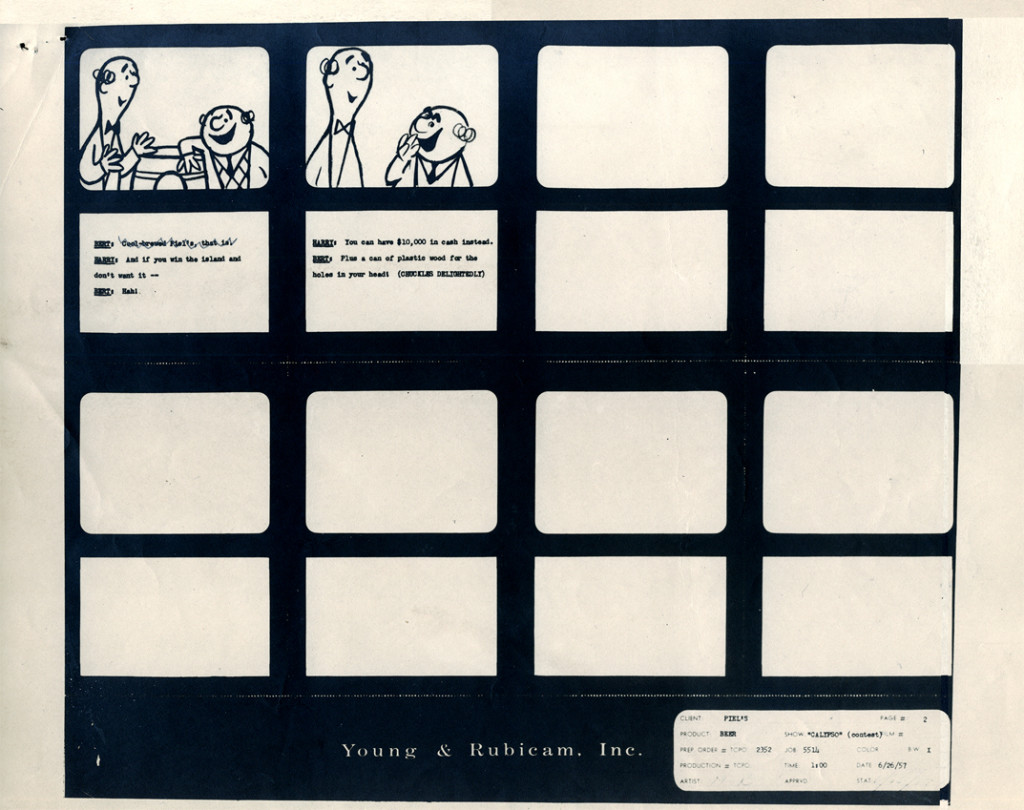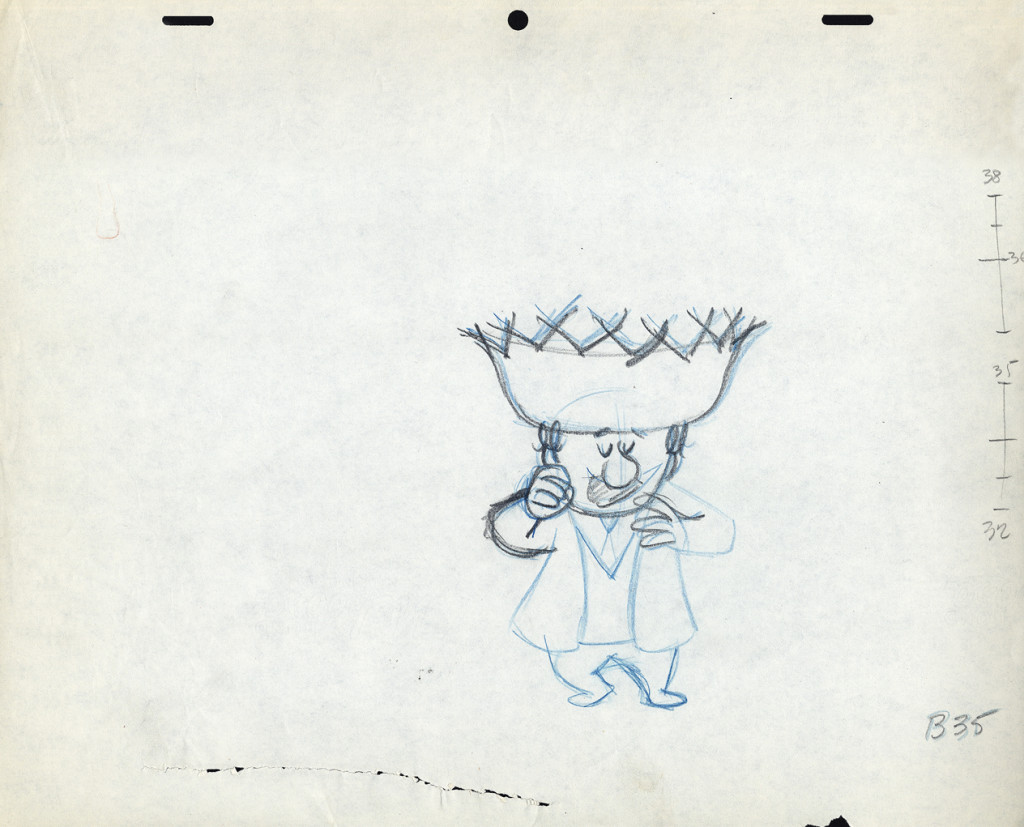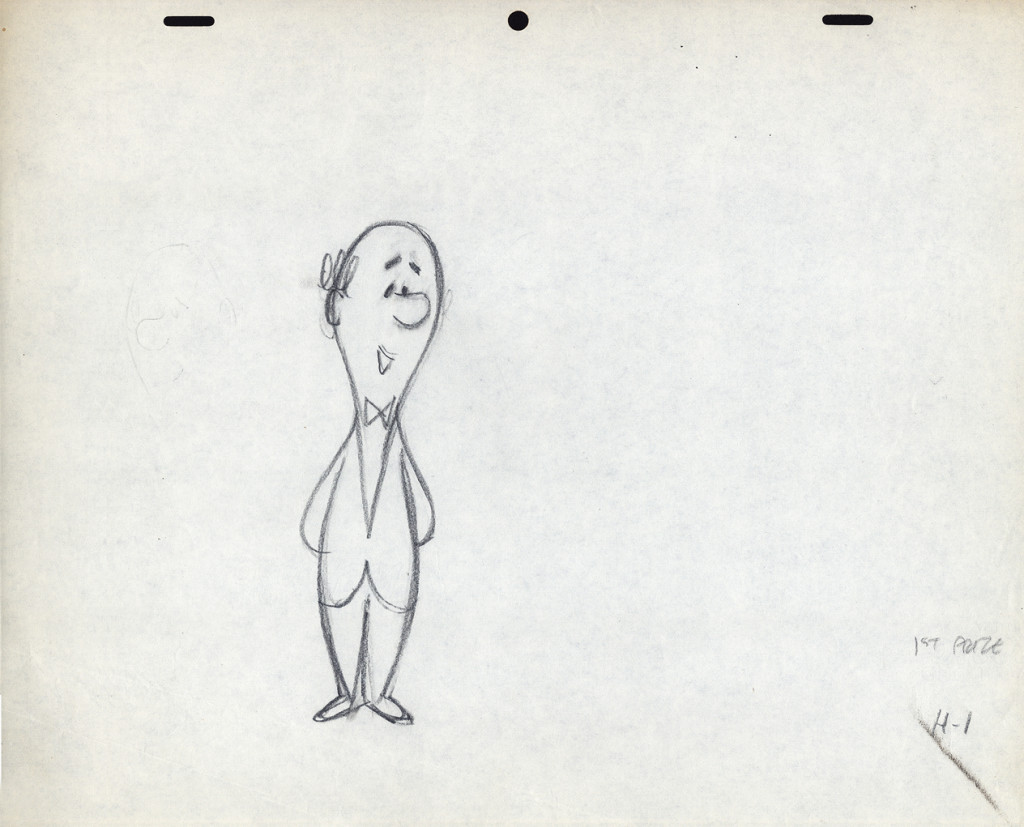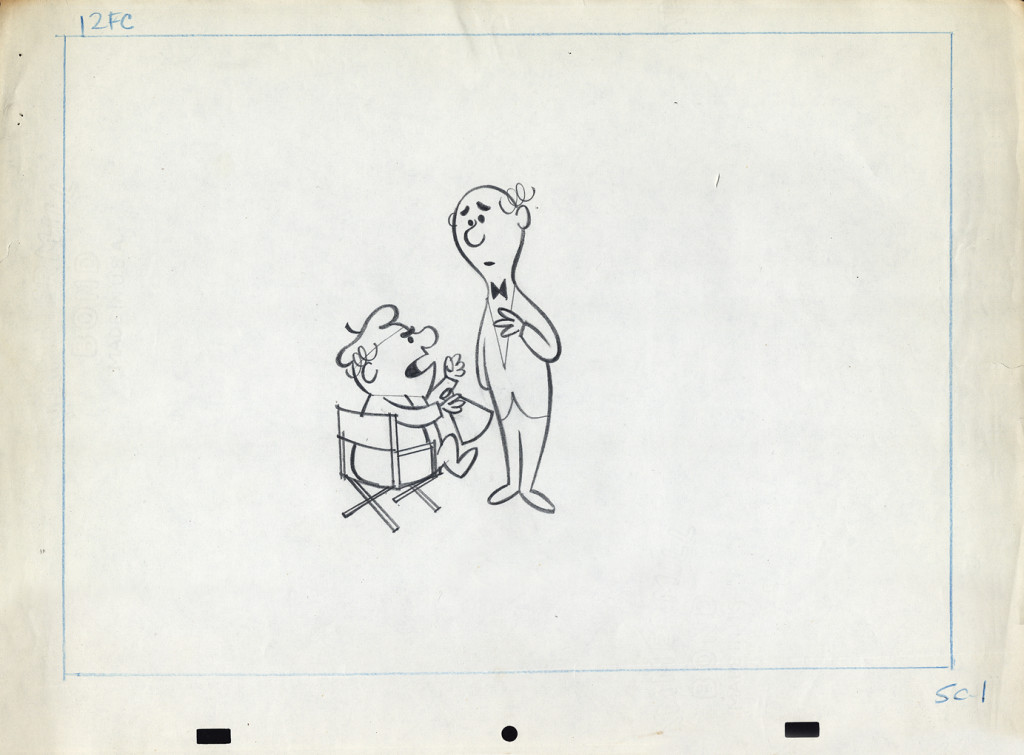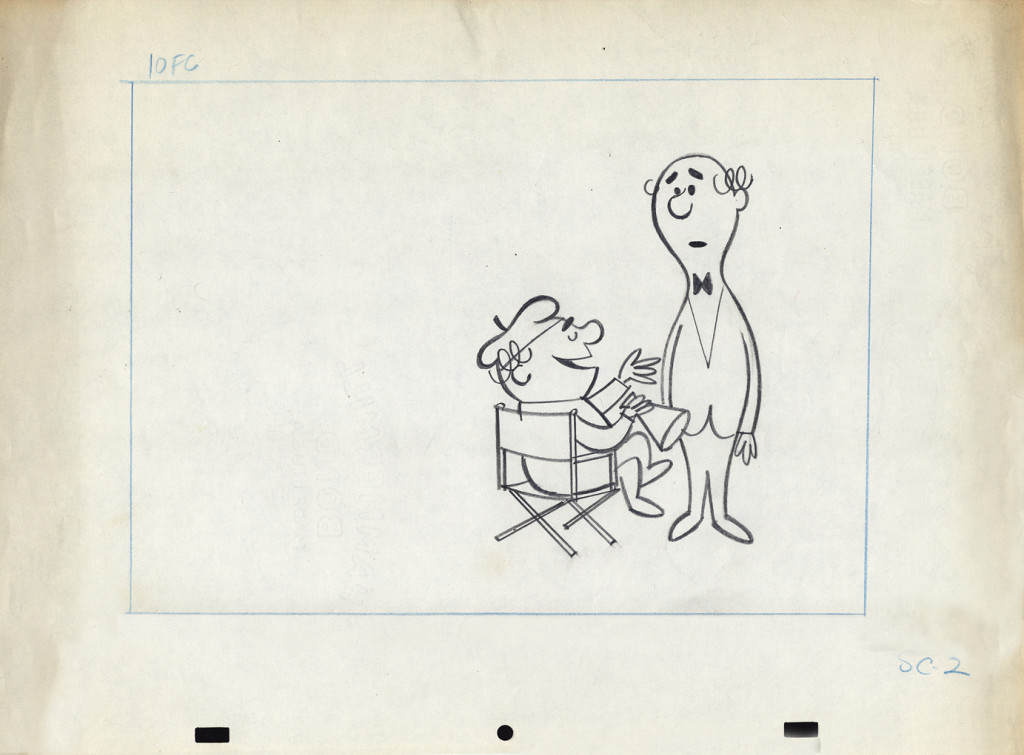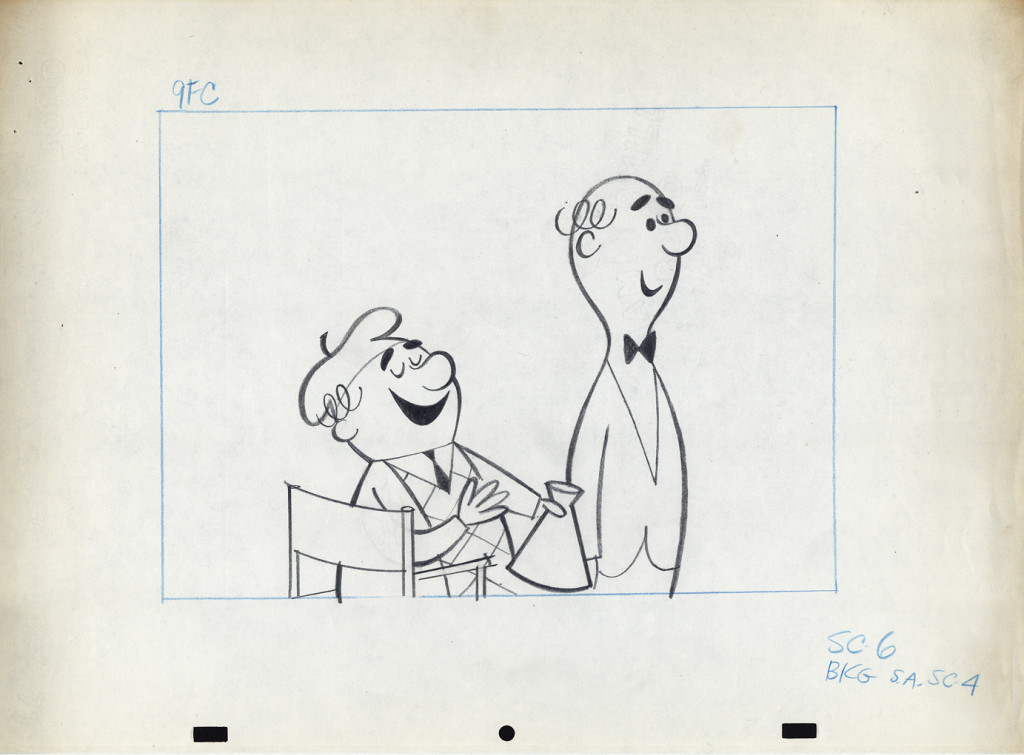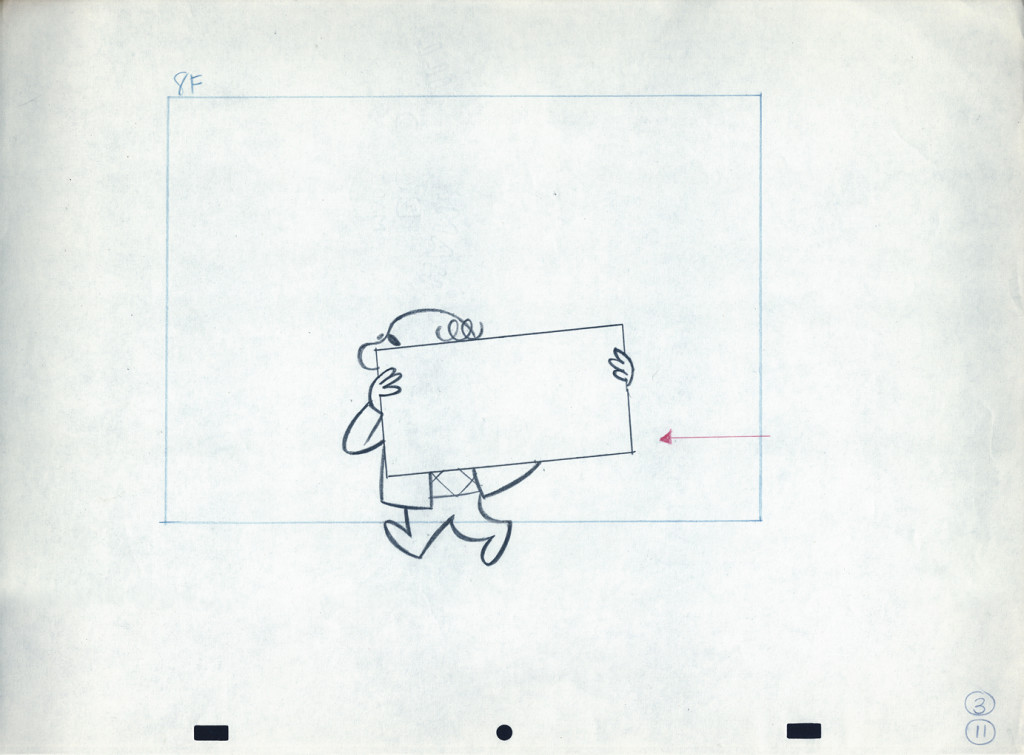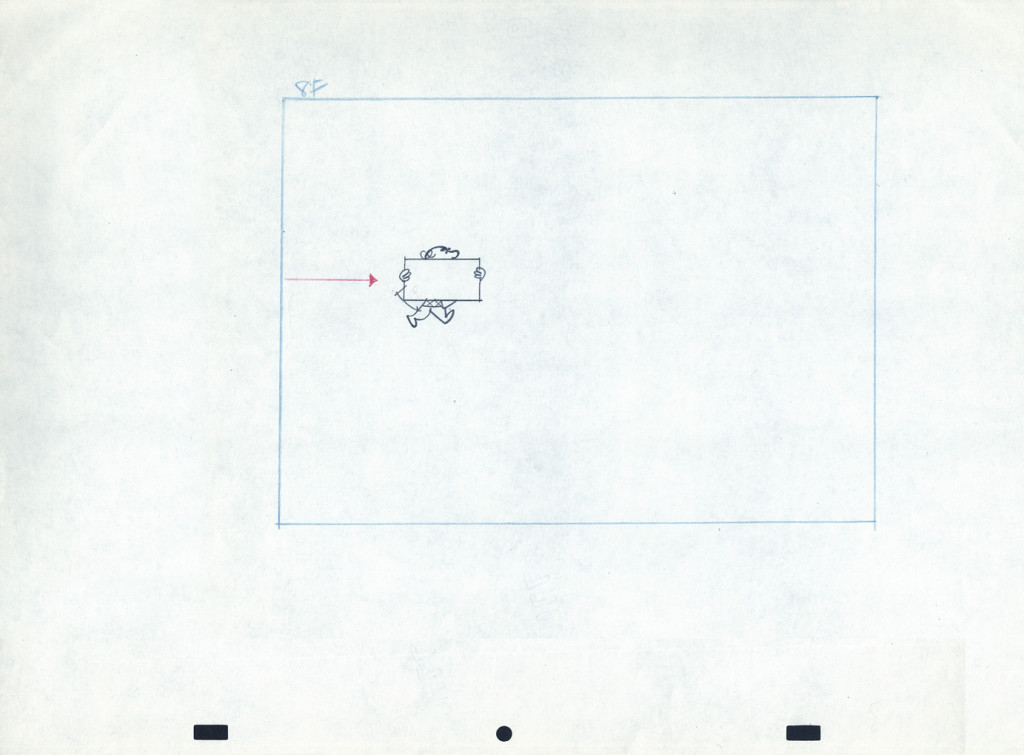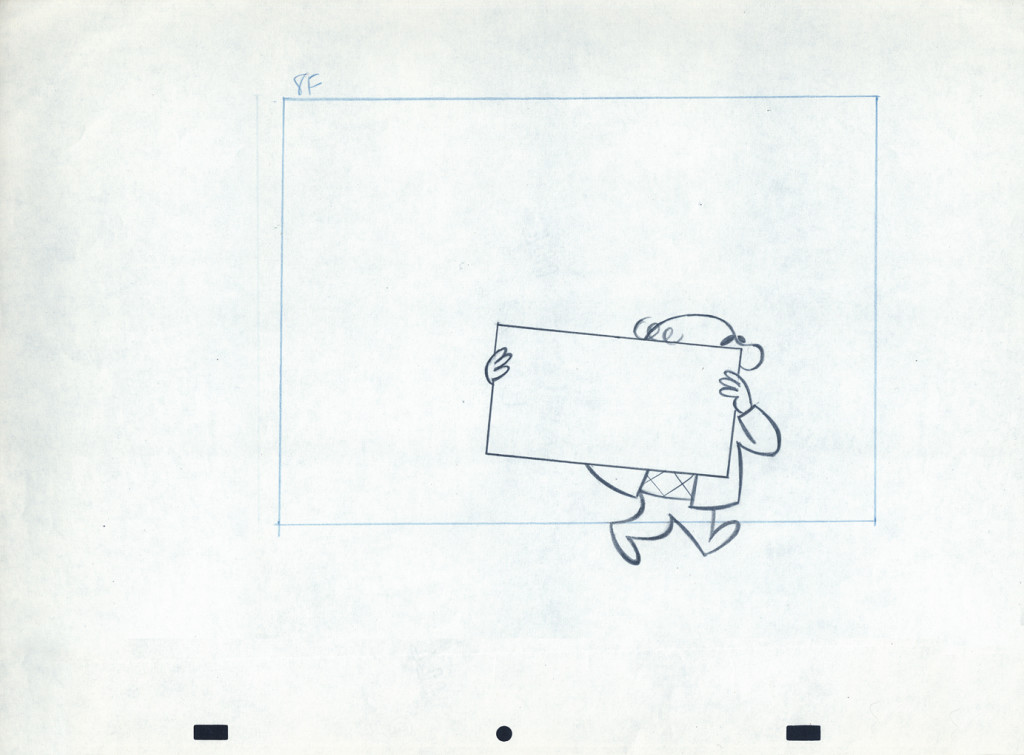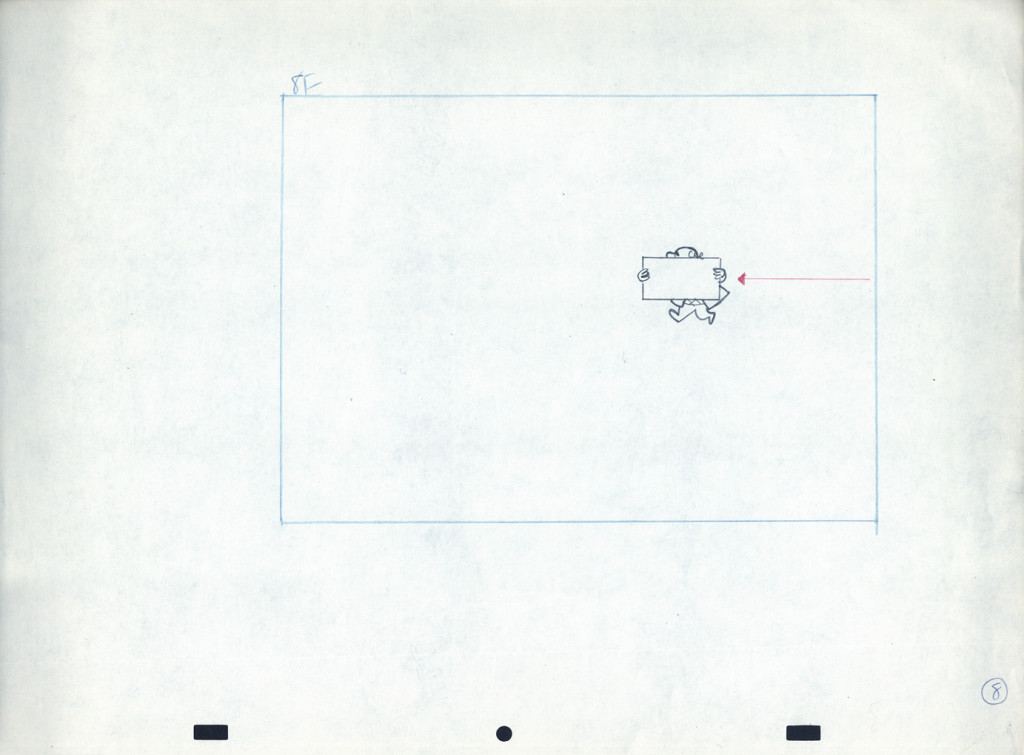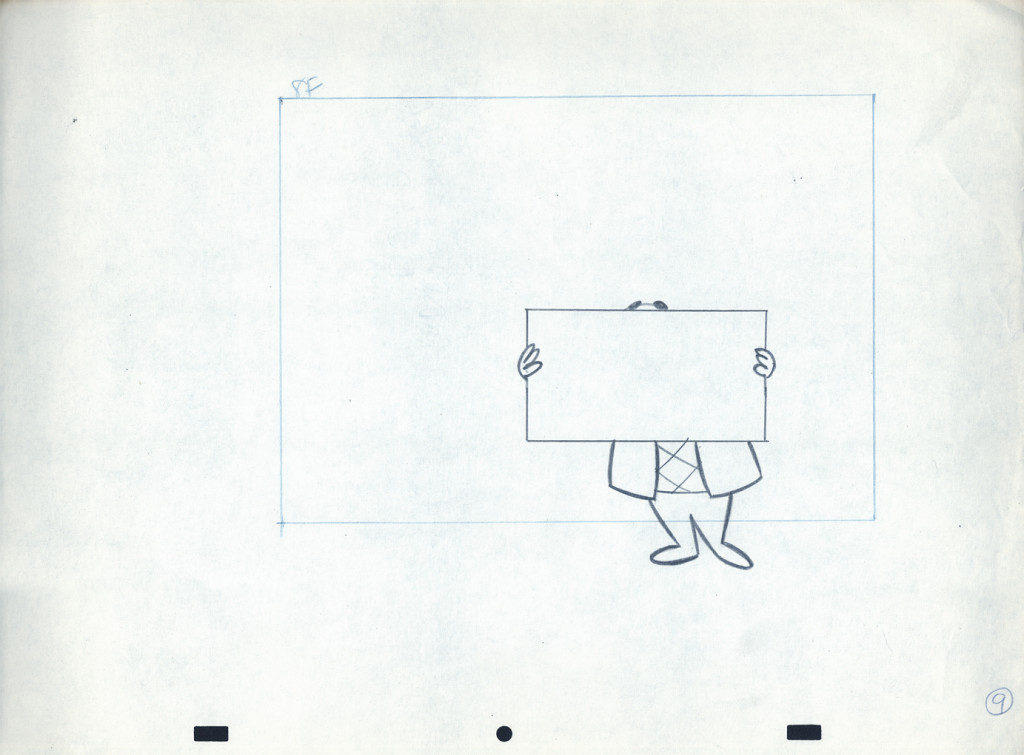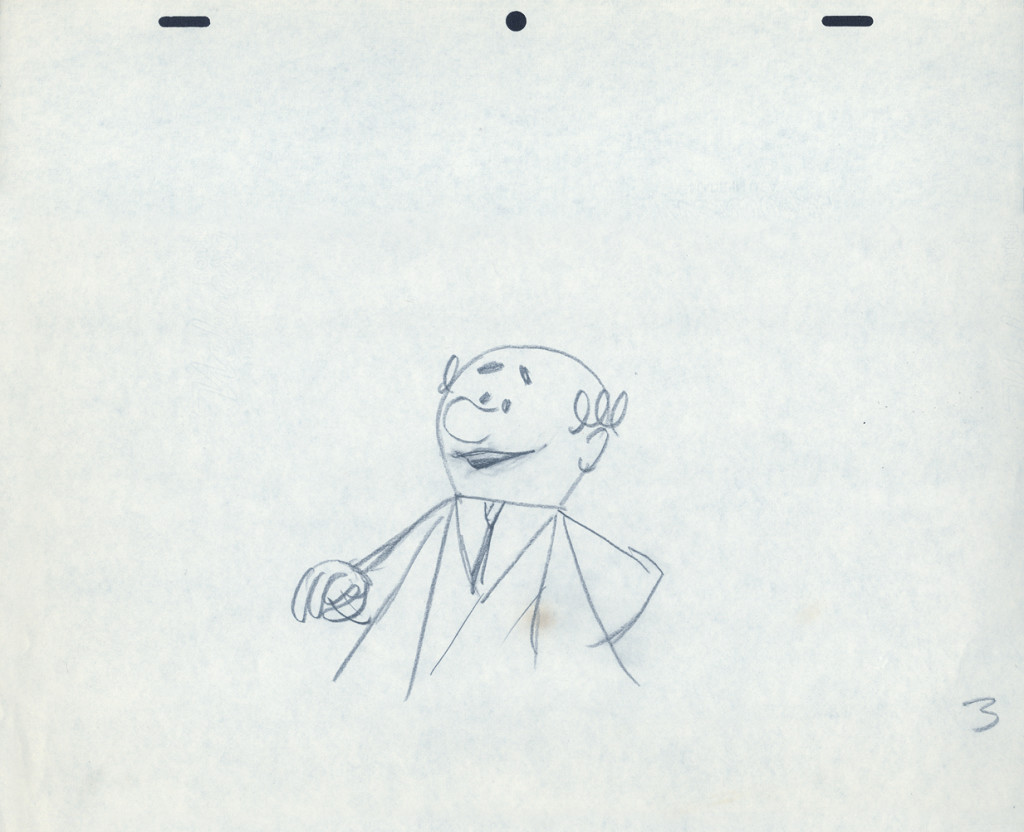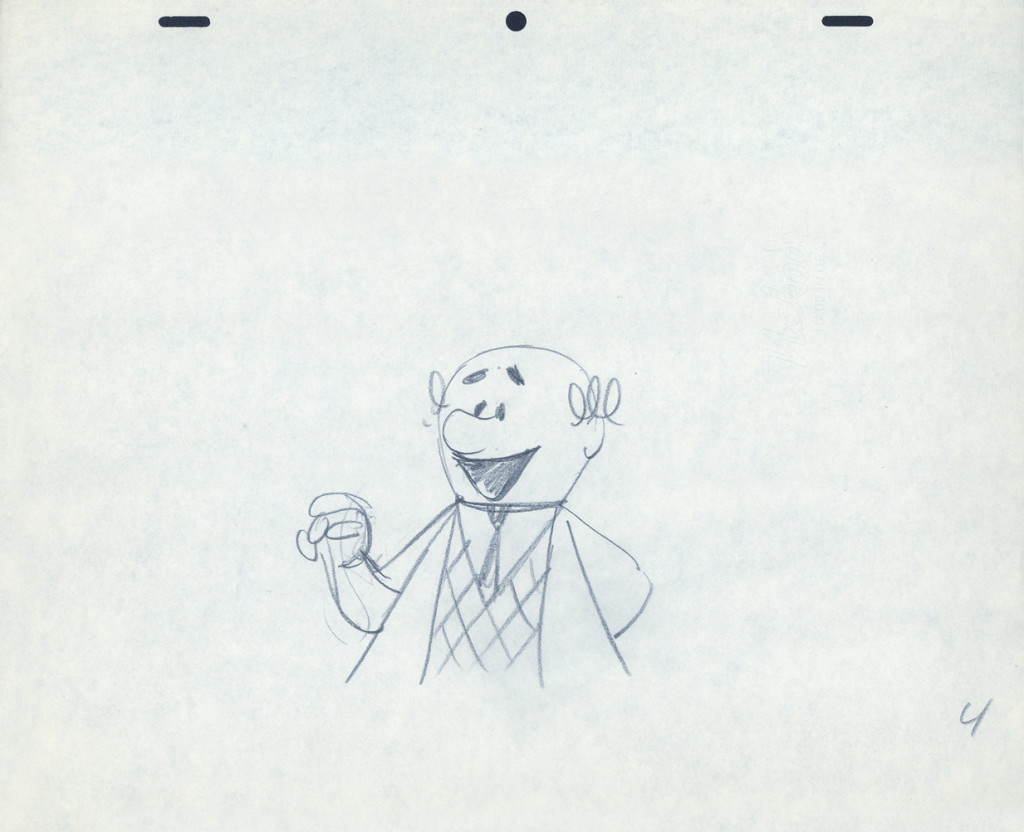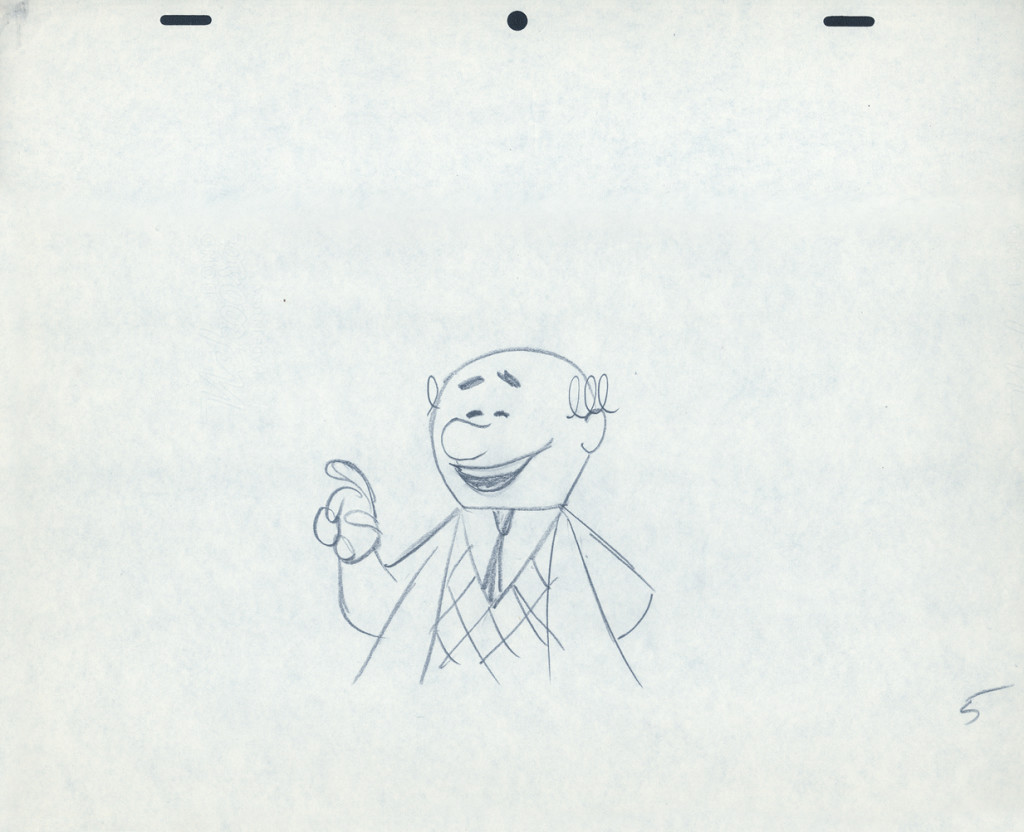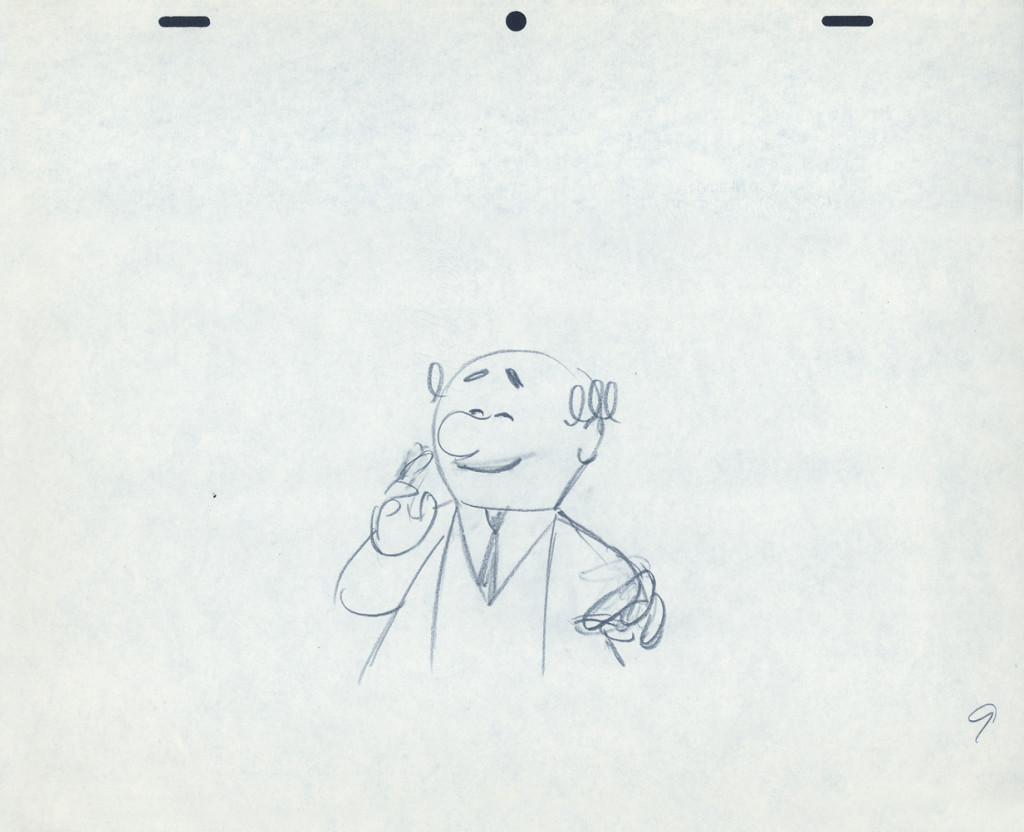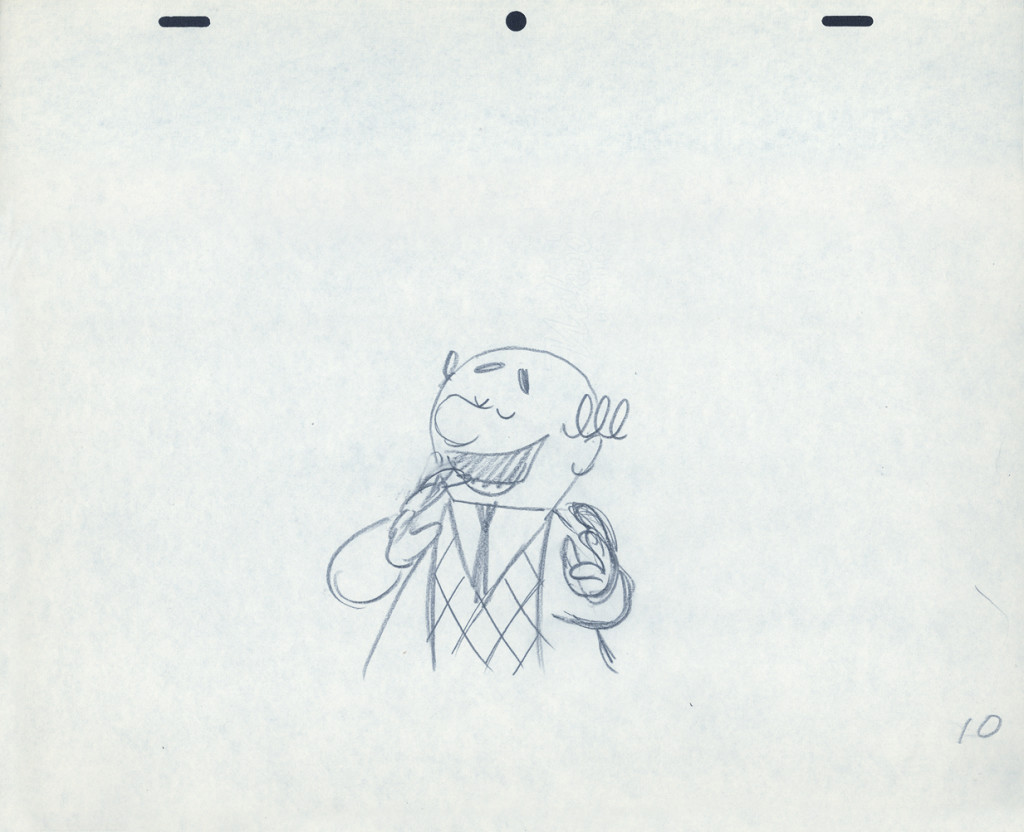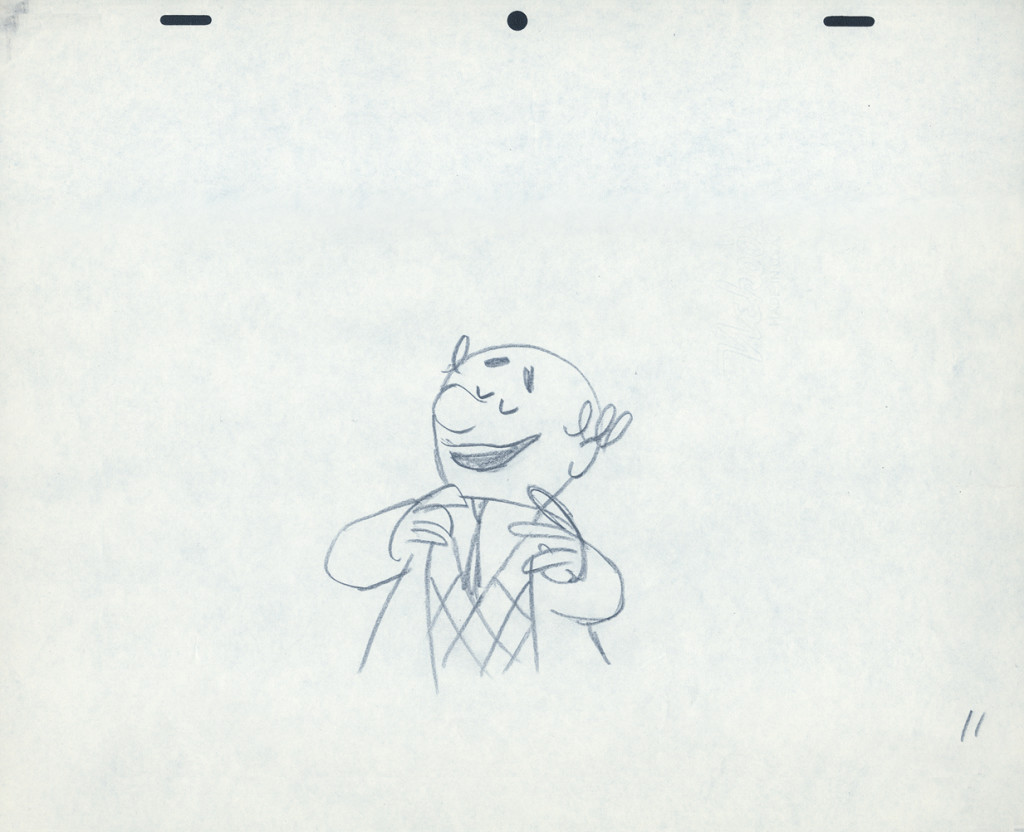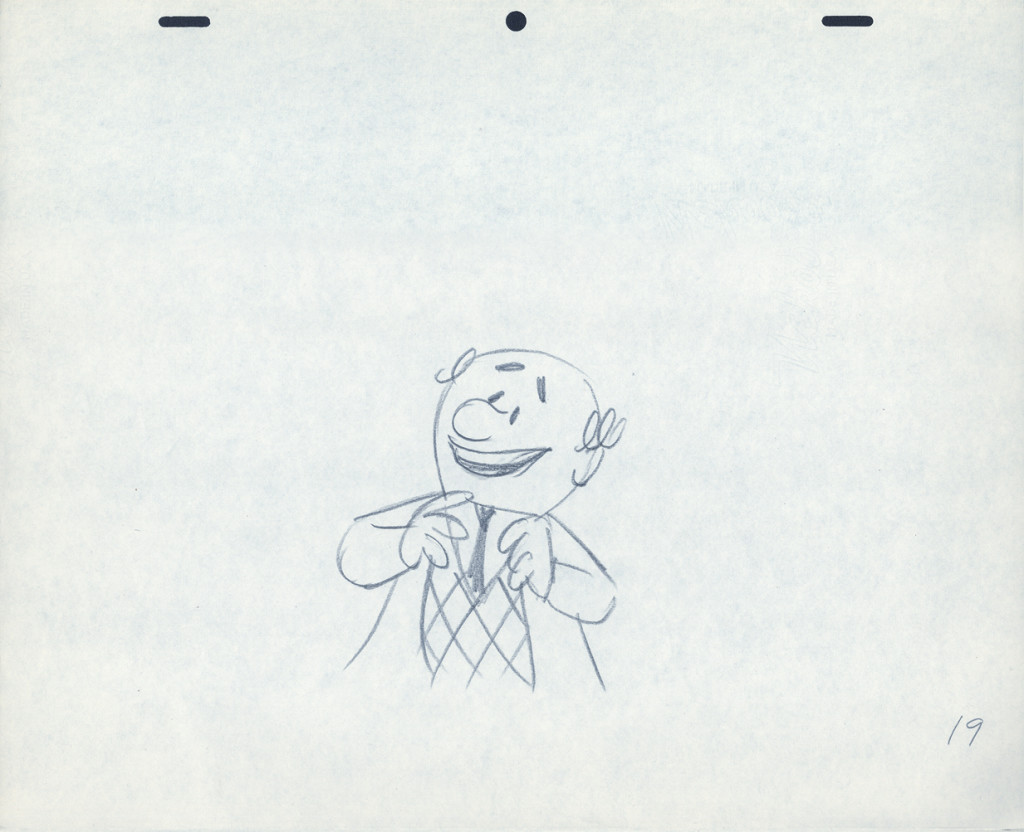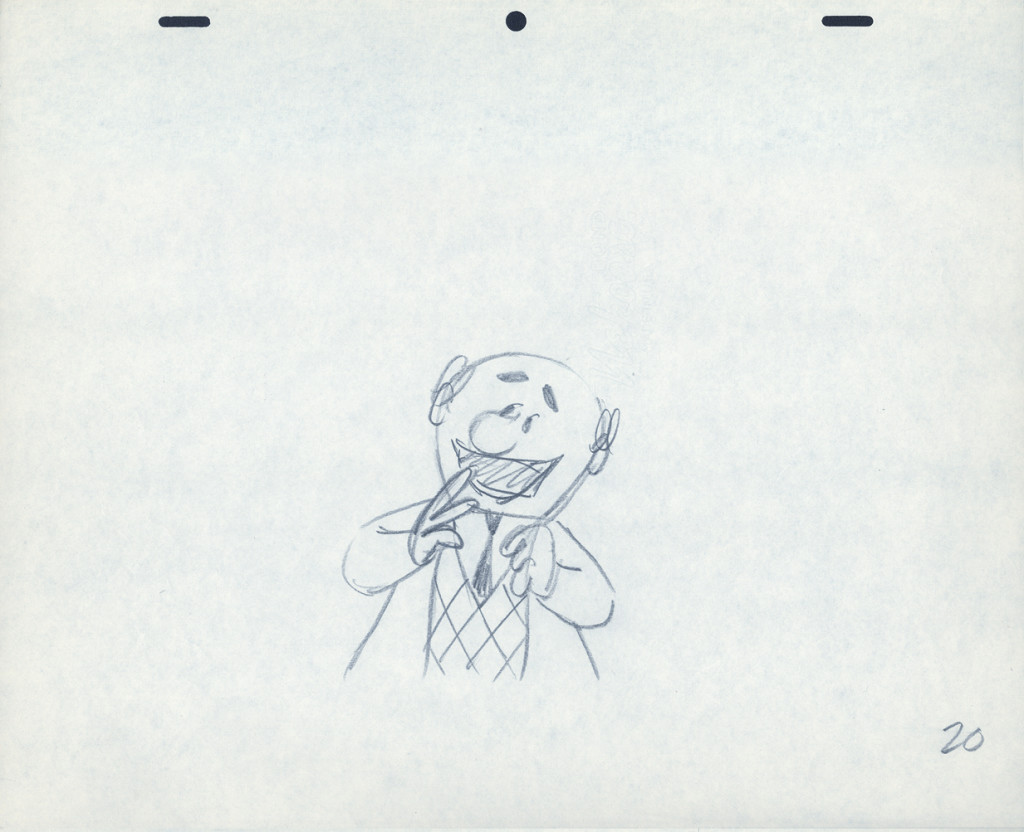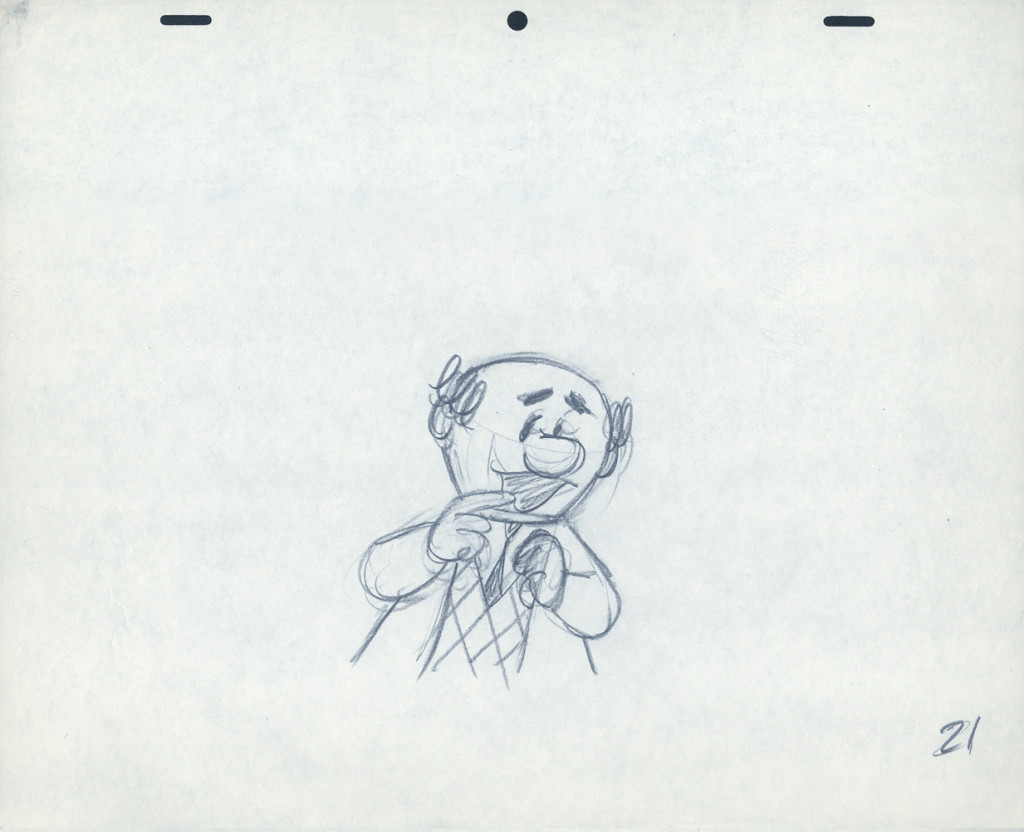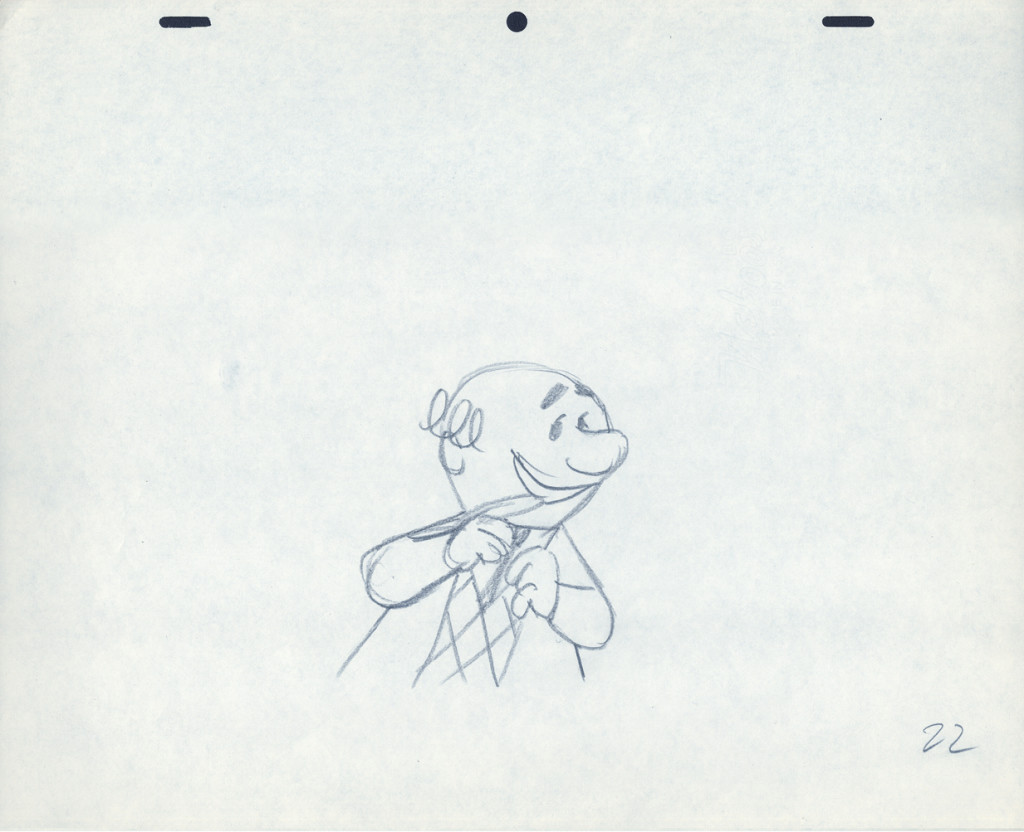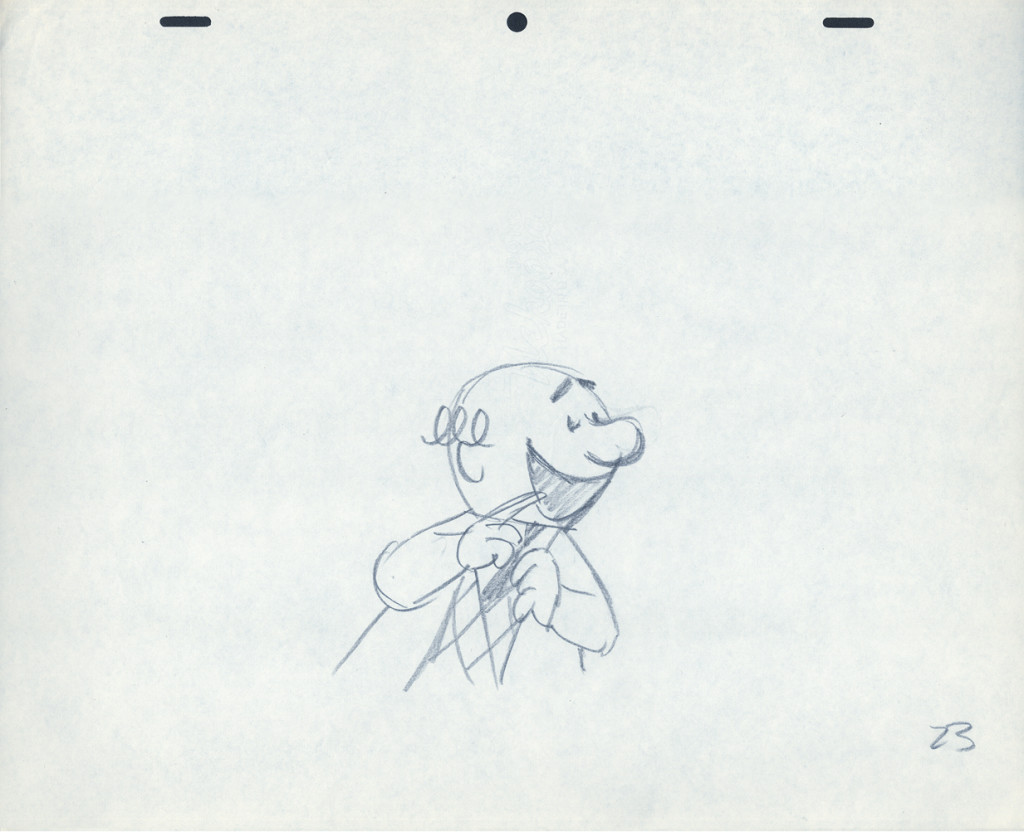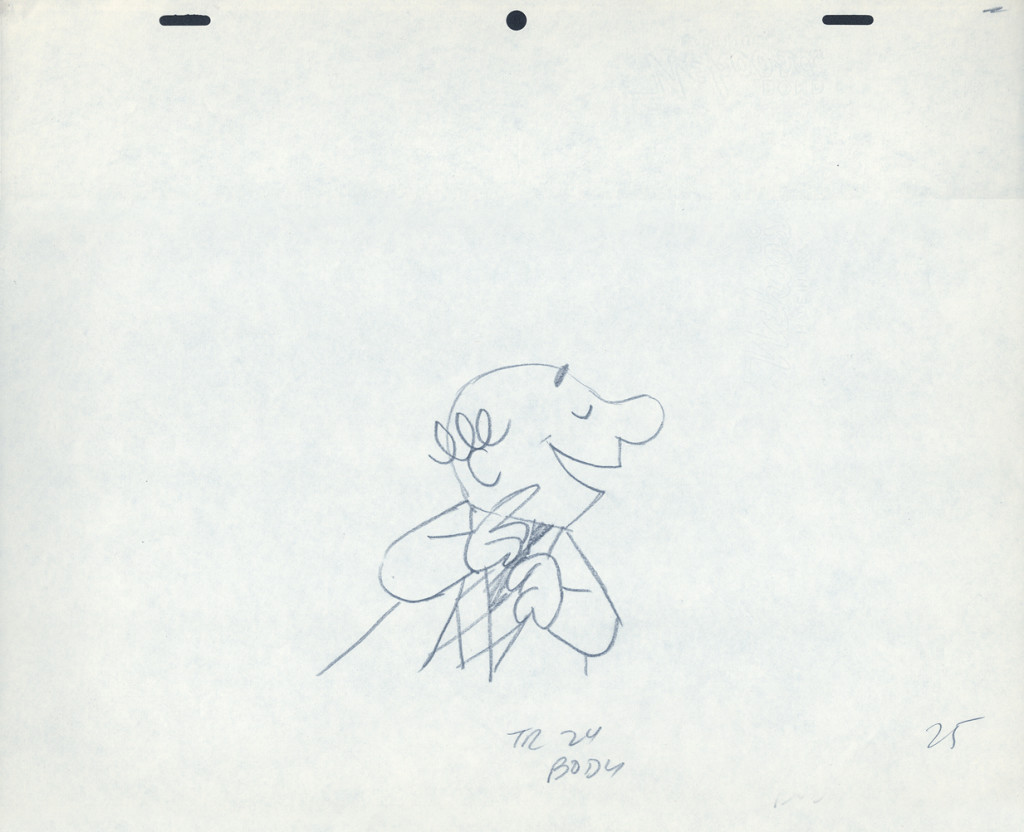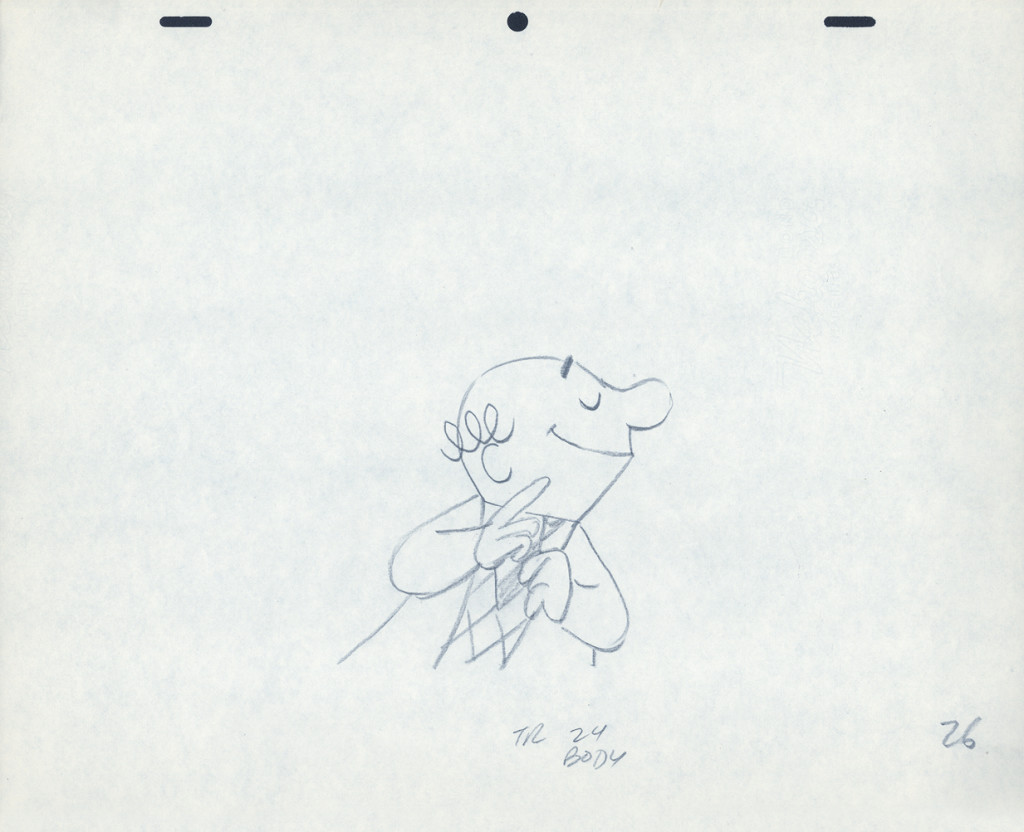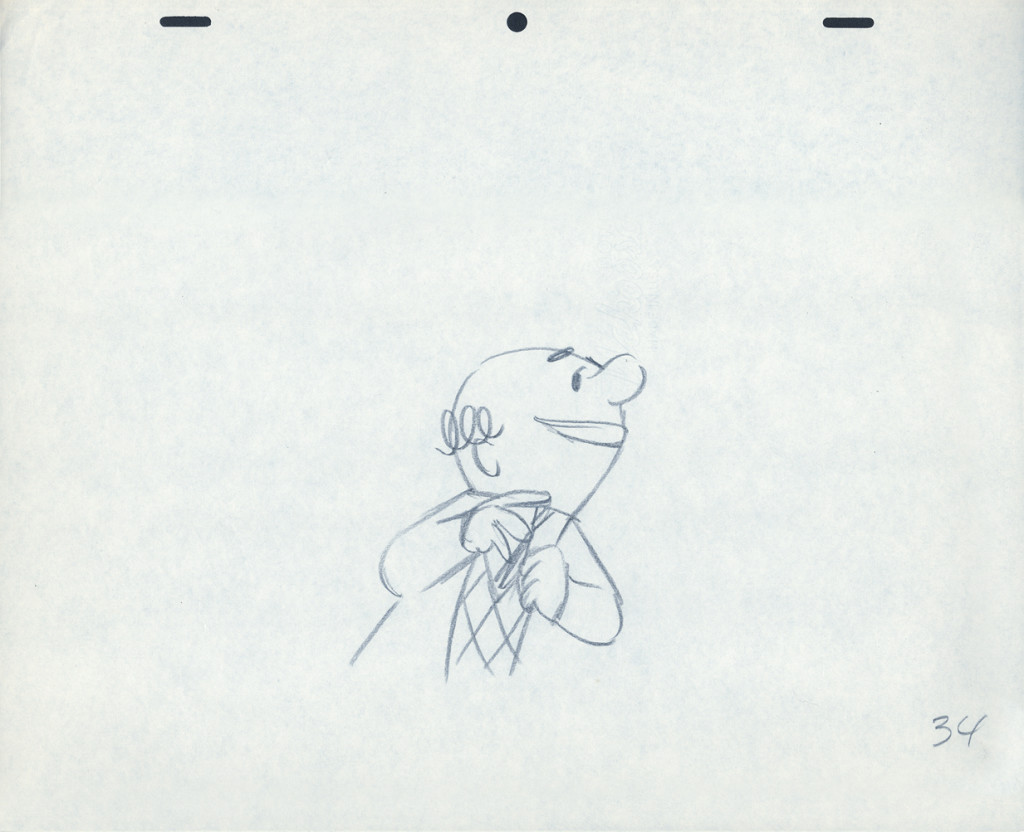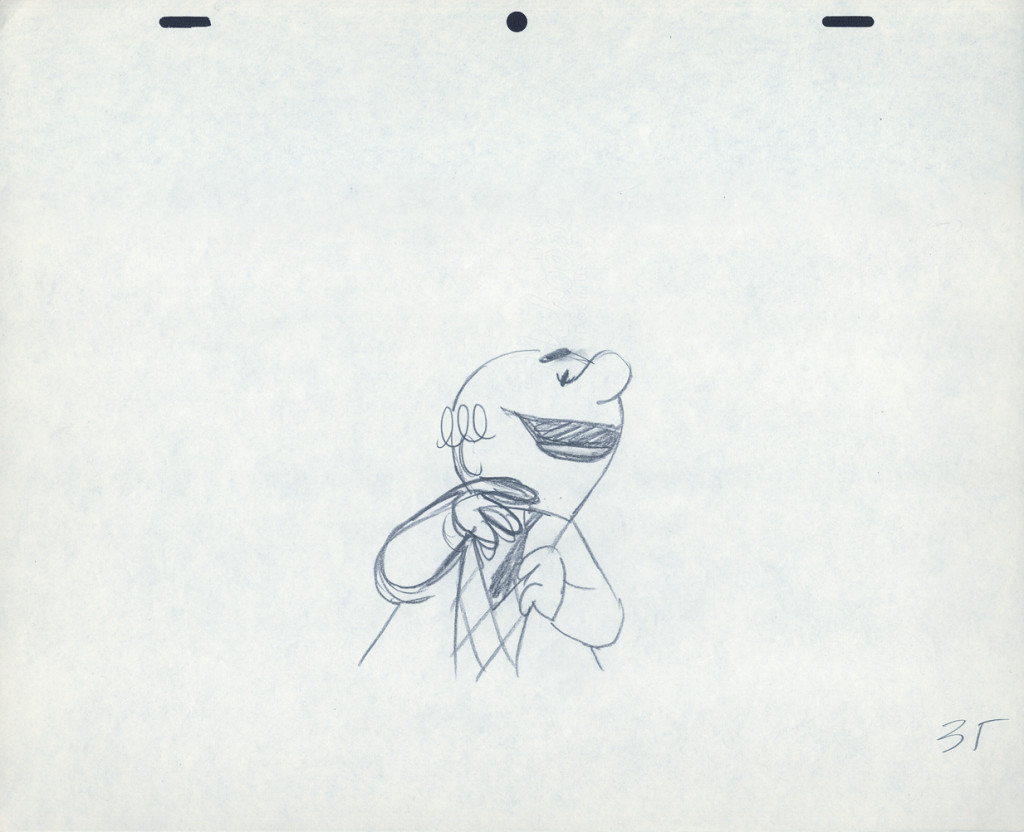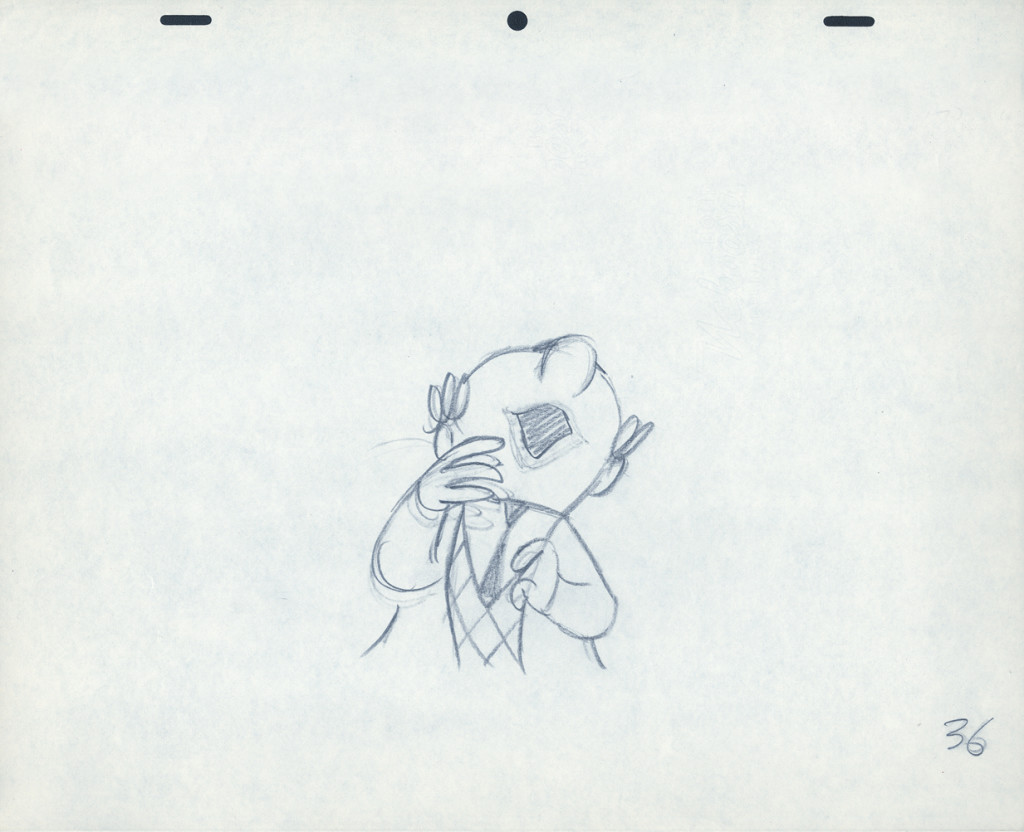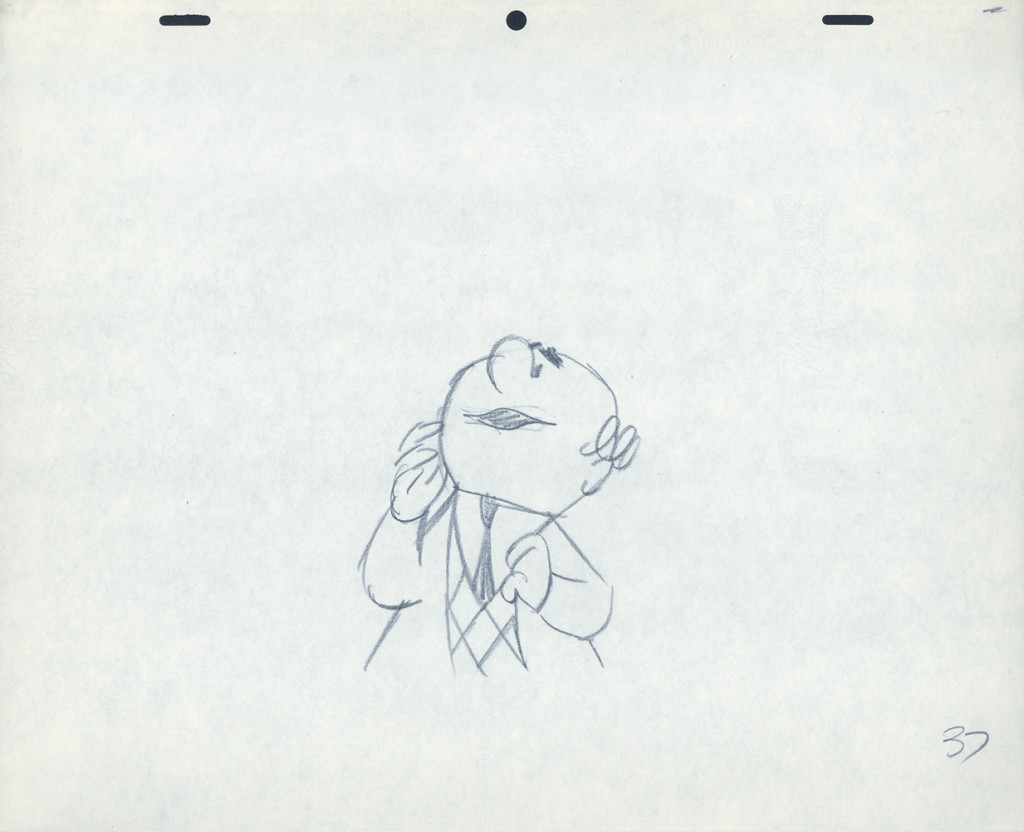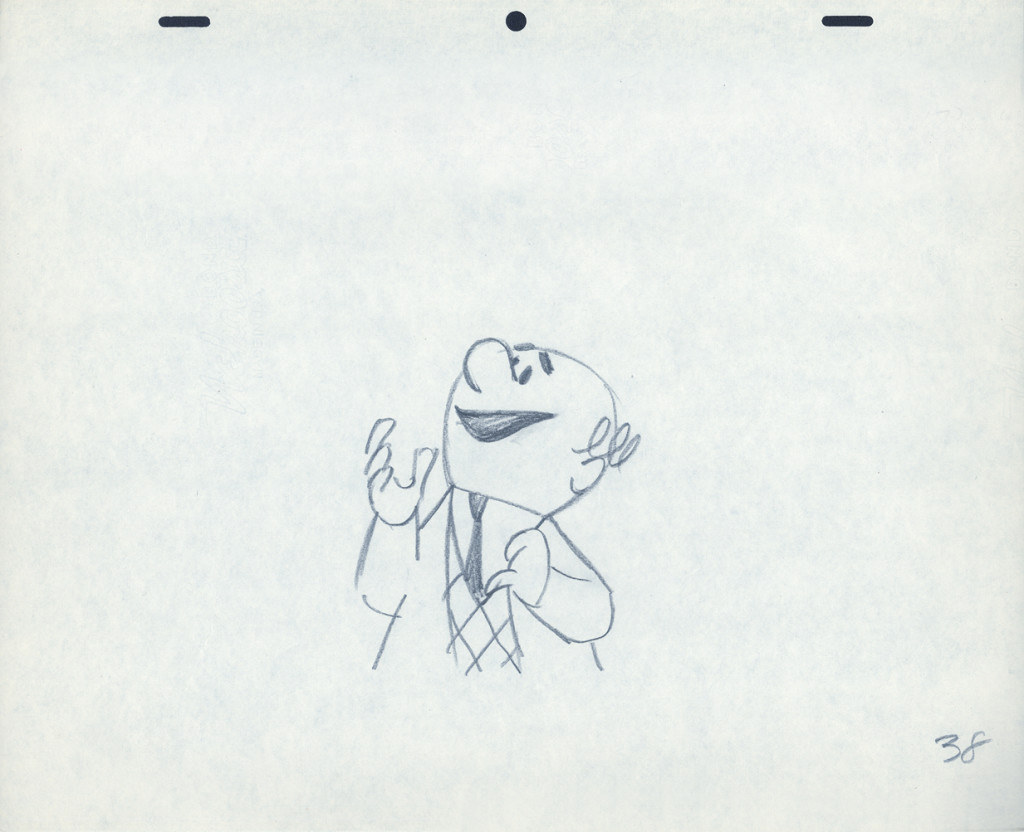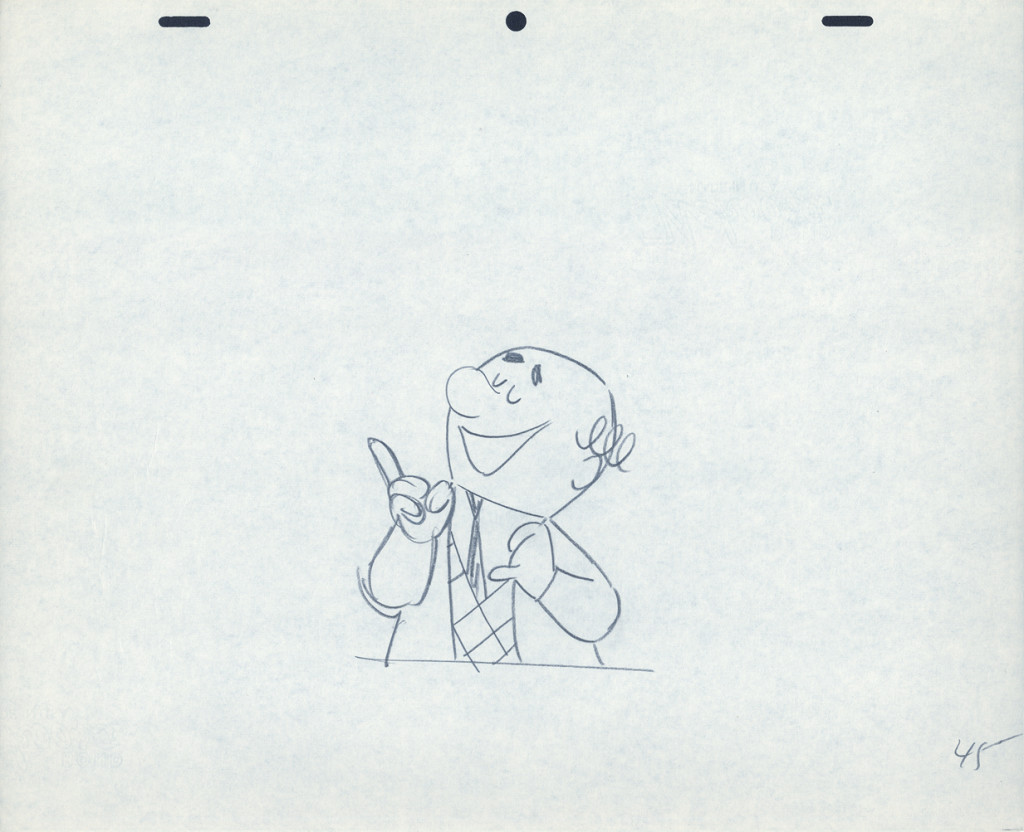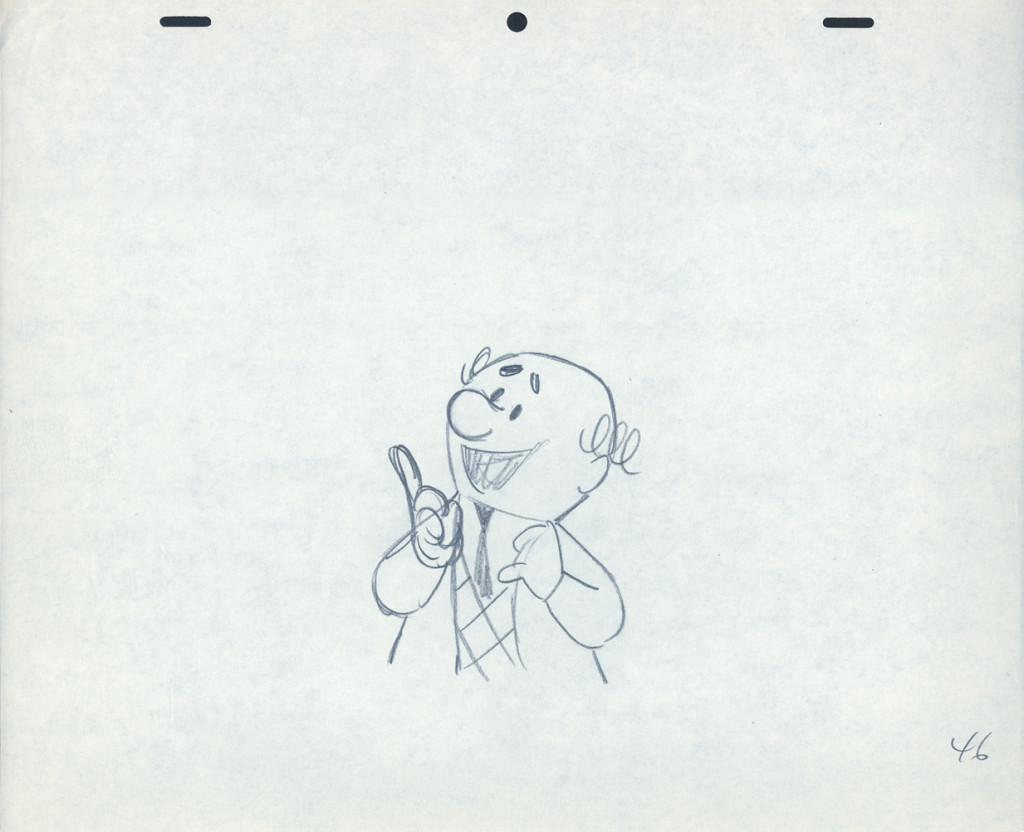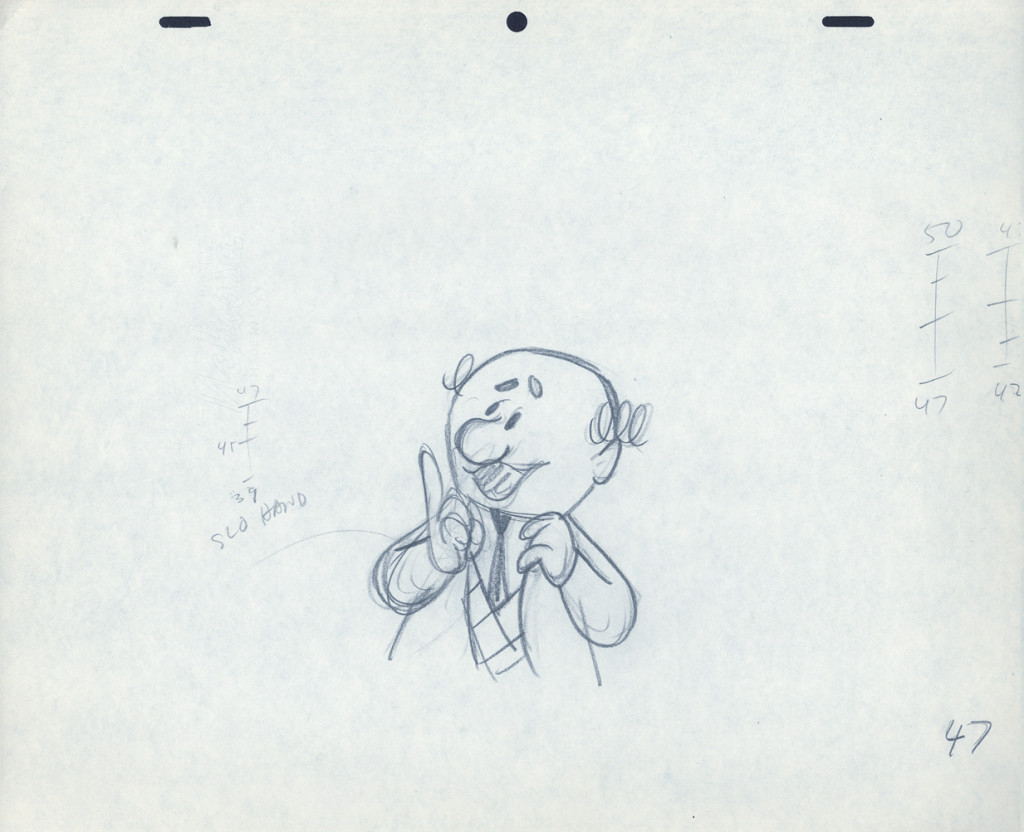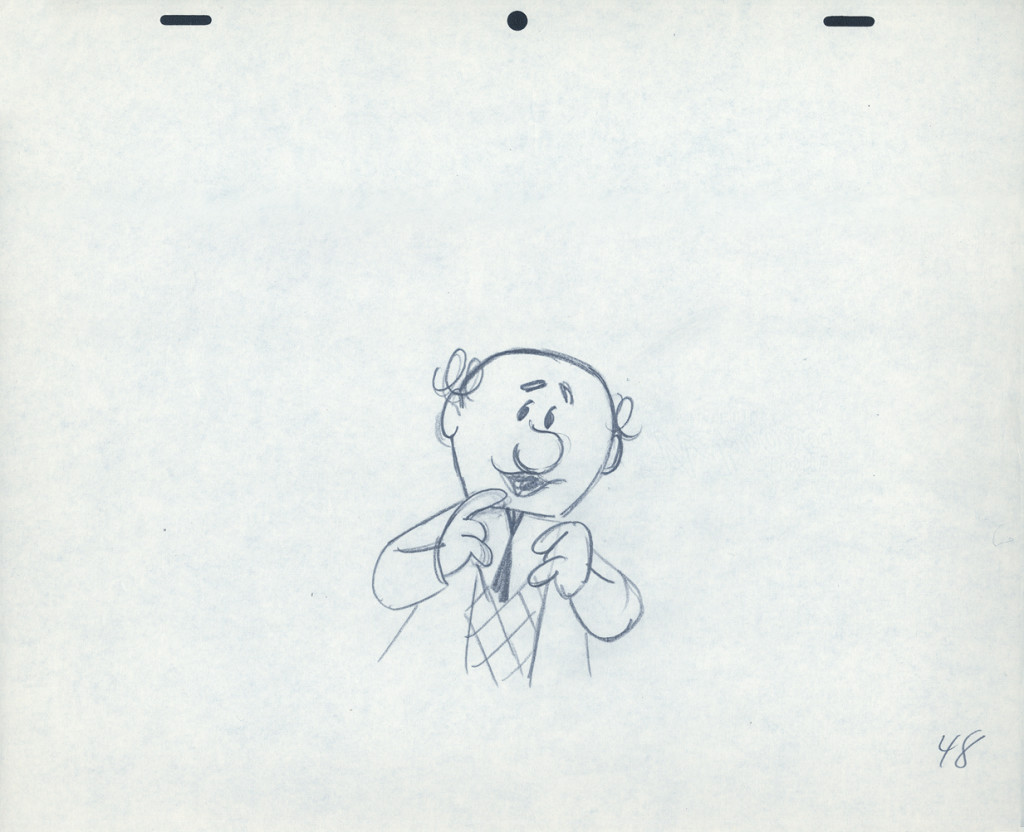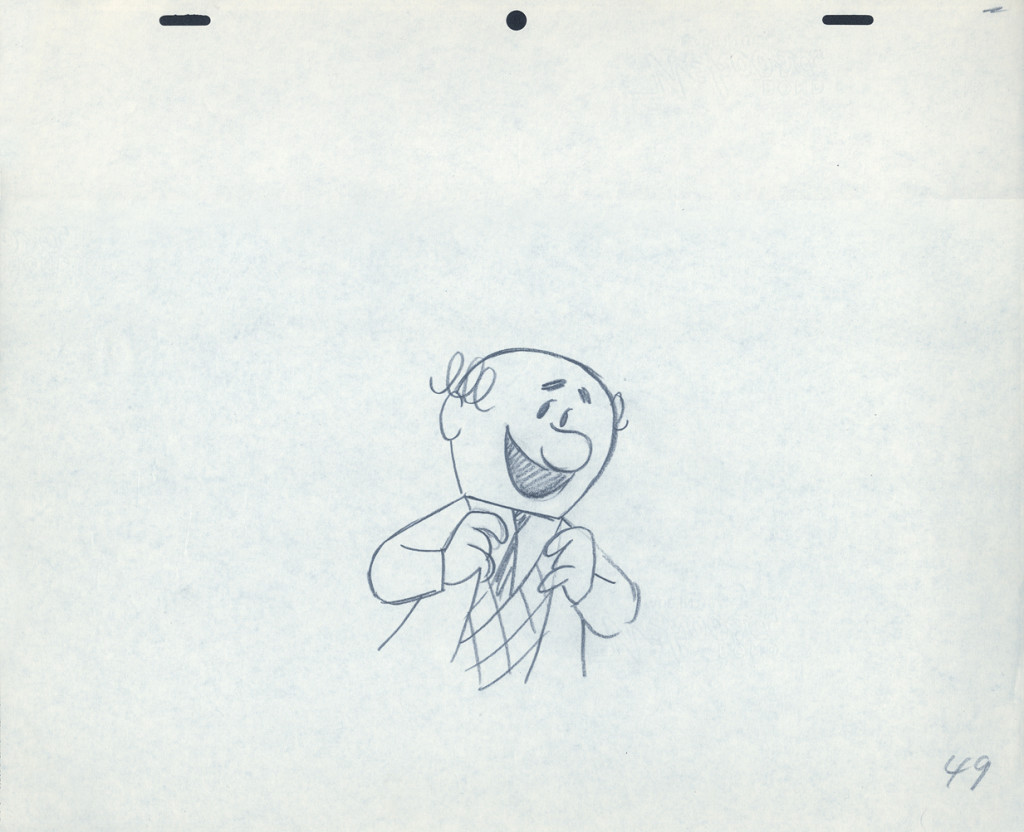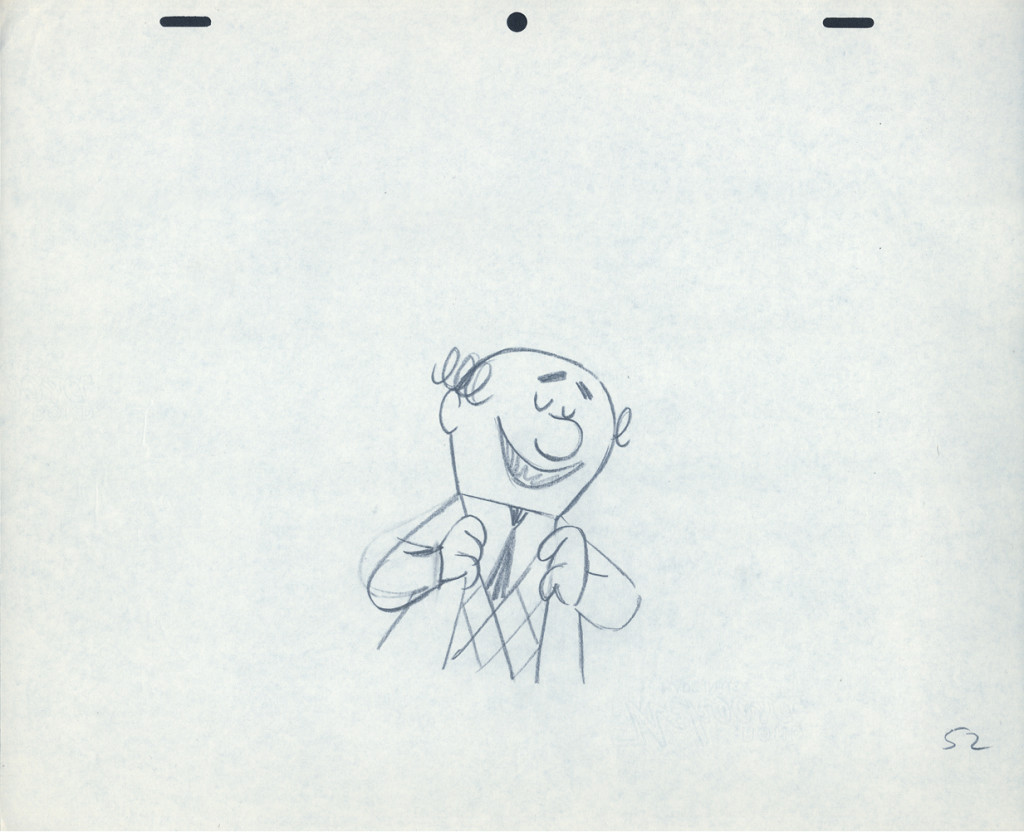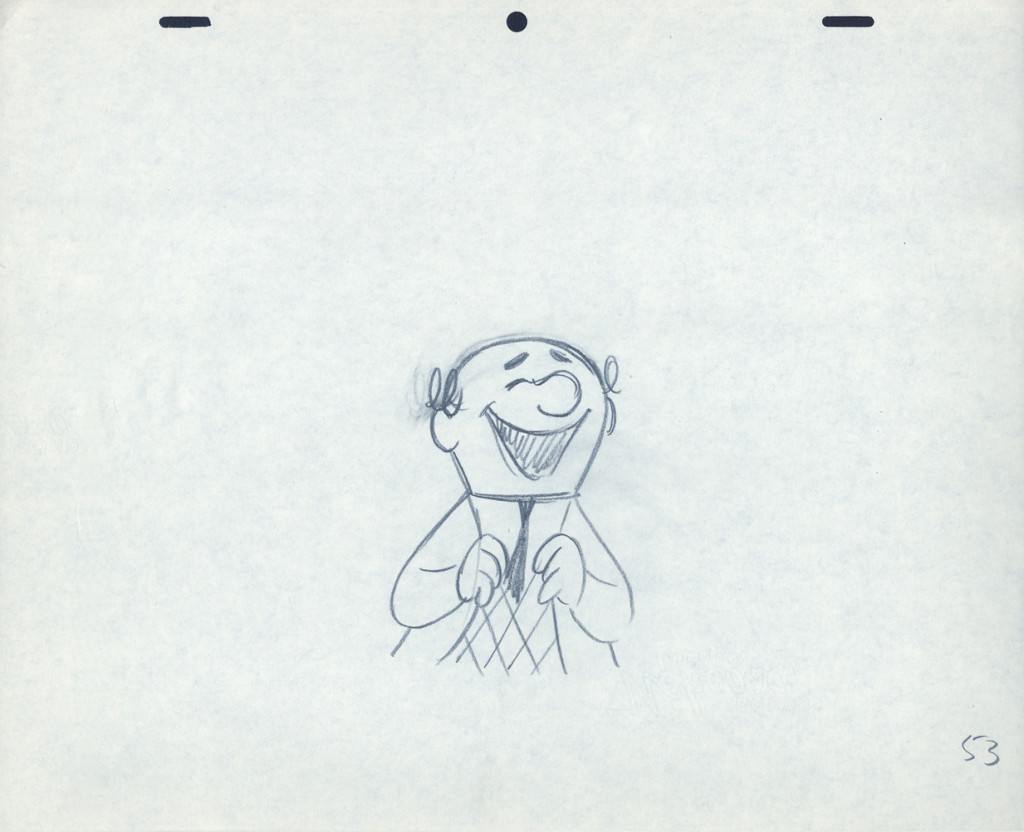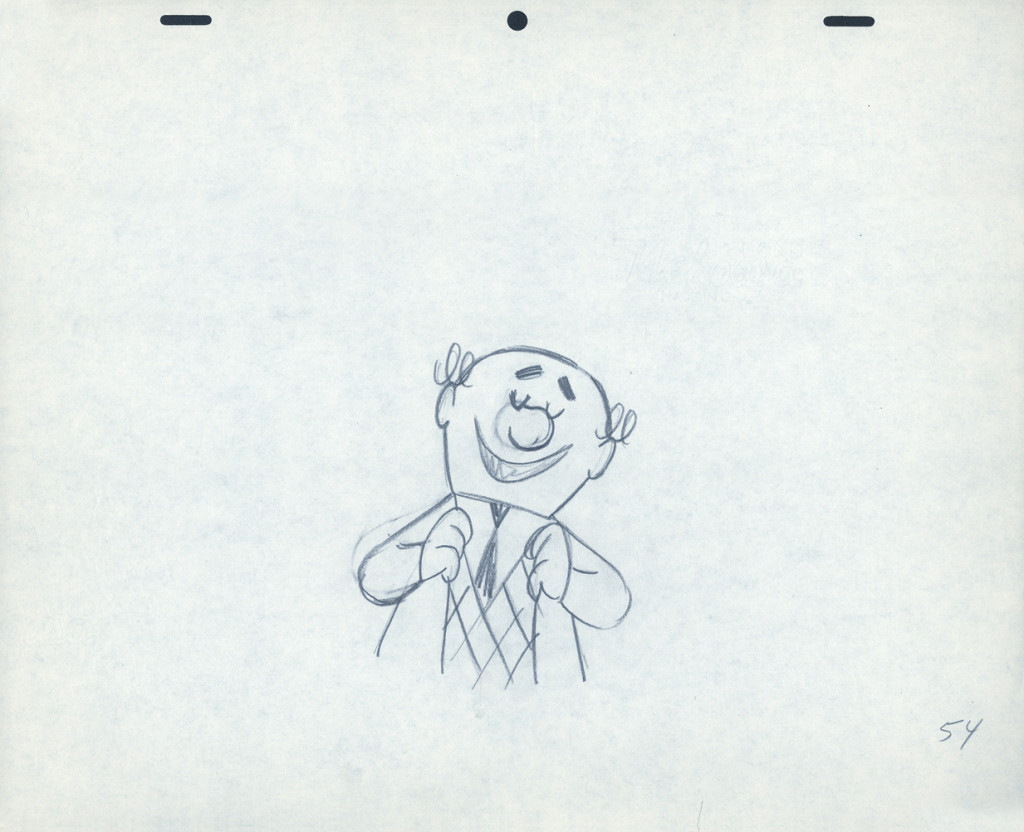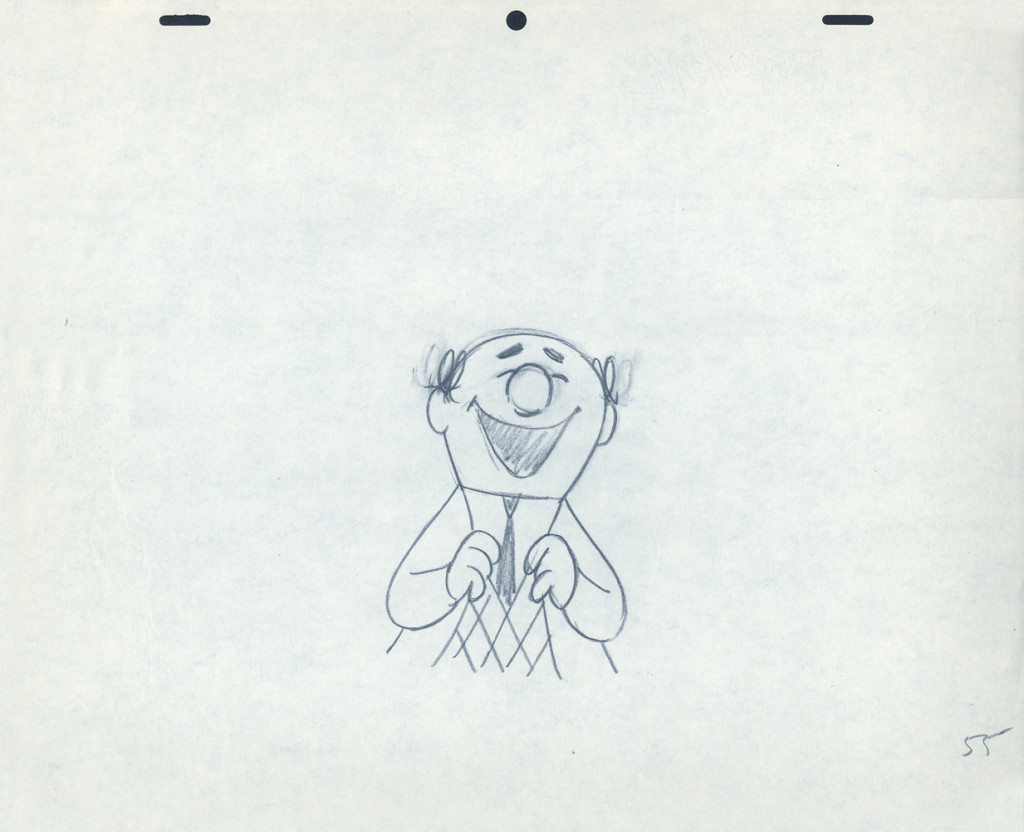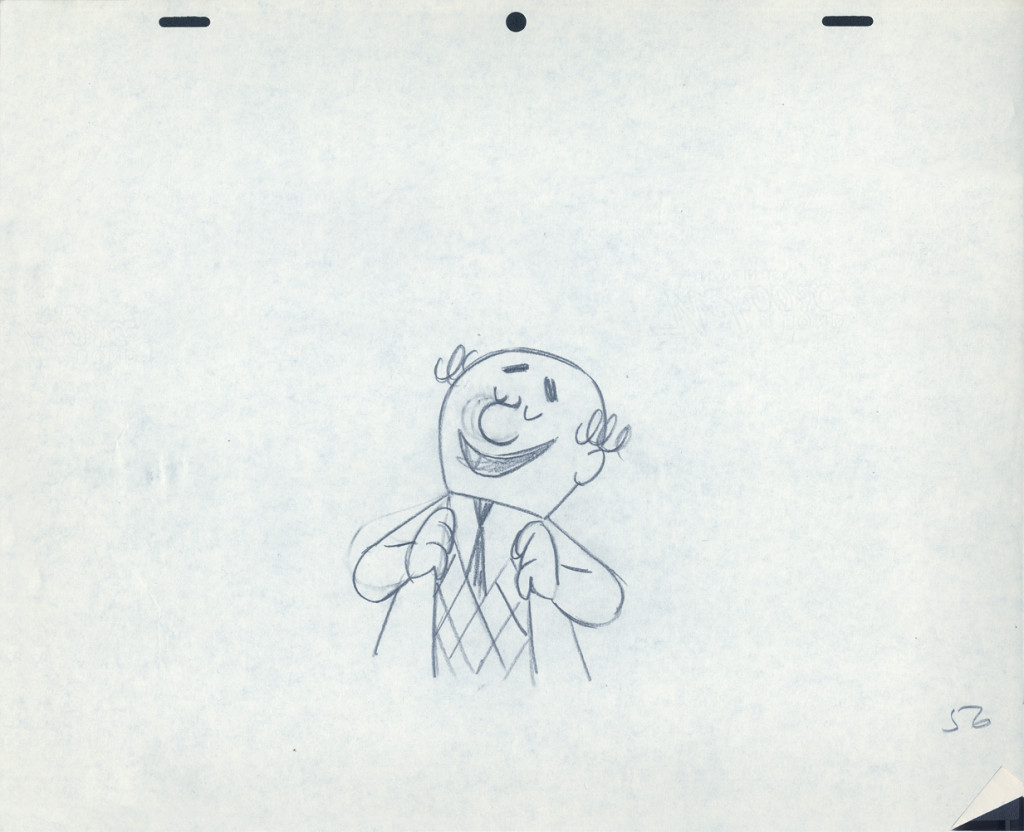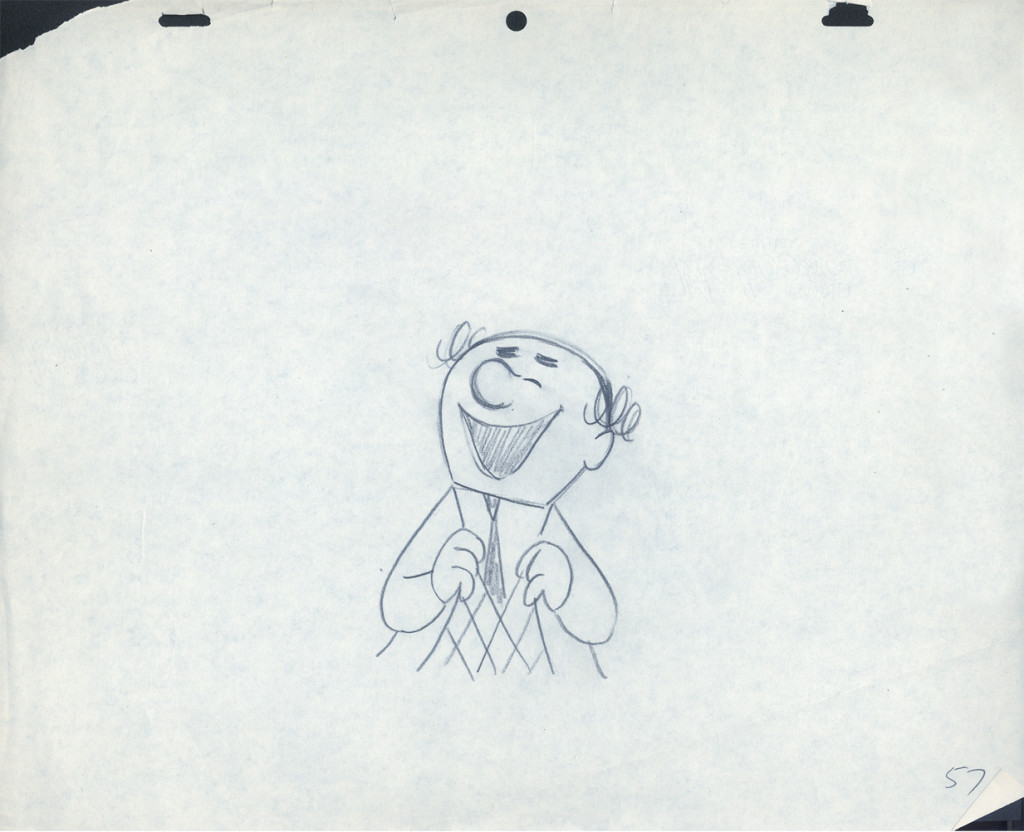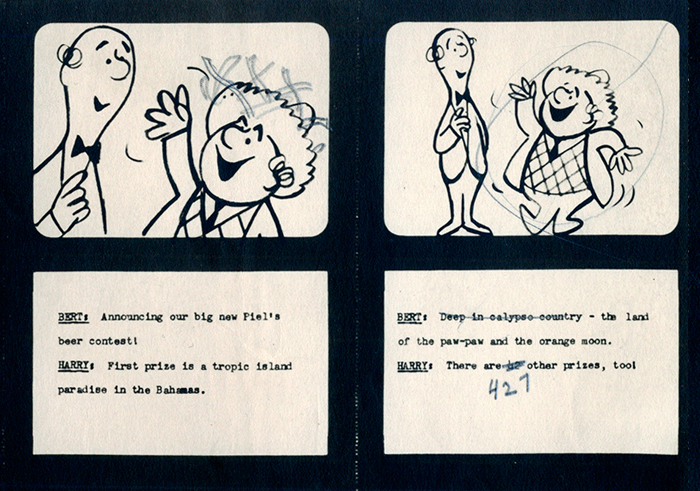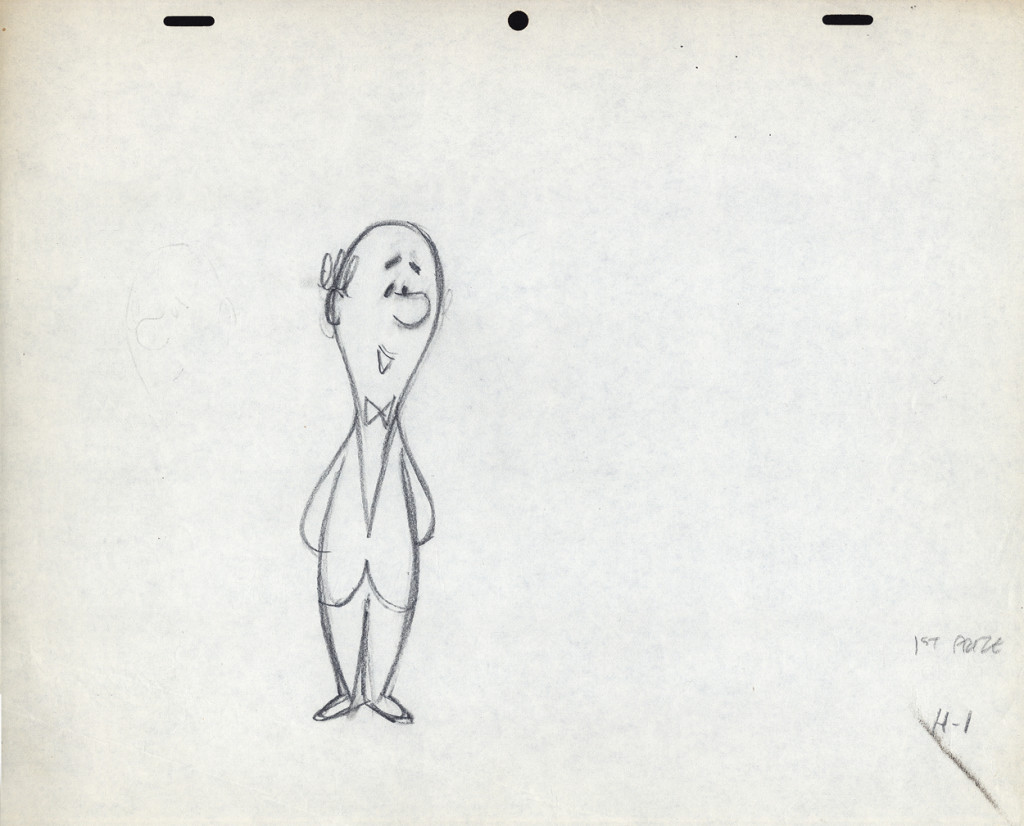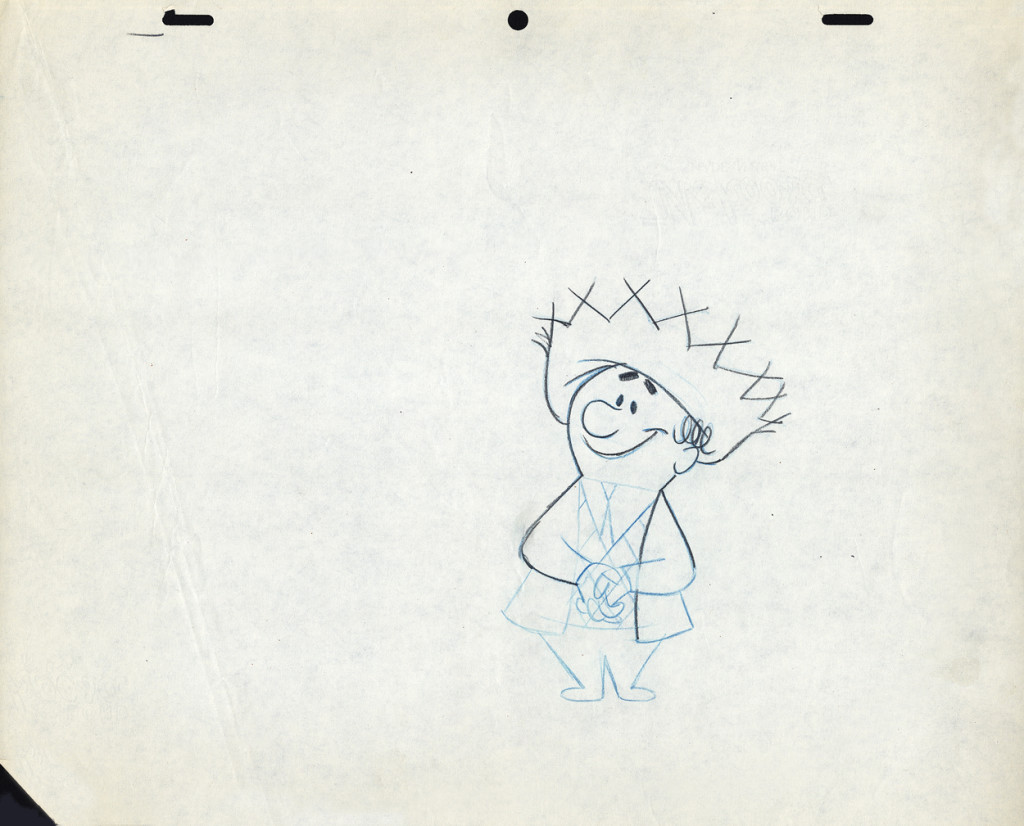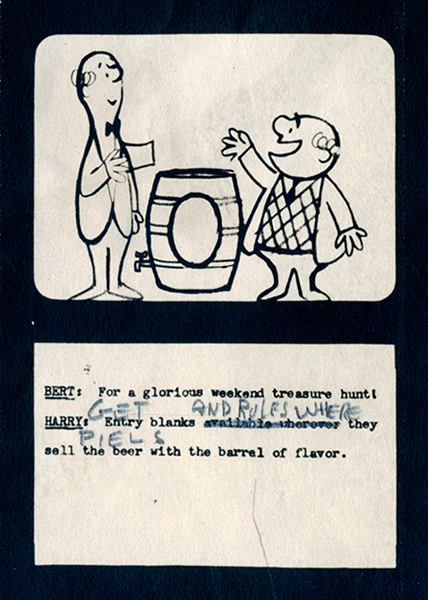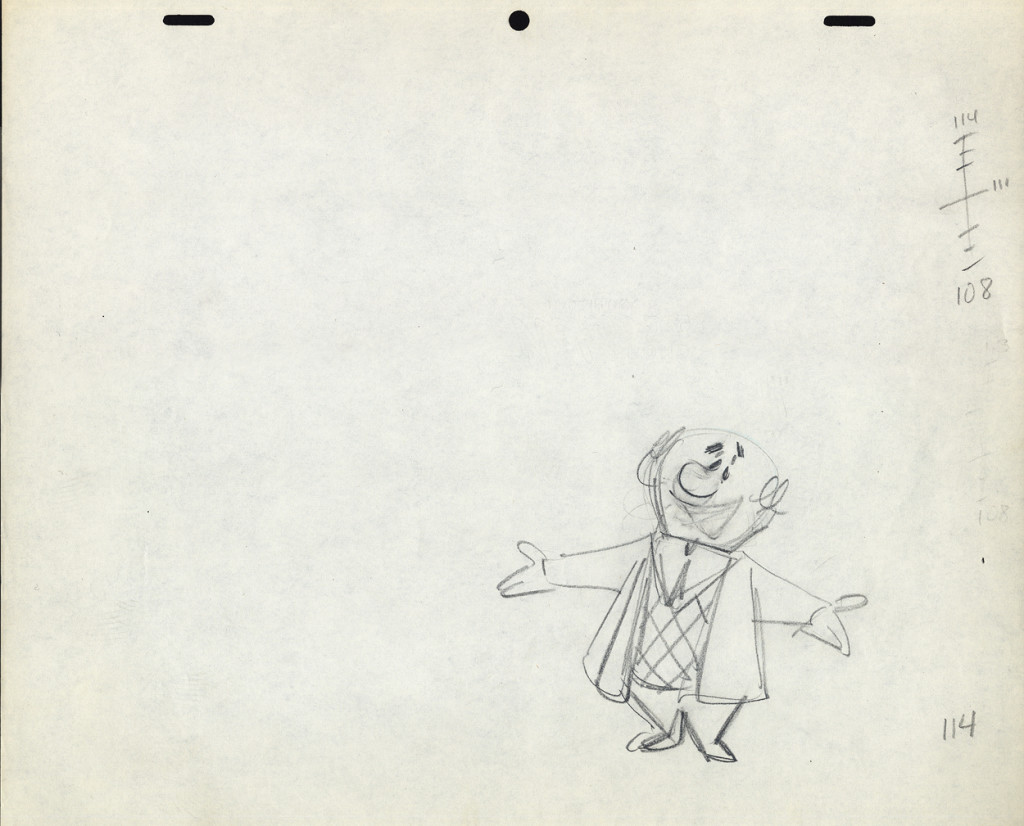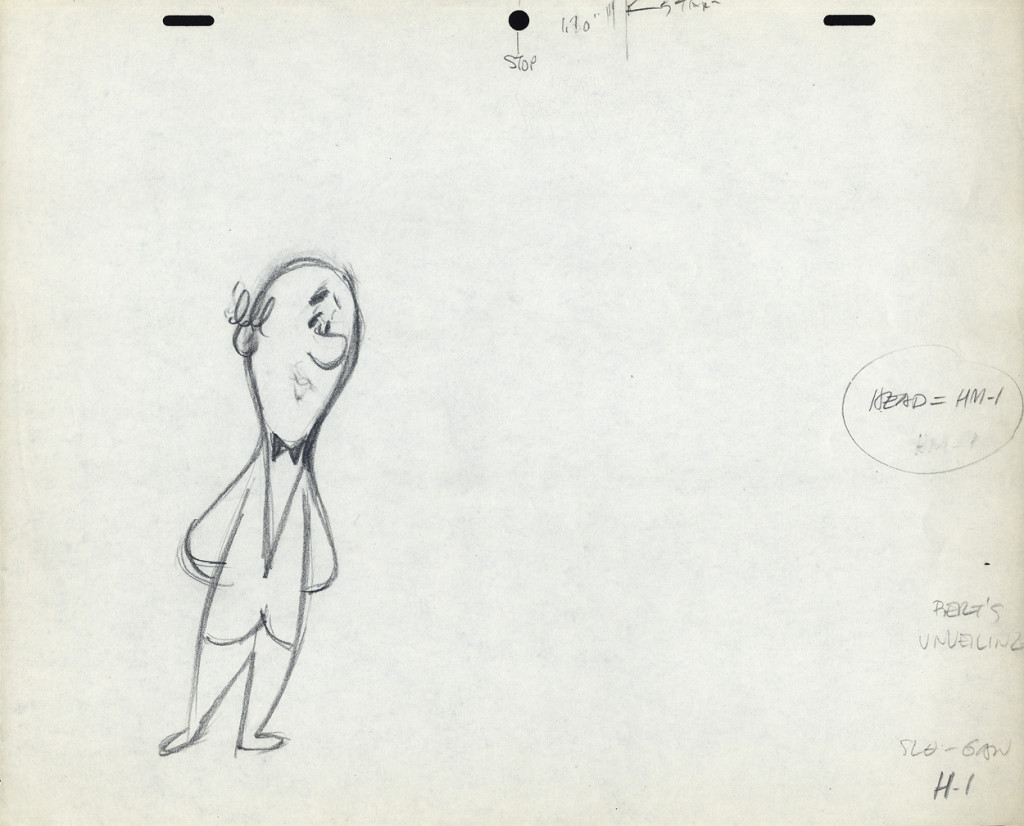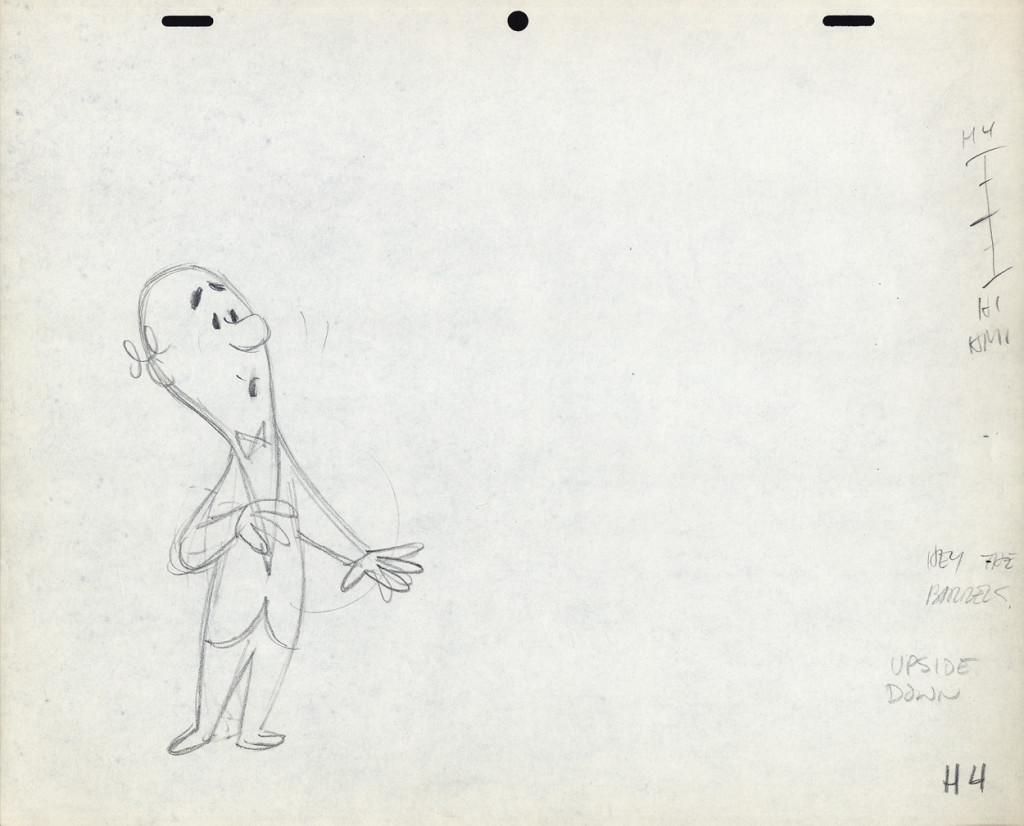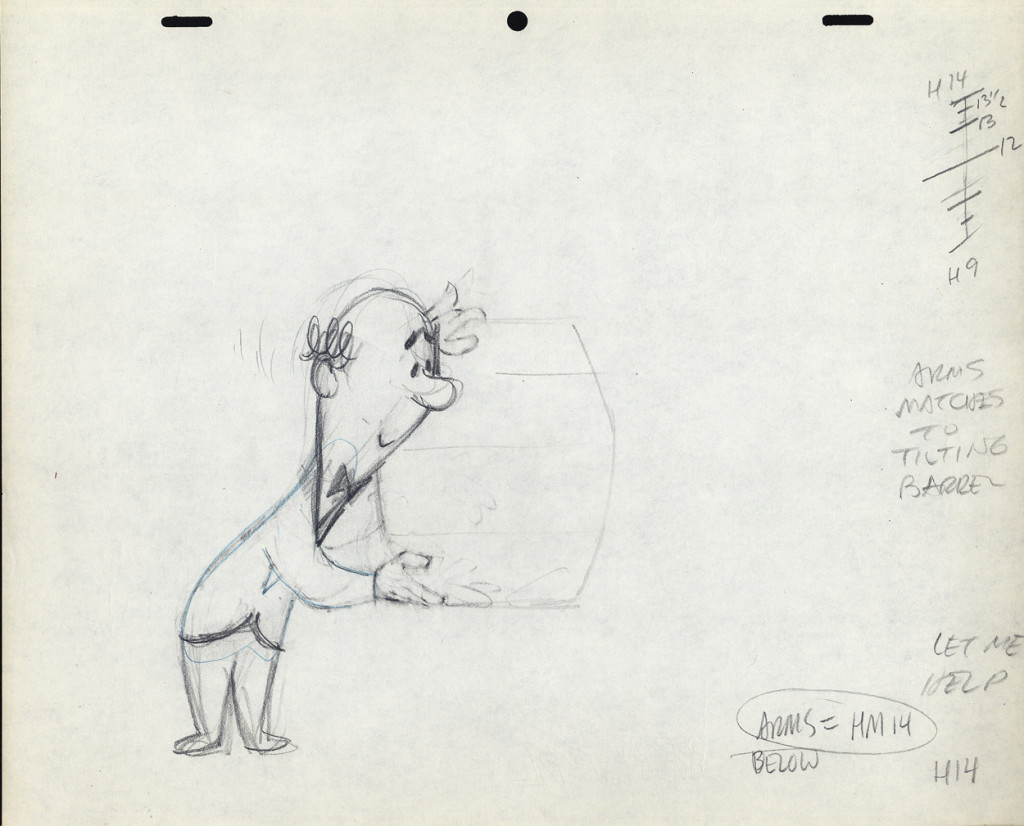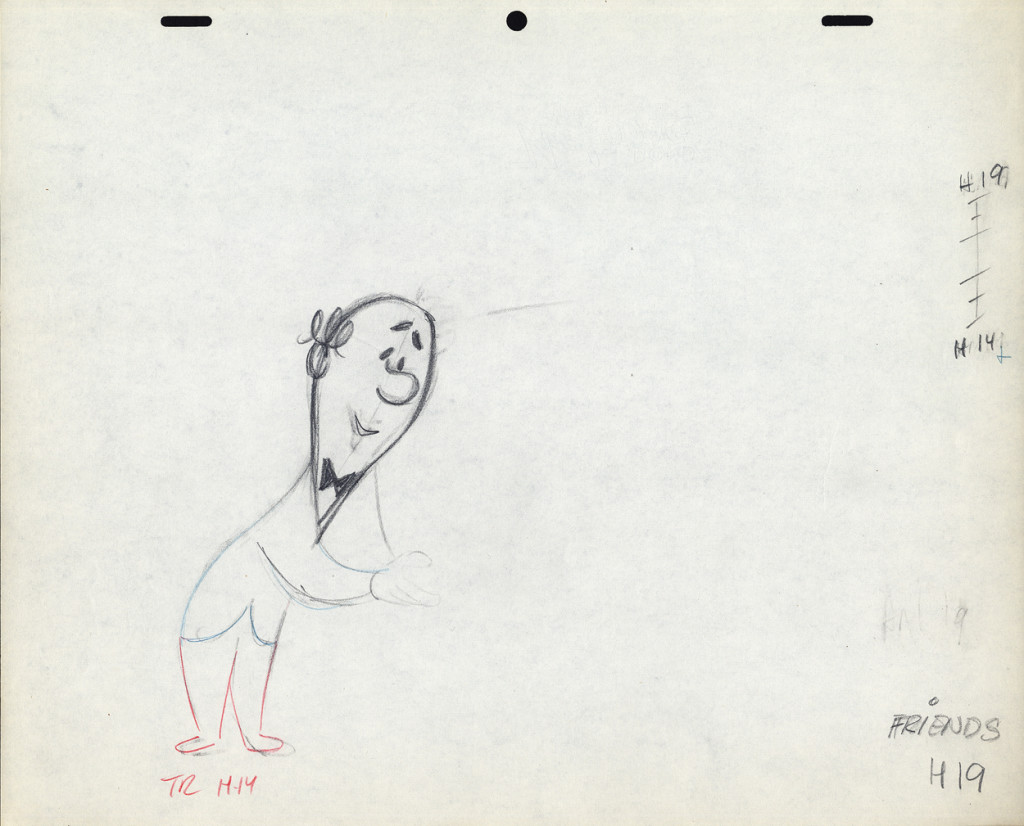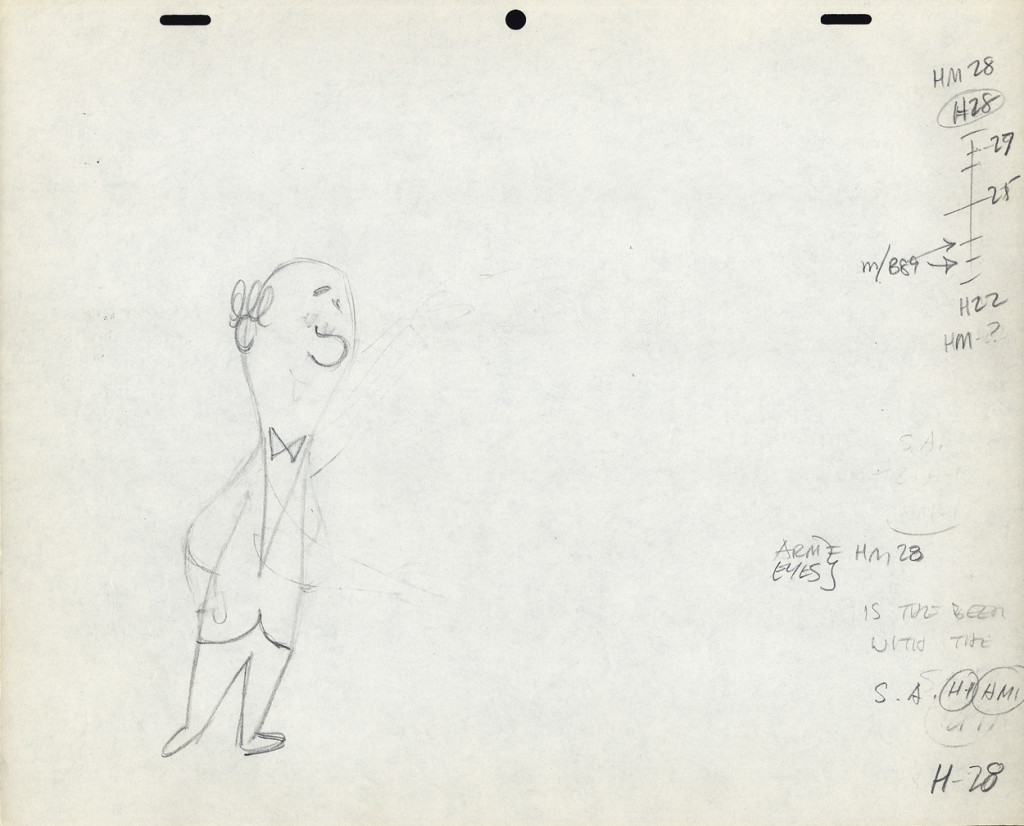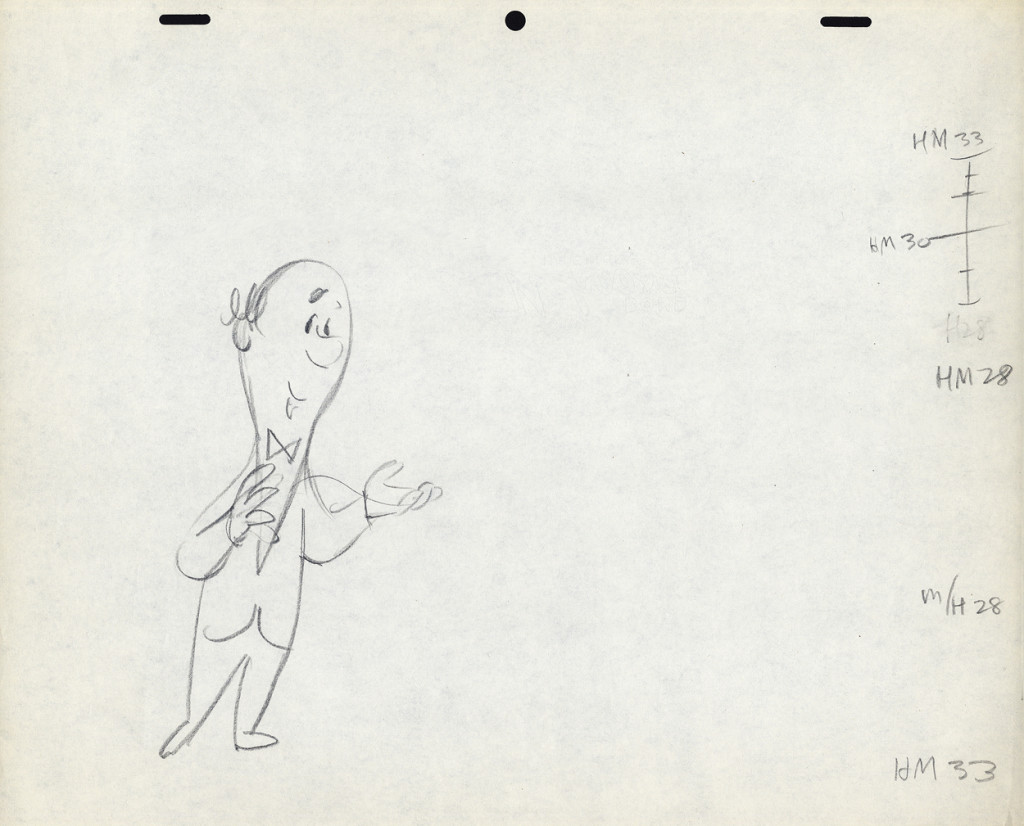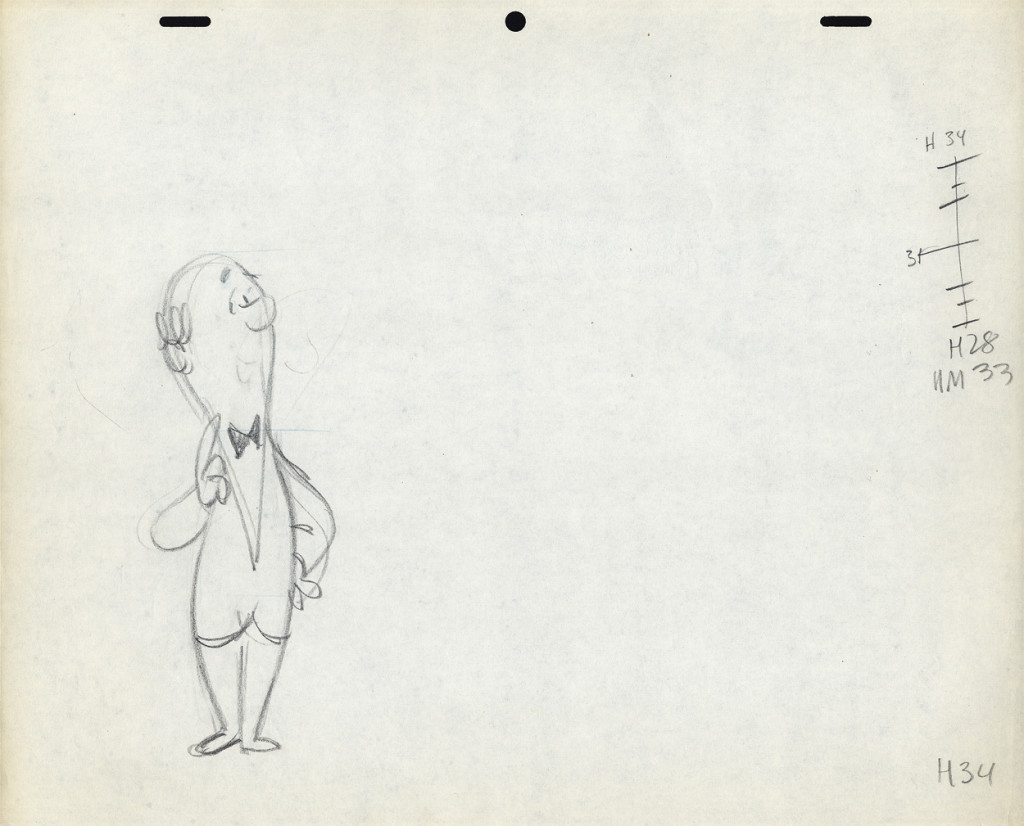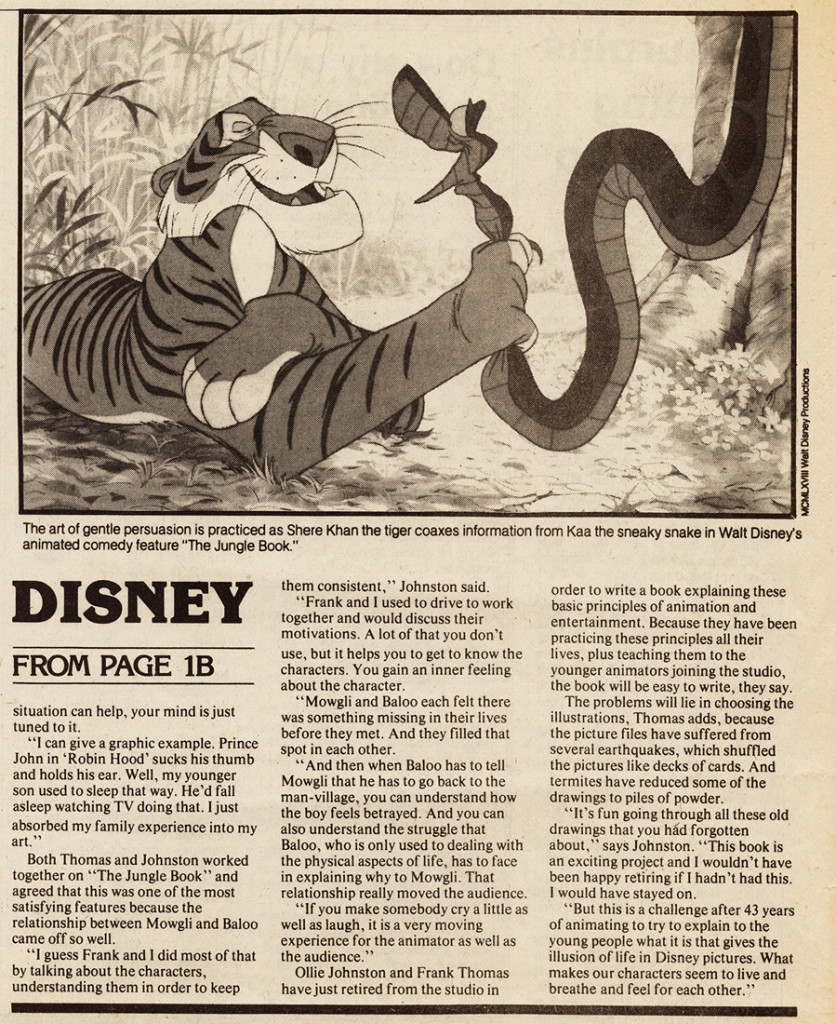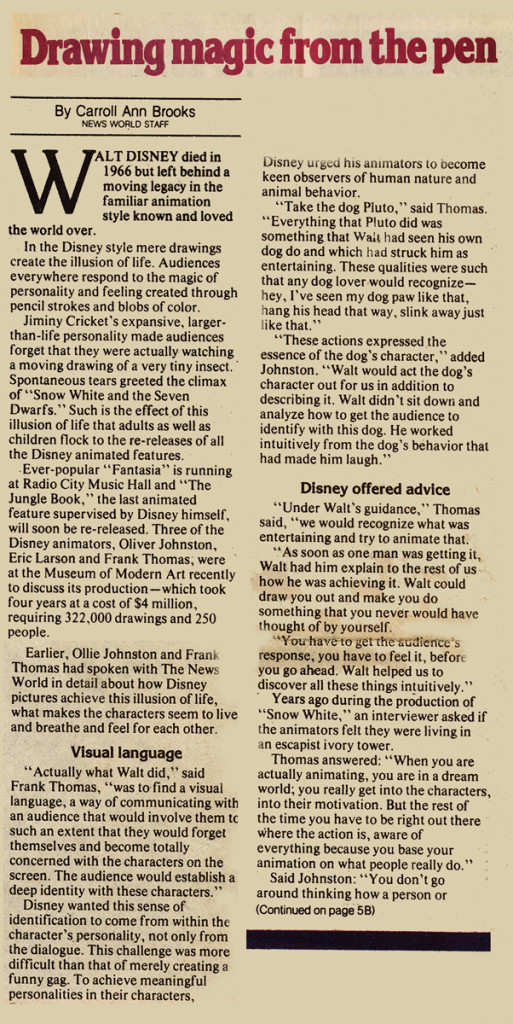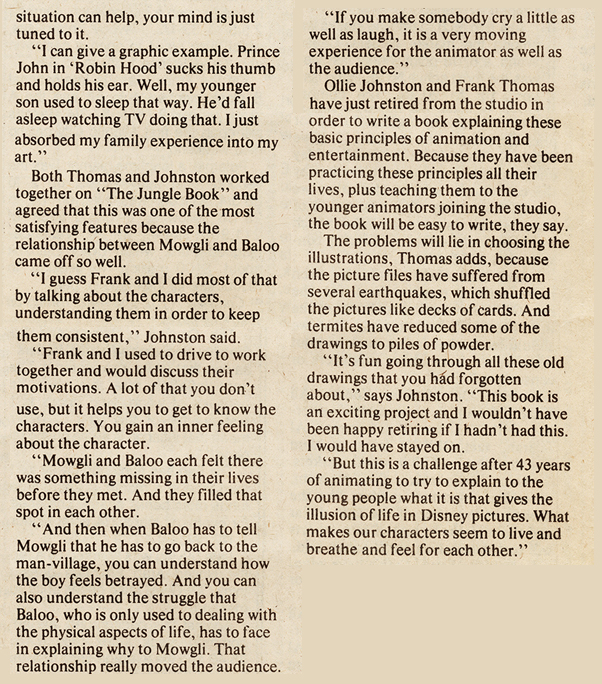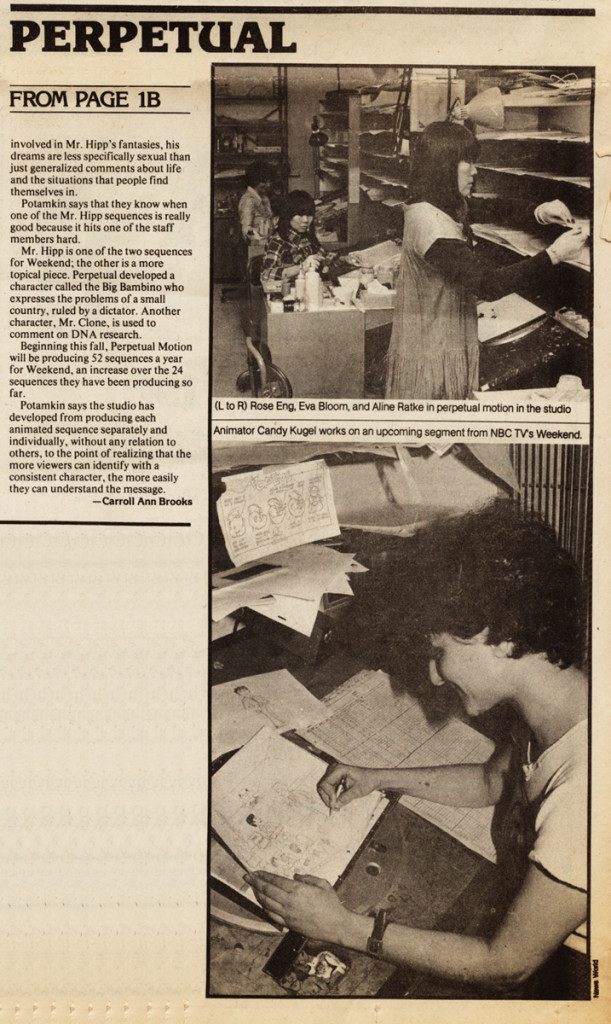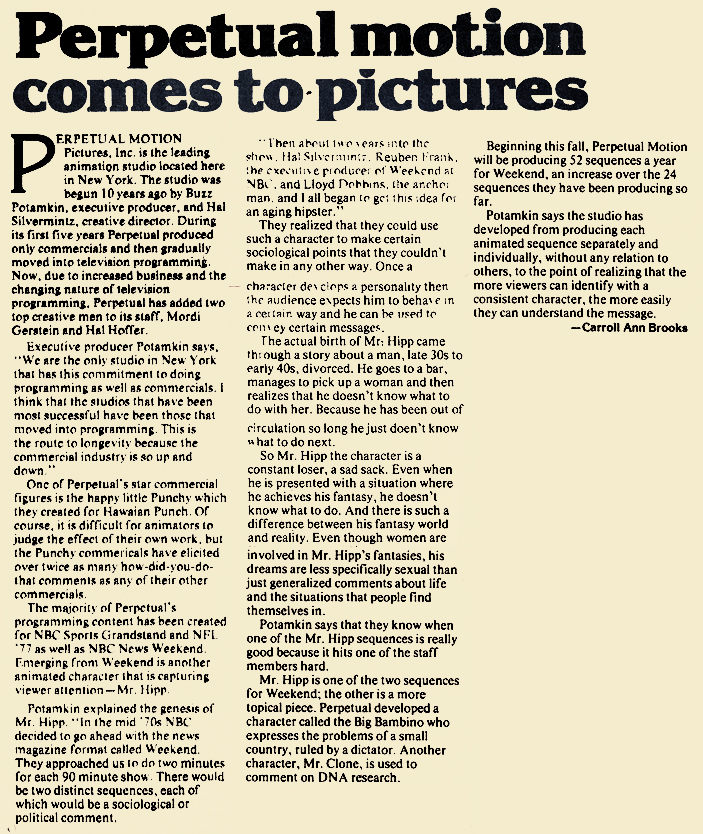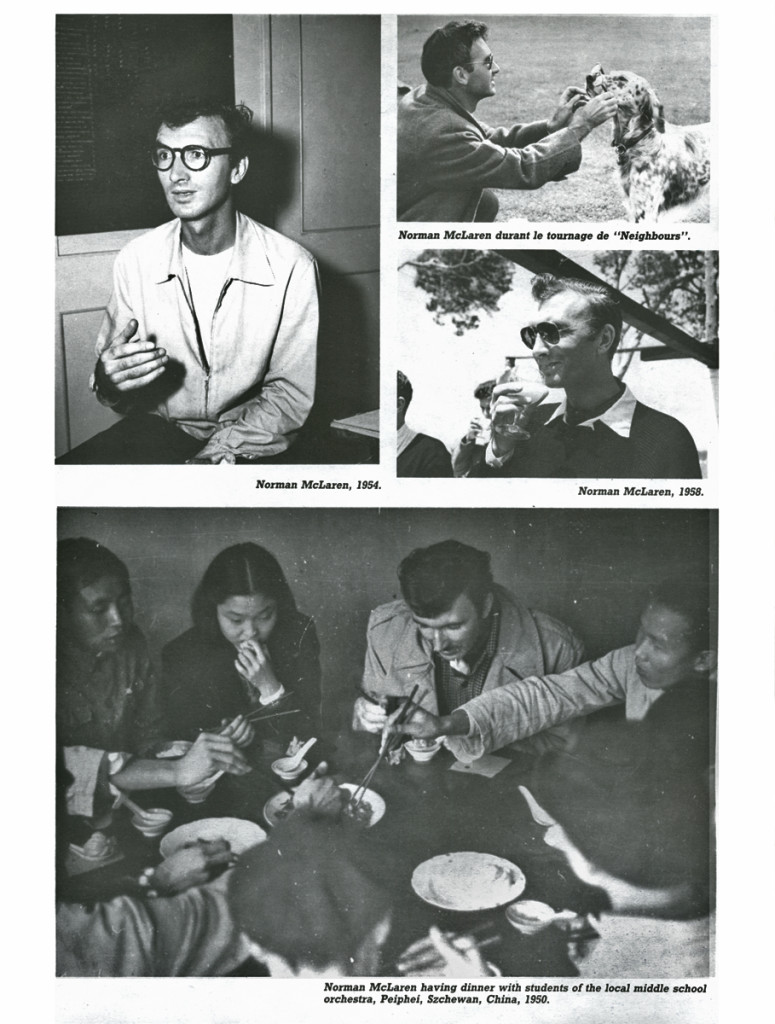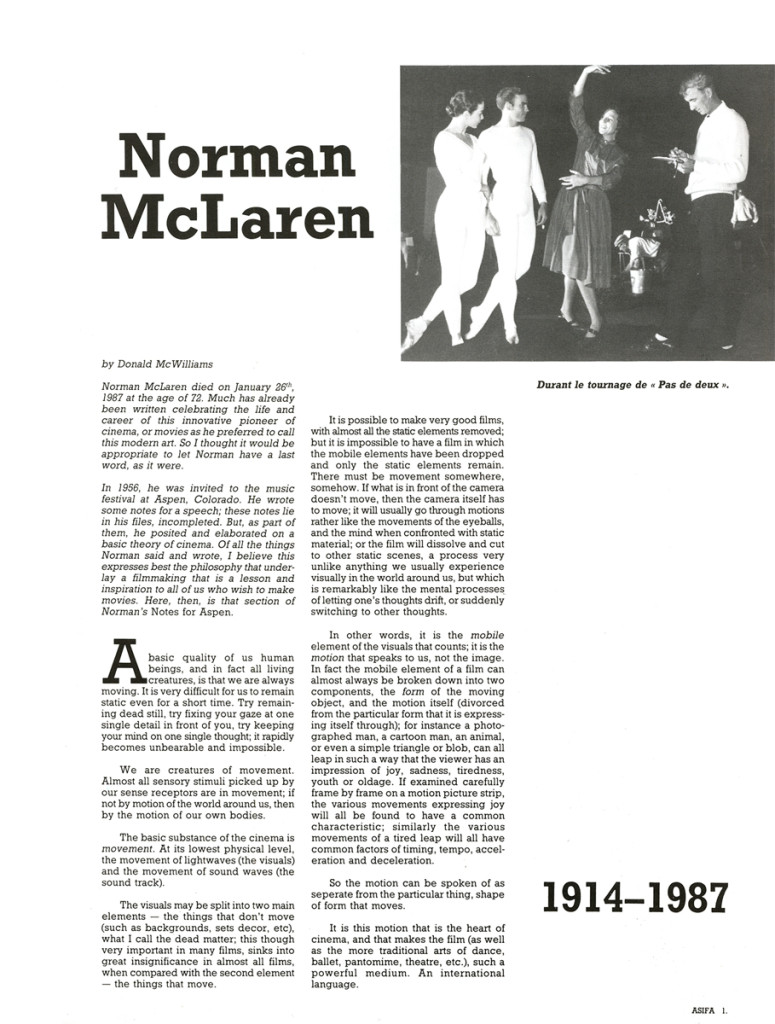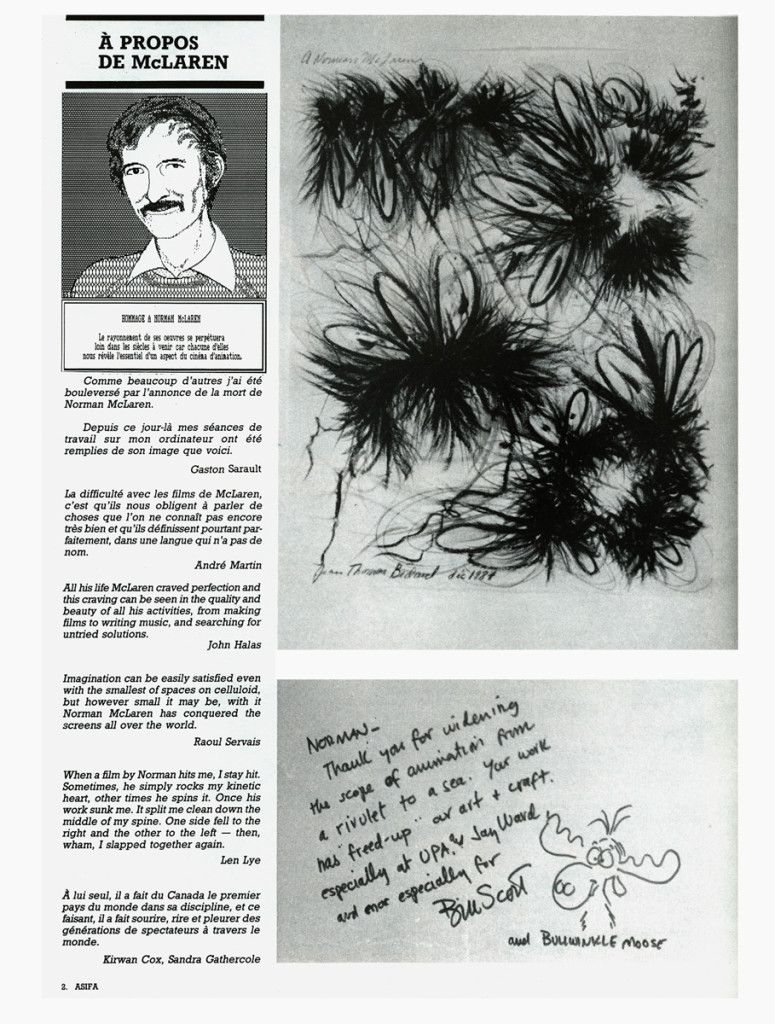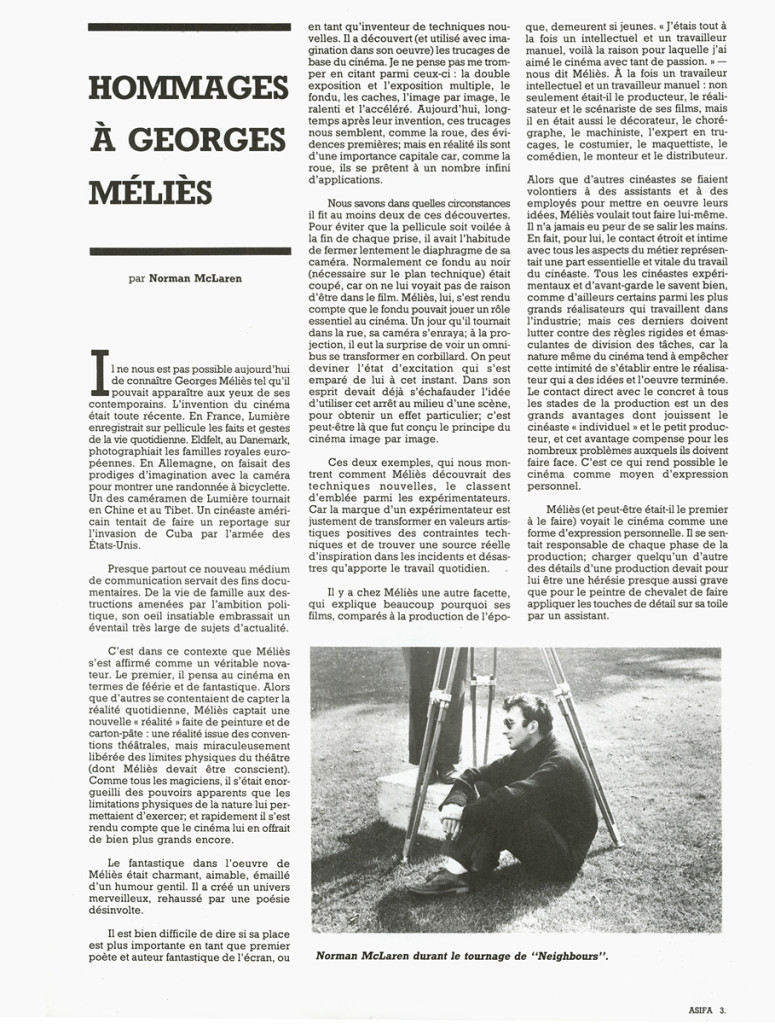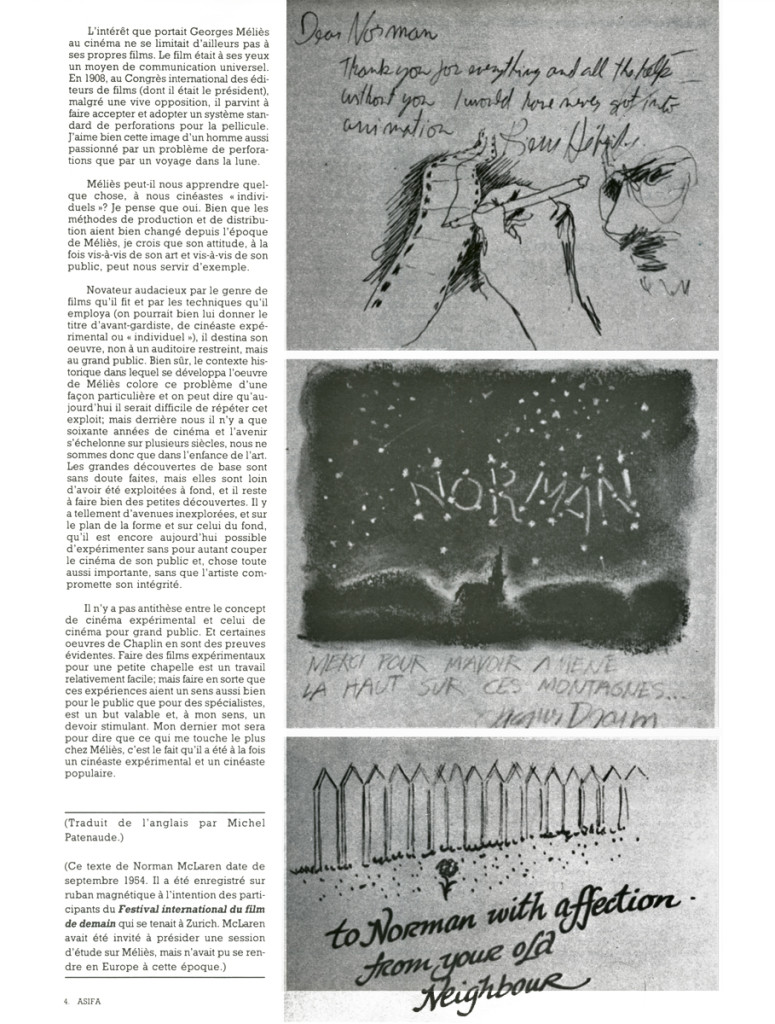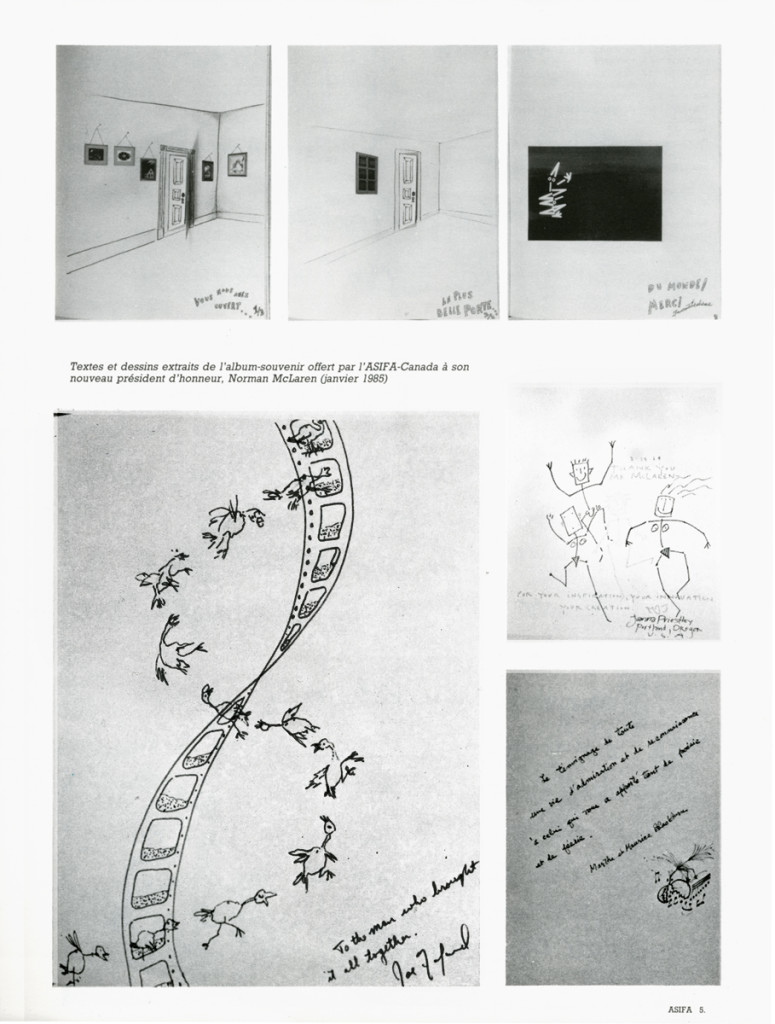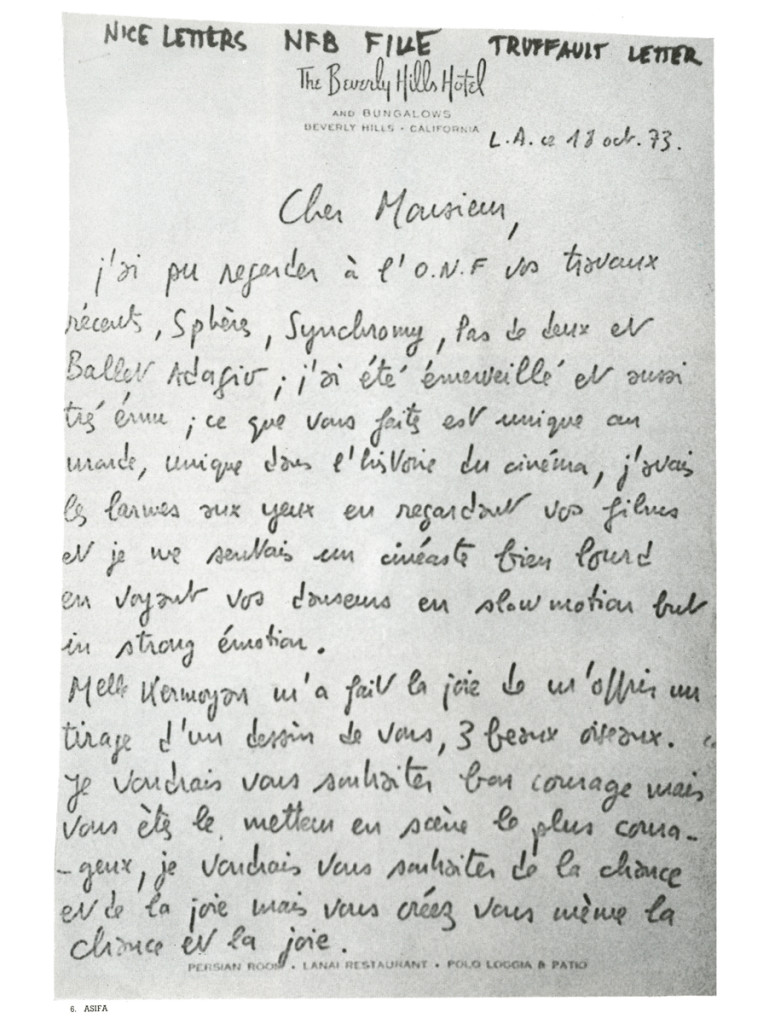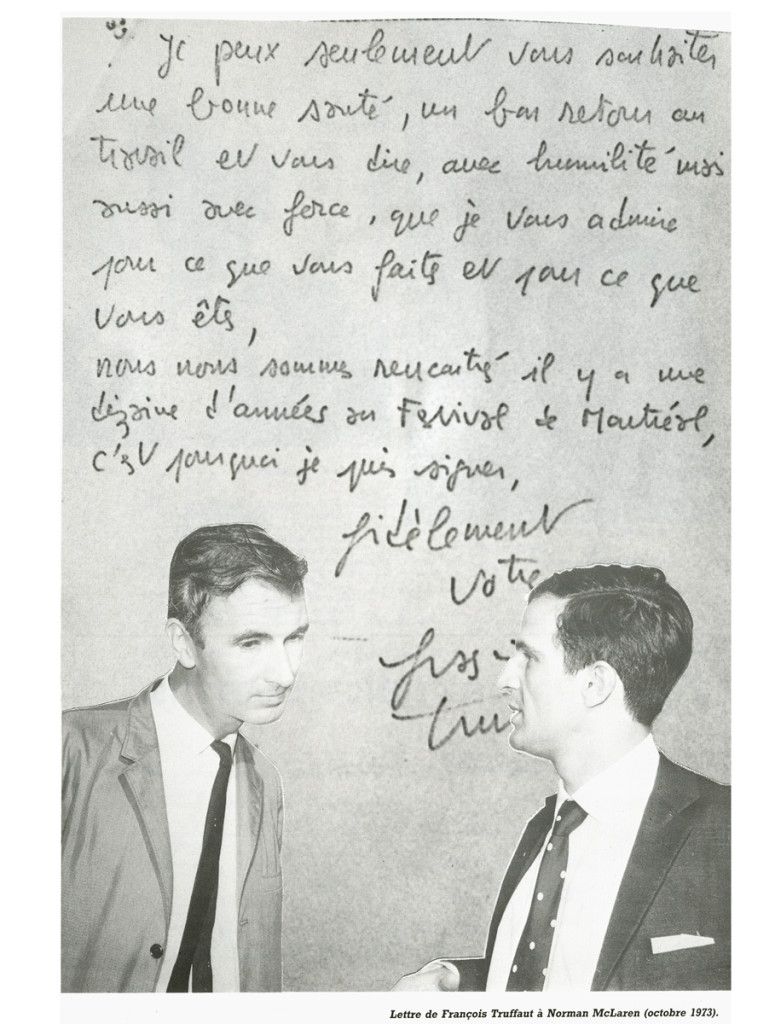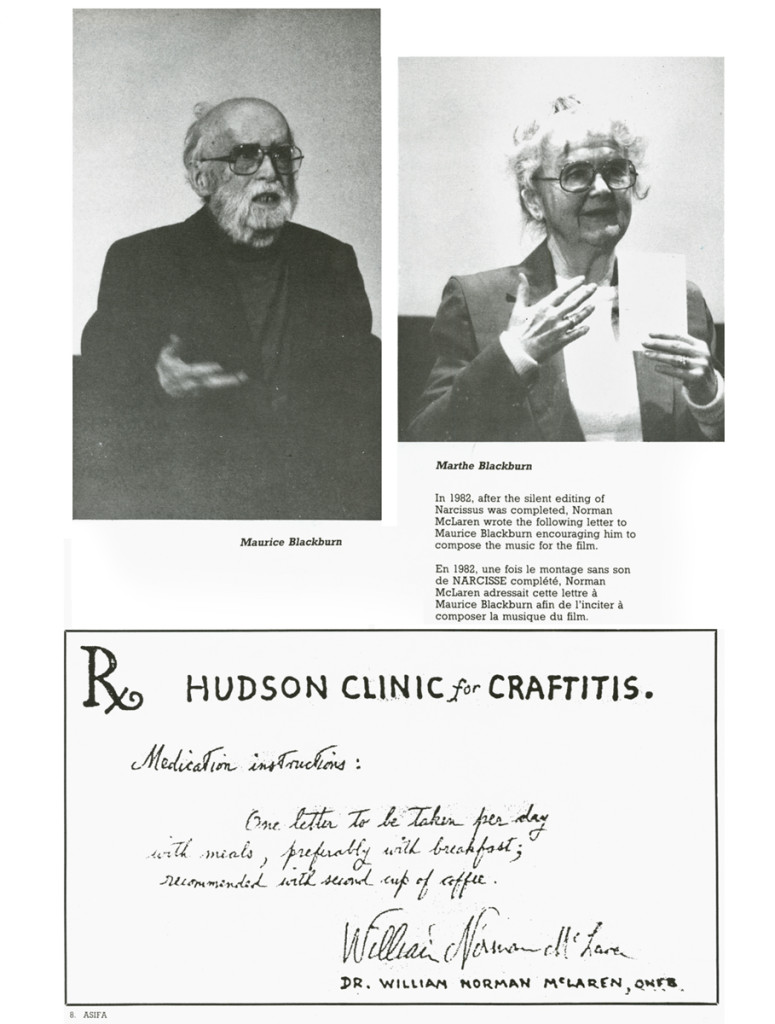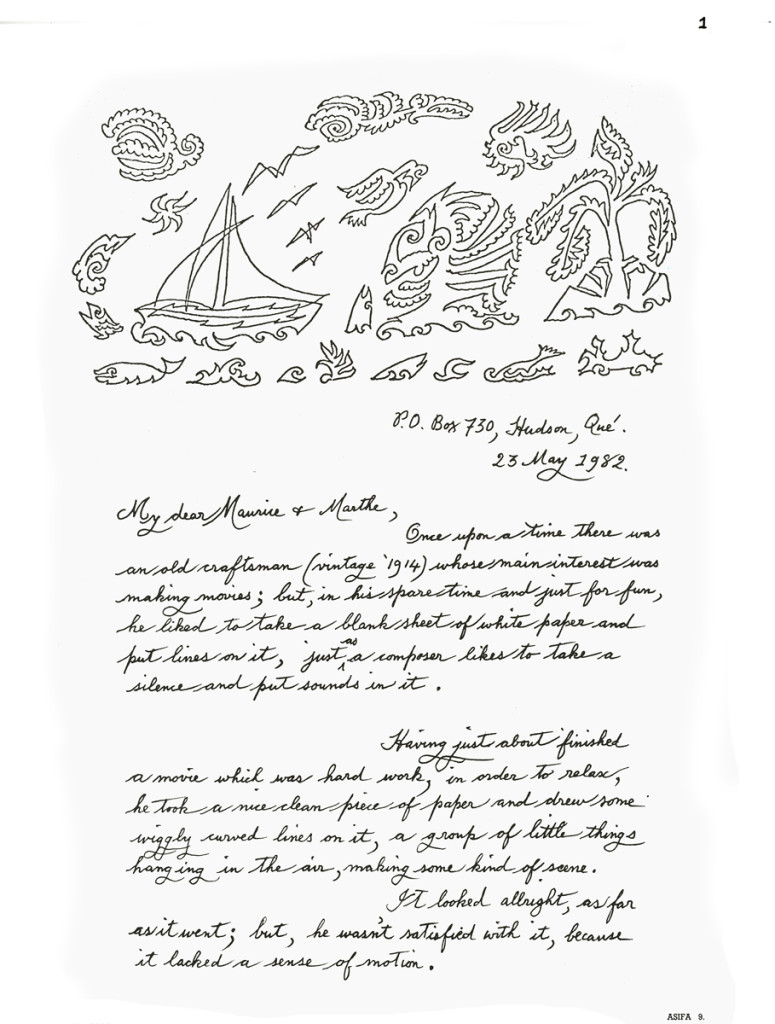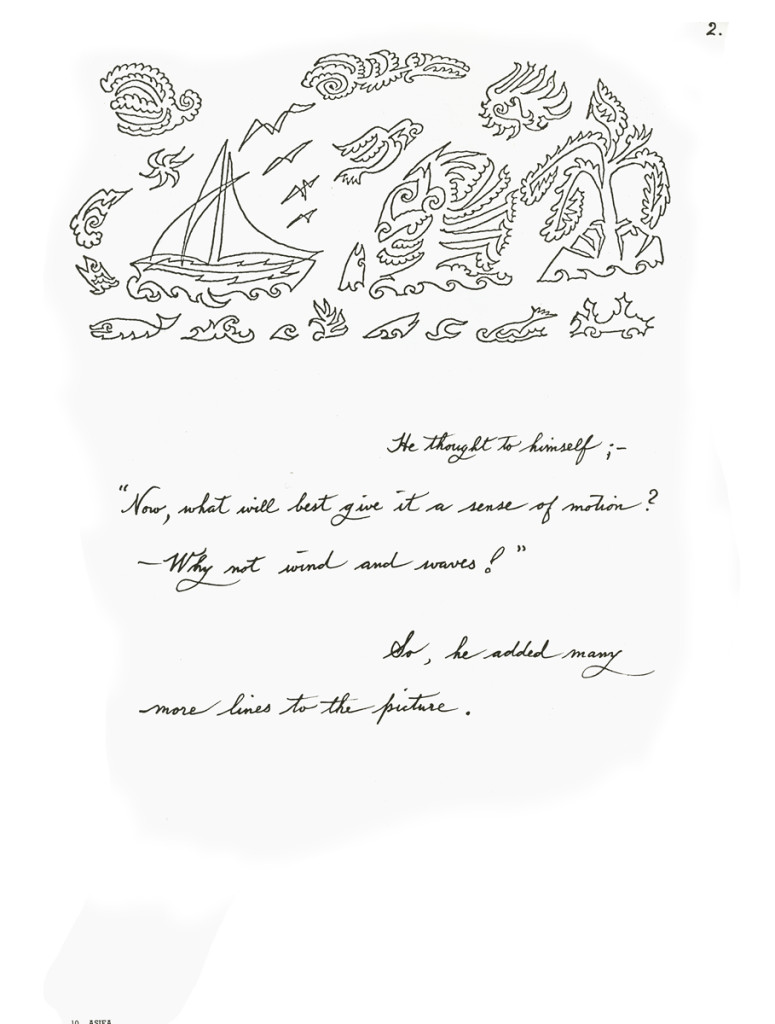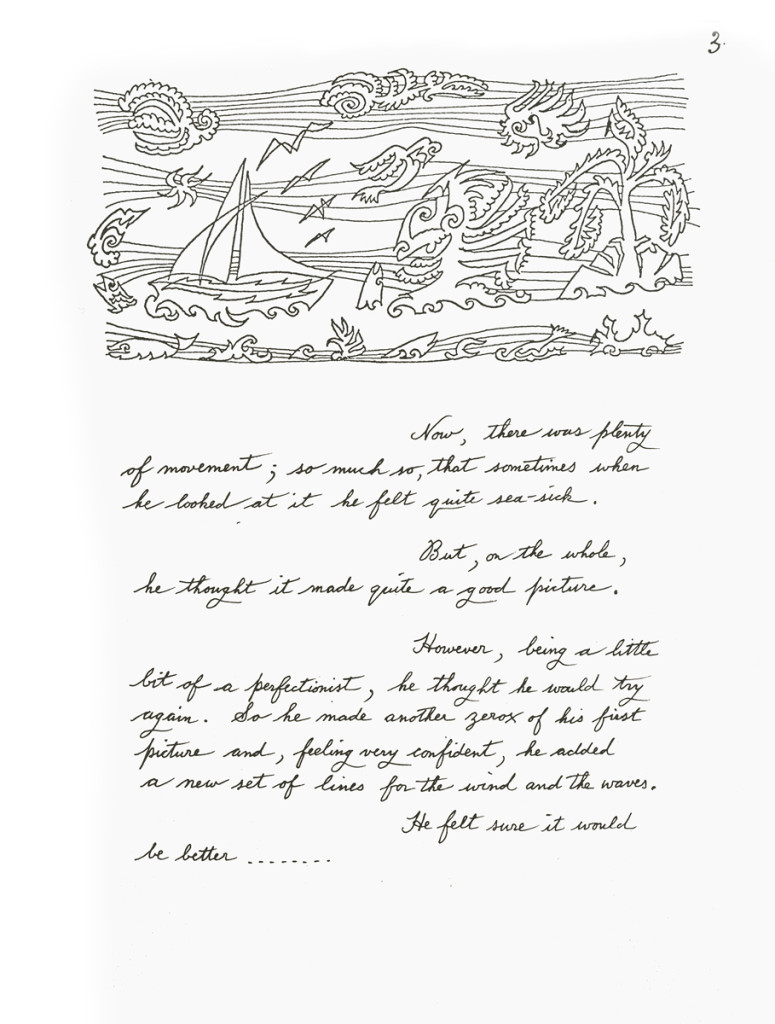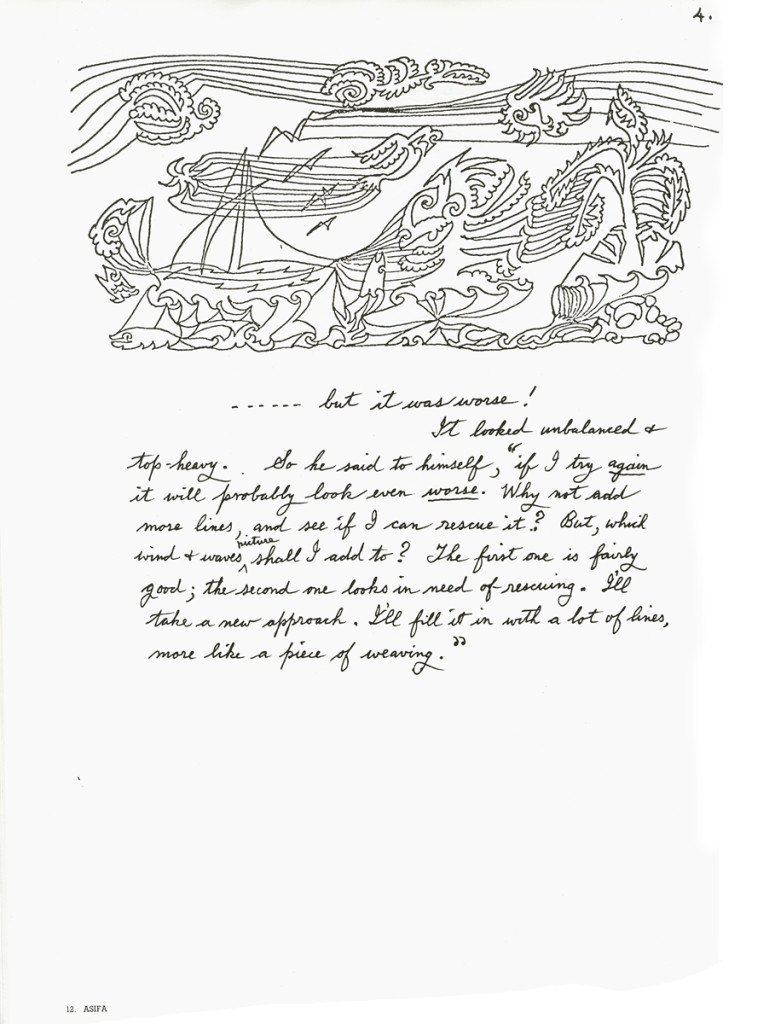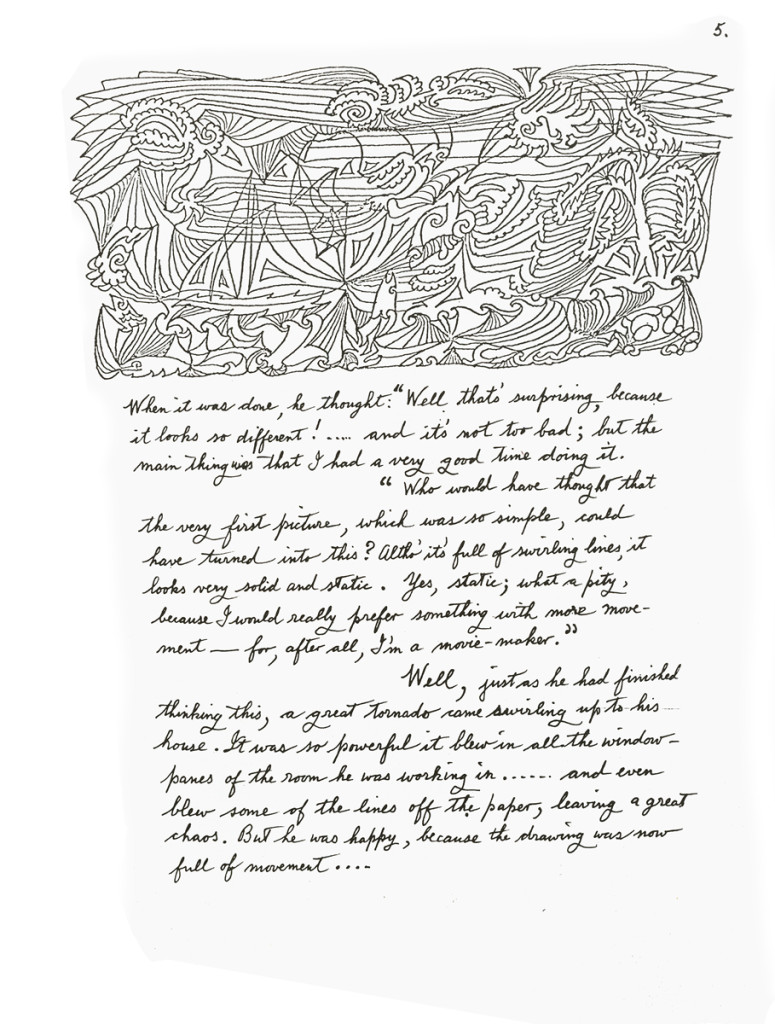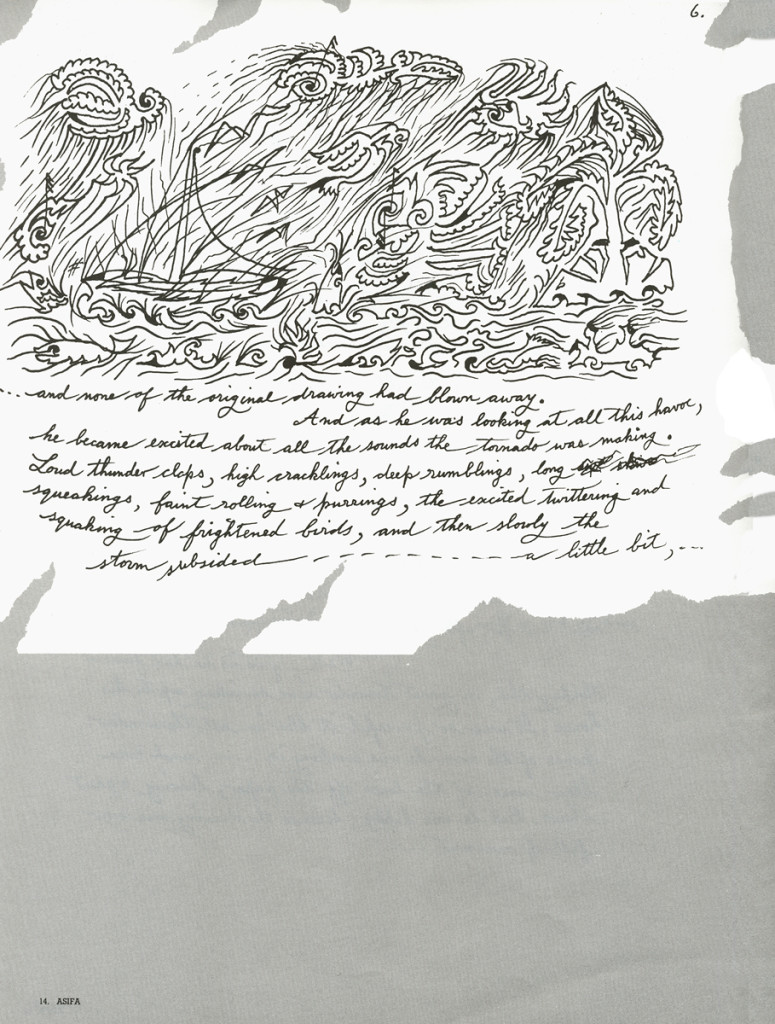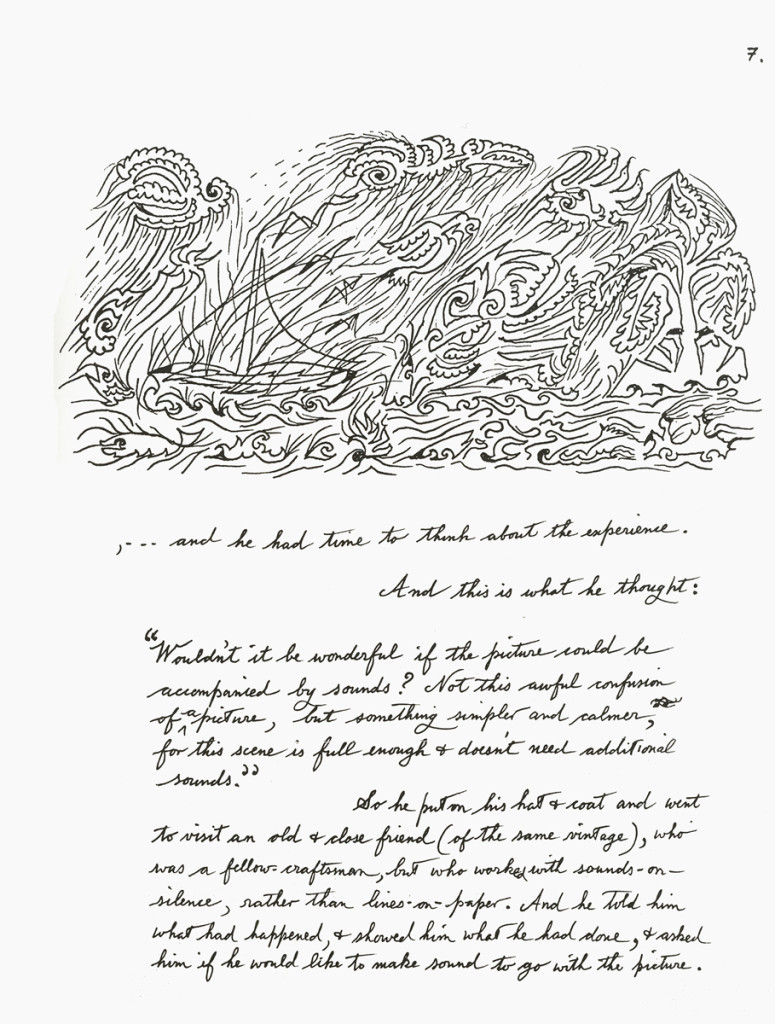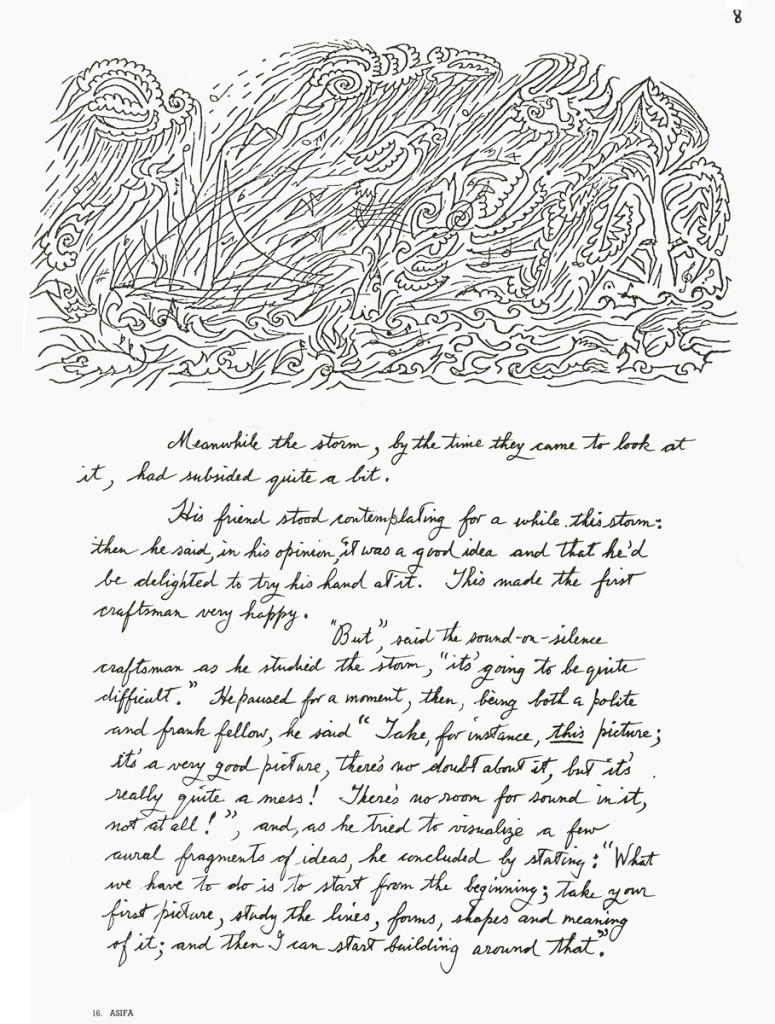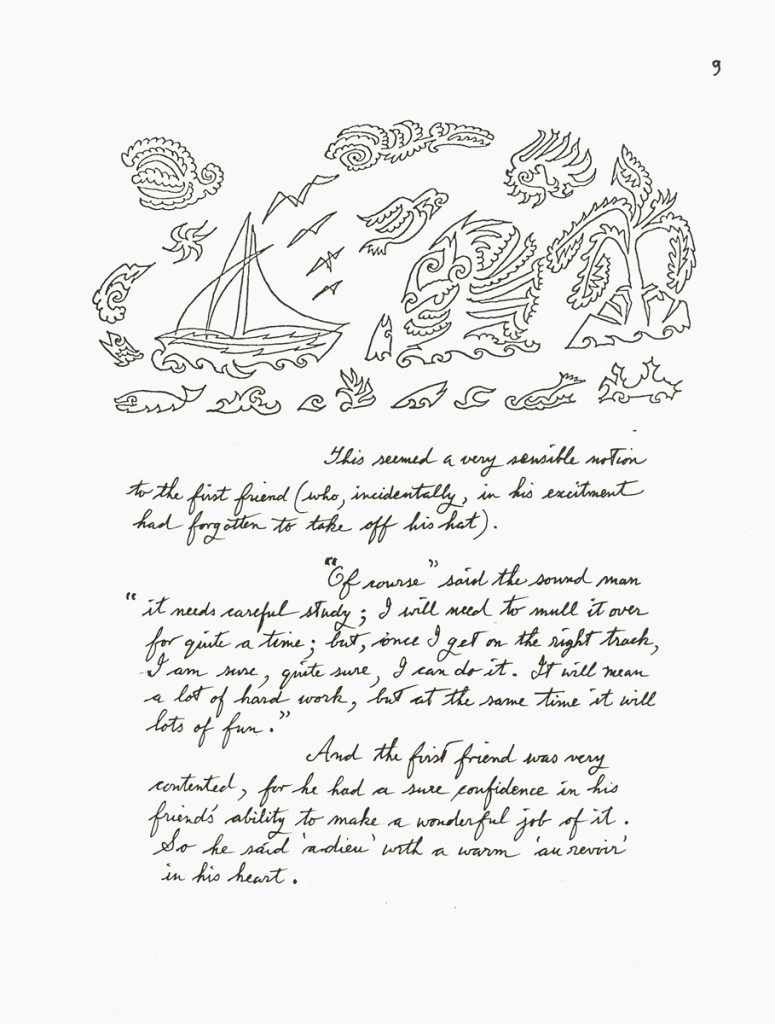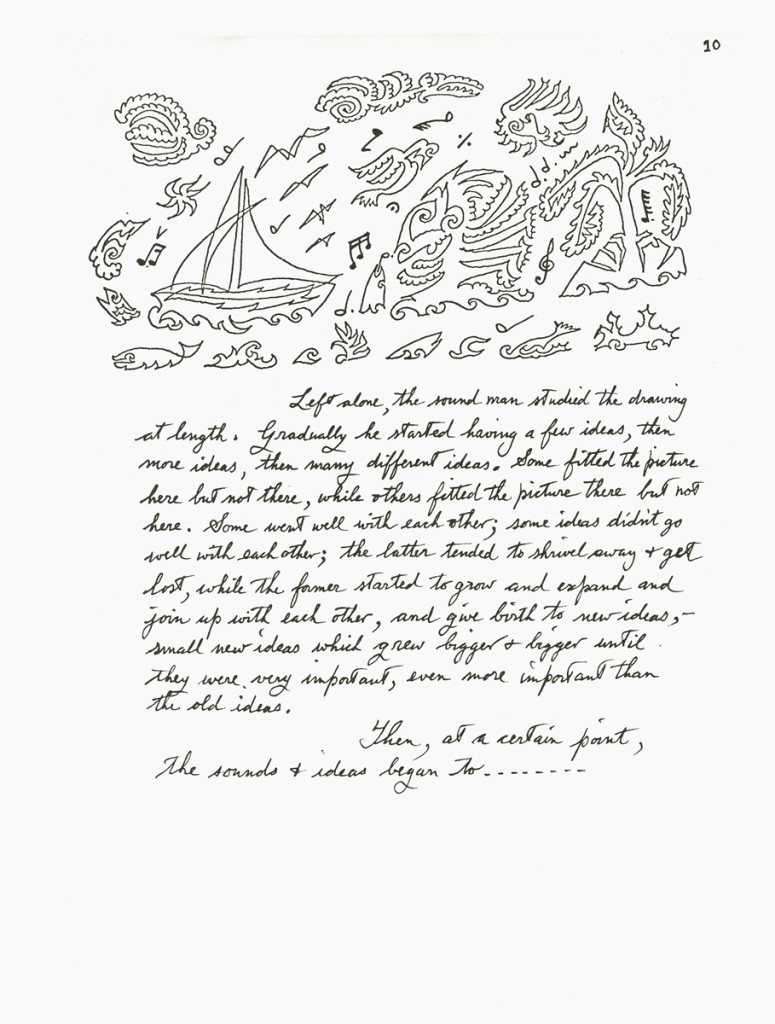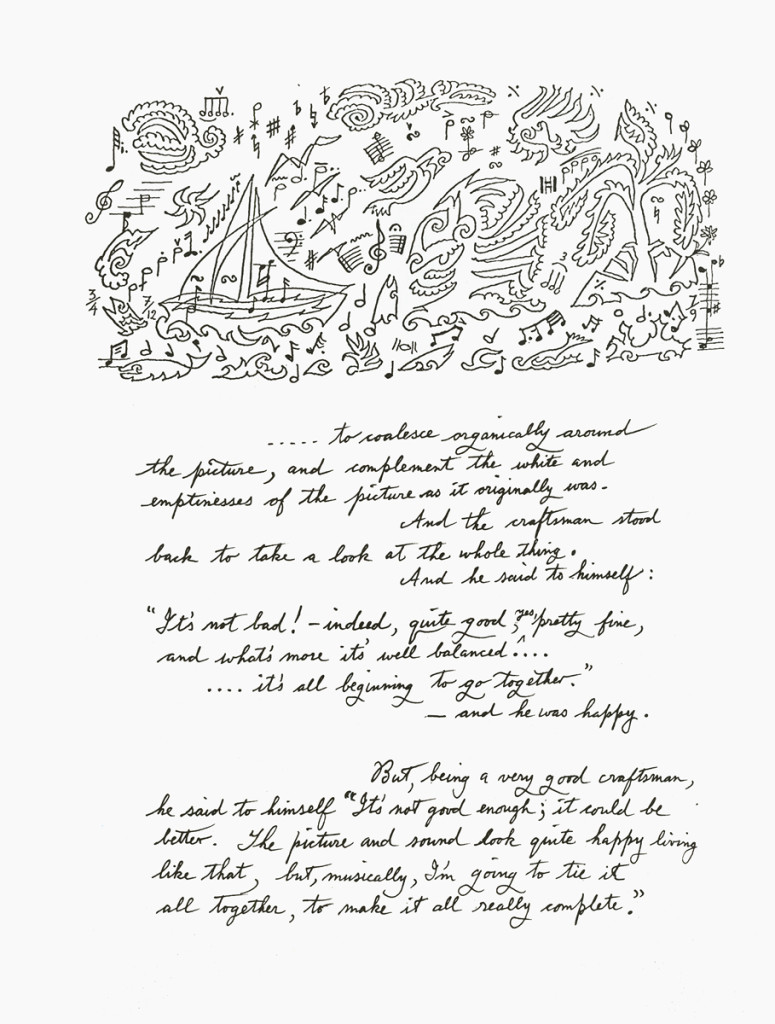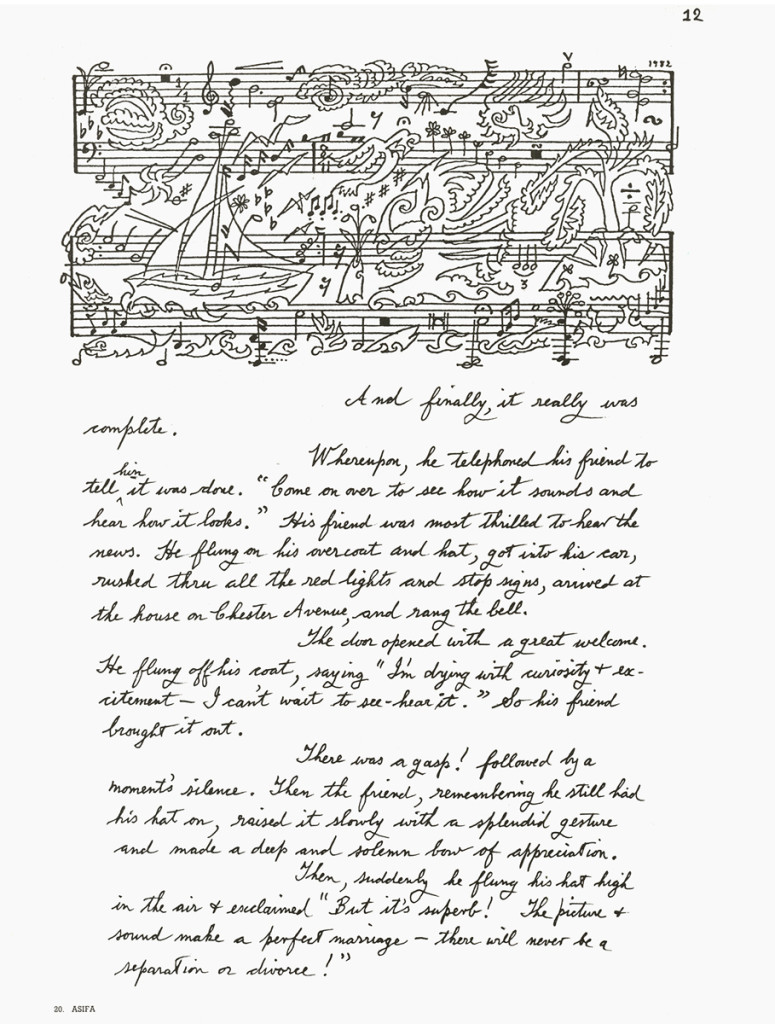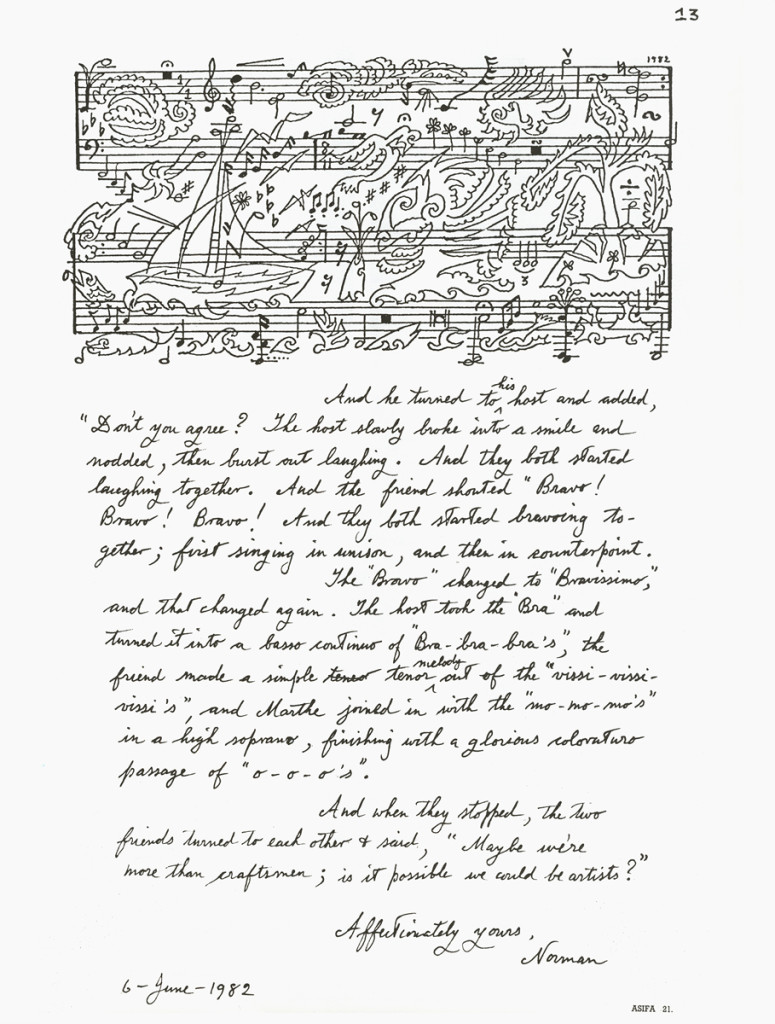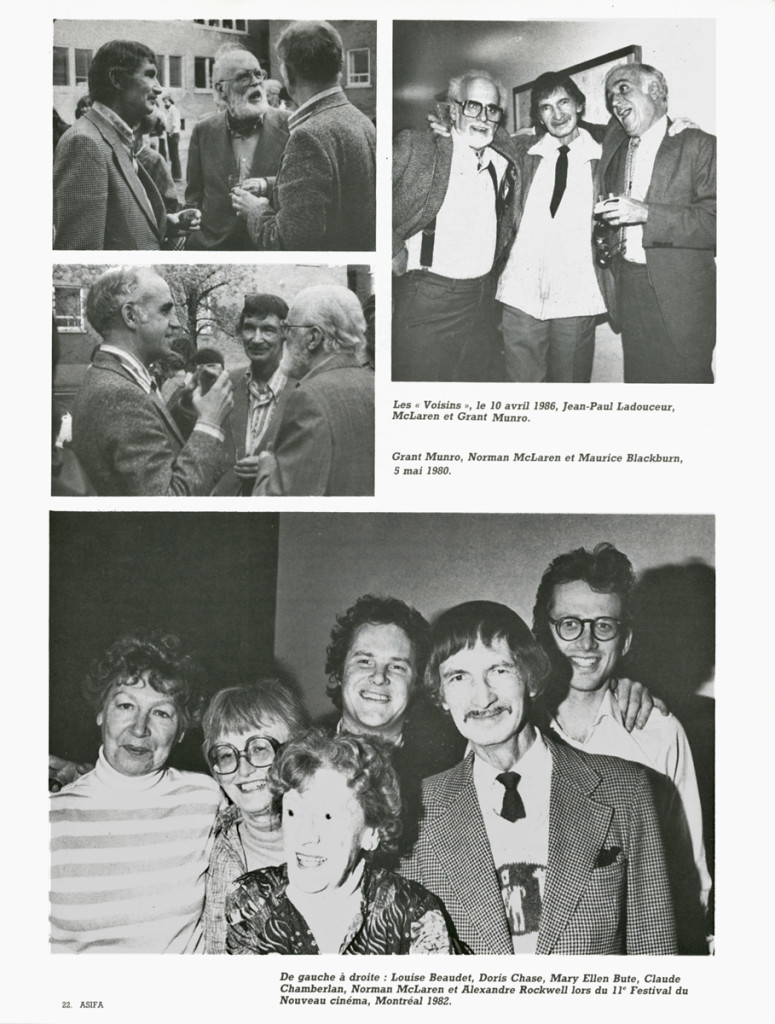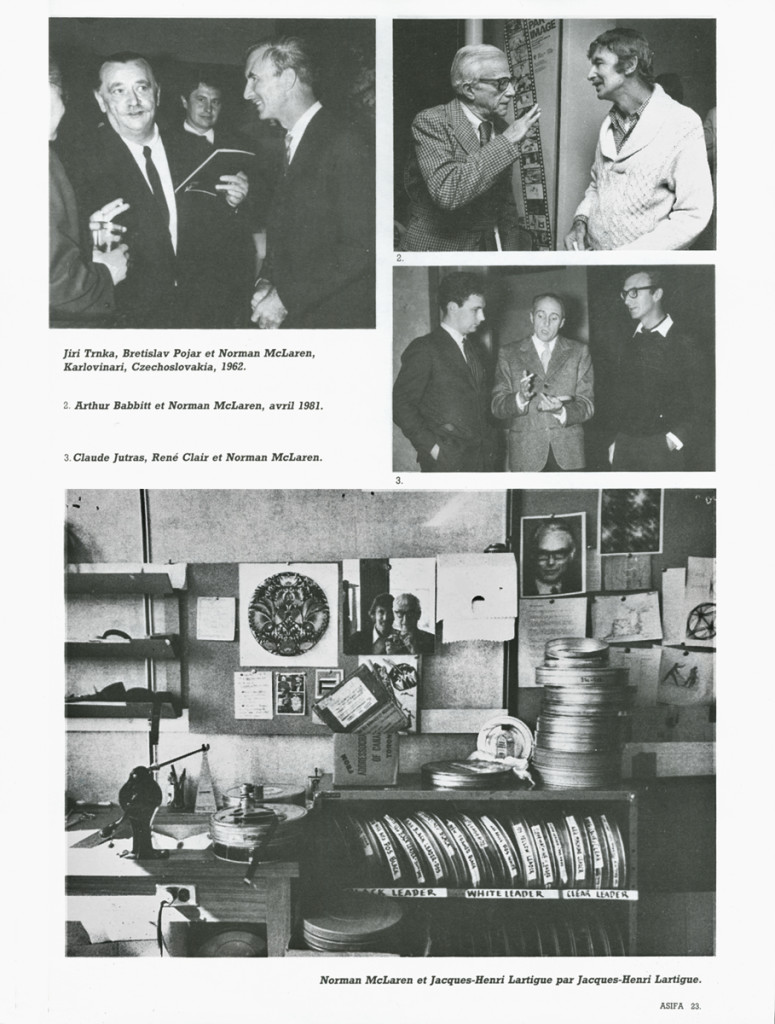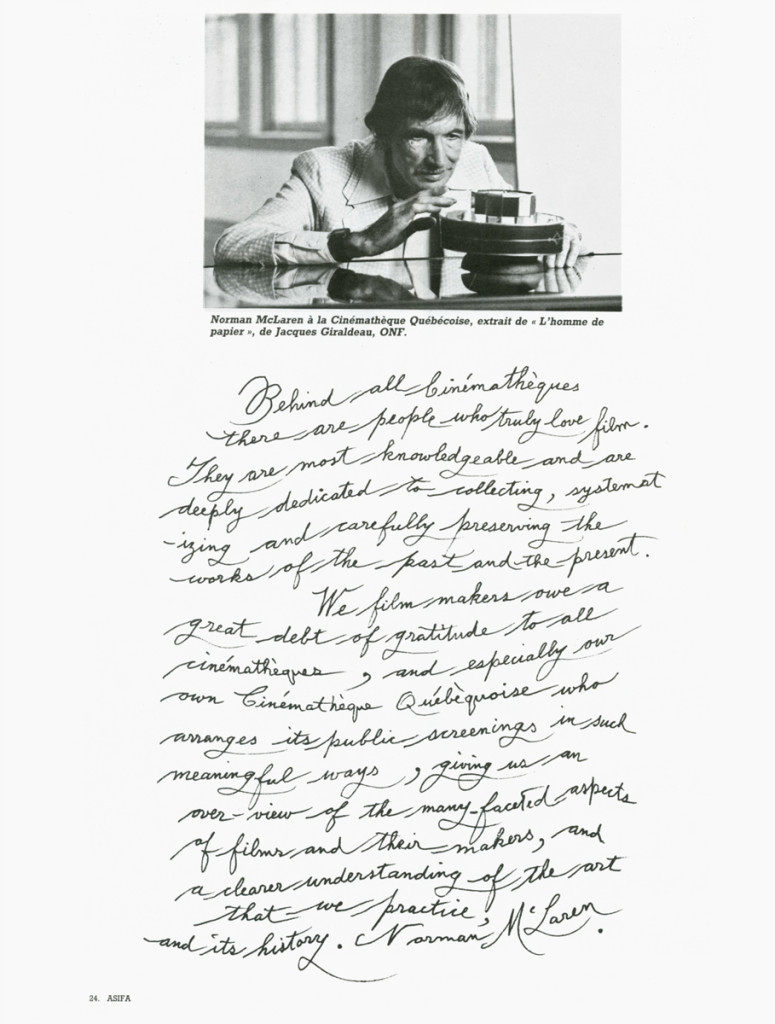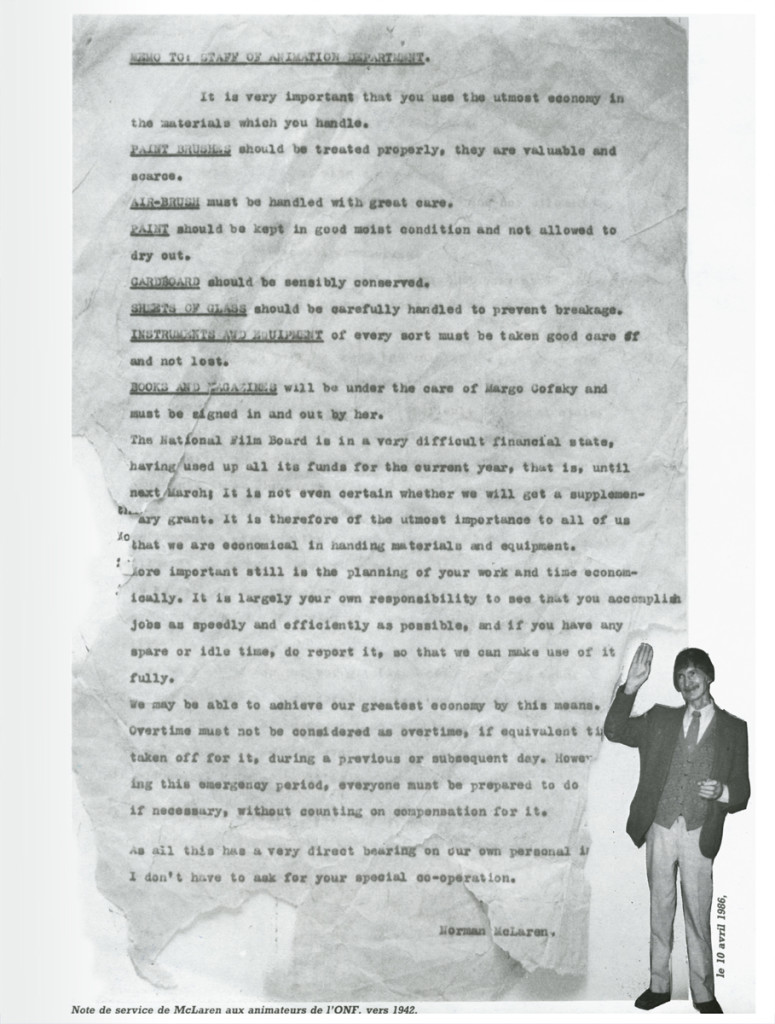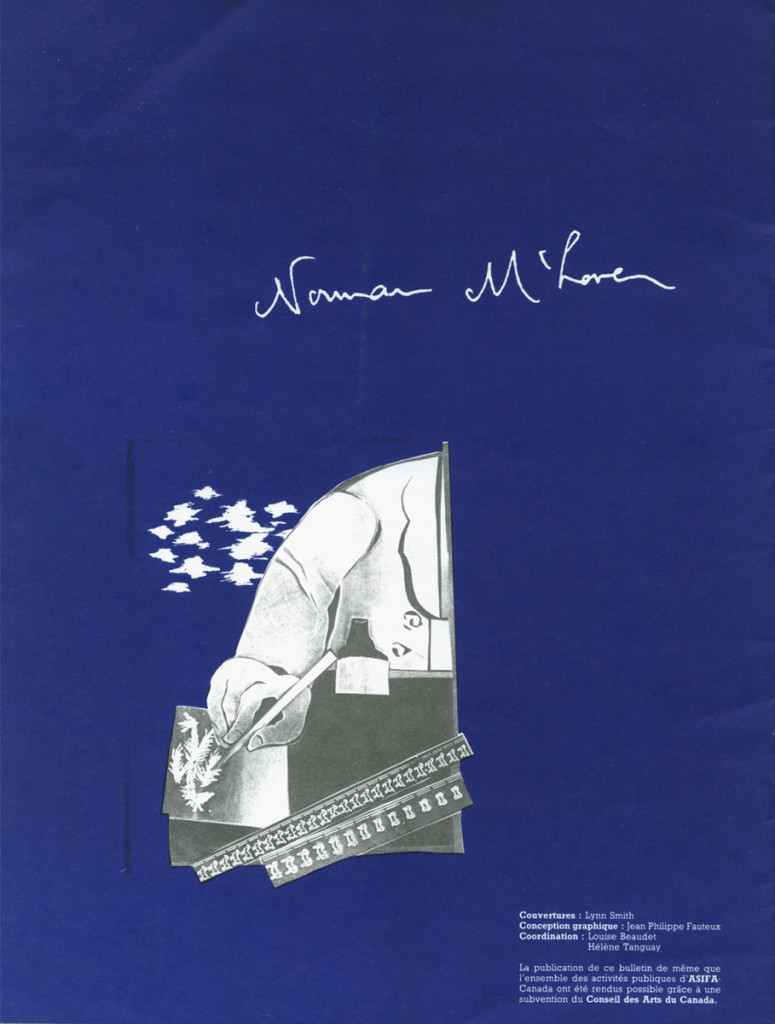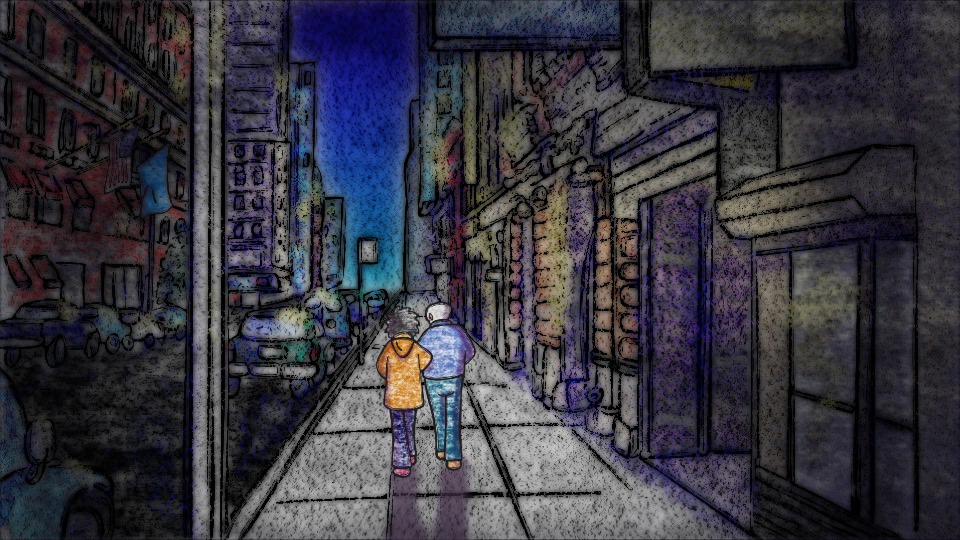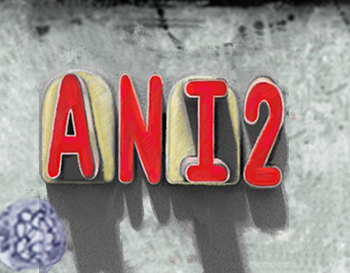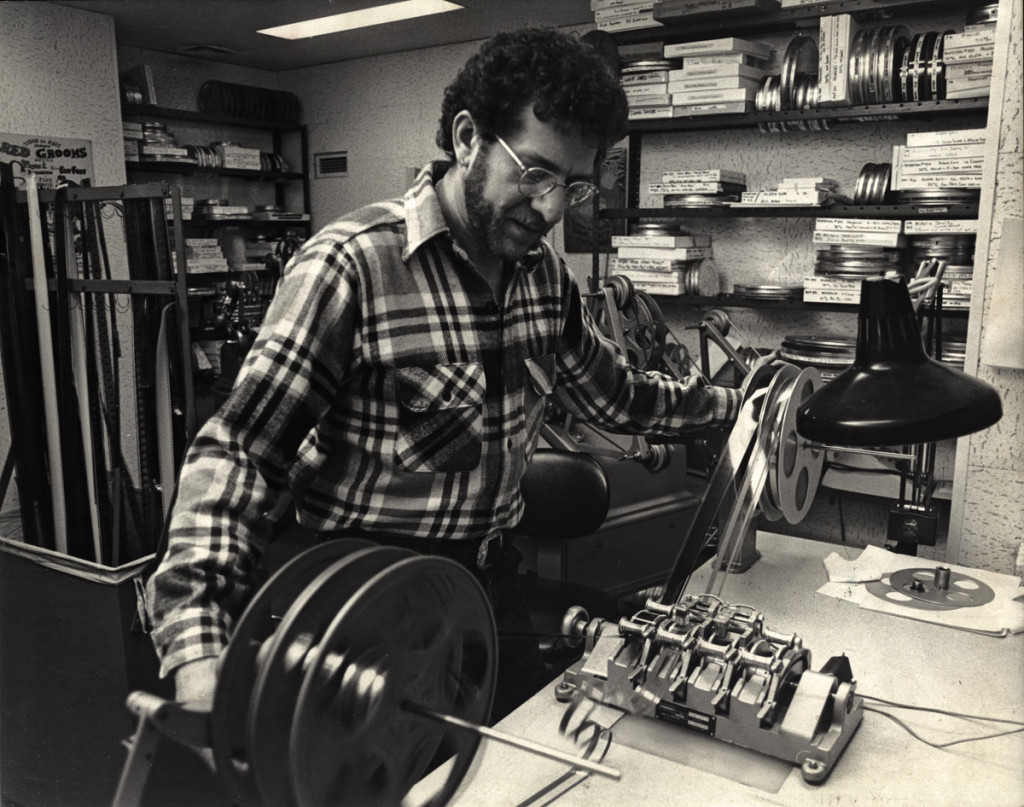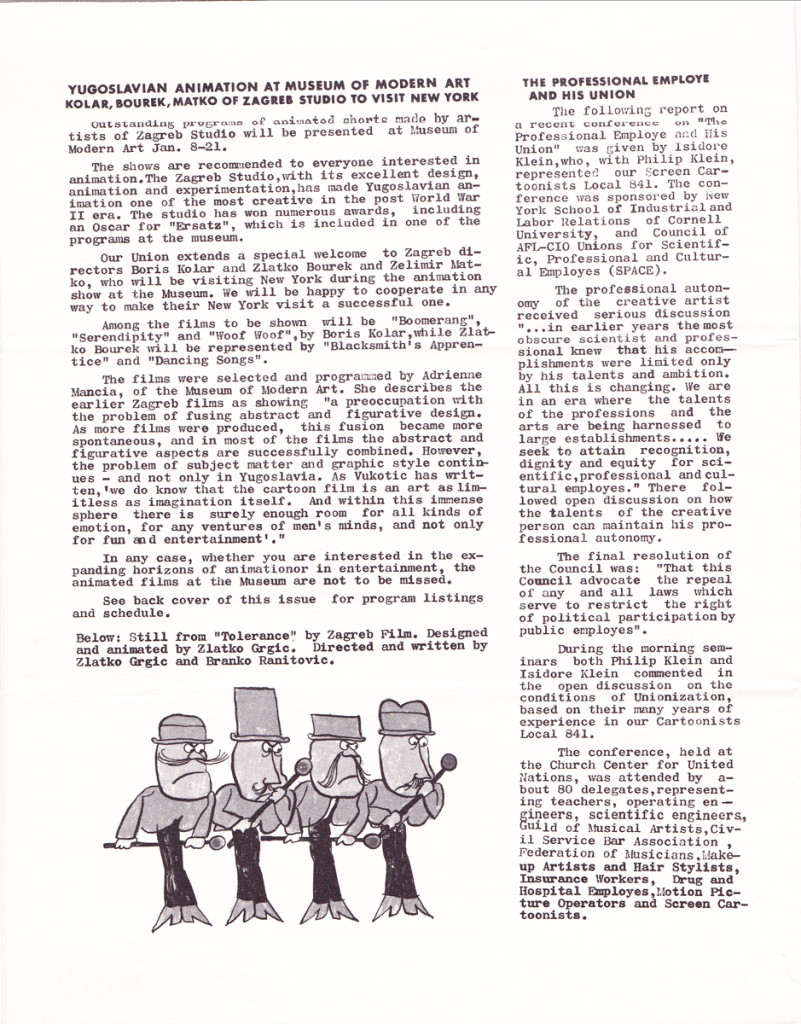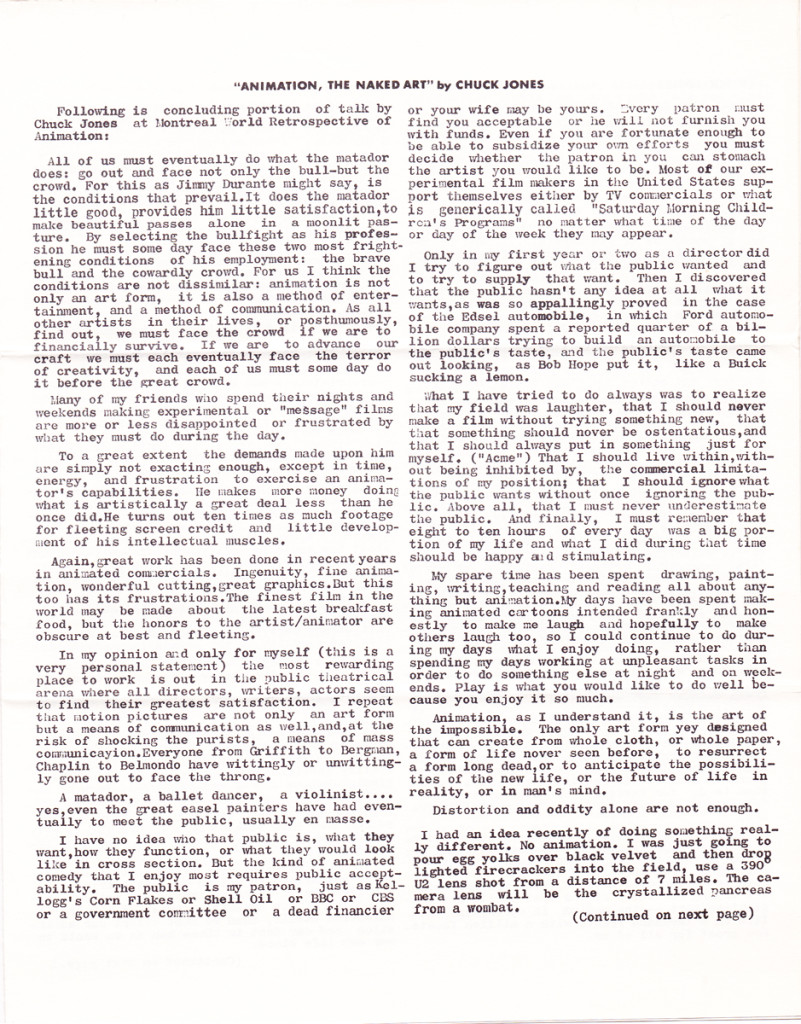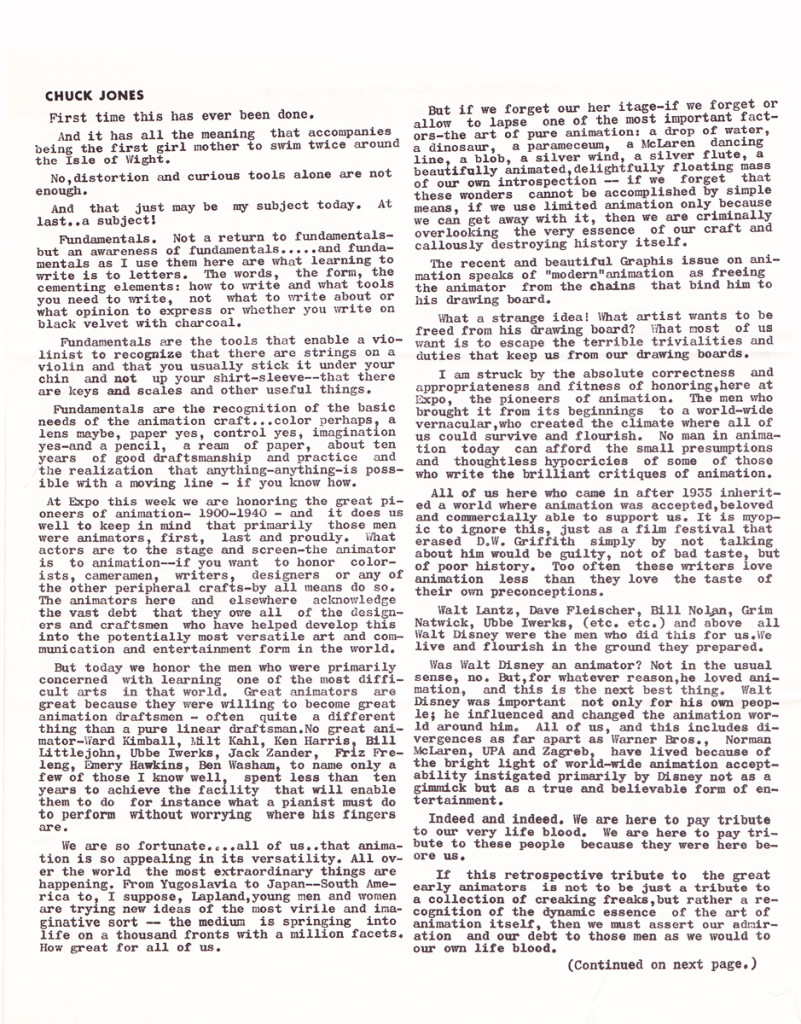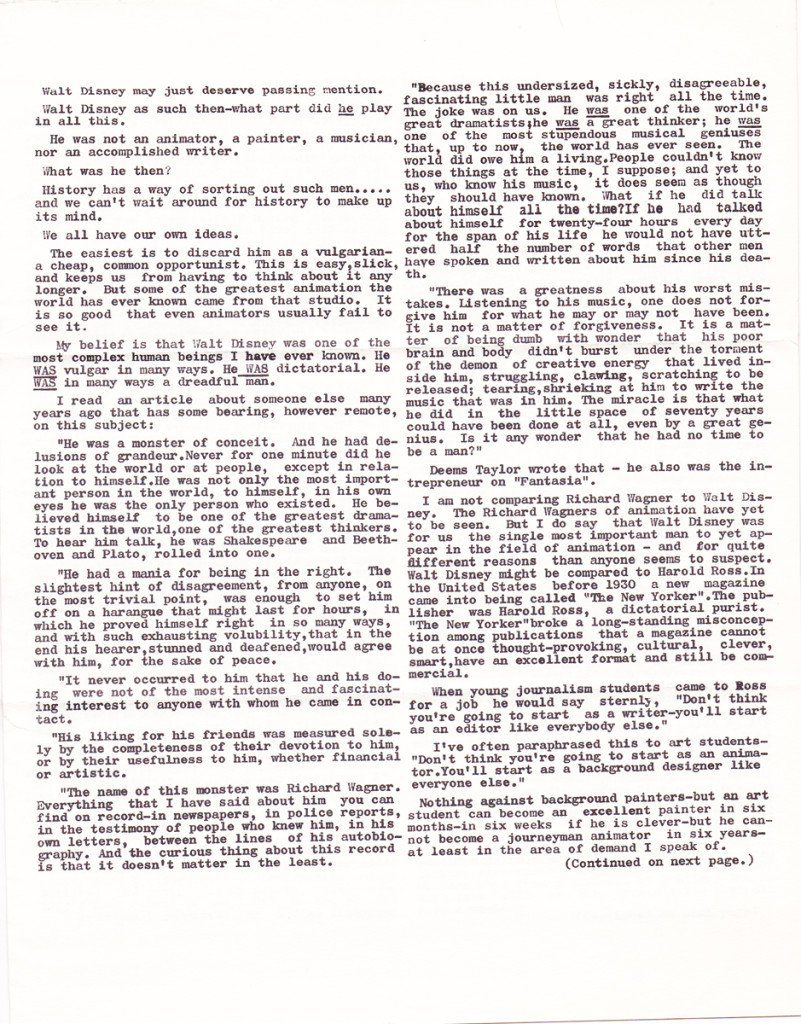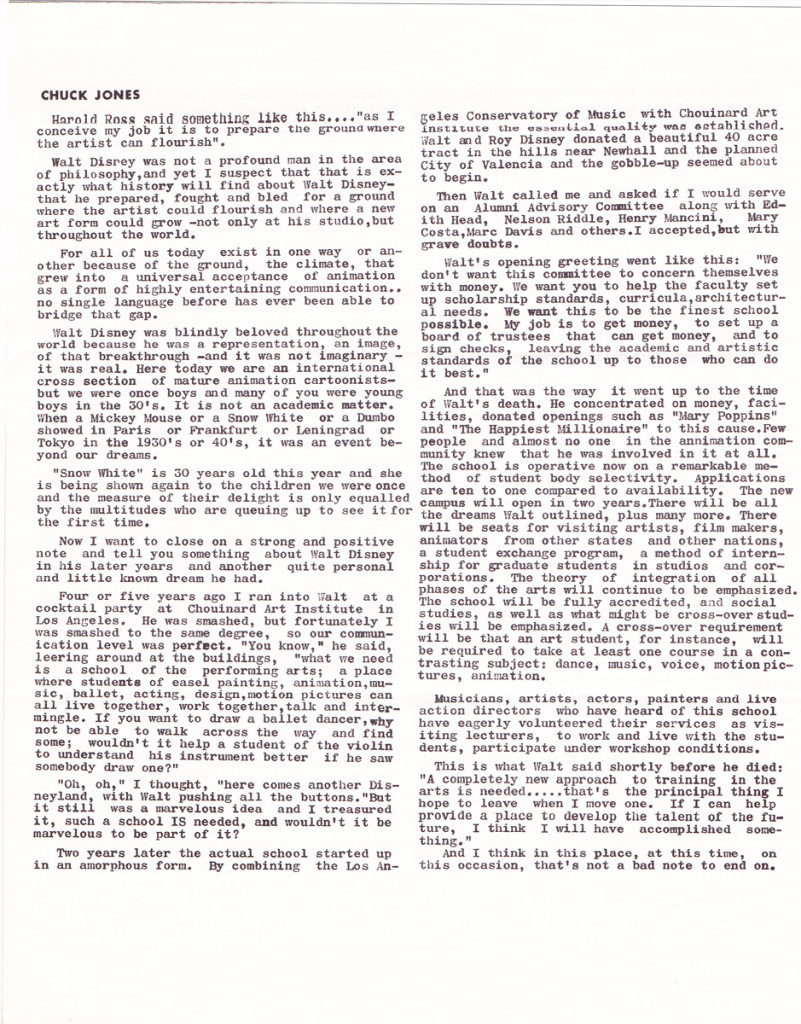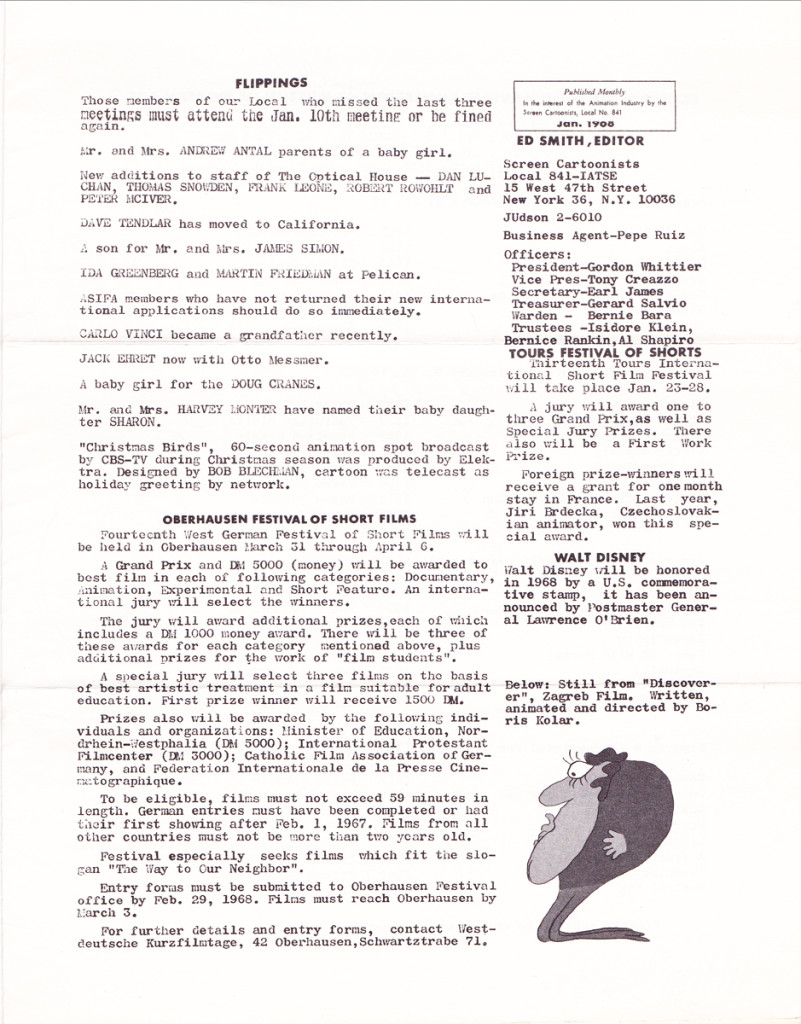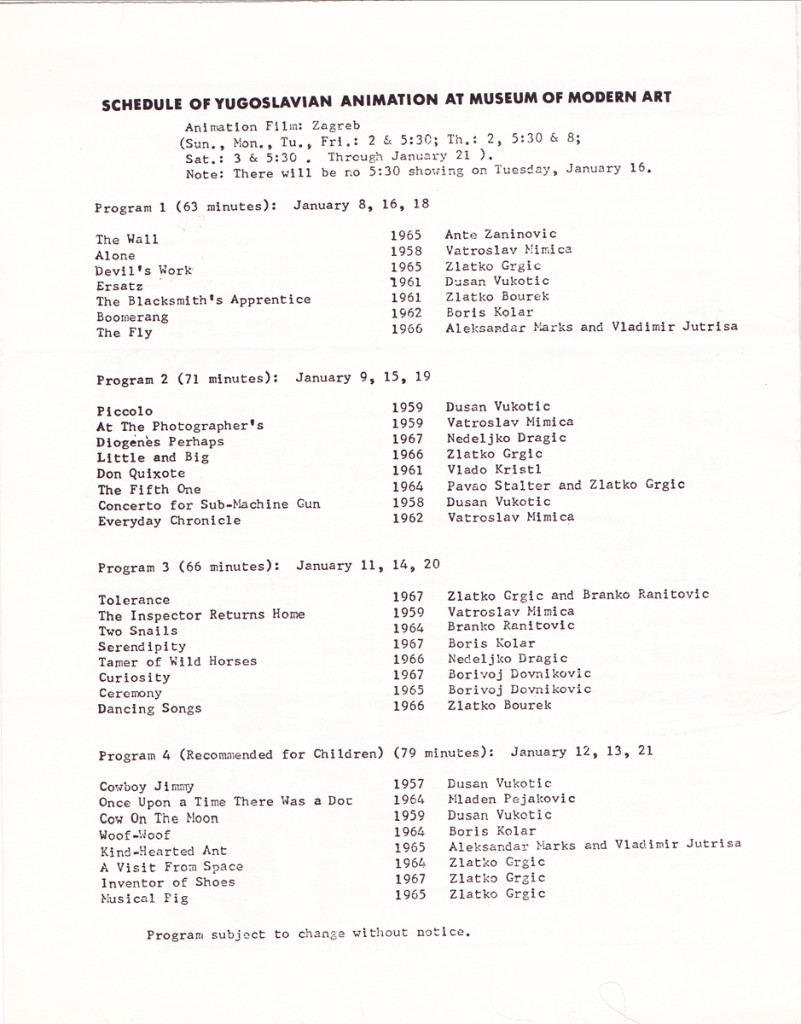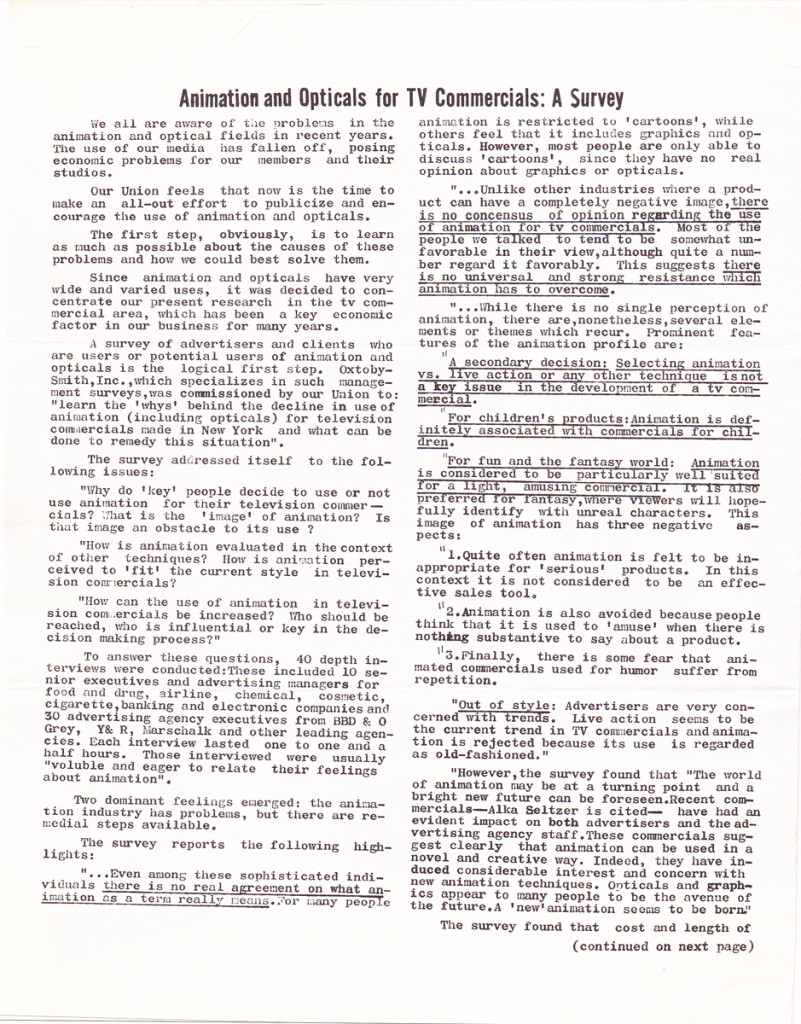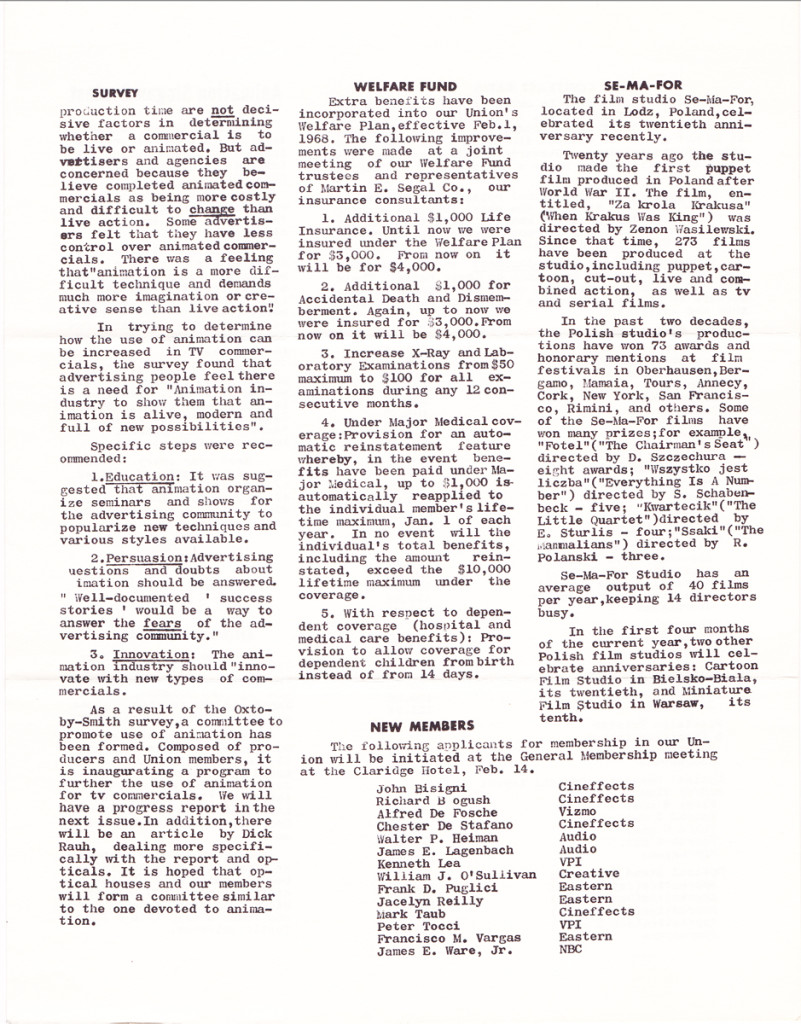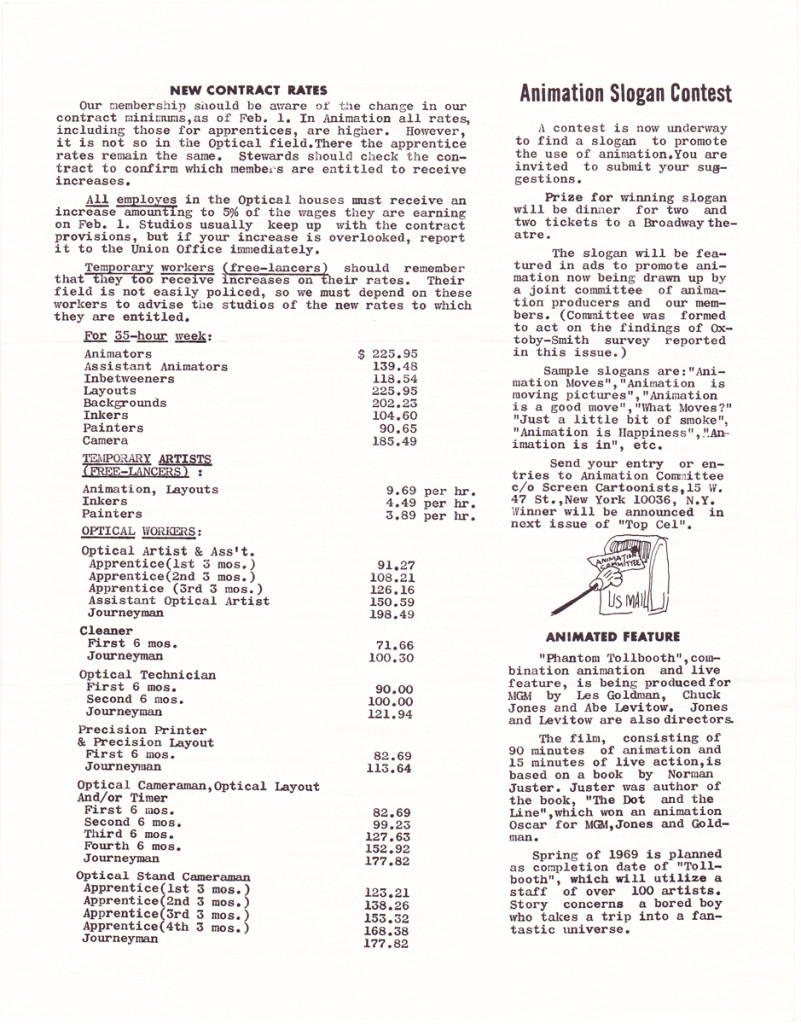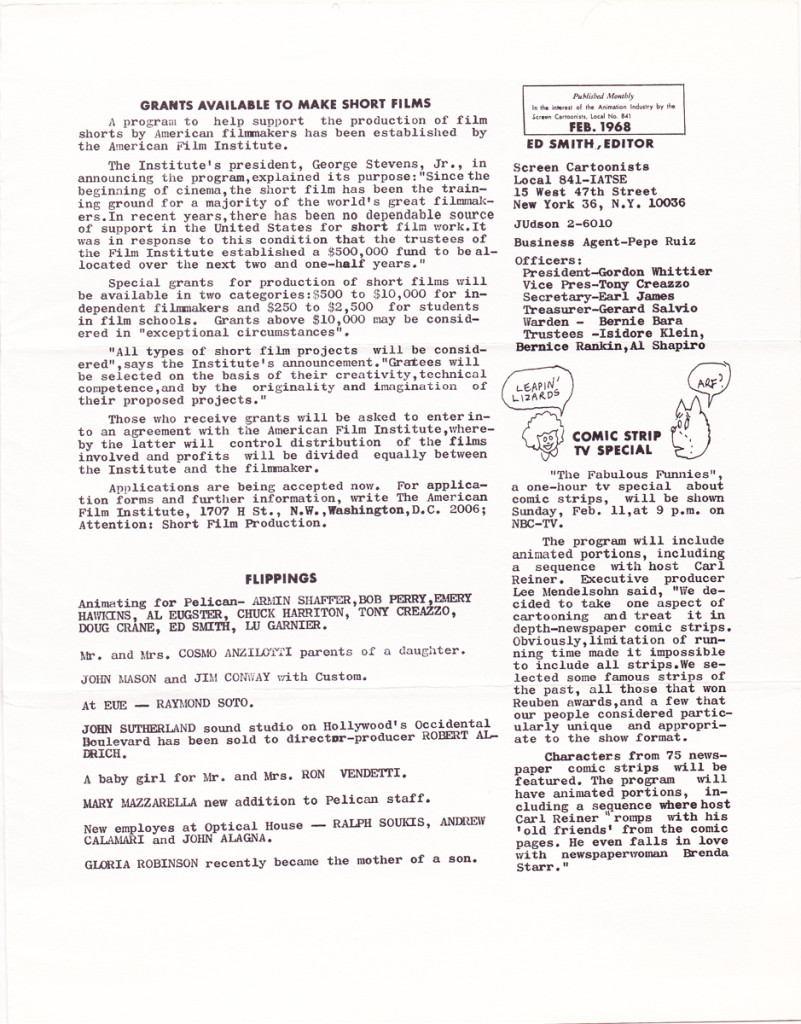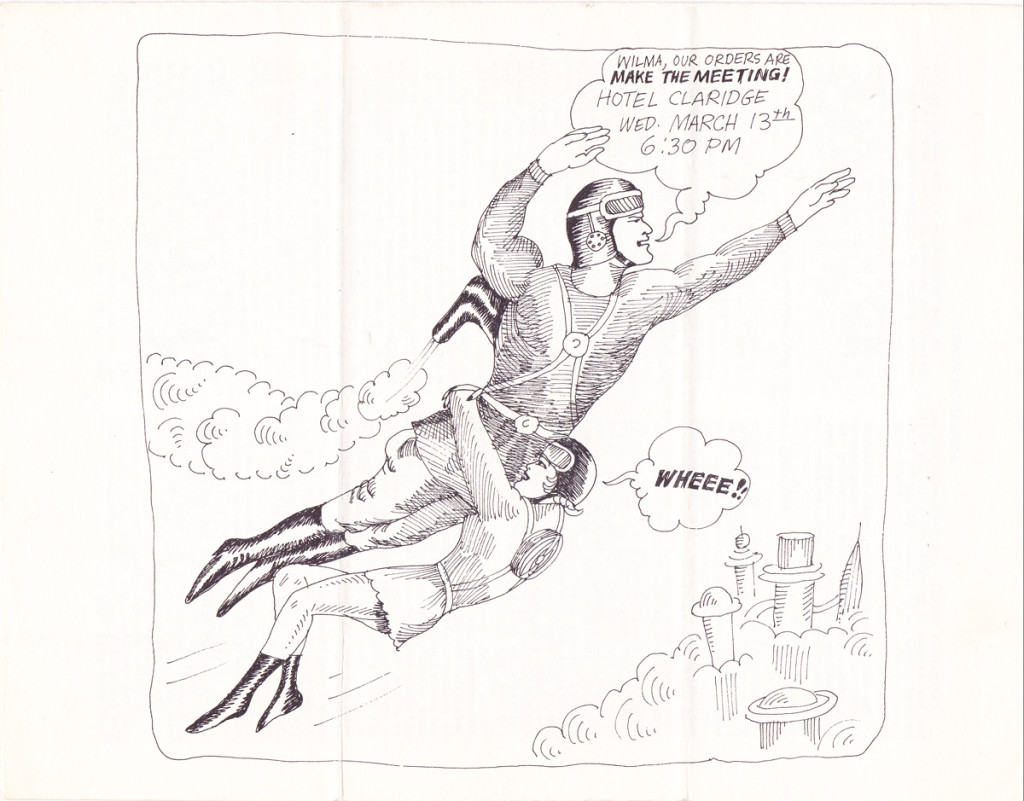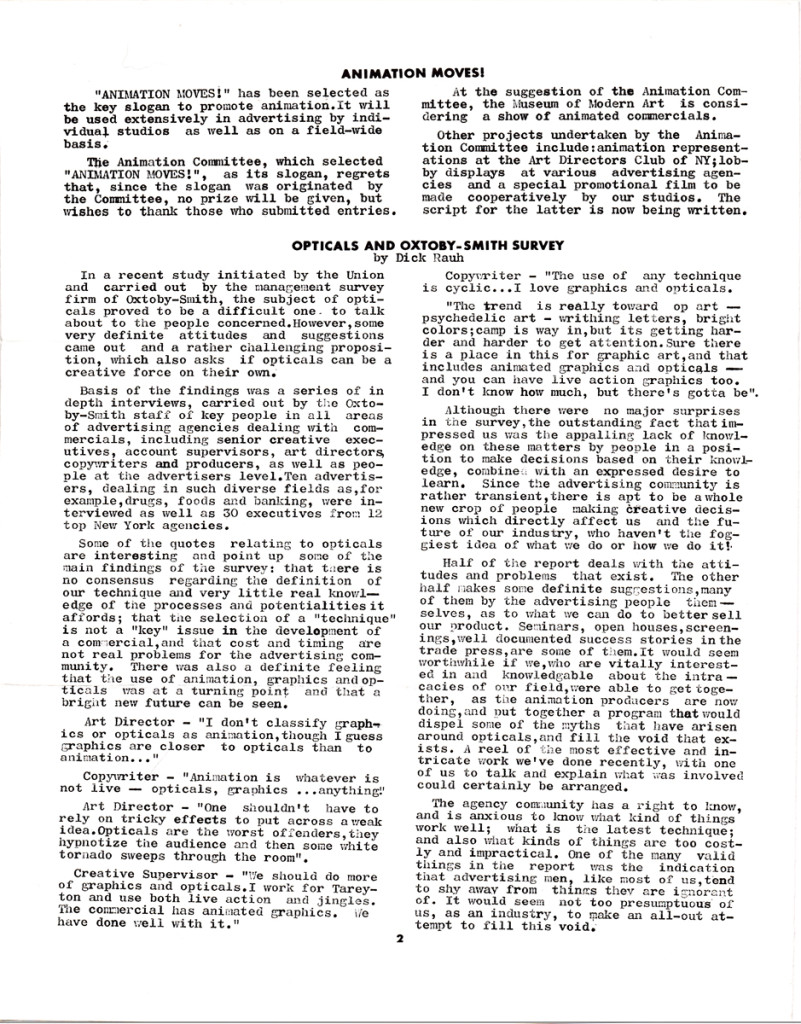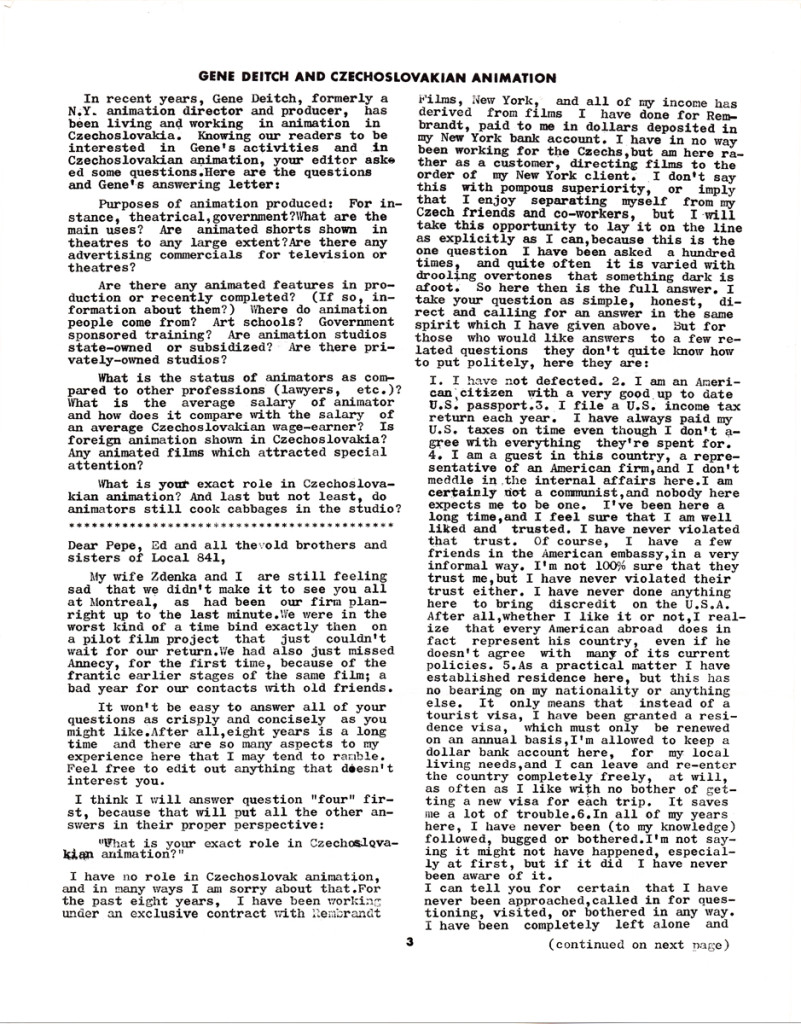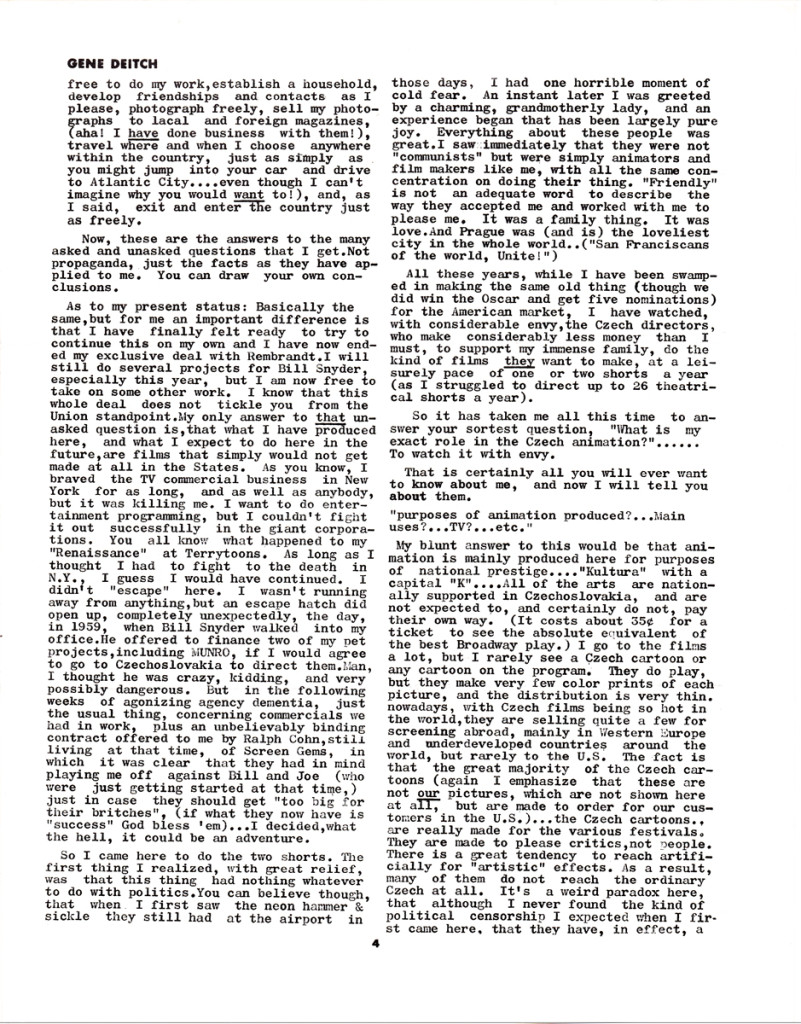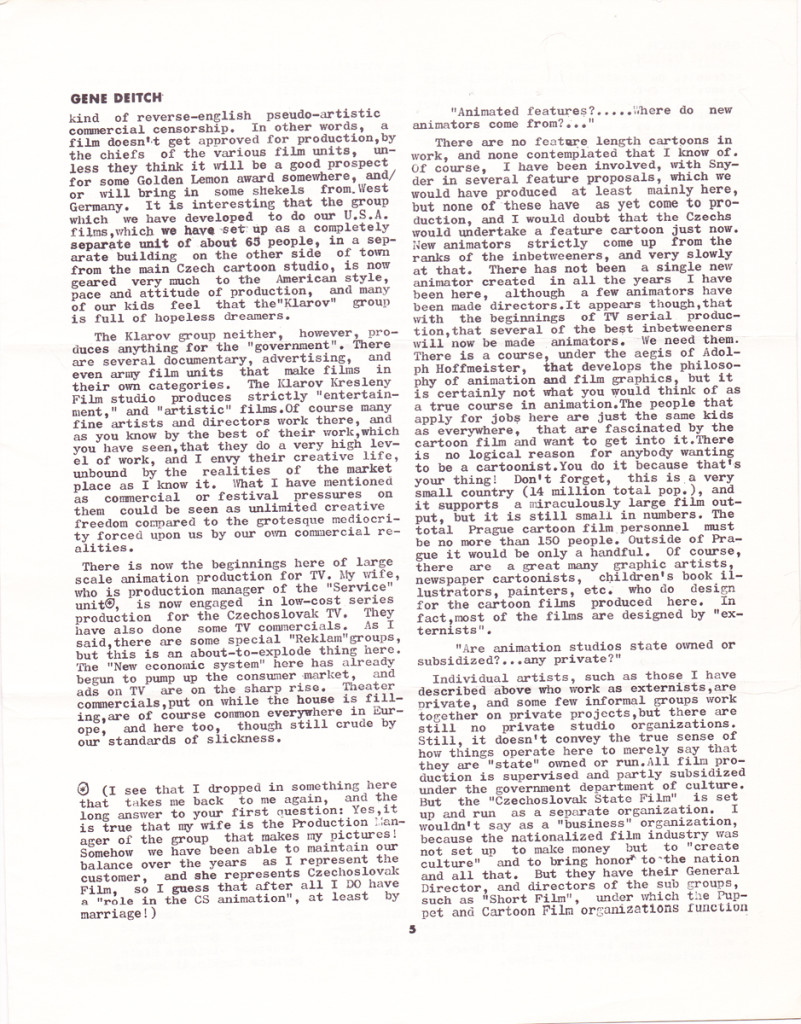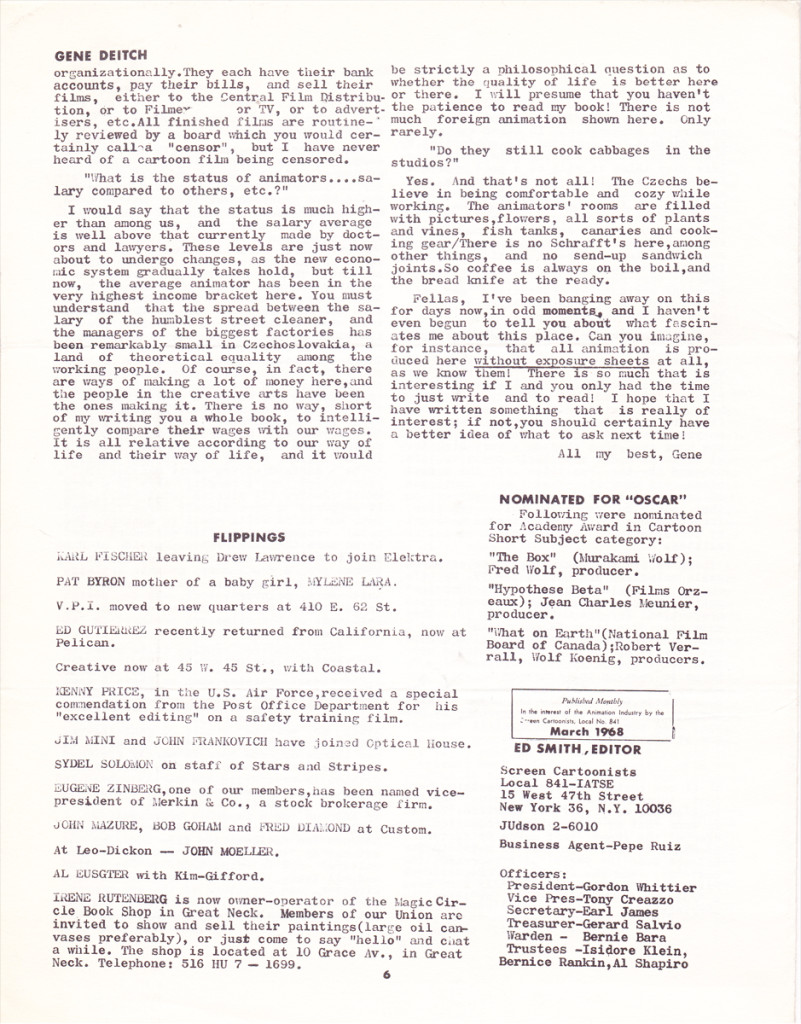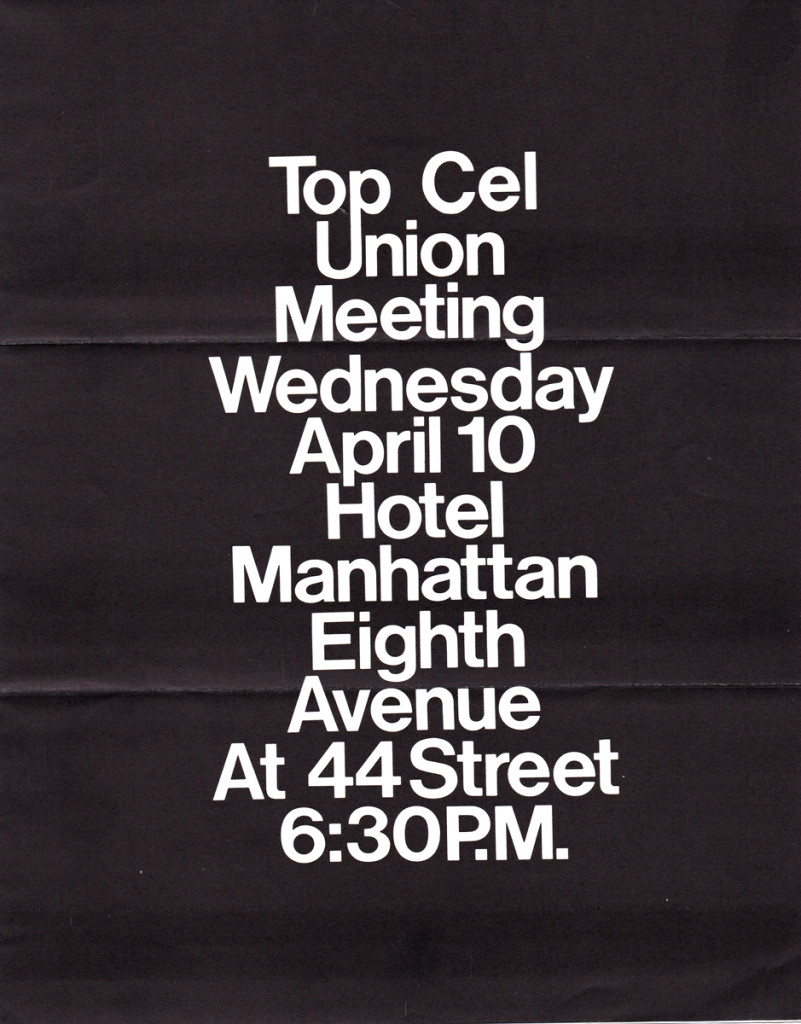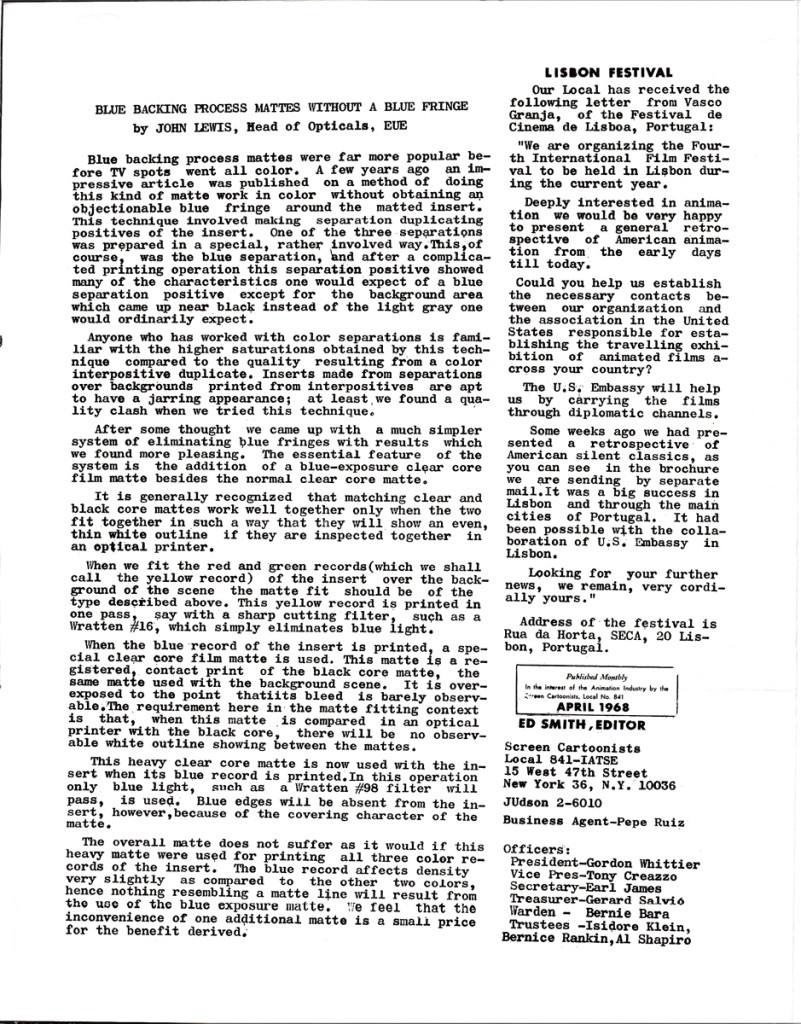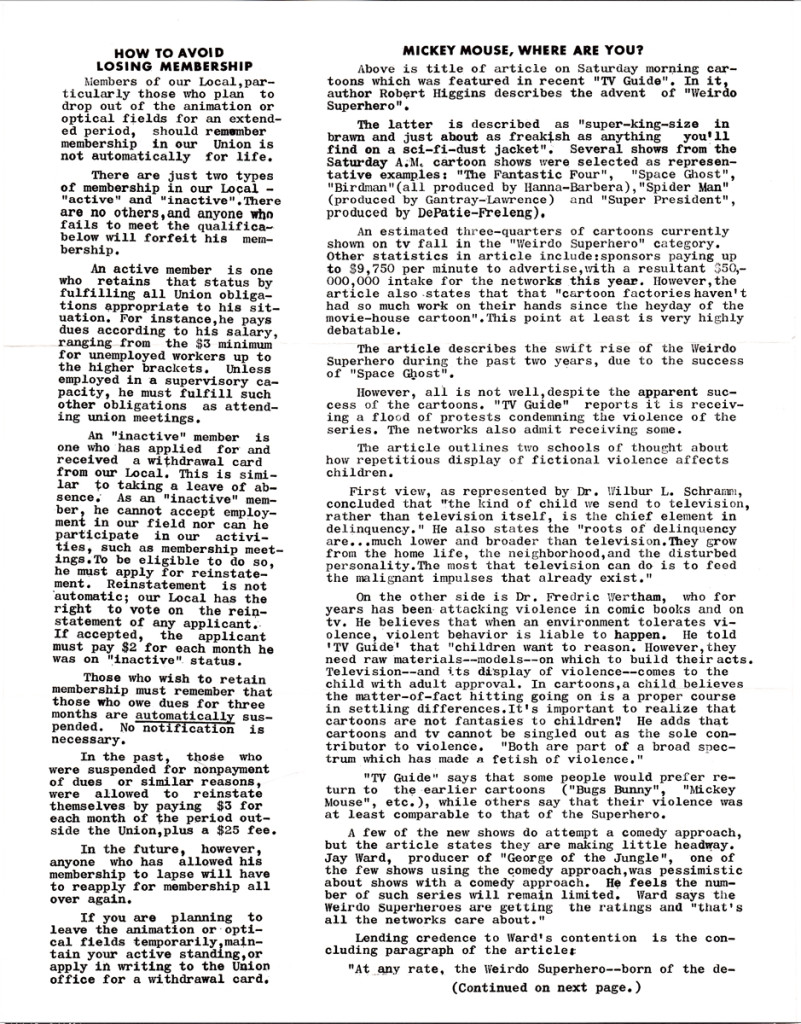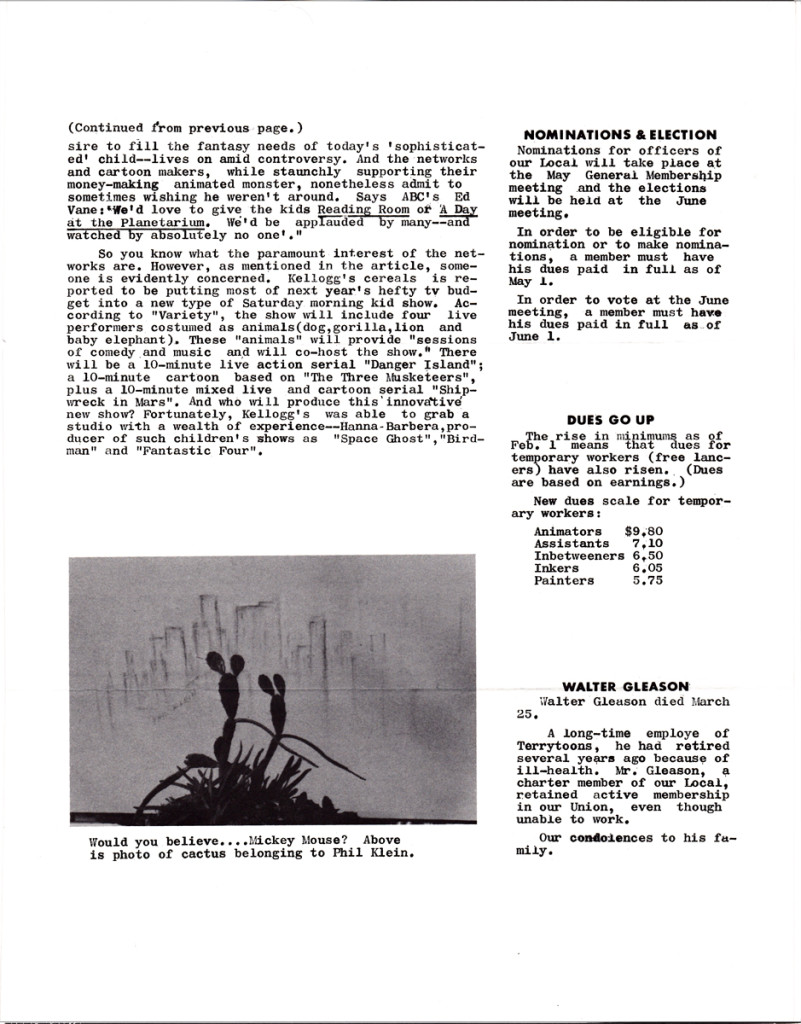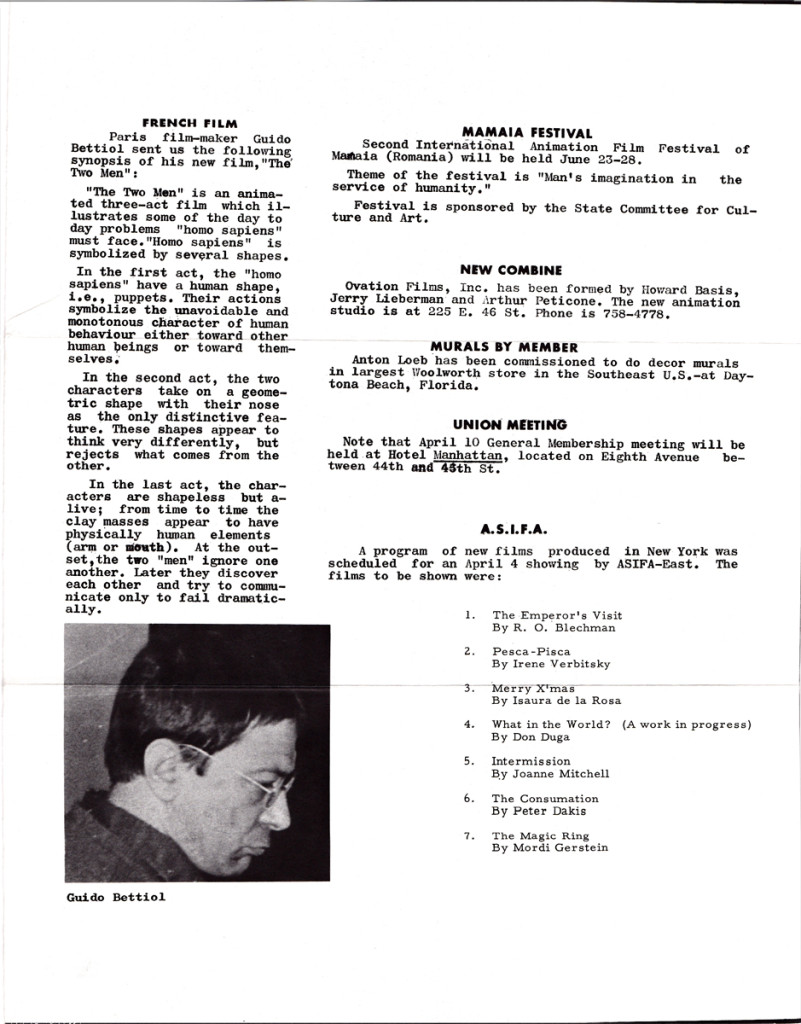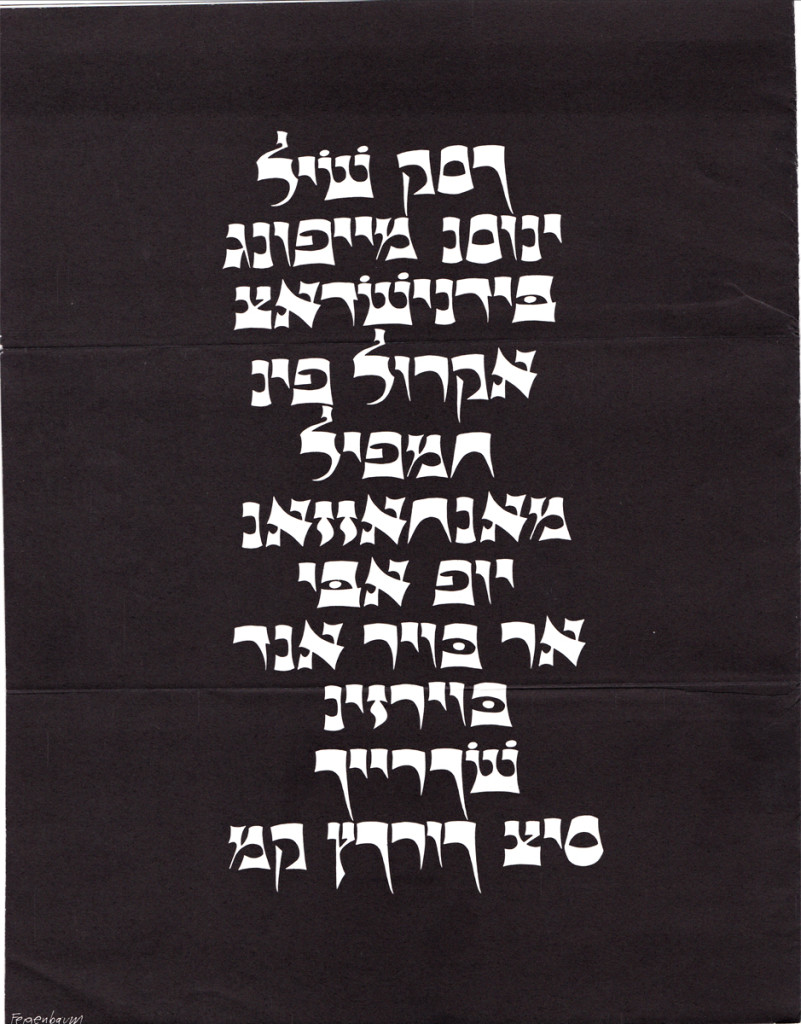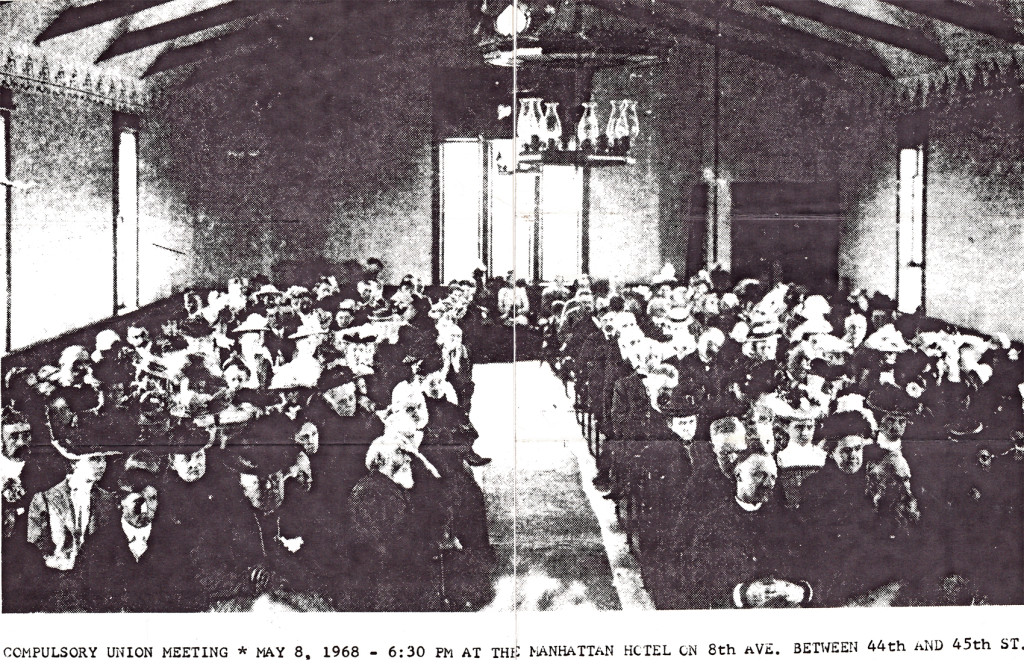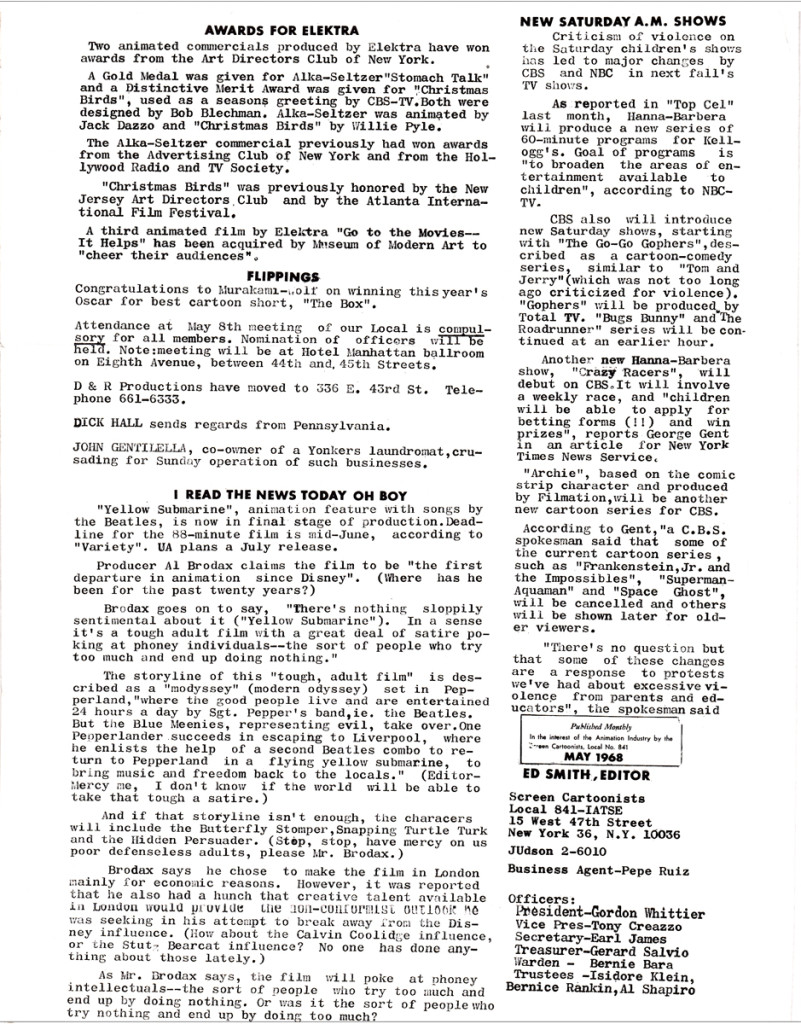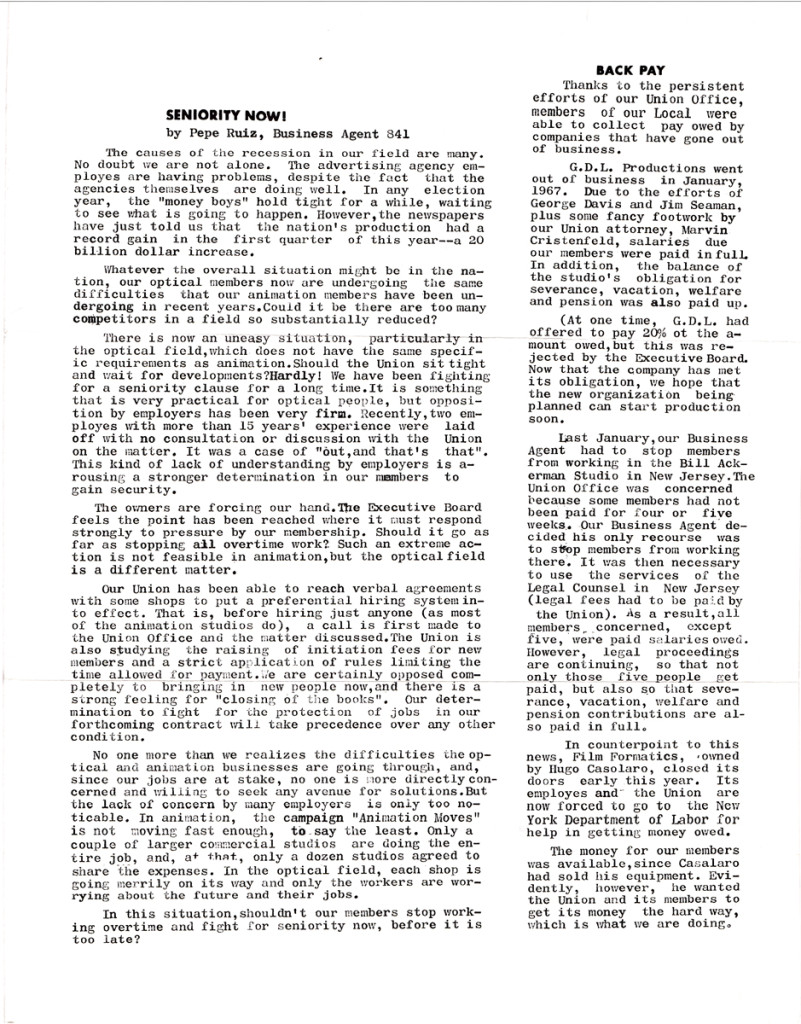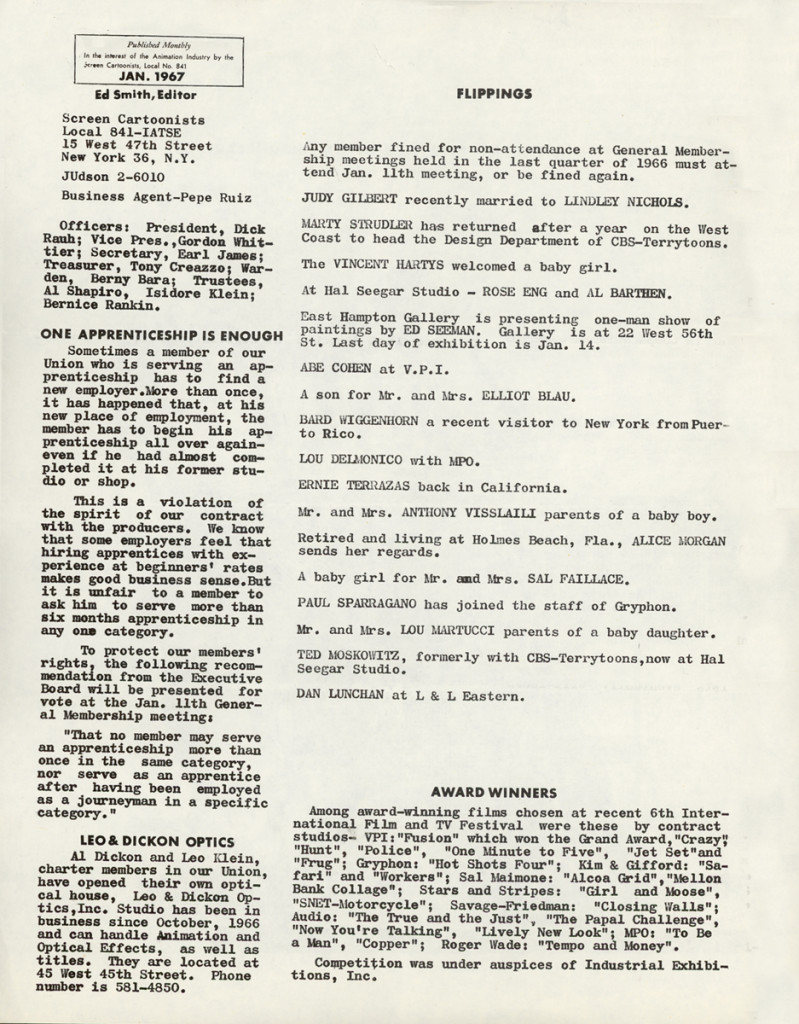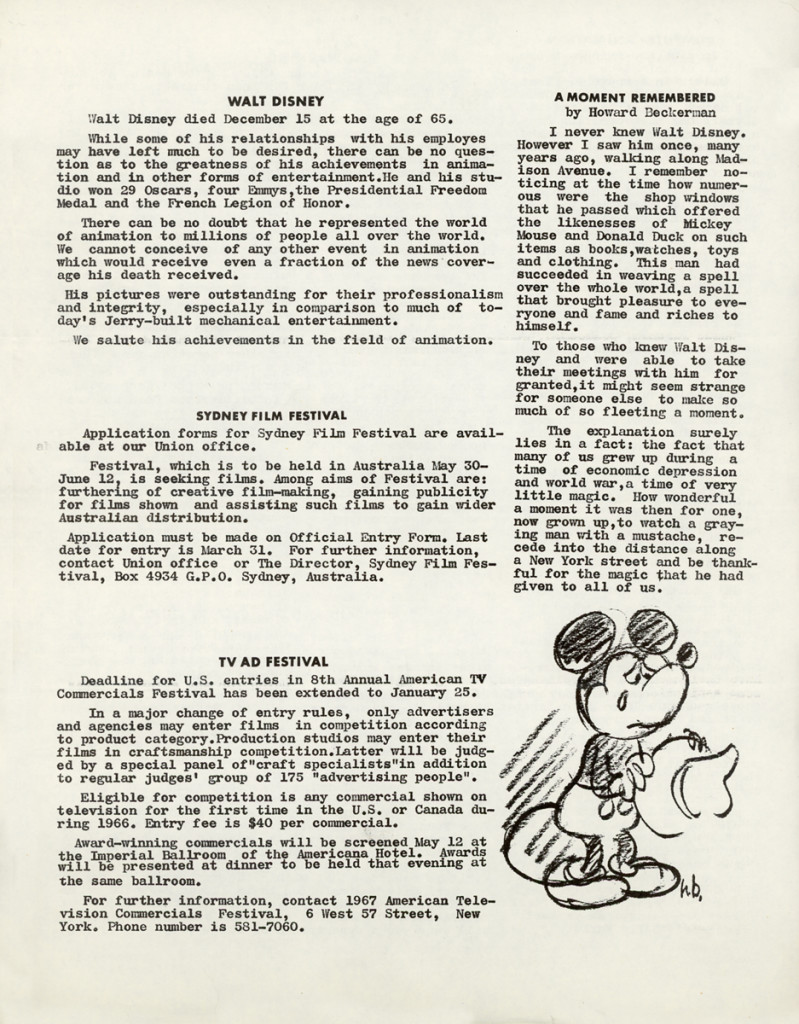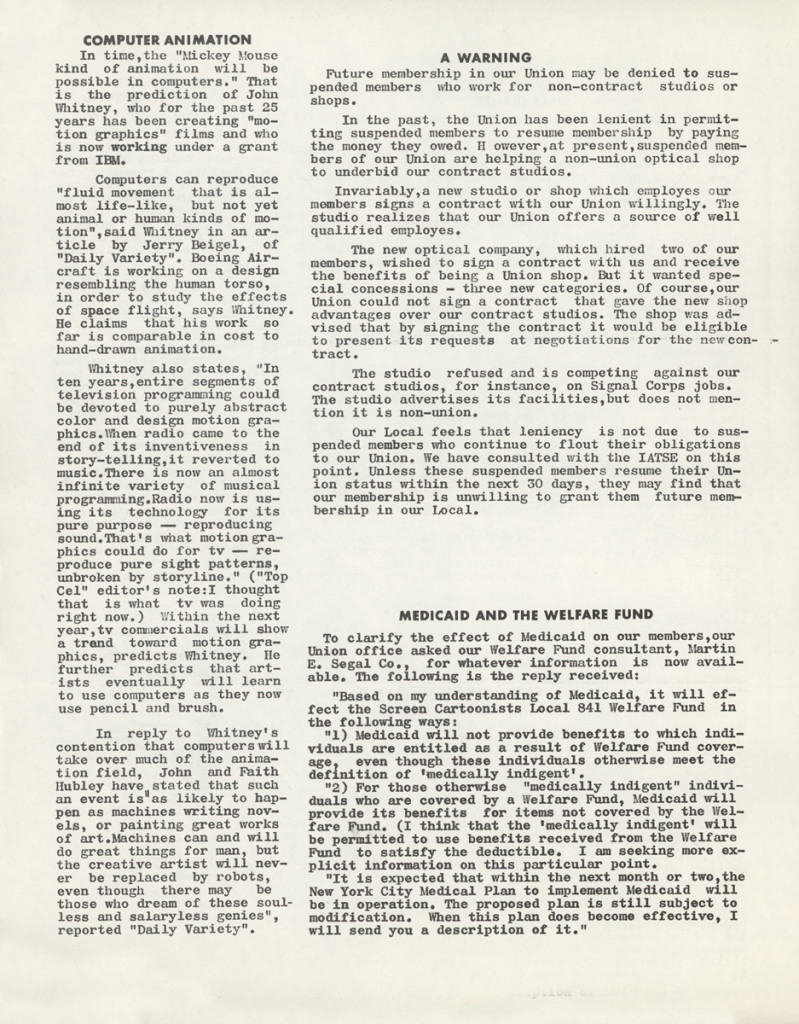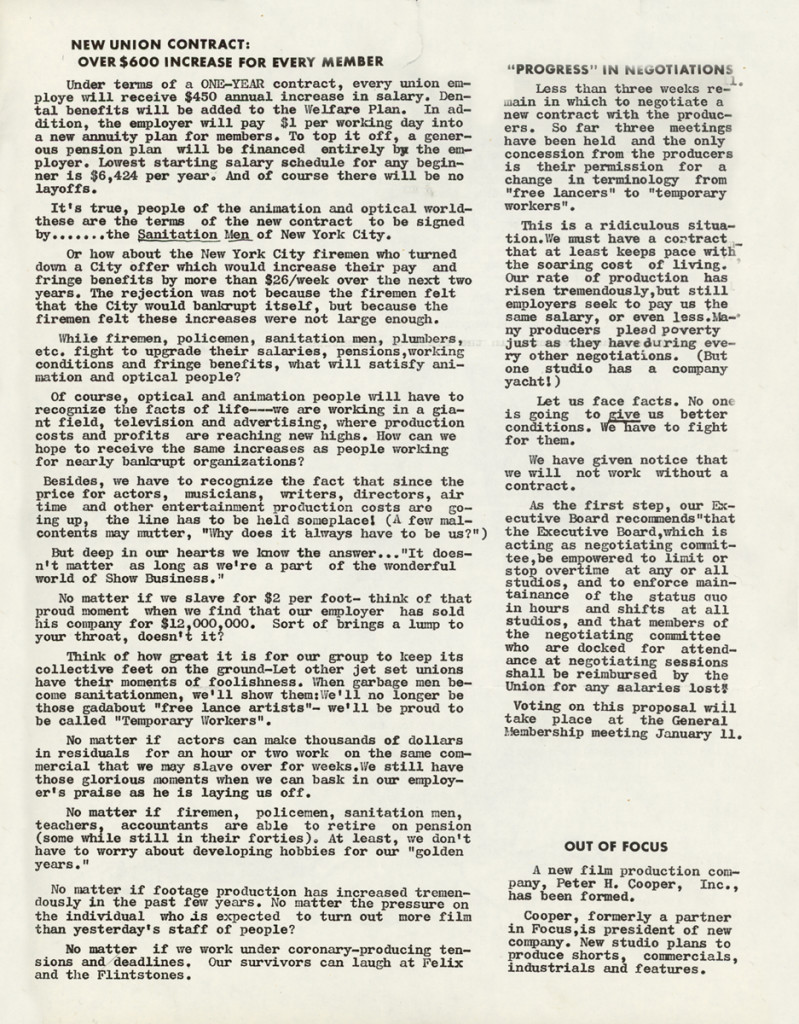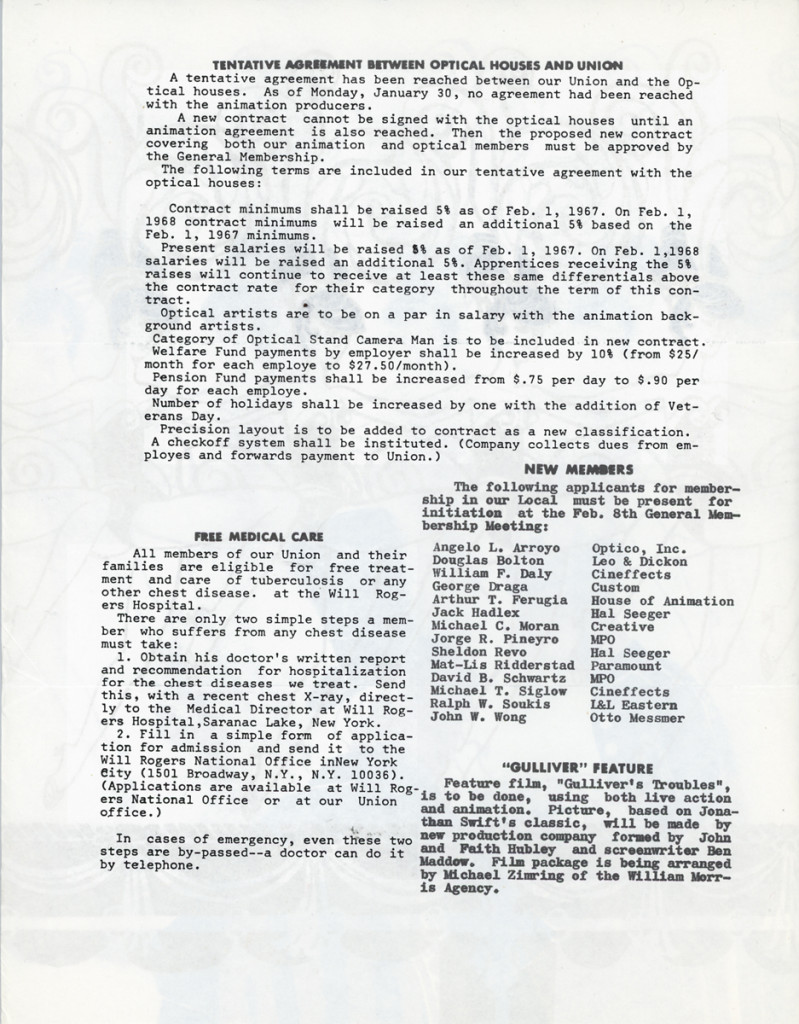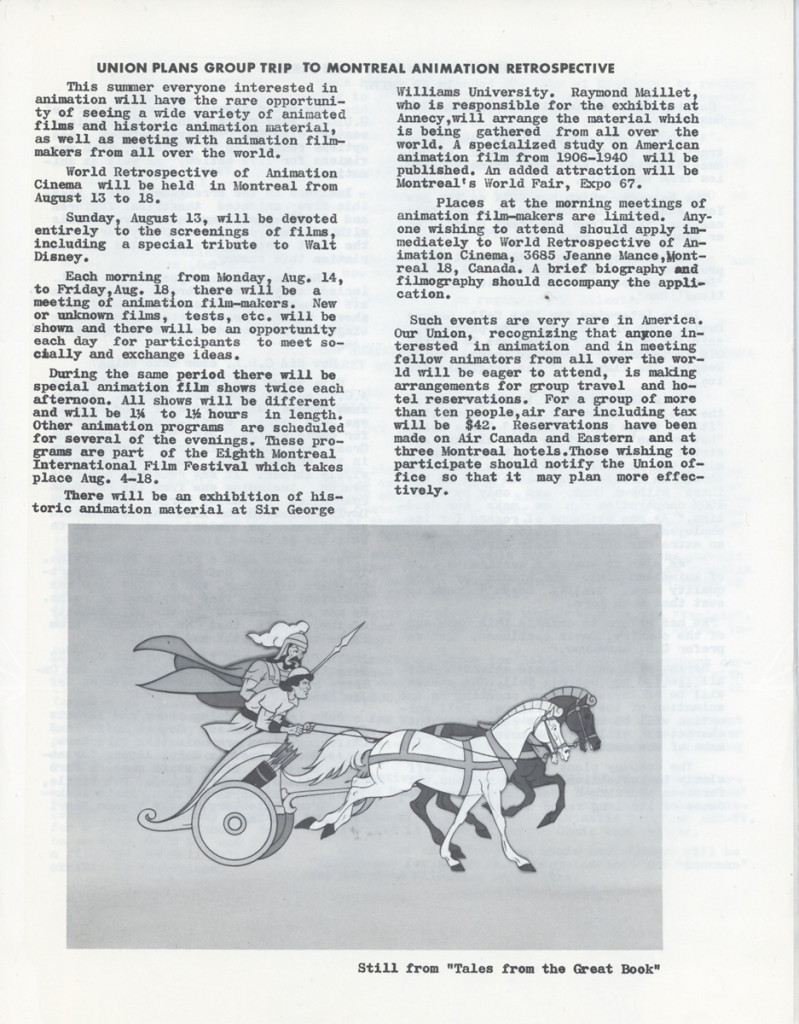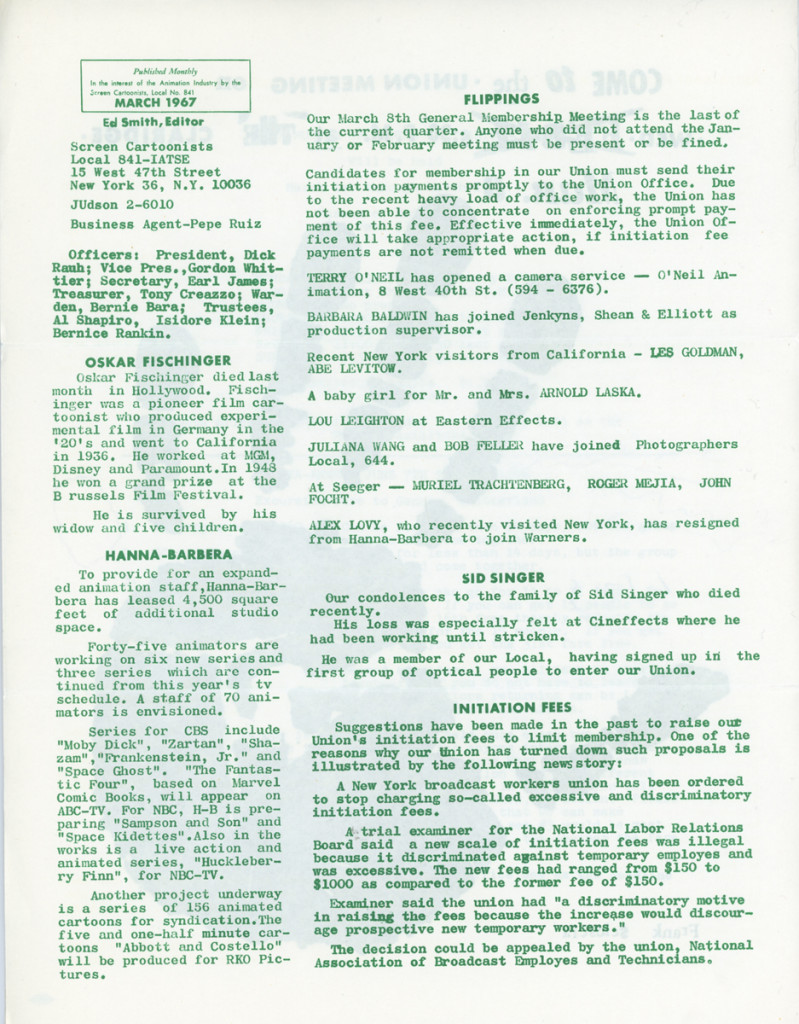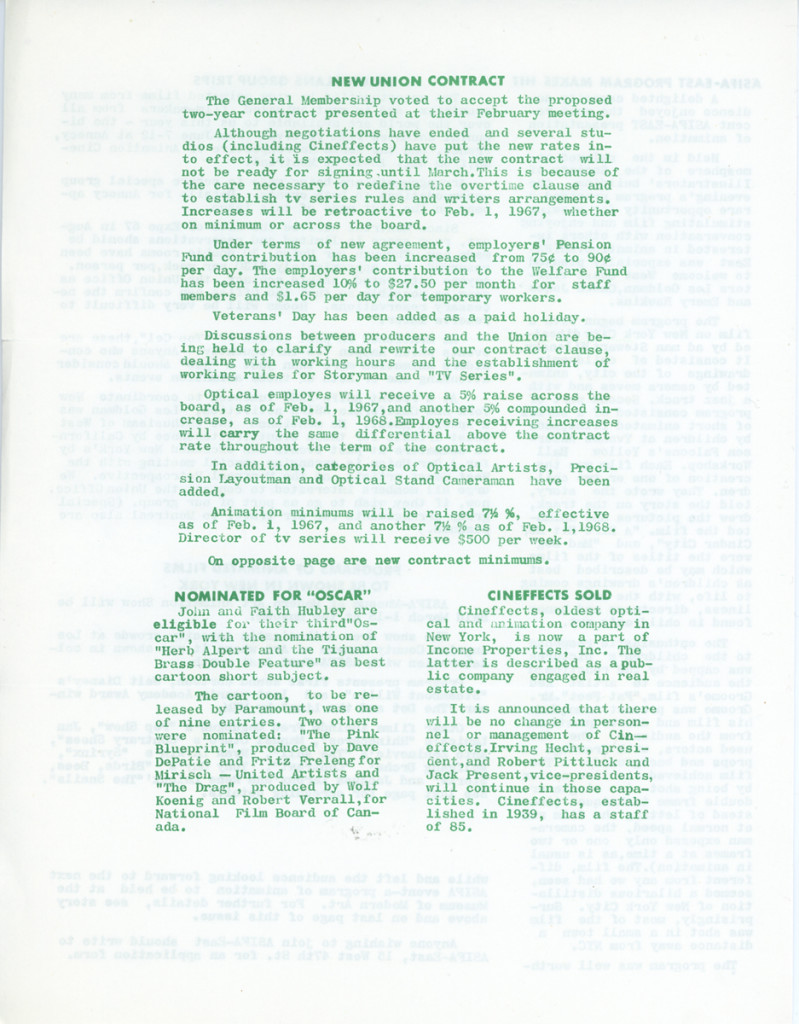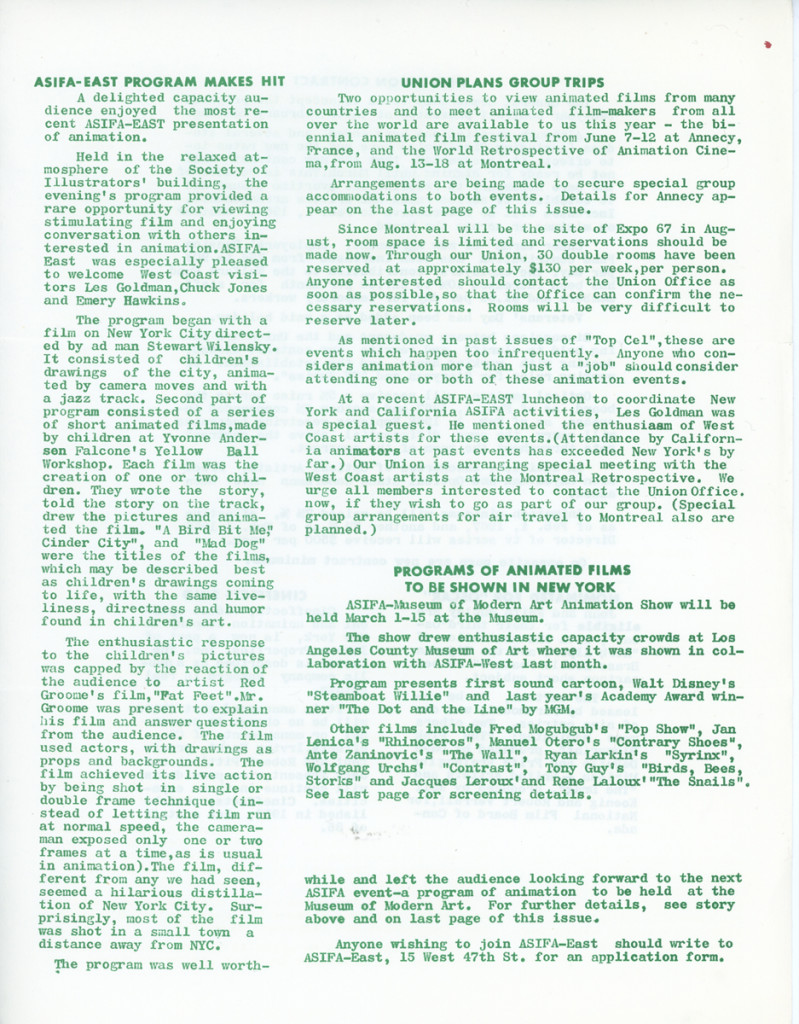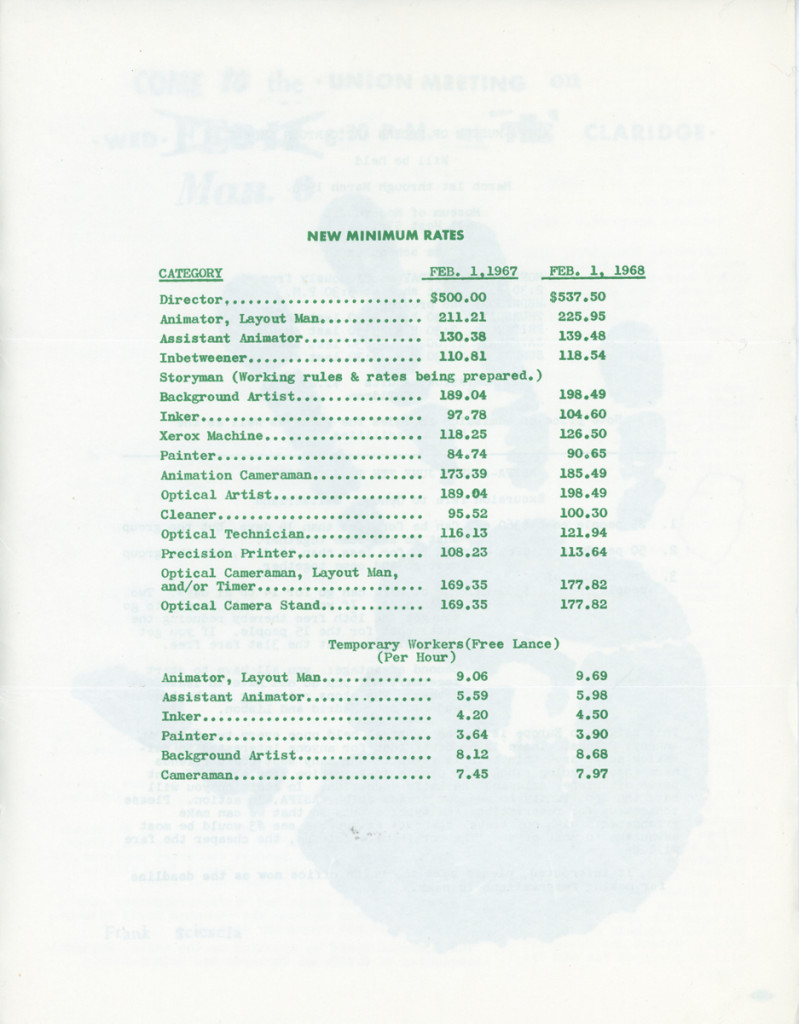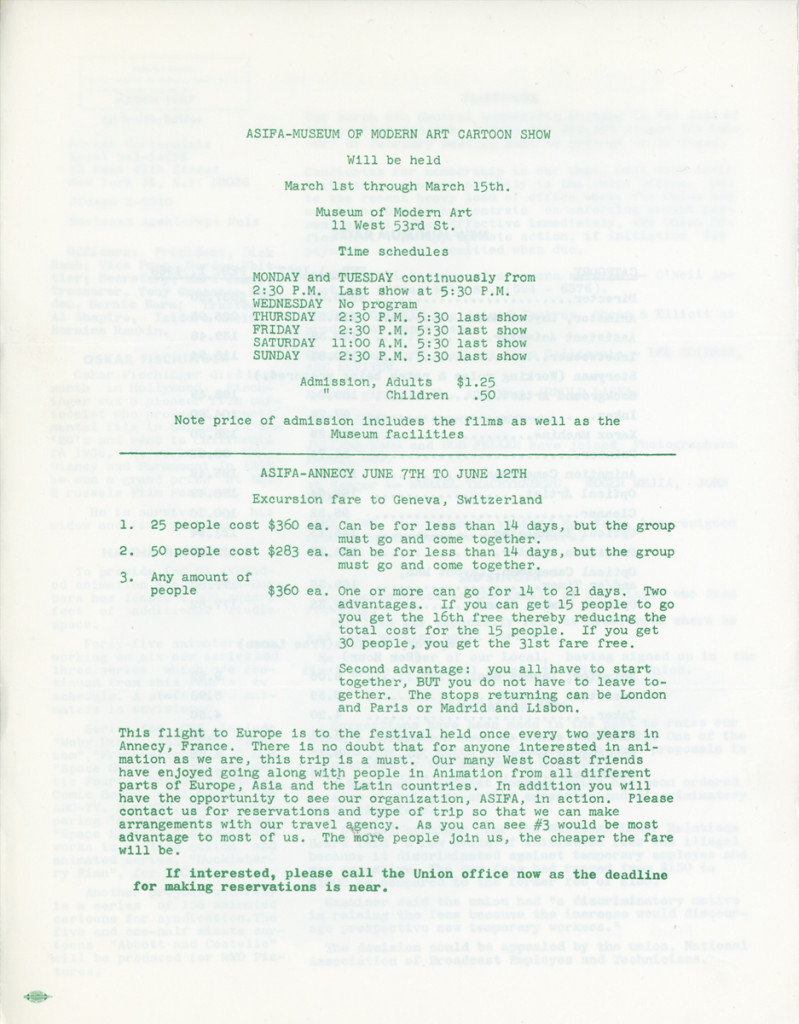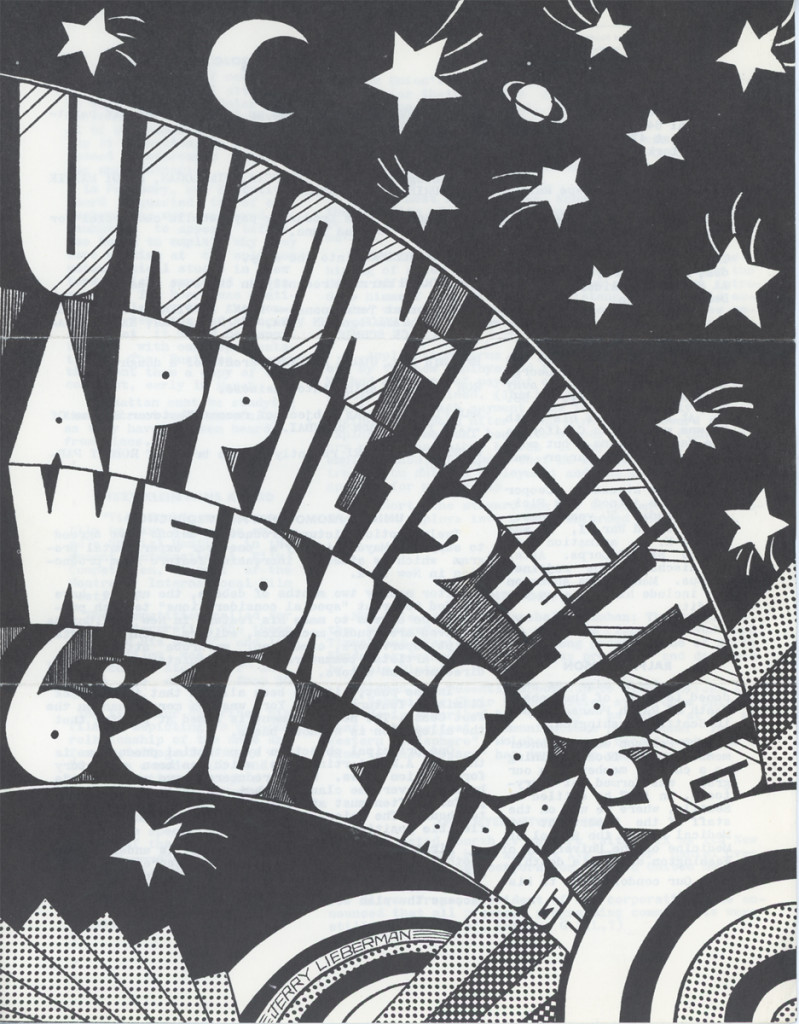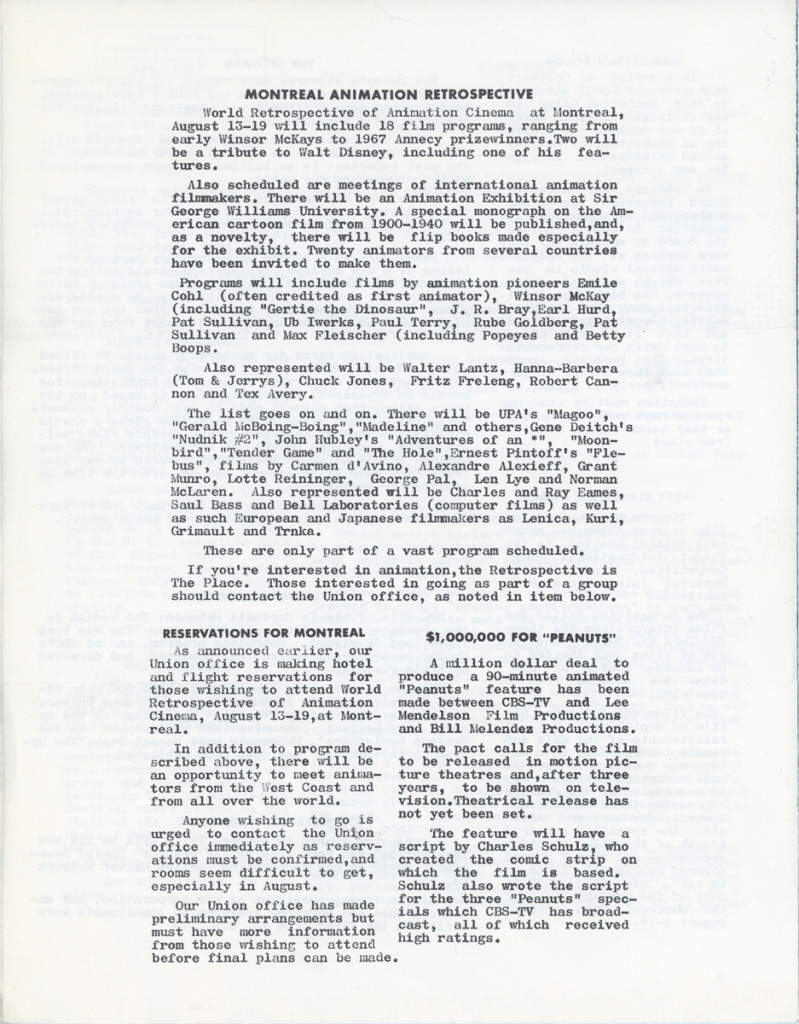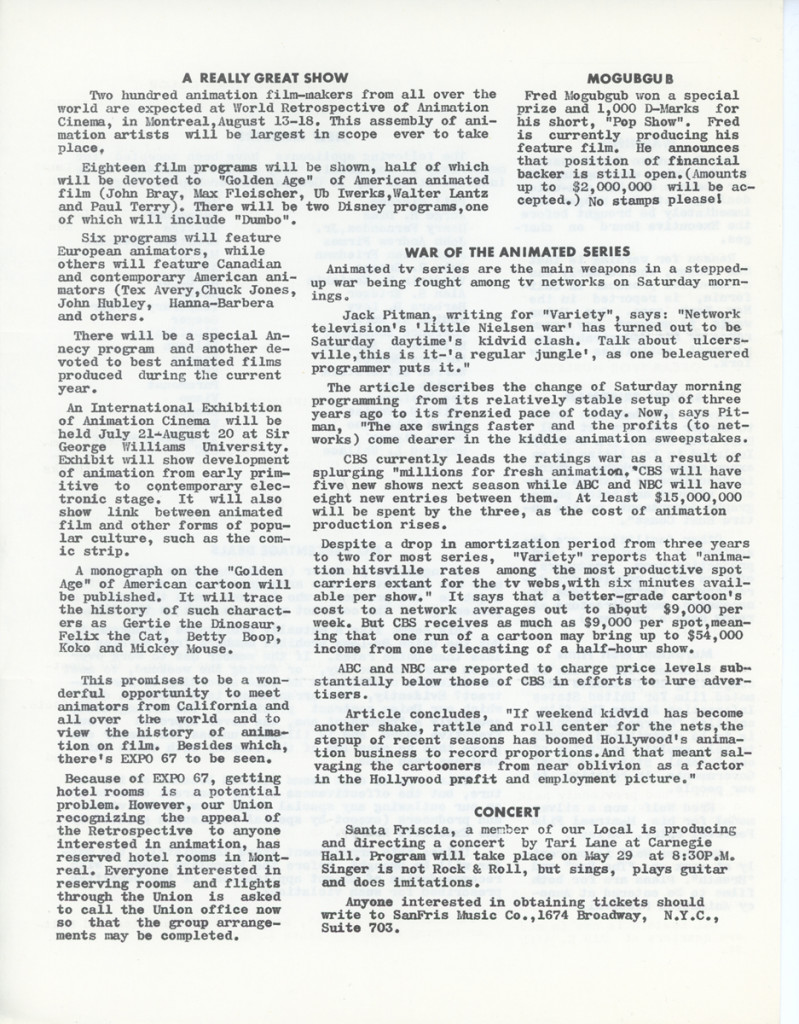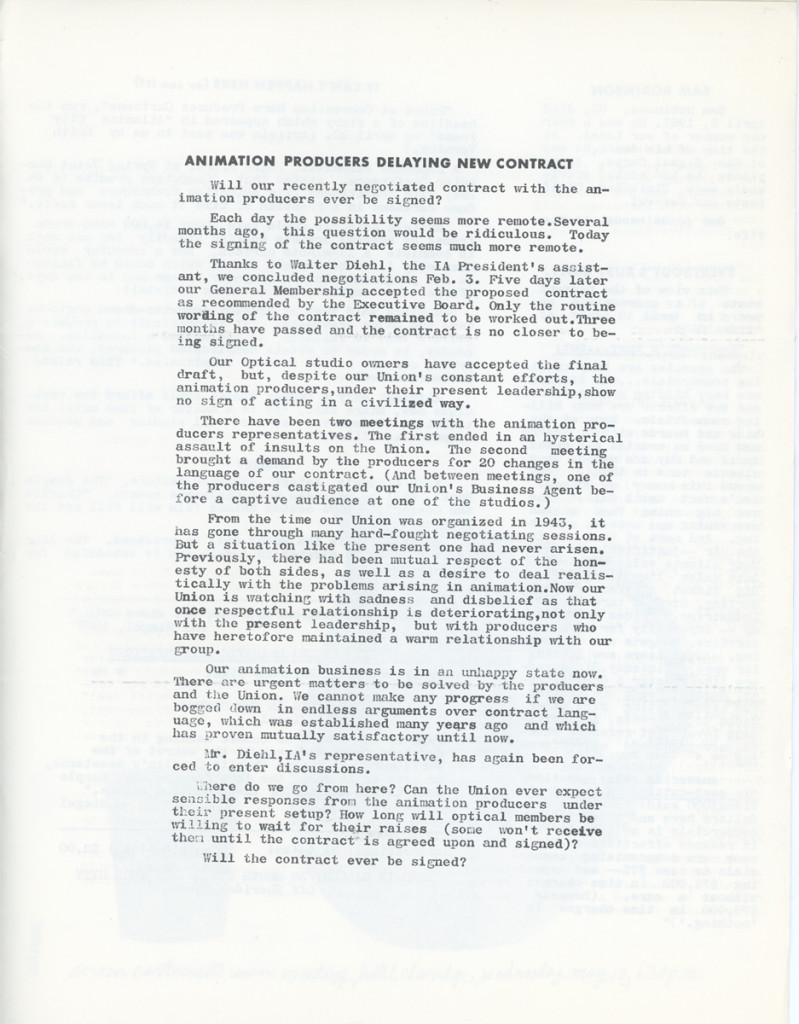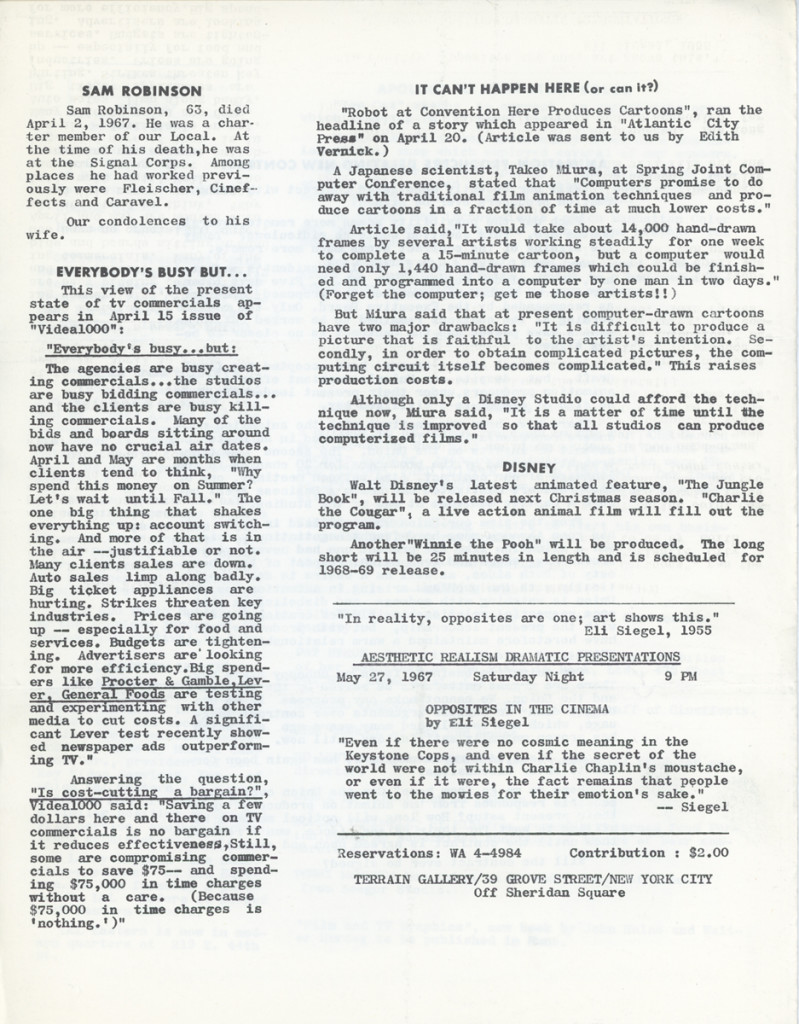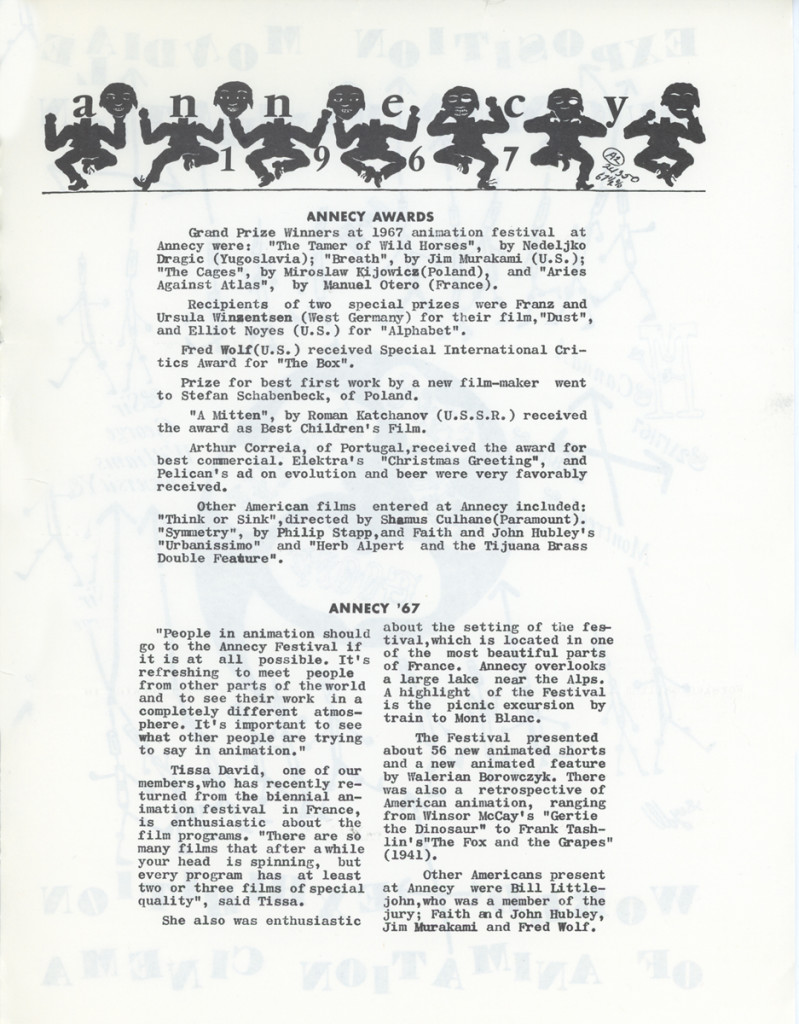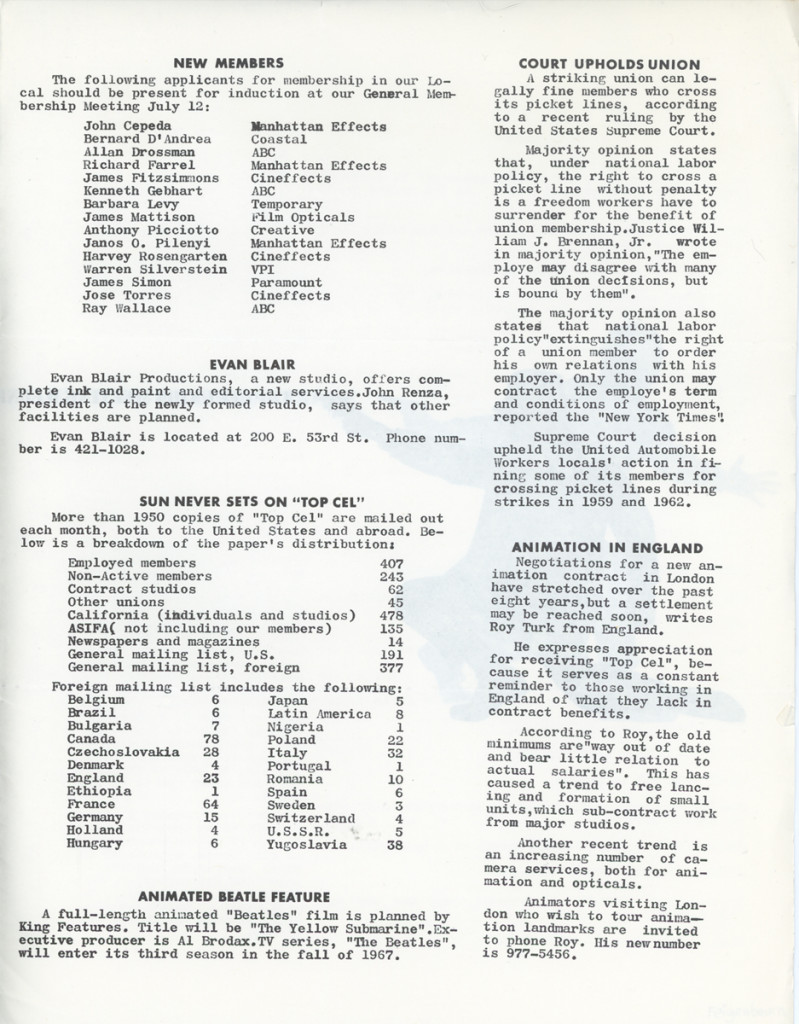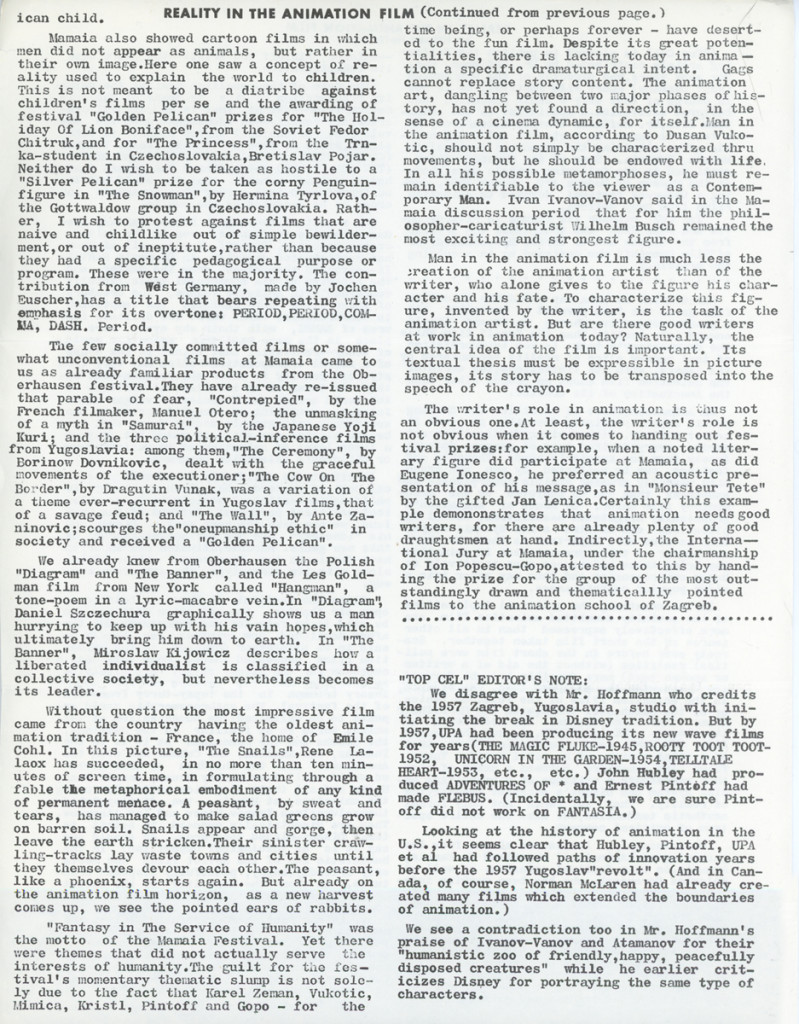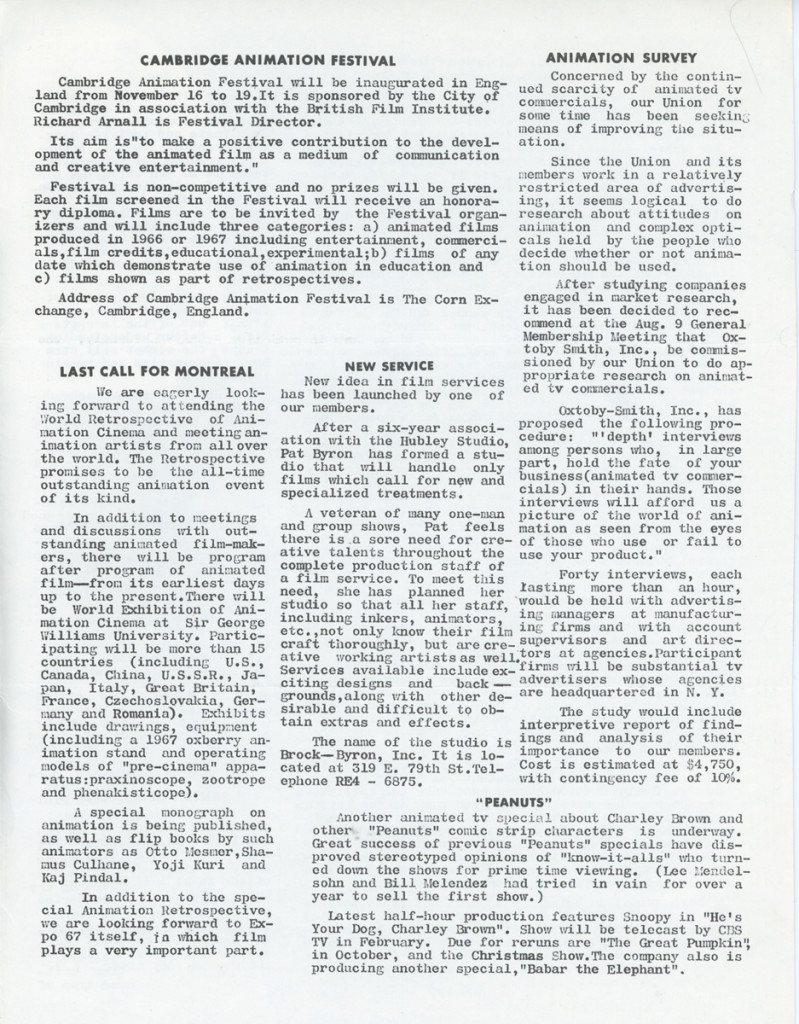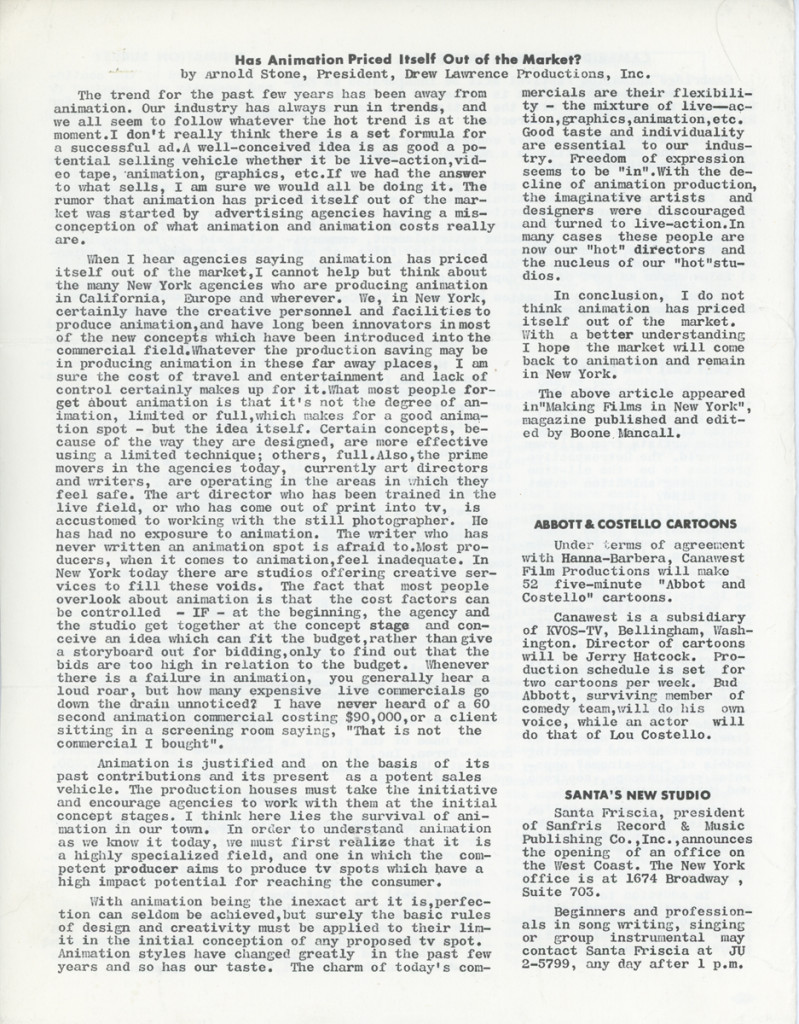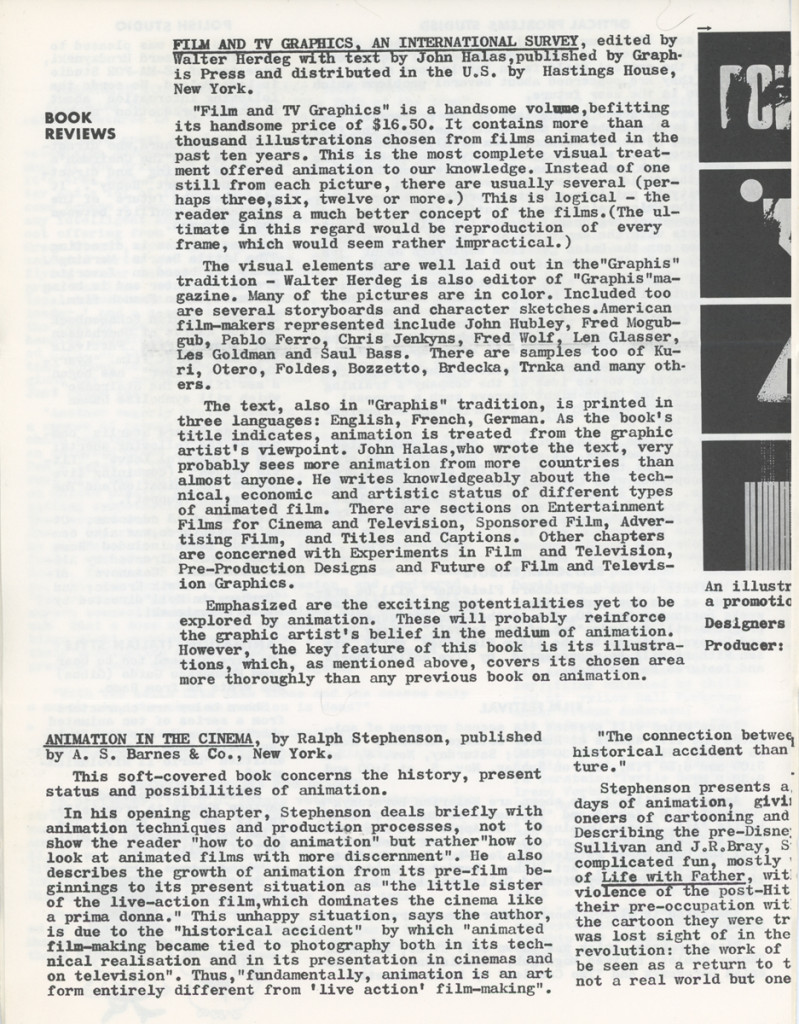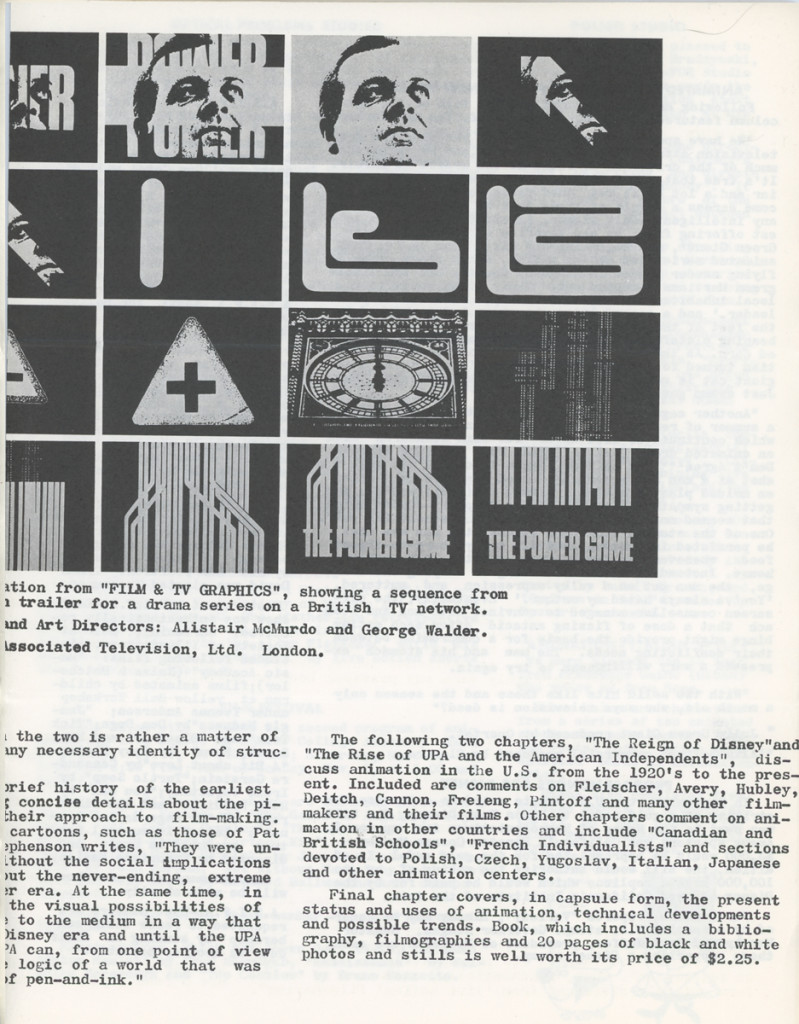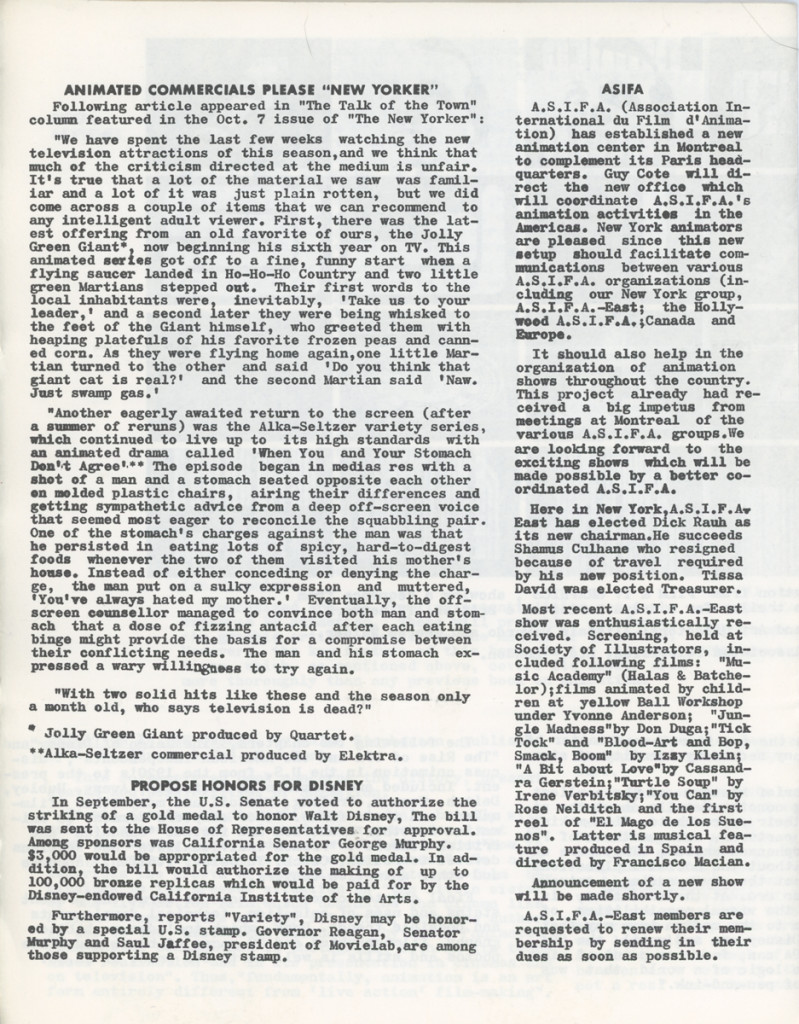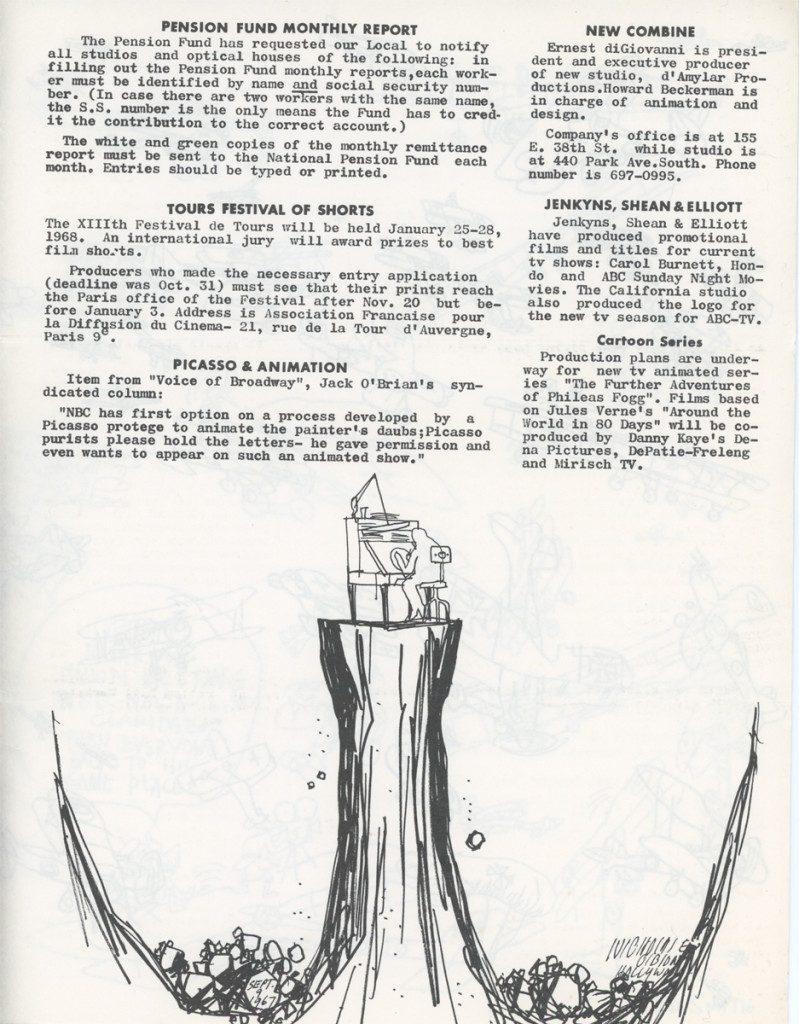Search ResultsFor "cafarelli"
Daily post 13 Nov 2013 01:00 am
Good Will and Great Cartoons
Yesterday’s blog post was something I needed to write for myself.
Animation, as far as I can see hasn’t been going as well as I’d like. The good films have been few and far between.
During my career, I’ve been asked to be involved in a number of fine films. However, it’s the luck of the draw to be involved in good movies, also the power of your own abilities. I can’t tell you how many films, bad films, that have requested my help and participation. Also good films. They’ve been few and farther between, but they’ve been there.
The moment Weston Woods asked me to work on The Man Who Walked Between the Towers I knew this was a good one. It took me about five seconds to read the script and know it was great, and I knew I was working on a winner. There are other films that had the opposite reaction for me, and I was correct there as well.
Yesterday I wrote about a film I was asked to participate in. I knew the very second I saw the project that it would make a great film. None of the story stuff I wrote about – 60,000 flyer pilots (just a metaphor) coming to the rescue – was actually in the film. But the result is the same. The film is a feel good moment, and I know it will make a very good film. Even, god help me, if I’m not allowed to be part of it. It’s a good movie with a good story line. I just hope I am part of it, because I like it enormously.
-
My point, here, is this. Please allow me the use of Miyazaki for my example. The man is a good = no, take that back, a great filmmaker. He not only knows a good film, but he knows how to make them better. The films ha makes become automatically better. He has something to say; he finds curious and complicated ways of telling those stories, and when he is part of a project he gets the most of the story.
He knew he had to make it a children’s film with the simplest of story directions. He had to reach the largest possible audience and be direct. He was, and the film he made was an unmitigated success.
With The Wind Rises he has made an adult film it’s the only way he could tell this tale. He also complicates the structure of the story, and despite the fact that he will not get the largest possible audience, he wants to be sure every aspect of the complicated story is told. This he does. He ignores a large section of the audience for the sake of making a richer story.
His work on the two films, in my mind, can only be seen as the work of a genius. His story is as full as it can ever become, yet he disappoints a small part of the audience searching for the obvious. I can only credit the man, the artist. I also take away very deep lessons about his artistry and what he wanted to do with it. I’ve seen Ponyo half a dozen times with full joy. With The Wind Rises, occurring post Tsunami and post nuclear meltdown, I am sure he has plenty to tell me, and I will see it again and again until I’ve gotten all of its pleasure.
Most prominently I believe he wants to be heard about man’s inhumanity to man. Despite all the natural disaster and chaos in our lives, he uses a man intent on carrying out the best war to get the full tale told. His method is enough to make me tear up, his story goes even deeper.
-
So back to that film that I praised last night. The one that asked me participate in telling a sad and deep story. I am beside myself with joy at having been asked. I hope I remain connected with it. I am honored at having been asked. If I am allowed to continue with it, I will do my very best. If I am not allowed to continue through to the end,I’ll watch and have my opinion, and that’s one opinion I’ll keep to myself.
It’s been a few days since I posted some artwork. Here are some piece I repost which were taken from the collection of Vincent Cafarelli. I’m curently sitting in his desk at Buzzco, so I’d like to see more of the great art that passd his way during the heyday of the commercial in NYC.
Among Vince Cafarelli‘s remaining artifacts there are lots of bits and pieces from several Piels Bros. commercial spots. I decided to put some of it together – even though they’re not really connected – into this one post.
There are animation drawings I’ll try to post in other pieces.
Here, we have a storyboard for a spot; I believe this is an abbreviated spot promoting some contest Piels beer was running. I think this is from a shortened version of a one minute spot since there are animation drawings which are obviously from the same setup, but they’re not part of this storyboard. (There’s an unveiling of the barrel, which is upside down.)
Since the boards are dated 1957, and given the use of signal corps pegs, I believe these were done for UPA.
Regardless, the drawings are excellent. I presume they’re hand outs to Lu Guarnier, animating, and Vince Cafarelli, assisting.
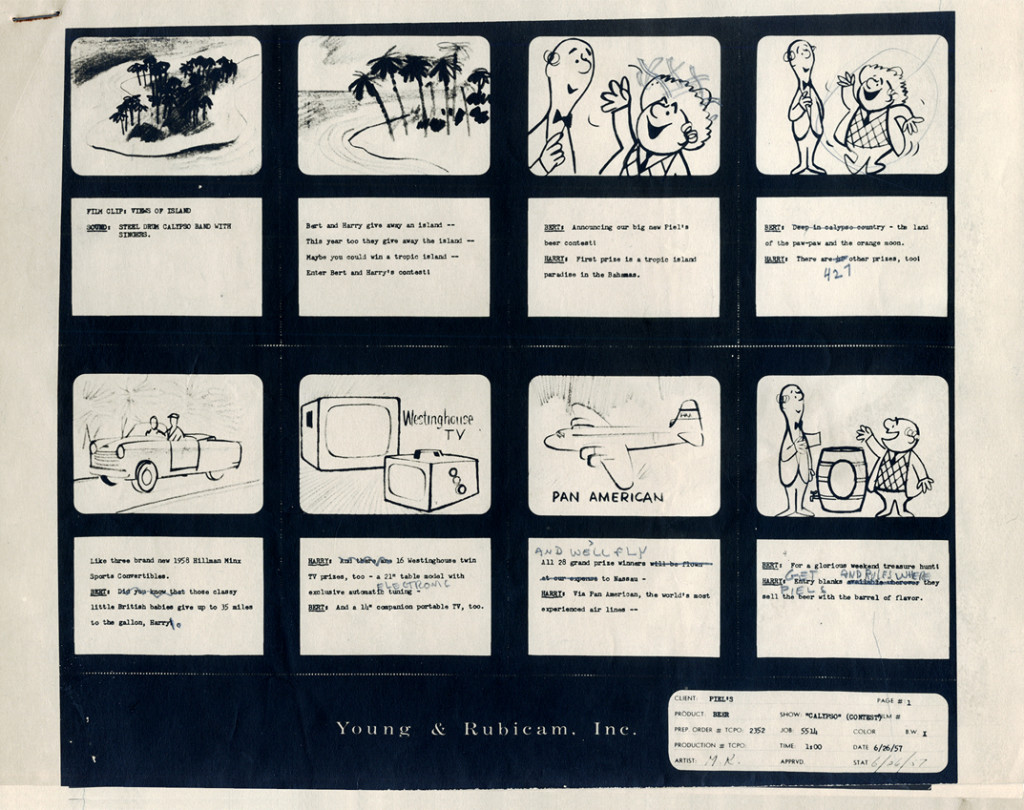 1
1
The following are three drawings from the opening scene of this storyboard. Others from this scene weren’t saved.
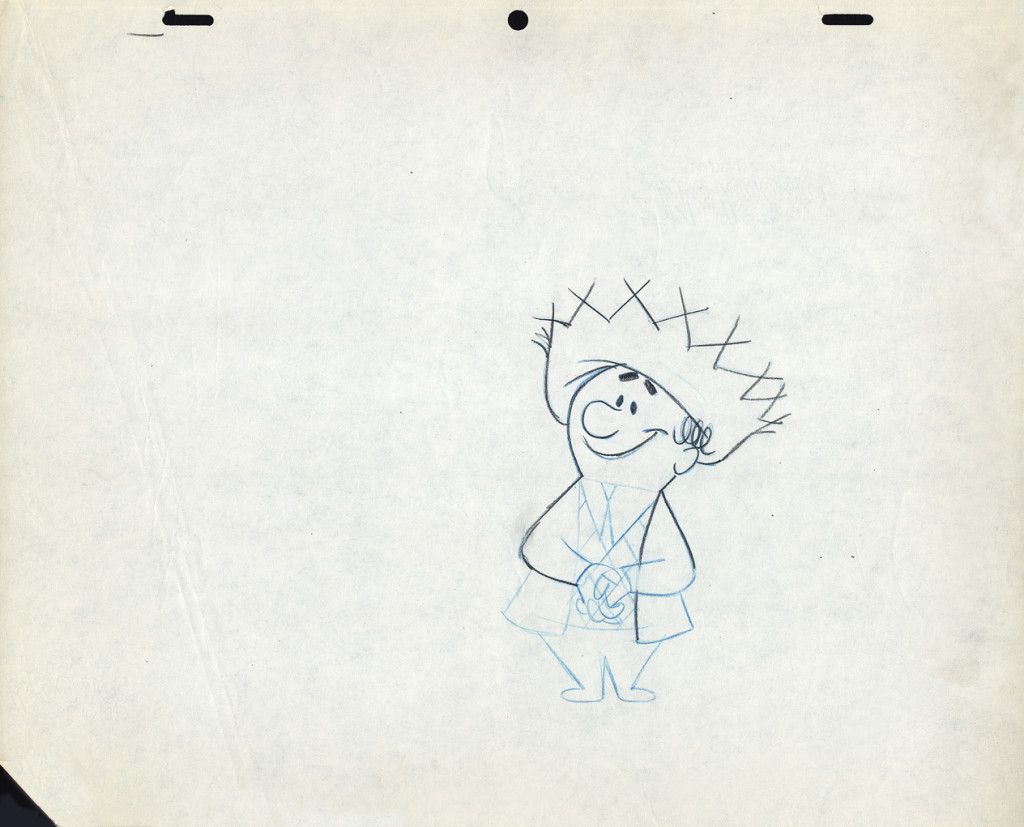 1
1Here’s Bert.
Let’s follow that with layout drawings from two different spots. The first doesn’t really offer much, but the quality of the clean-ups and the drawing is first rate. I’m pleased to post it:
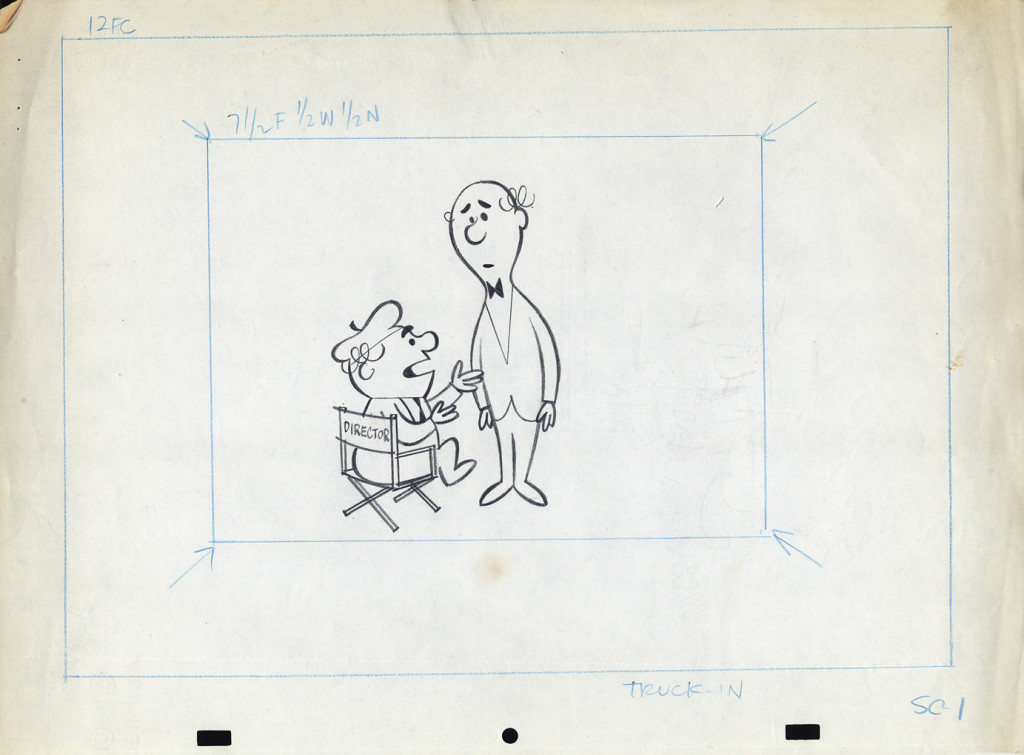 1a
1a
Here are layout drawings for the second of the two spots I have in hand. I presume this is also a spot promoting that contest.
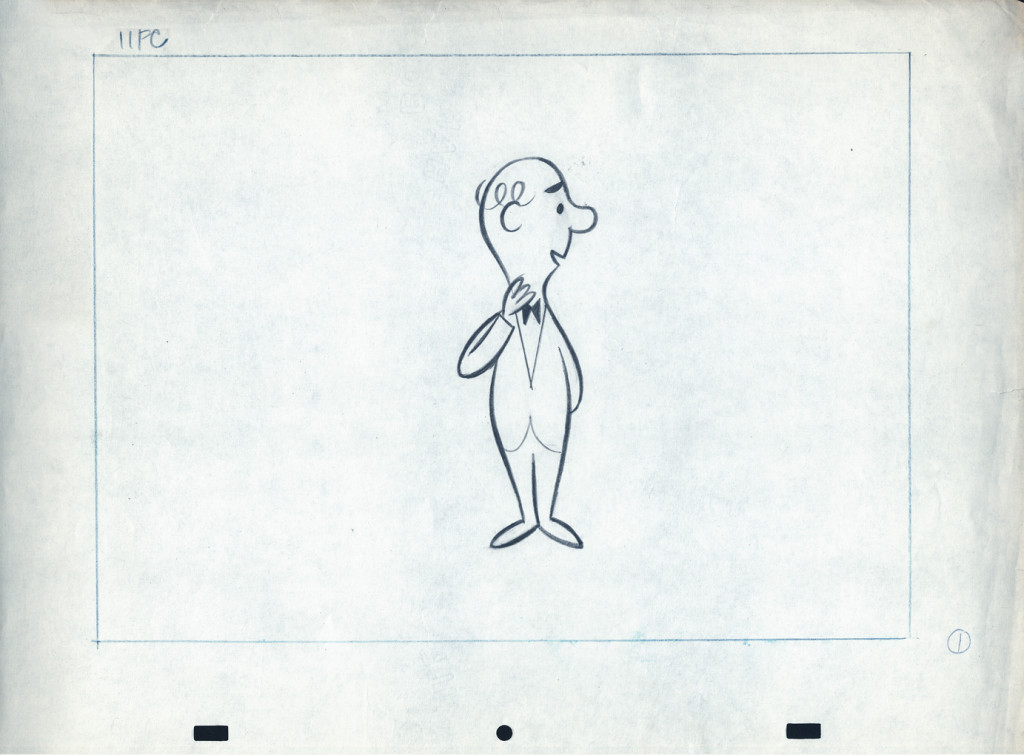 1
1
- Here’s one of the scenes saved by Vince Cafarelli from a commercial he did while at Goulding-Elliott-Graham. The commercial was animated by Lu Guarnier, and Vinny was the assistant on it. Hence, he saved the rough drawings (instead of Bert Piels. (Sorry I don’t know what he’s saying, though I’m looking for the storyboard.)
So, here are Lu’s rough drawings in this CU
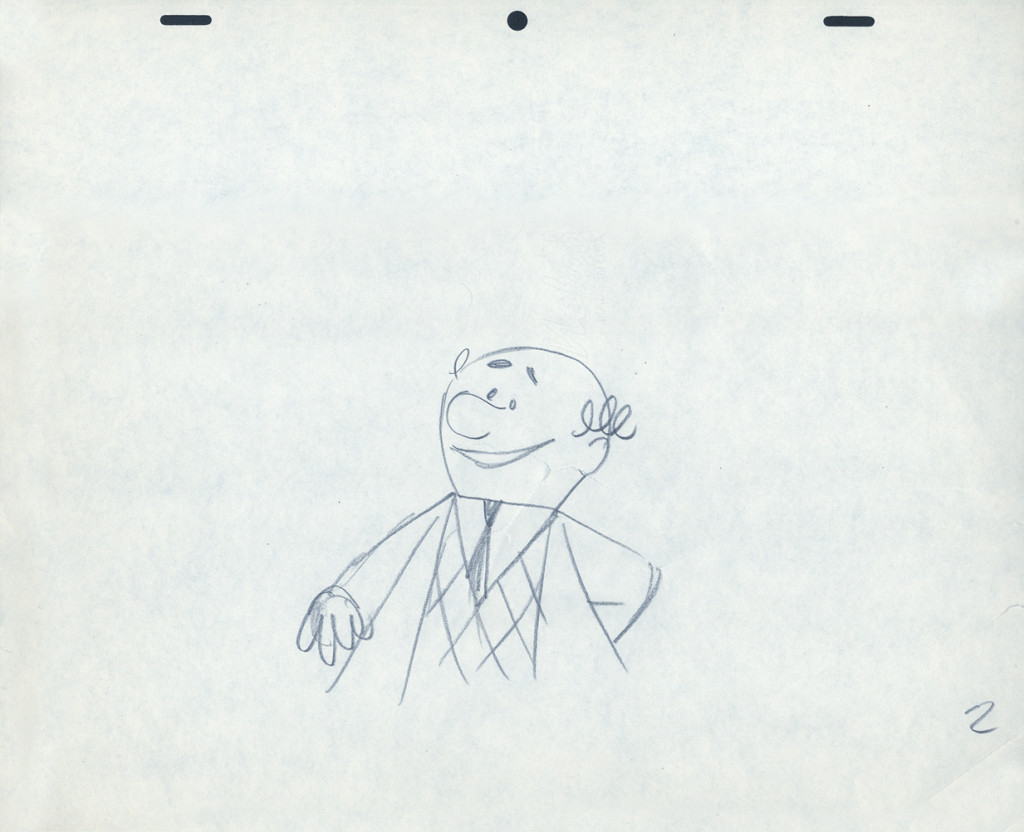 2
2
The following QT movie was made by exposing all drawings on twos
except for the extreme positions that were missing inbetweens.
For those, I dissolved from one extreme to the next.
It drove me crazy that Lu Guarnier always animated on top pegs.
Next week with the last of these three posts on this Piels Bros commercial, I’ll talk about Lu’s animation and some of my pet peeves.
Here’s the last of the three posts I’ve been able to cull from the drawings left behind in Vince Cafarelli‘s things. The 60 second spot was animated by Lu Guarnier and clean-up and assisting was by Vinnie.
Within this post there are drawings from two separate scenes. If you look at the storyboard (I’d posted the entire board in another post, but I’ve pulled the particular frames from the board to show again here), you can see what it is the characters are saying. I don’t have all the drawings for these two scenes; just those I’ve posted.
I’m also going to use these drawings of Lu’s to write about his style of animation. I was taught from the start that this was completely done in an incorrect way. I don’t mean to say something negative about a good animator, but it is a lesson that should be learned for those who are going through the journeyman system of animation.
 Right from the get-go I had some difficulty assisting Lu’s scenes. He started in the old days (early-mid Thirties) at Warner Bros, in Clampett’s unit, and moved from there to the Signal Corps (Army); then to New York working at a few studios before landing at UPA’s commercial studio. After that, he free lanced most of his career, as had so many of the other New York animators. They’d work for six months to a year at one studio then would move on to another.
Right from the get-go I had some difficulty assisting Lu’s scenes. He started in the old days (early-mid Thirties) at Warner Bros, in Clampett’s unit, and moved from there to the Signal Corps (Army); then to New York working at a few studios before landing at UPA’s commercial studio. After that, he free lanced most of his career, as had so many of the other New York animators. They’d work for six months to a year at one studio then would move on to another.
I suspect the problems in Lu’s animation all generated from the training he’d gotten at WB. Lu worked in a very rough style. No problem there. An animator should work rough. These drawings posted aren’t particularly rough, but in his later years (when I knew him) there was hardly a line you could aim for in doing the clean-up. His style was done in small sketchy dashes that molded the character. Rarely was it on model, and always it was done with a dark, soft leaded pencil. There were others who worked rougher, Jack Schnerk was one, but Lu’s drawing was usually harder to clean up.
There was a rule that came out of the Disney studio, and, as both an animator and an assistant, I’ve followed it closely. When doing the breakdown charts (those ladders to the right of the drawing) all inbetween positions had to be exactly half way between drawing “A” and drawing “B”. If the animation called for it to be 1/4 of the way, you’d indicate that half-way mark then indicate your 1/4. If a drawing had to be closer or farther away – say 1/3 or 1/5th of the way – the animator should do it himself. This, as I learned it, was the law of the land. However, Lu would rarely adhere to it, and an assistant’s work became more complicated. The work was too easily hurt by a not-great inbetweener. I’ll point out an example of Lu’s breaking this rule as we come to it).
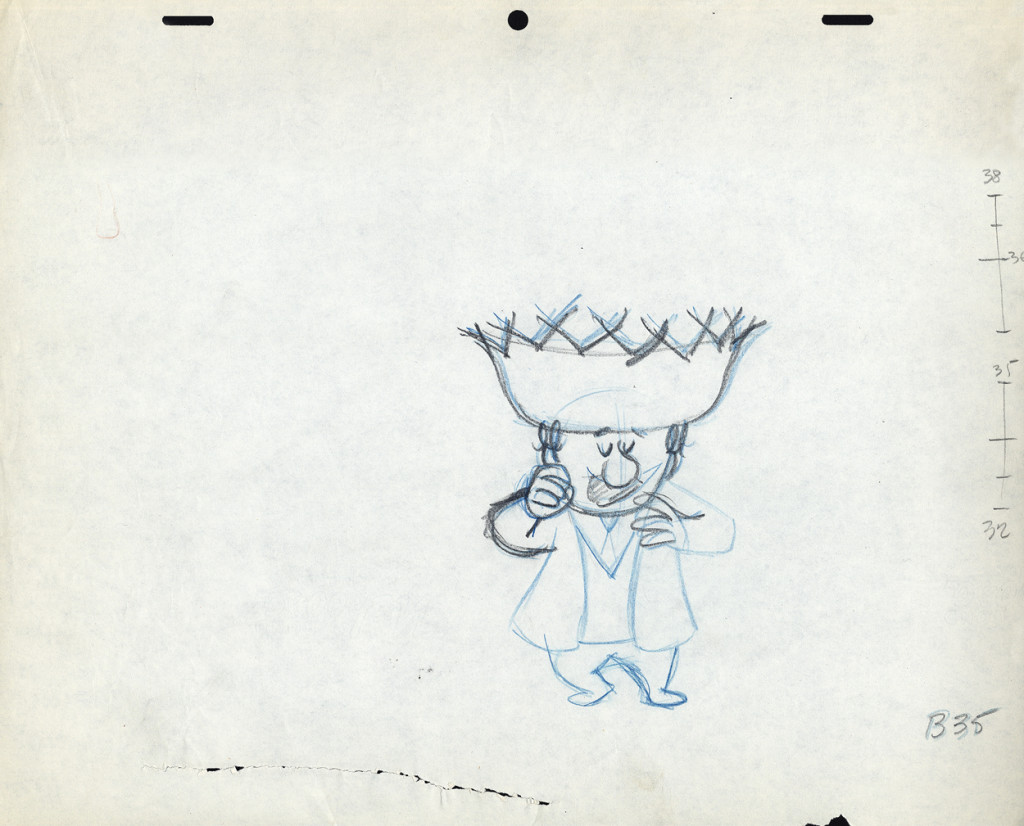 B35
B35
These ladders are done correctly, per the Disney system.
#34 is half way between #32 & #35;
#33 is half way between #32 & #34.
#36 is half way between #35 & #38;
#37 (the 1/4 mark) is half way between #36 & #38.
However, Grim Natwick told me
- demanded of me –
that all ladders should appear on the lower numbered drawing.
The ladder here should be on drawing #32 for all art
going into the upcoming extreme, #38.
Lu never followed this rule, which means the
assistant generally had to search for the chart.
The Second scene
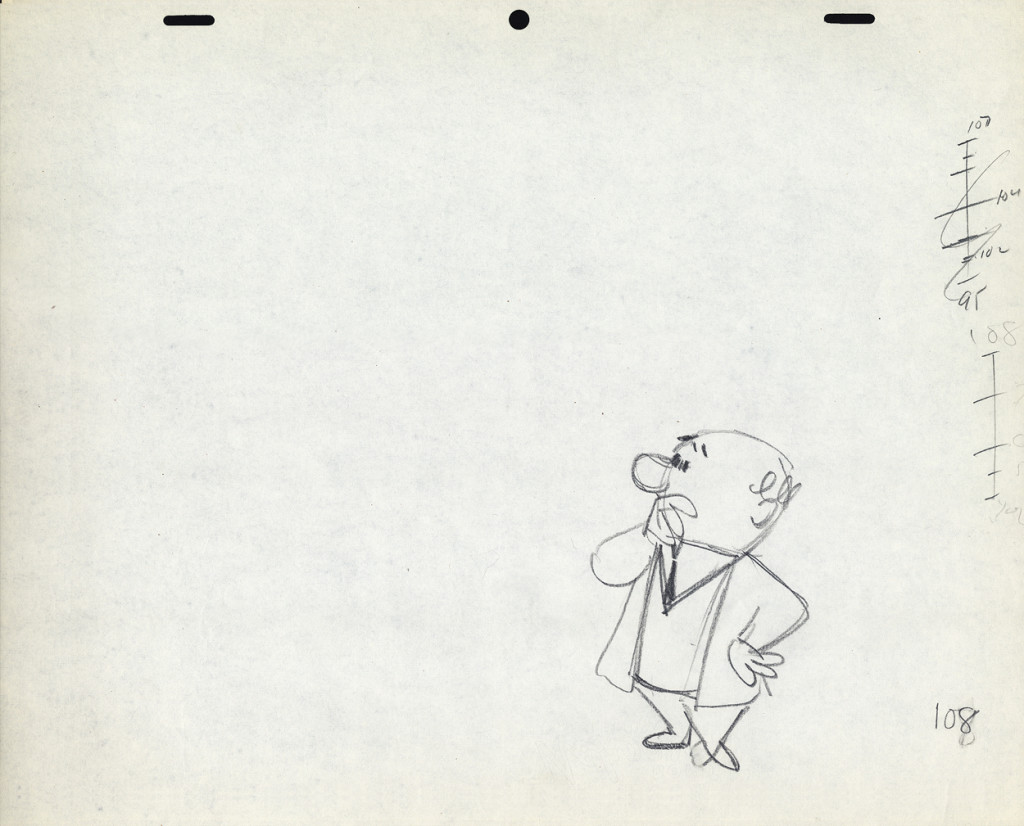 B108
B108
This ladder is typical of Lu’s animation.
It would seem that #106 is 1/3 of the way between #108
and #105 is half way between #106 and #109.
and it also looks like #107 is 2/3 of the way between #108 and #109.
Because the numbers come on the last of the extremes, here,
more confusion is allowed to settle in.
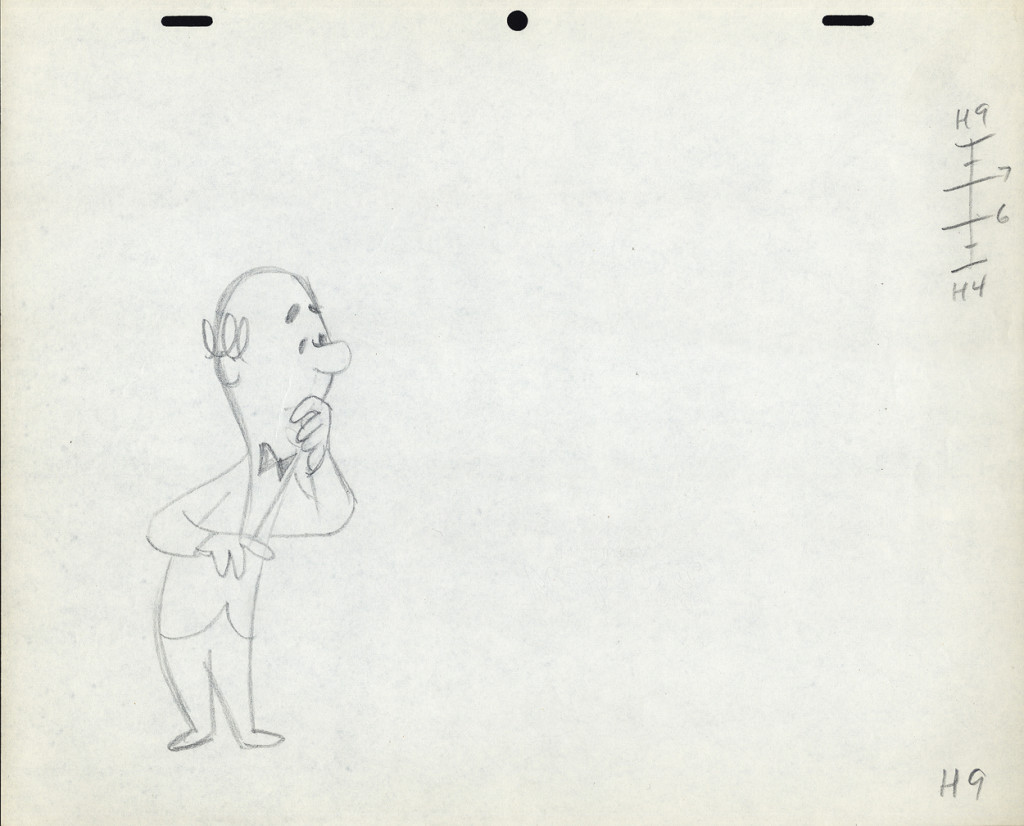 H9
H9
Again, the ladder appears on the later extreme. The assistant
shouldn’t have to go looking for it. The ladder should be on
the first drawing involved in the breakdown.
Again, the breakdown drawings are on 1/3′s, and
the inbetweens are 1/2′s of that. It makes it harder on the
people following up on the clean-up & inbetweens.
I don’t know if this style of Lu’s was a product of where he learned to animate or not. Jack Schnerk, a comparable animator – whose work I loved (even though he had a rougher, harder to clean up drawing style) – always broke his timing in halves and halves again. There were times when his animation went to one’s and he did most of all the drawings. I assumed he had an unusual timing, and he didn’t want to burden the Assistant with his schema. He also always carried the breakdown charts on the earlier numbered drawing – per Grim Natwick’s comment. In some way I felt that Lu was rushed to get on with the scene, and whatever method he used would be to get him there more quickly. (It was the assisting that was slowed down.) This may have been a product of his attempts to devise some type of improvisation in the animation. Lu’s work, on screen, was usually excellent, so he didn’t much hurt anything in his method.
It might also have been his method of trying to put SNAP into the animation. This was a WB trait from the mid-late Thirties. It was certainly in Lu’s animation. No doubt a hold-over from Clampett’s early days of directing.
The final thing to note is that Lu usually worked on Top Pegs. Animating on Top Pegs makes it impossible to “roll” the drawings and check on the movement of more than 3 drawings. You can only “flip” the three, checking the one inbetween, but it didn’t give you a good indication of the flow of the animation. This is obviously necessary in animating on paper. It also made it difficult for the cameraman as well as those following behind the animator. If there were a held overlay, this would have to be on bottom pegs since the animation is on top pegs. That requires extra movement of the expensive cameraman to change all the animation cels after lifting the bottom pegged overlay. It also risks the possible jiggling of the overlay as it’s continually moved for the animating cels.
Articles on Animation &Commentary &commercial animation &Disney 22 May 2013 04:35 am
Press
Among the remains of the material saved by Vince Cafarelli, there was this newspapaer, The News World, dated Tues. May 23, 1978. On the same page, there were two articles about animation.
Once was a piece about Disney’s Jungle Book, which was just about to be released. The second was an article about Perpetual Motion Pictures. This, of course, was the company where Vinnie and Candy worked with Buzz Potamkin producing and Hal Silvermintz designing.
Below, I post first the two parts of the Disney article (I’ve also singled out just the type in case you want to read at a larger scale.)Then I follow with the two parts of the Perpetual Motion article.
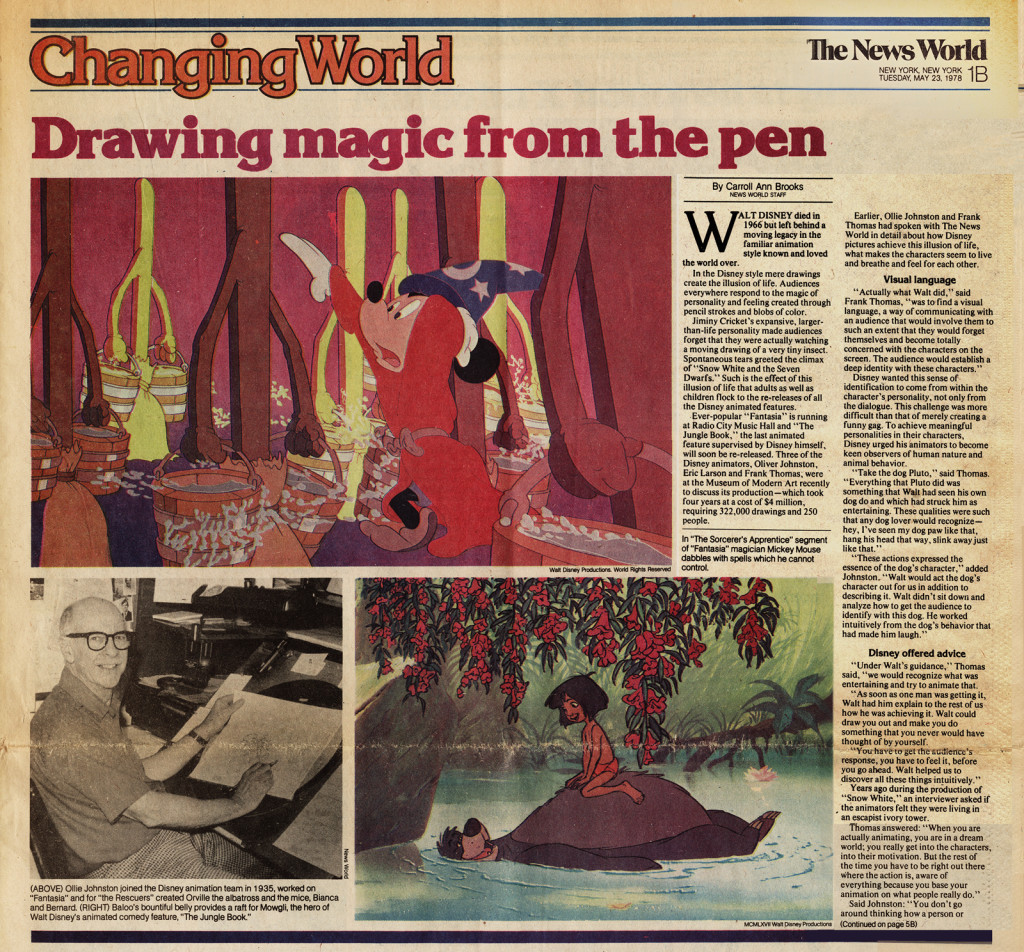
The Disney article (part 1)
The following is the article about Perpetual Motion Pictures:
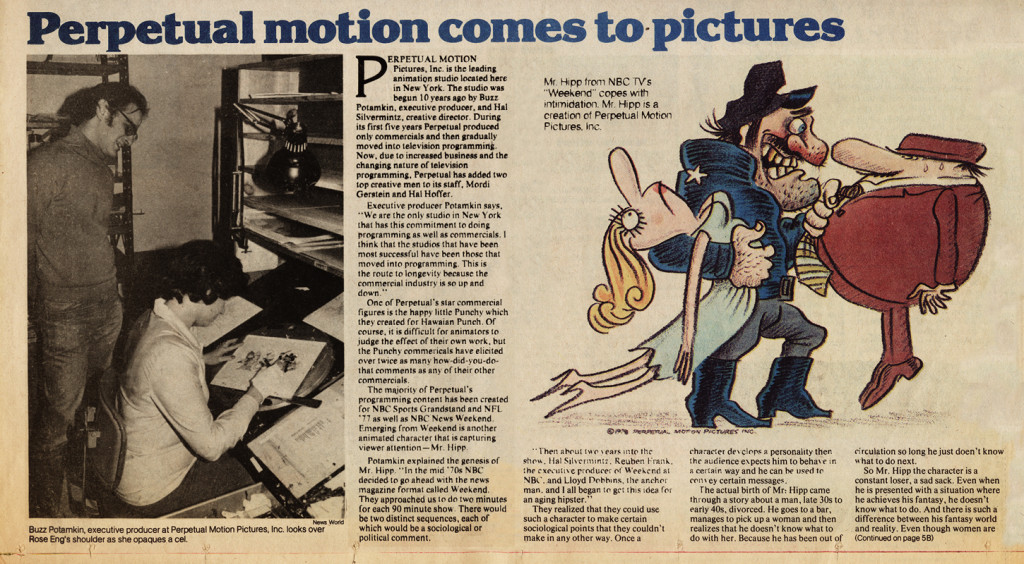
Perpetual article (Part 1)
Independent Animation 16 May 2013 05:56 am
Norman McLaren
- Among Vince Cafarelli‘s saved animation material, there was an issue of the newsletter from ASIFA Canada, dated August 1987. The entire issue was dedicated to Norman McLaren who had just died. I’ve scanned it all and will post it here.
You’ll have to click on any of the pages to make them legible, particularly two that weren’t translated into English and remain in French. I’ve left those two pages smaller than the others.
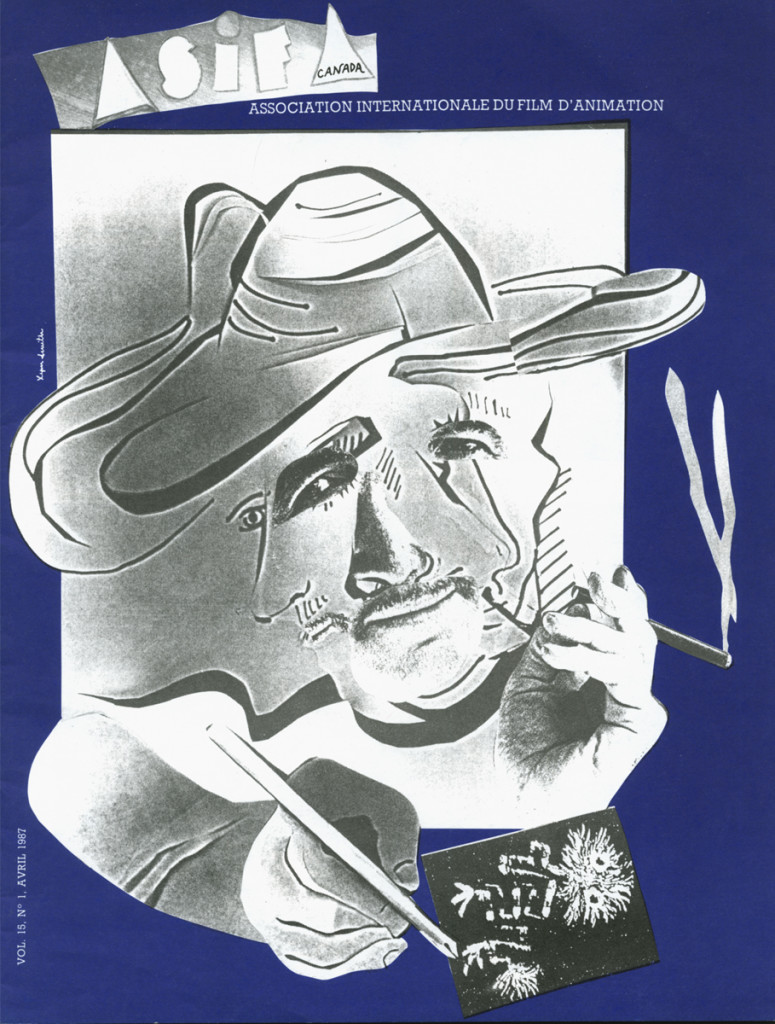 1
1
Here are three of Norman McLaren‘s lesser known films on YouTube.
Spook Sport
.
La Merle (The Blackbird)
.
C’est l’aviron
(Some of McLaren’s more famous and usual fare can be found on YouTube as well:
Hen Hop, Blinkety Blank, Fiddle De Dee, Neighbours. There are many more.)
Animation &Animation Artifacts &Commentary 01 May 2013 06:52 am
Piels Bros Commercial Animation Dwngs
Here’s the last of the three posts I’ve been able to cull from the drawings left behind in Vince Cafarelli‘s things. The 60 second spot was animated by Lu Guarnier and clean-up and assisting was by Vinnie.
Within this post there are drawings from two separate scenes. If you look at the storyboard (I’d posted the entire board in another post, but I’ve pulled the particular frames from the board to show again here), you can see what it is the characters are saying. I don’t have all the drawings for these two scenes; just those I’ve posted.
I’m also going to use these drawings of Lu’s to write about his style of animation. I was taught from the start that this was completely done in an incorrect way. I don’t mean to say something negative about a good animator, but it is a lesson that should be learned for those who are going through the journeyman system of animation.
 Right from the get-go I had some difficulty assisting Lu’s scenes. He started in the old days (early-mid Thirties) at Warner Bros, in Clampett’s unit, and moved from there to the Signal Corps (Army); then to New York working at a few studios before landing at UPA’s commercial studio. After that, he free lanced most of his career, as had so many of the other New York animators. They’d work for six months to a year at one studio then would move on to another.
Right from the get-go I had some difficulty assisting Lu’s scenes. He started in the old days (early-mid Thirties) at Warner Bros, in Clampett’s unit, and moved from there to the Signal Corps (Army); then to New York working at a few studios before landing at UPA’s commercial studio. After that, he free lanced most of his career, as had so many of the other New York animators. They’d work for six months to a year at one studio then would move on to another.
I suspect the problems in Lu’s animation all generated from the training he’d gotten at WB. Lu worked in a very rough style. No problem there. An animator should work rough. These drawings posted aren’t particularly rough, but in his later years (when I knew him) there was hardly a line you could aim for in doing the clean-up. His style was done in small sketchy dashes that molded the character. Rarely was it on model, and always it was done with a dark, soft leaded pencil. There were others who worked rougher, Jack Schnerk was one, but Lu’s drawing was usually harder to clean up.
There was a rule that came out of the Disney studio, and, as both an animator and an assistant, I’ve followed it closely. When doing the breakdown charts (those ladders to the right of the drawing) all inbetween positions had to be exactly half way between drawing “A” and drawing “B”. If the animation called for it to be 1/4 of the way, you’d indicate that half-way mark then indicate your 1/4. If a drawing had to be closer or farther away – say 1/3 or 1/5th of the way – the animator should do it himself. This, as I learned it, was the law of the land. However, Lu would rarely adhere to it, and an assistant’s work became more complicated. The work was too easily hurt by a not-great inbetweener. I’ll point out an example of Lu’s breaking this rule as we come to it).
 B35
B35
These ladders are done correctly, per the Disney system.
#34 is half way between #32 & #35;
#33 is half way between #32 & #34.
#36 is half way between #35 & #38;
#37 (the 1/4 mark) is half way between #36 & #38.
However, Grim Natwick told me
- demanded of me –
that all ladders should appear on the lower numbered drawing.
The ladder here should be on drawing #32 for all art
going into the upcoming extreme, #38.
Lu never followed this rule, which means the
assistant generally had to search for the chart.
The Second scene
 B108
B108
This ladder is typical of Lu’s animation.
It would seem that #106 is 1/3 of the way between #108
and #105 is half way between #106 and #109.
and it also looks like #107 is 2/3 of the way between #108 and #109.
Because the numbers come on the last of the extremes, here,
more confusion is allowed to settle in.
 H9
H9
Again, the ladder appears on the later extreme. The assistant
shouldn’t have to go looking for it. The ladder should be on
the first drawing involved in the breakdown.
Again, the breakdown drawings are on 1/3′s, and
the inbetweens are 1/2′s of that. It makes it harder on the
people following up on the clean-up & inbetweens.
I don’t know if this style of Lu’s was a product of where he learned to animate or not. Jack Schnerk, a comparable animator – whose work I loved (even though he had a rougher, harder to clean up drawing style) – always broke his timing in halves and halves again. There were times when his animation went to one’s and he did most of all the drawings. I assumed he had an unusual timing, and he didn’t want to burden the Assistant with his schema. He also always carried the breakdown charts on the earlier numbered drawing – per Grim Natwick’s comment. In some way I felt that Lu was rushed to get on with the scene, and whatever method he used would be to get him there more quickly. (It was the assisting that was slowed down.) This may have been a product of his attempts to devise some type of improvisation in the animation. Lu’s work, on screen, was usually excellent, so he didn’t much hurt anything in his method.
It might also have been his method of trying to put SNAP into the animation. This was a WB trait from the mid-late Thirties. It was certainly in Lu’s animation. No doubt a hold-over from Clampett’s early days of directing.
The final thing to note is that Lu usually worked on Top Pegs. Animating on Top Pegs makes it impossible to “roll” the drawings and check on the movement of more than 3 drawings. You can only “flip” the three, checking the one inbetween, but it didn’t give you a good indication of the flow of the animation. This is obviously necessary in animating on paper. It also made it difficult for the cameraman as well as those following behind the animator. If there were a held overlay, this would have to be on bottom pegs since the animation is on top pegs. That requires extra movement of the expensive cameraman to change all the animation cels after lifting the bottom pegged overlay. It also risks the possible jiggling of the overlay as it’s continually moved for the animating cels.
Action Analysis &Animation &Animation Artifacts &commercial animation 24 Apr 2013 05:07 am
Piels Bert CU
- Here’s one of the scenes saved by Vince Cafarelli from a commercial he did while at Goulding-Elliott-Graham. The commercial was animated by Lu Guarnier, and Vinny was the assistant on it. Hence, he saved the rough drawings (instead of Bert Piels. (Sorry I don’t know what he’s saying, though I’m looking for the storyboard.)
So, here are Lu’s rough drawings in this CU
 2
2
The following QT movie was made by exposing all drawings on twos
except for the extreme positions that were missing inbetweens.
For those, I dissolved from one extreme to the next.
It drove me crazy that Lu Guarnier always animated on top pegs.
Next week with the last of these three posts on this Piels Bros commercial, I’ll talk about Lu’s animation and some of my pet peeves.
Commentary 20 Apr 2013 07:30 am
Selects
Congratulations to Candy Kugel and all the others at Buzzco, including animator Rick Broas and partner Marilyn Kreamer, for the screening of their film, The Last Time, as part of the Tribeca Film Festival. The film premiered this past Wednesday and will play four more times see schedule below) as part of the program, Let There Be Light: The Cycle of Life.
The Last Time is an animated tribute to Candy’s late partner Vincent Cafarelli, after the end of a 38 year partnership.
The remaining screenings will take place as follows:
One Last Time
Tuesday 4/23/2013 at 5:30 PM at Clearview Cinemas Chelsea 4
Friday 4/26/2013 at 6:30 PM at Clearview Cinemas Chelsea 6
Sunday 4/28/2013 at 11:00 AM at Tribeca Cinemas Theater 2
Moving Innovation
 - Tom Sito will be in the USC Cinema School Courtyard on Weds, April 24th from 11;30-1:30 to sign copies of his brand new book, Moving Innovation: A History of Computer Animation. I think this is the first of its kind, a history of computer animation. From my miniscule standing point, it feels like too soon to be writing a history of the medium, but it’s obvious I’m wrong. All that time with NYIT and Robert Abel and LucasFilm.
- Tom Sito will be in the USC Cinema School Courtyard on Weds, April 24th from 11;30-1:30 to sign copies of his brand new book, Moving Innovation: A History of Computer Animation. I think this is the first of its kind, a history of computer animation. From my miniscule standing point, it feels like too soon to be writing a history of the medium, but it’s obvious I’m wrong. All that time with NYIT and Robert Abel and LucasFilm.
My knowledge of computer animation is close to nil, so i would like to know something about it. It’s probably my largest gaping hole in my knowledge of animation, and I do feel a bit guilty about that. I keep putting my toe in the water, but I don’t seem to have much of an inclination to learn a lot about the subject.
I’ll definitely read the book once I can get my hands on a copy. After I’ve done so, I’ll tell you what I think of it. Tom’s got a nice amiable writing style, so he should be the perfect one for the subject. Looking forward to it.
A New Animation Company
Animators Lee Corey and Frank Rivera have teamed to create the new animation company Ani 2. They write that their “specialty is pre-production and animation offering a mix of hand drawn digital 2d character animation, character design and creation, traditional art, VFX, stop motion, whiteboard, 3d design and backgrounds.”
Their website shows the sample reel, gives an indication of a series they’re developing and has a complete rundown of their bios.
Ani2 Entertainment is located at:
33 West 19th Street, 4th Fl., New York, NY 10011
phone: 917-362-0096
Out There
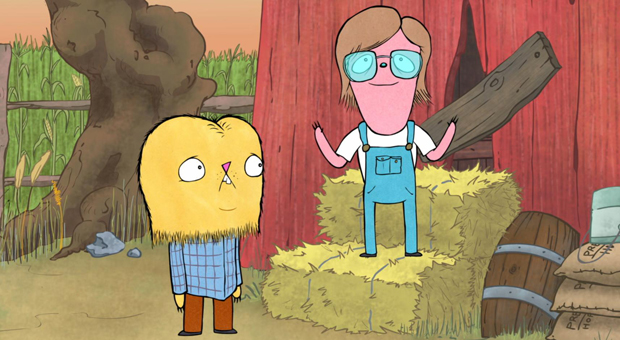 - IFC has been airing new comedy series for the past couple of years. Interestingly enough, they’ve done a couple of animated series, none of which have outlasted their first season. Perhaps the short running series will change with the current show on the cable channel. Out There has been running since February and is a quiet winner, if you ask me. Last night they aired a couple of episodes ending with the series finale at 10pm.
- IFC has been airing new comedy series for the past couple of years. Interestingly enough, they’ve done a couple of animated series, none of which have outlasted their first season. Perhaps the short running series will change with the current show on the cable channel. Out There has been running since February and is a quiet winner, if you ask me. Last night they aired a couple of episodes ending with the series finale at 10pm.
The series was created by Ryan Quincy,who worked with 20th Century Fox, Nickelodeon and Disney amd has wod two Emmy Awards for his work on South Park. The show’s voice overs are by Ryan Quincy, Justin Roiland, Fred Armisen, and Megan Mullally. They’ve also had guest voices. Sarah Silverman and Ellen Page guested on the final episode; Cheech and Chong did another episode. The show is definitely in the voice over readings and the writing. Like most tv animation these days, it’s what Chuck Jones once called “illustrated radio.” The show reminds me a bit of another IFC series, Portlandia. On April 5th Ryan Quincy was selected as “Artist of the Day” by Cartoon Brew. I’m not sure I’d go with the word “Artist” when talking about most of the Cartoon Brew honorees, but “Cartoonist of the Day” definitely works.
IFC has a site for the show at Out There. You can see a souple of the episodes on line at the site. Ryan Quincy has his own site, which I prefer. It doesn’t try to sell the series too hard, though it obviously features it.
I have to admit, I’ve only seen two episodes, both last night, and was impressed. It has a nice playful, minimalist drawing style, and the writing is low key good. It’s basically about a family in the suburbs which includes a teen and a younger boy. The show focuses on these kids.
I expect the show to be renewed. and I’ll look for it.
Action Analysis &Animation &Animation Artifacts &commercial animation &Layout & Design 17 Apr 2013 05:51 am
Piels Bros. Odds & Ends
Among Vince Cafarelli‘s remaining artifacts there are lots of bits and pieces from several Piels Bros. commercial spots. I decided to put some of it together – even though they’re not really connected – into this one post.
There are animation drawings I’ll try to post in other pieces.
Here, we have a storyboard for a spot; I believe this is an abbreviated spot promoting some contest Piels beer was running. I think this is from a shortened version of a one minute spot since there are animation drawings which are obviously from the same setup, but they’re not part of this storyboard. (There’s an unveiling of the barrel, which is upside down.)
Since the boards are dated 1957, and given the use of signal corps pegs, I believe these were done for UPA.
Regardless, the drawings are excellent. I presume they’re hand outs to Lu Guarnier, animating, and Vince Cafarelli, assisting.
 1
1
The following are three drawings from the opening scene of this storyboard. Others from this scene weren’t saved.
 1
1Here’s Bert.
Let’s follow that with layout drawings from two different spots. The first doesn’t really offer much, but the quality of the clean-ups and the drawing is first rate. I’m pleased to post it:
 1a
1a
Here are layout drawings for the second of the two spots I have in hand. I presume this is also a spot promoting that contest.
 1
1
In the next week or two, I’ll post some of the animation drawings left behind so you can get an idea of the movement and Lu Guarnier‘s animation. I’ll probably have some to say about Lu’s style of movement. It drove me crazy when I had to assist him. The movement always looked great on screen, but it took a lot for an assistant to get it there.
Photos 03 Apr 2013 06:01 am
Audition Screening
I continue to pore through the remains of work materials after Vince Cafarelli passed away over a year ago. A lot of artwork went to the Museum of Modern Art and a lot has been returned temporarily. Consequently, I’m poring quickly over the boxes searching for anything I’ve missed first time out. And I know there was a lot.
I’ve come upon a stash of photos. Many of them were taken at a screening Candy Kugel had given at Magno Screening room. It was for her personal short, “Audition.” This was a short film done in 1980 which talked about her life as an artist. This is a theme of many of the shorts she and Vince did together. Whether discussing making a commercial or a personal film, the topic has stretched through many of their very personal films.
At any rate, Candy had finished the short and was celebrating with a host of screenings at Magno with a warm reception going on in Magno’s anteroom, next door. I can still remember the event clearly even though it took place over 30 years ago. Others of the photos were obviously taken in the Perpetual Motion studio during the day. A chance to renew acquaintance with some old faces, these are some of the photos taken. I thought it’d be fun to share.
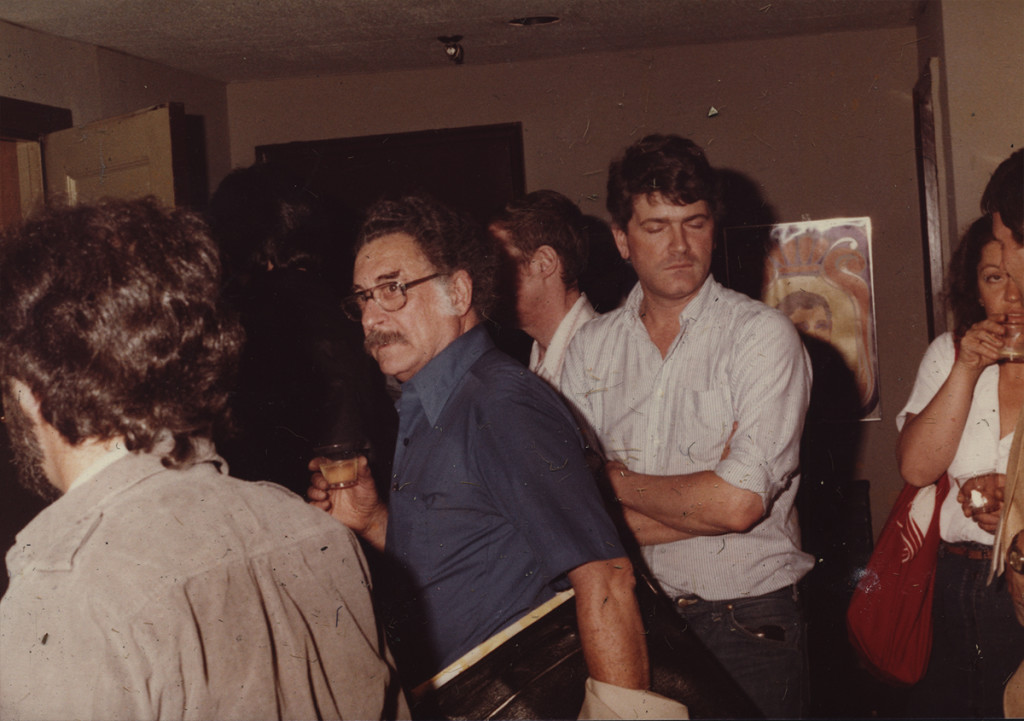 1
1Animators, Lu Guarnier and Tony Eastman
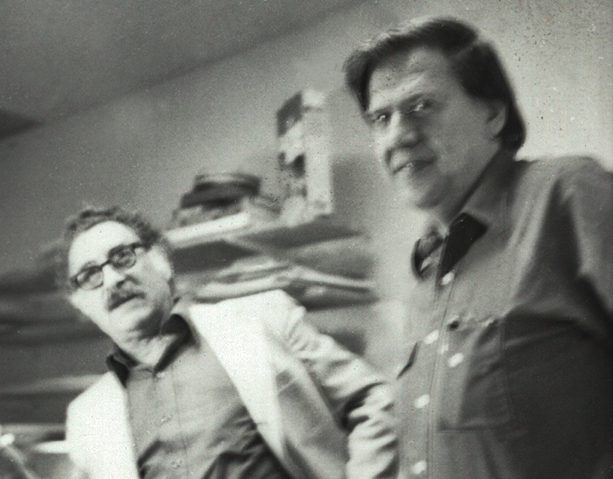 2
2
Animators, Lu Guarnier and Ed Smith
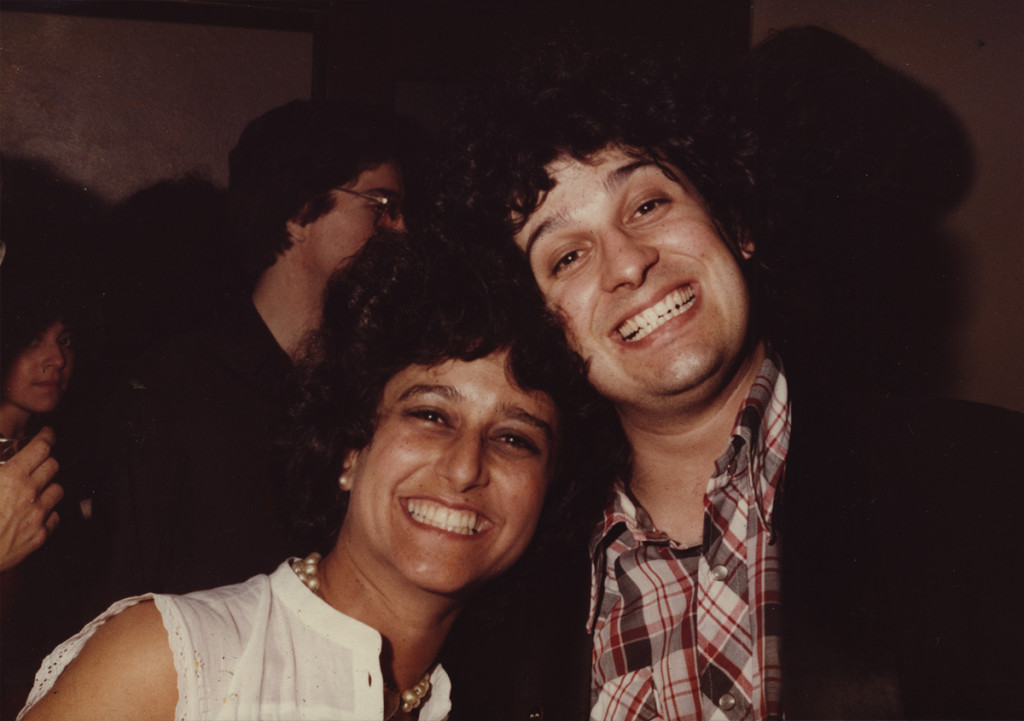 4
4
Young animators, Candy Kugel and Russell Calabrese
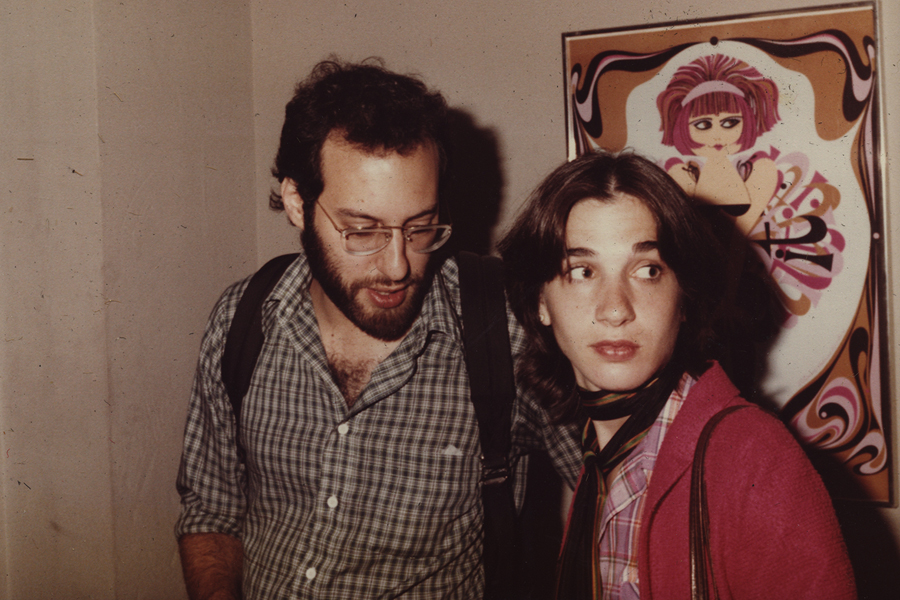 5
5
Stop-motion animator, Jimmy Picker and girlfriend
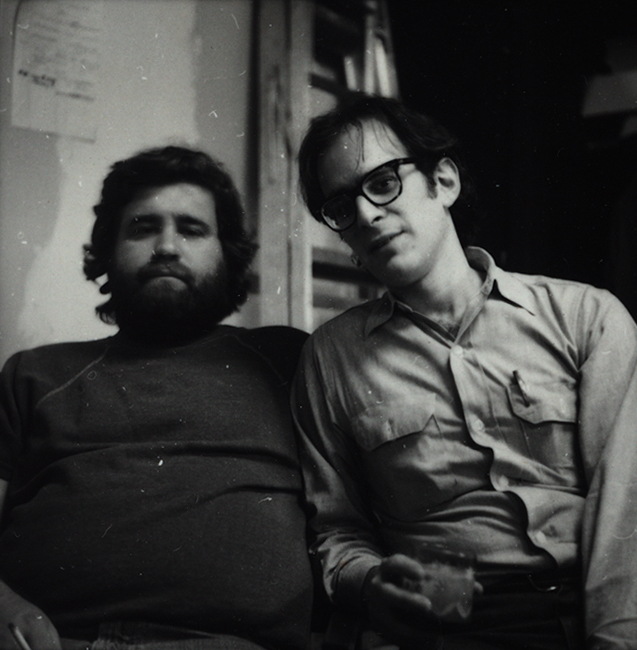 6
6
Caeraman, John Rowhalt and Producer, Buzz Potamkin
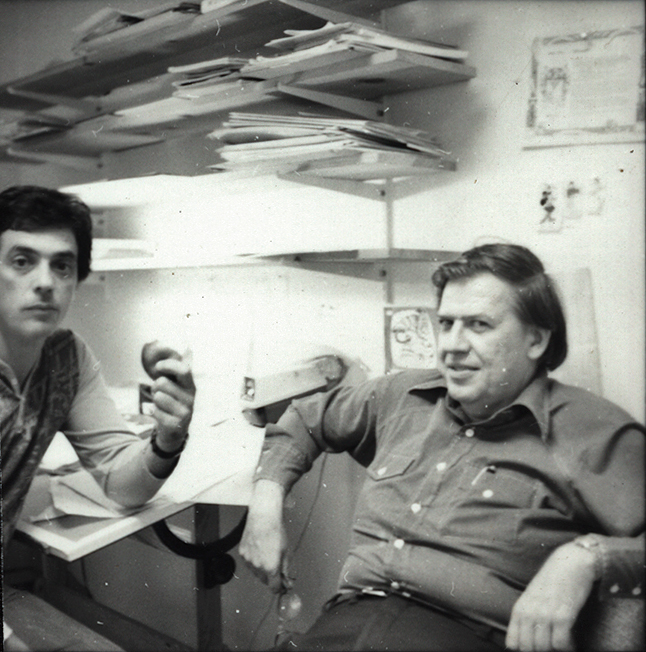 7
7
Animators, Vince Cafarelli and Ed Smith
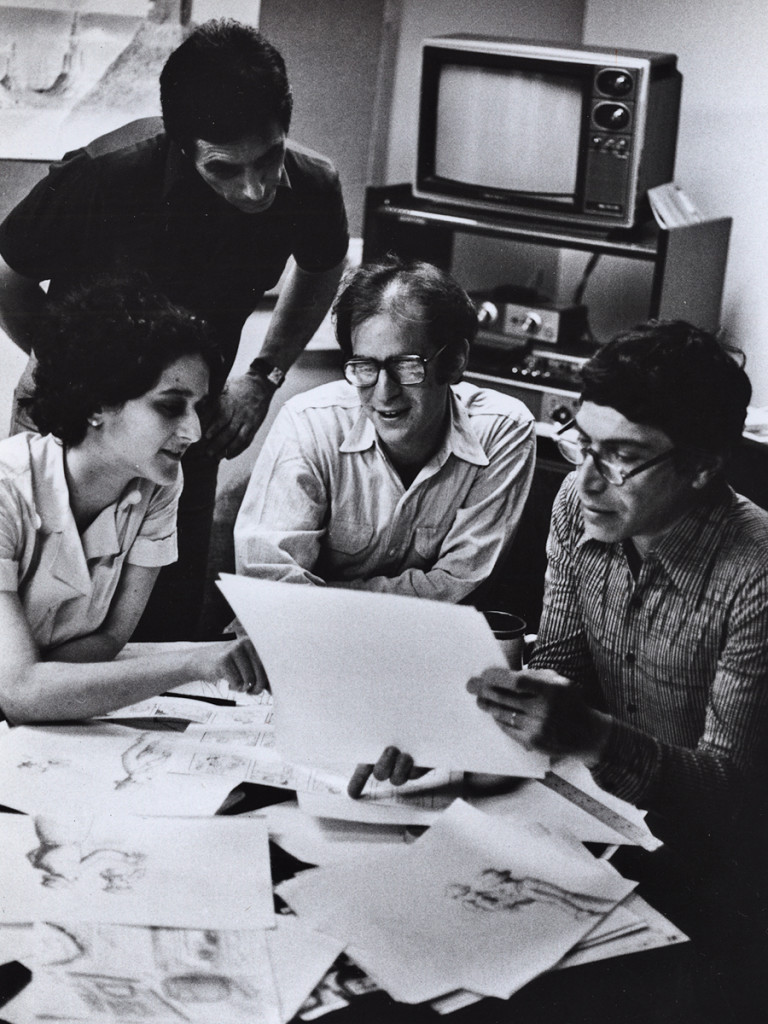 8
8
Animators, Candy Kugel (sitting) and Vince Cafarelli (standing),
Producer, Buzz Potamkin and Designer/Producer, Hal Silvermintz
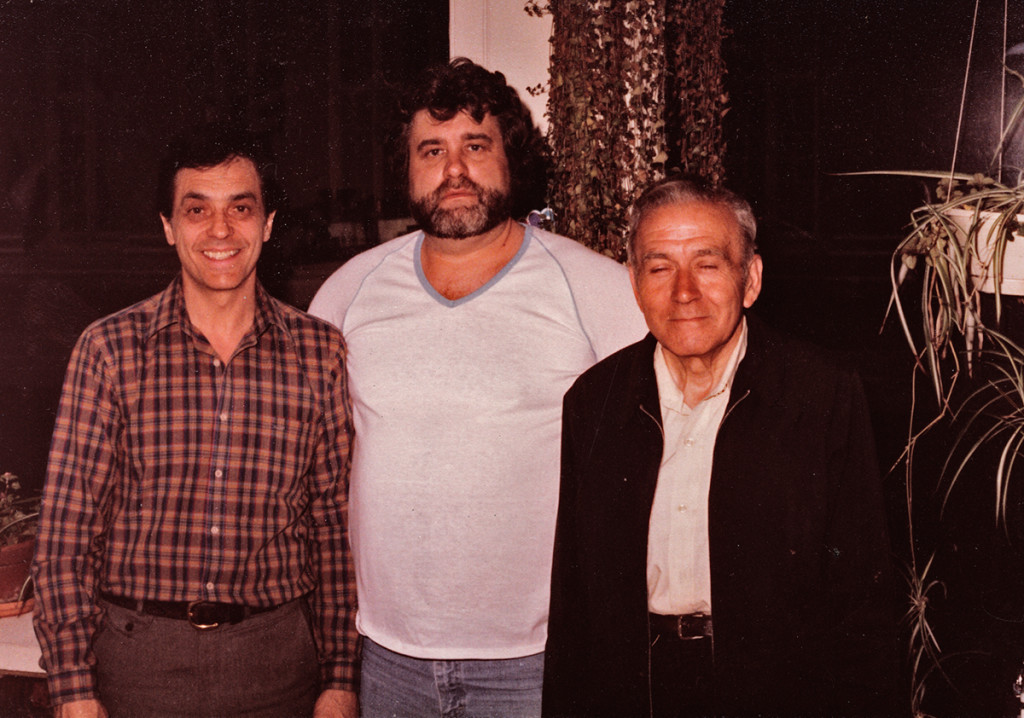 9
9
Animator, Vince Cafarelli, Cameraman, John Rowhalt and Expediter, Marty Weinbaum
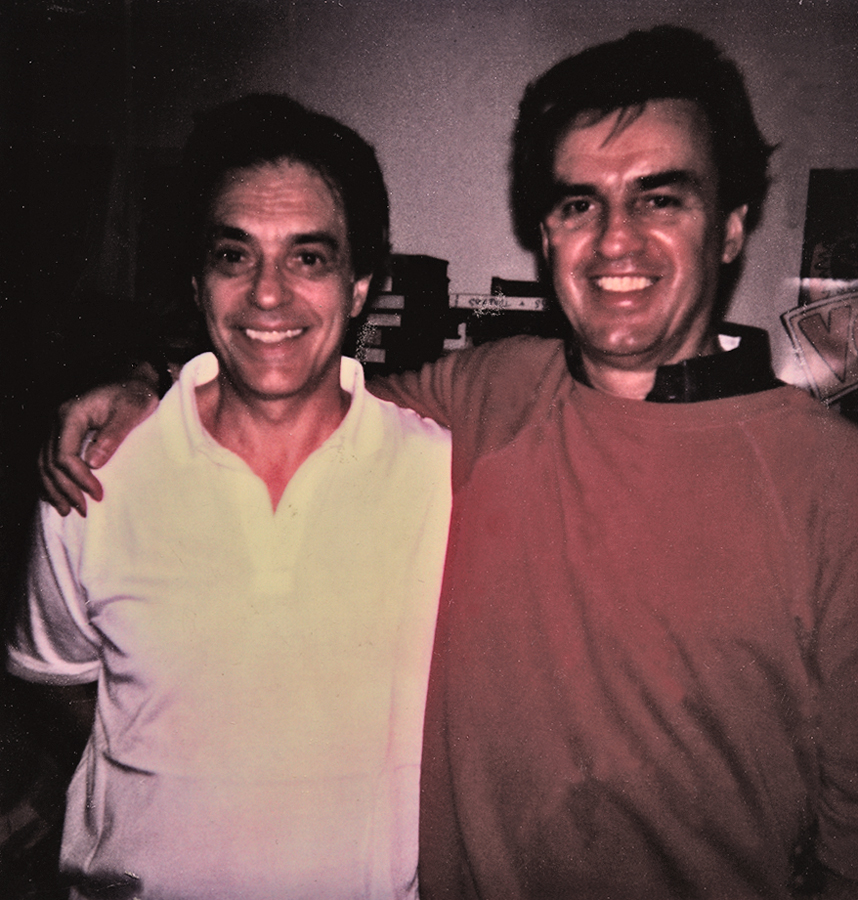 10
10
Anmators, Vince Cafarelli and Vinne Bell
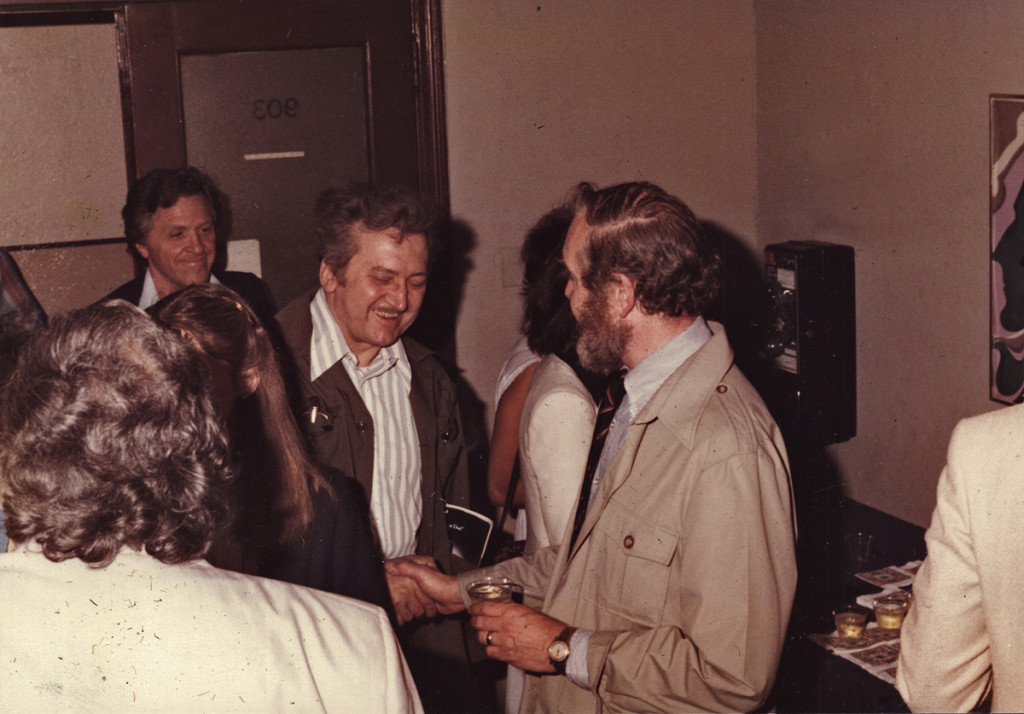 11
11
Animators, Jan Svochak and Howard Beckerman
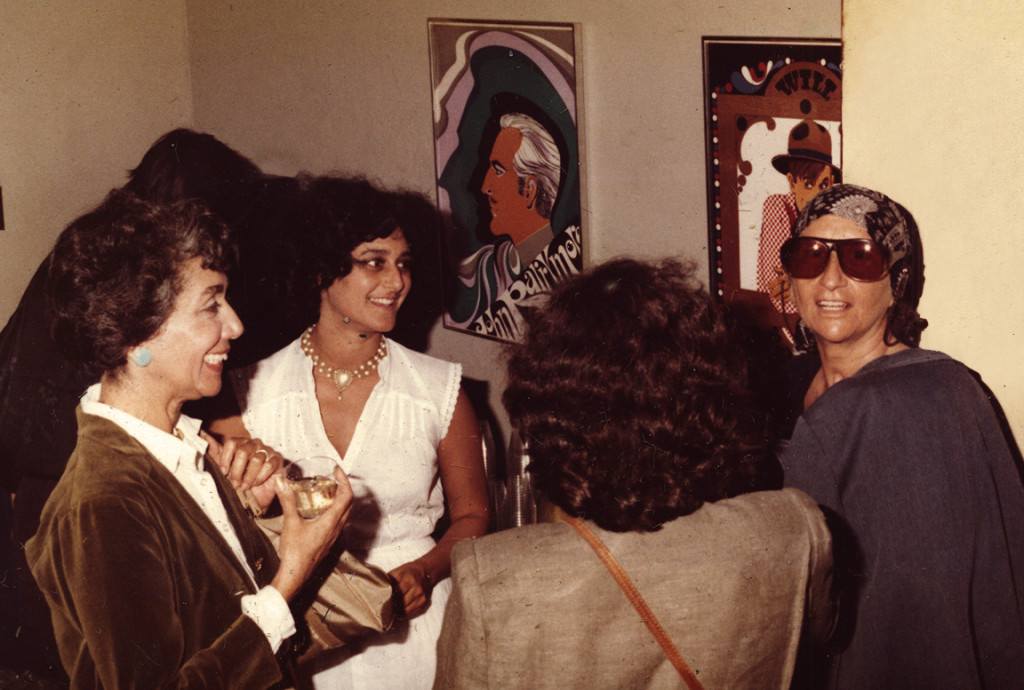 12
12
Chig Kugel (Candy’s mom), Candy, Tina Hirsch (Candy’s sister), and Animator, Tissa David
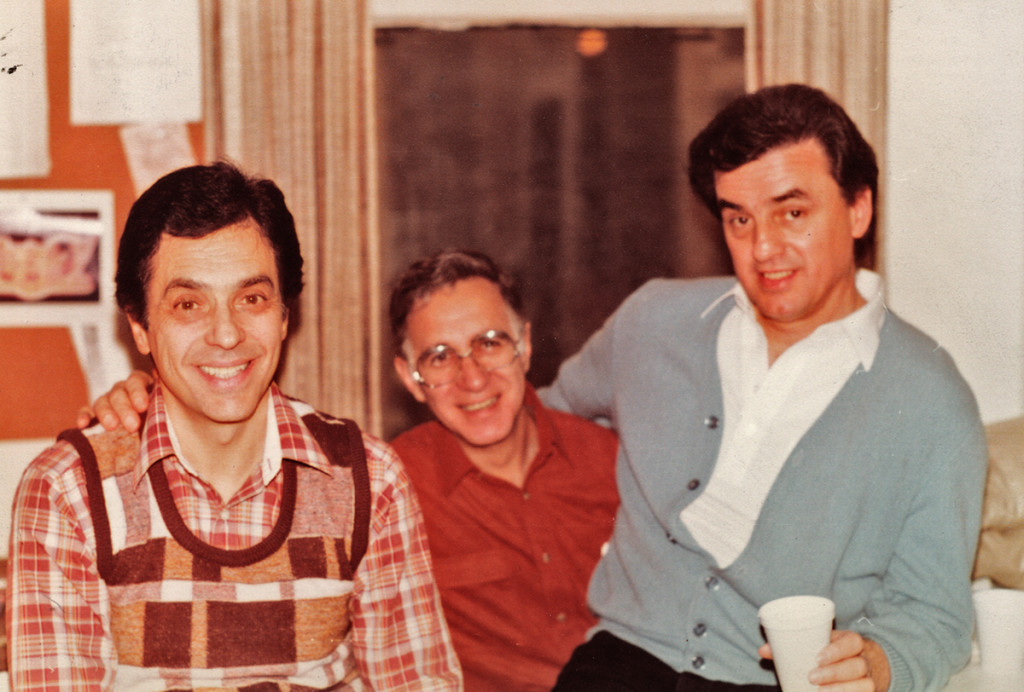 13
13
3 Animators, Vinnie Cafarelli, Jack Dazzo & Vinnie Bell
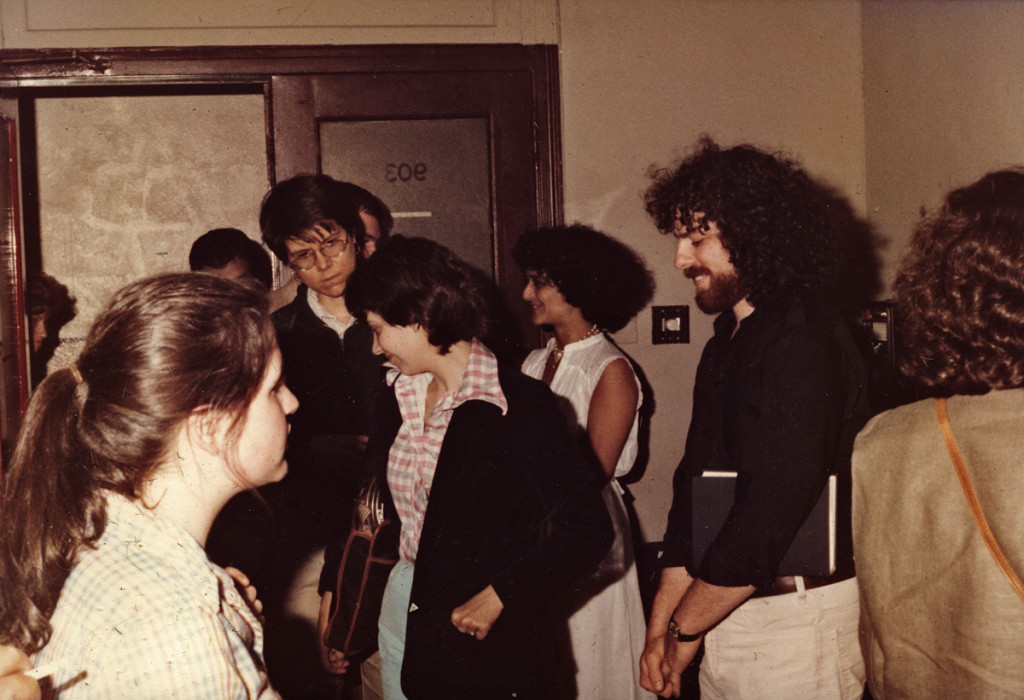 14
14
(unk), (unk), Maxine Fisher, Candy Kugel (in rear), and hirsuite Me
Animation Artifacts &Top Cel 13 Mar 2013 02:28 am
Top Cel – 8
We’ve come to the last of the Top Cel issues that Vince Cafarelli saved. These take us through May of 1968. I’m not sure what happened then, whether Vinnie just got tired of saving them or whether Ed Smith stopped editing. Regardless, this is where we are, and this is the last post, for now, of the Top Cel issues.
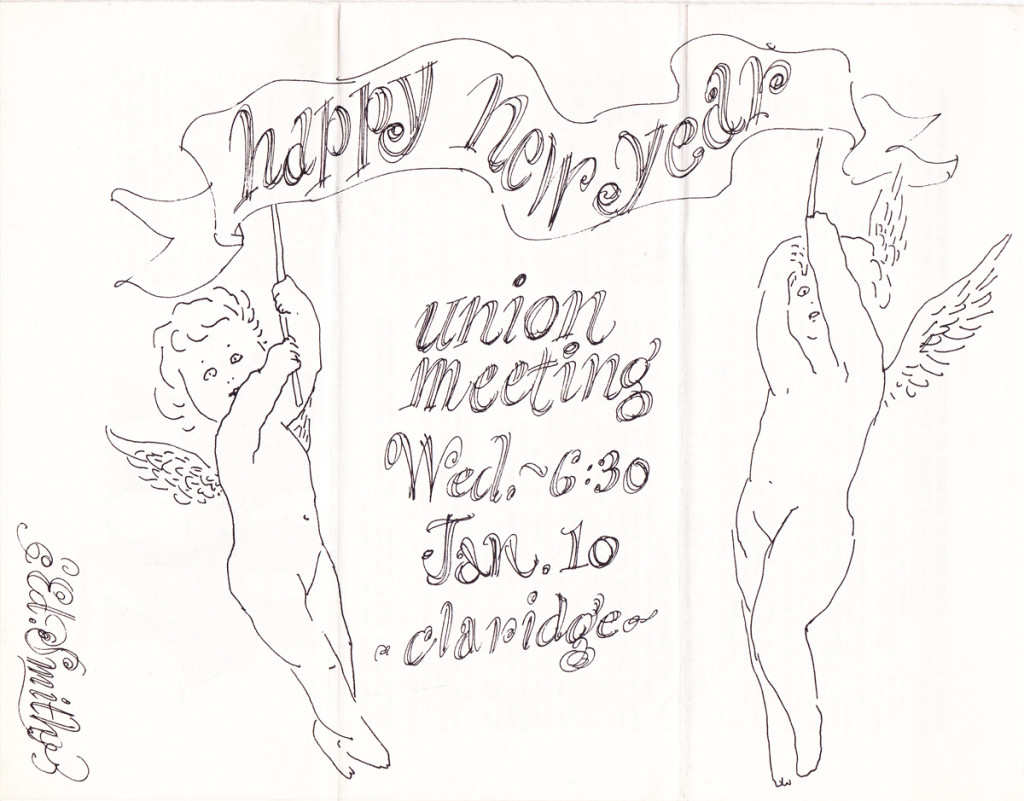
January 1968, pg.1
Designed and Drawn by Ed Smith
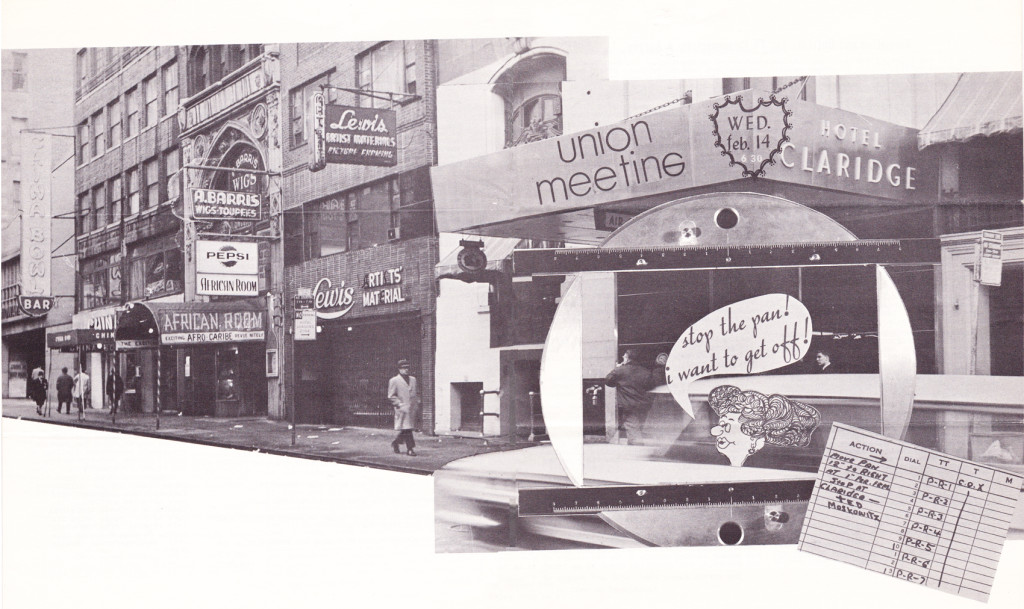
February 68, pgs. 1 & 6
Designed by Ed Moskowitz
Top Cel 06 Mar 2013 04:18 am
Top Cel – 7
Here are all of the Top Cel issues saved by Vince Cafarelli from 1967. These were all edited by the gifted animator, Ed Smith. Top Cel, of course, was the news reader of New York’s animation guild, Local 841.
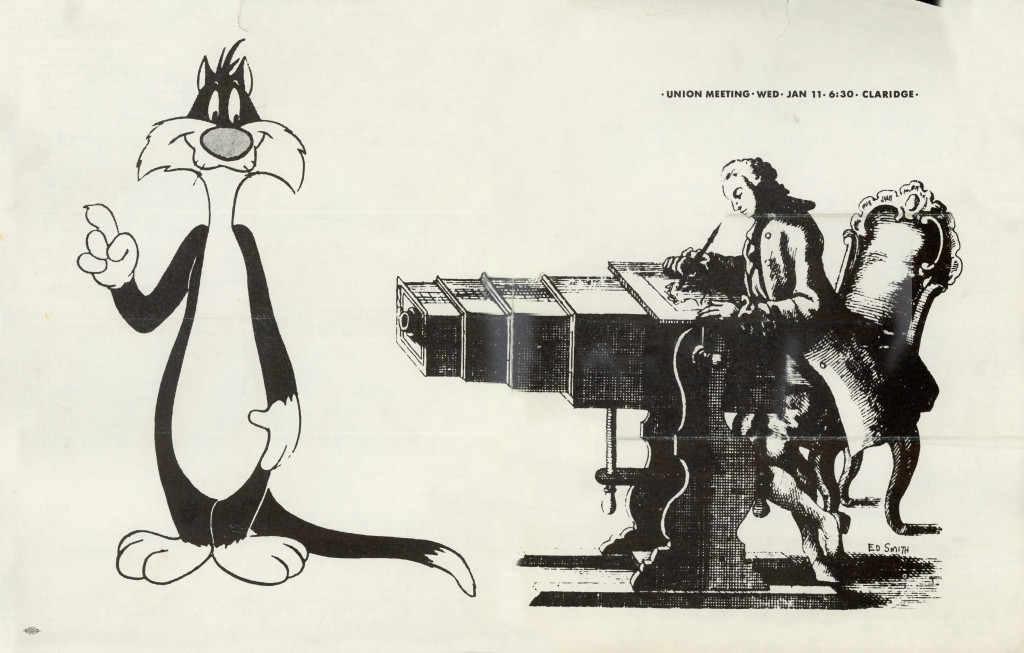
January 1967, pgs 1 & 6
Designed and drawn by Ed Smith
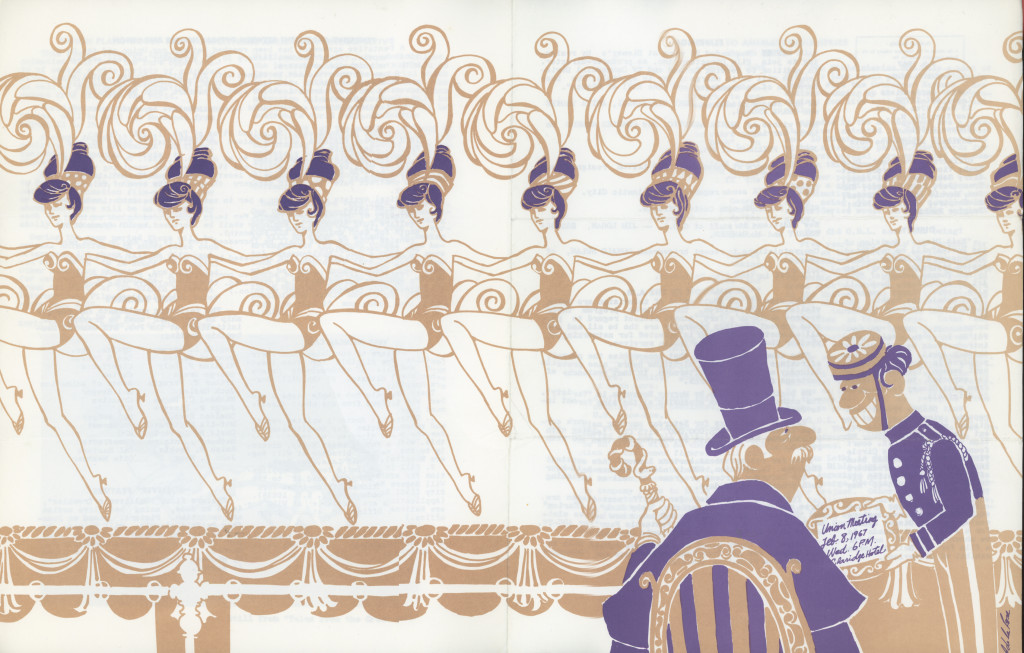
February 1967, pgs 1 & 6
Designed and drawn by I. de la Rosa
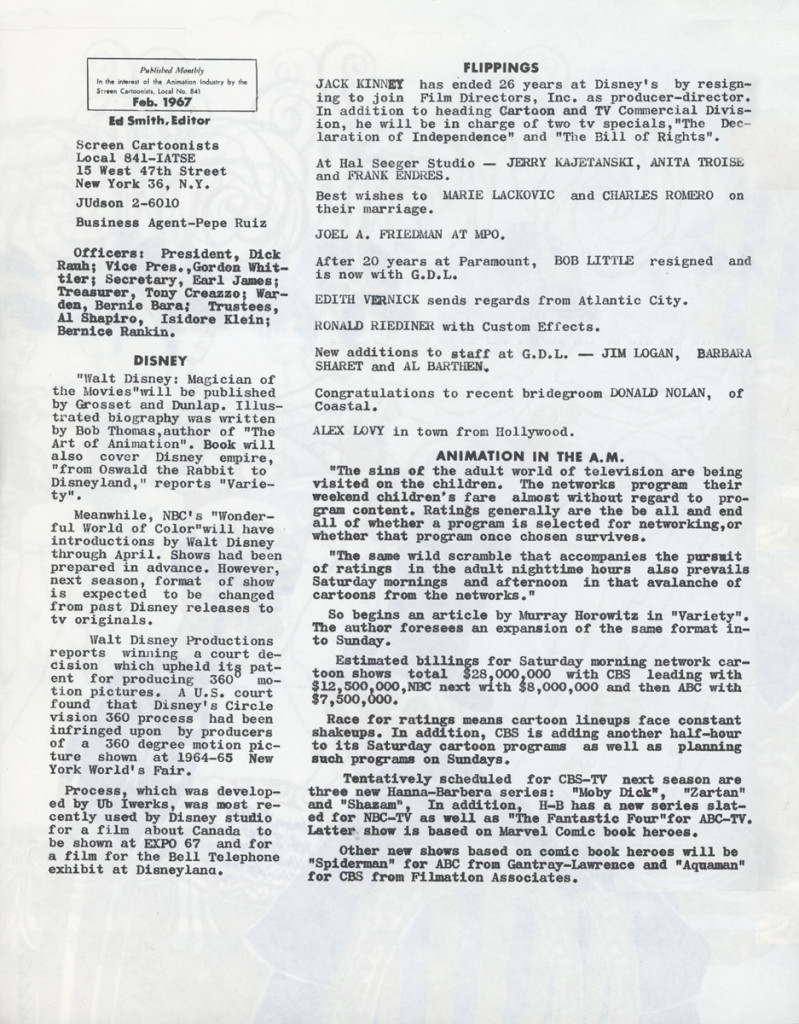 2
2 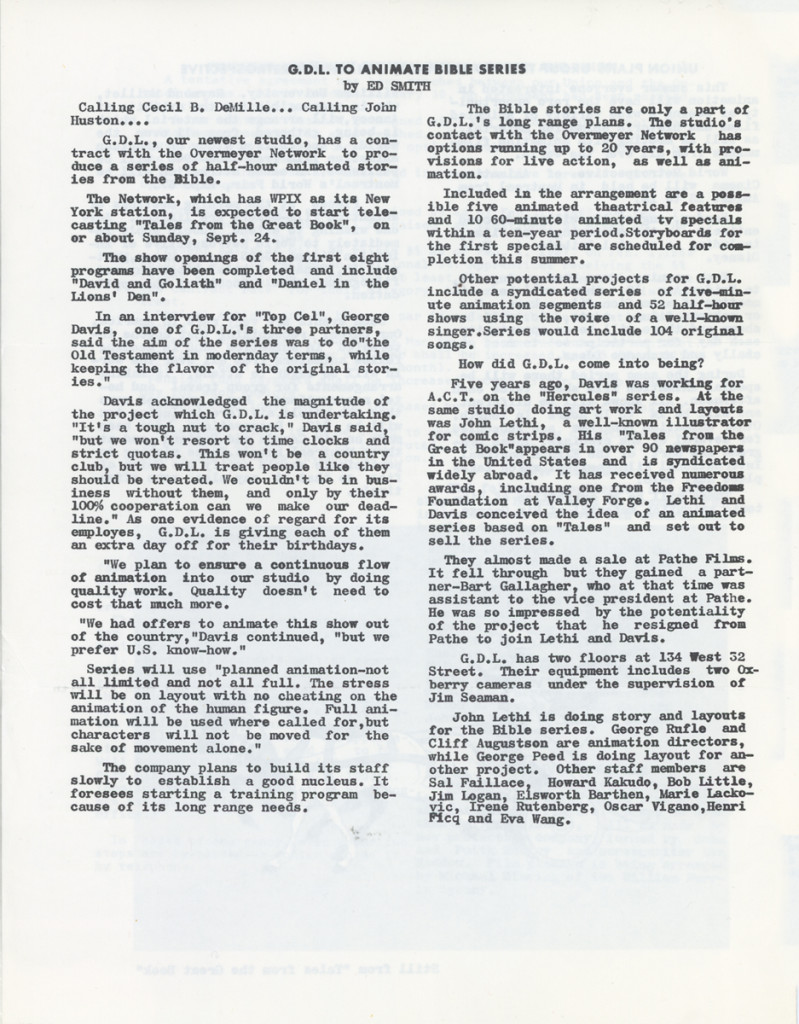 3
3
Jack Kinney resigns from Disney.
Bob Little resigns from Paramount after 20 years.
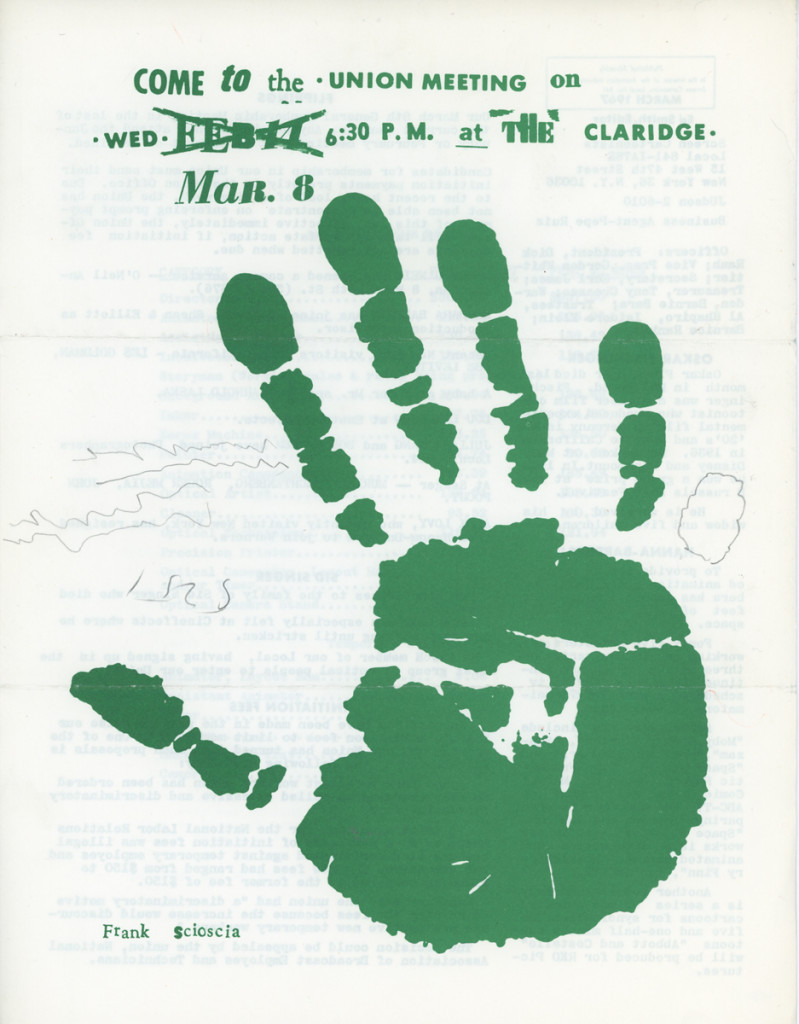
March 1967, pg 1
Designed and drawn by Frank Scioscia
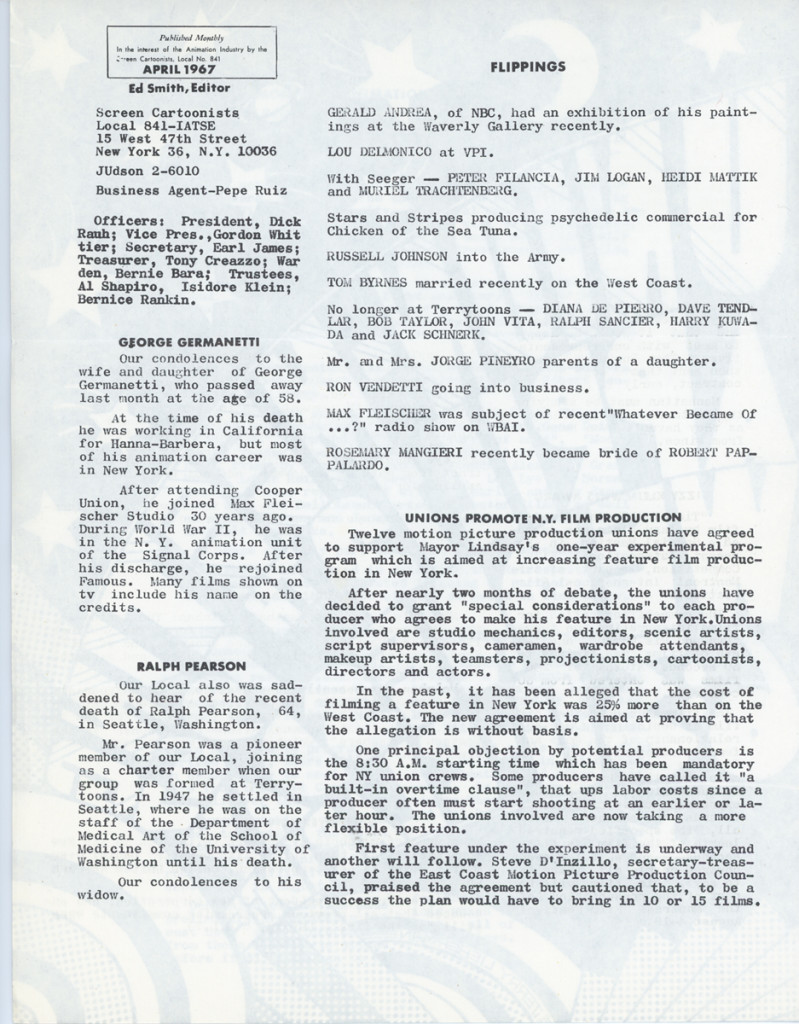 2
2 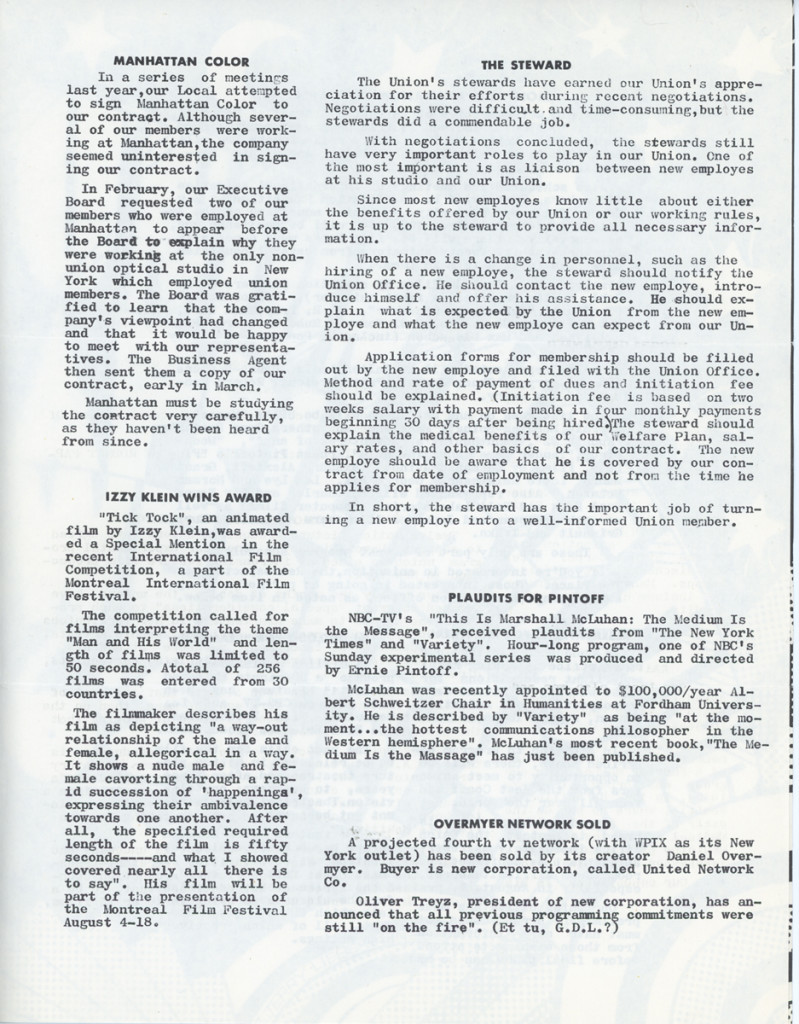 3
3
George Germanetti dies at 58.
Bob Taylor, Dave Tendlar, Jack Schnerk & Johnny Vita leave Terrytoons.
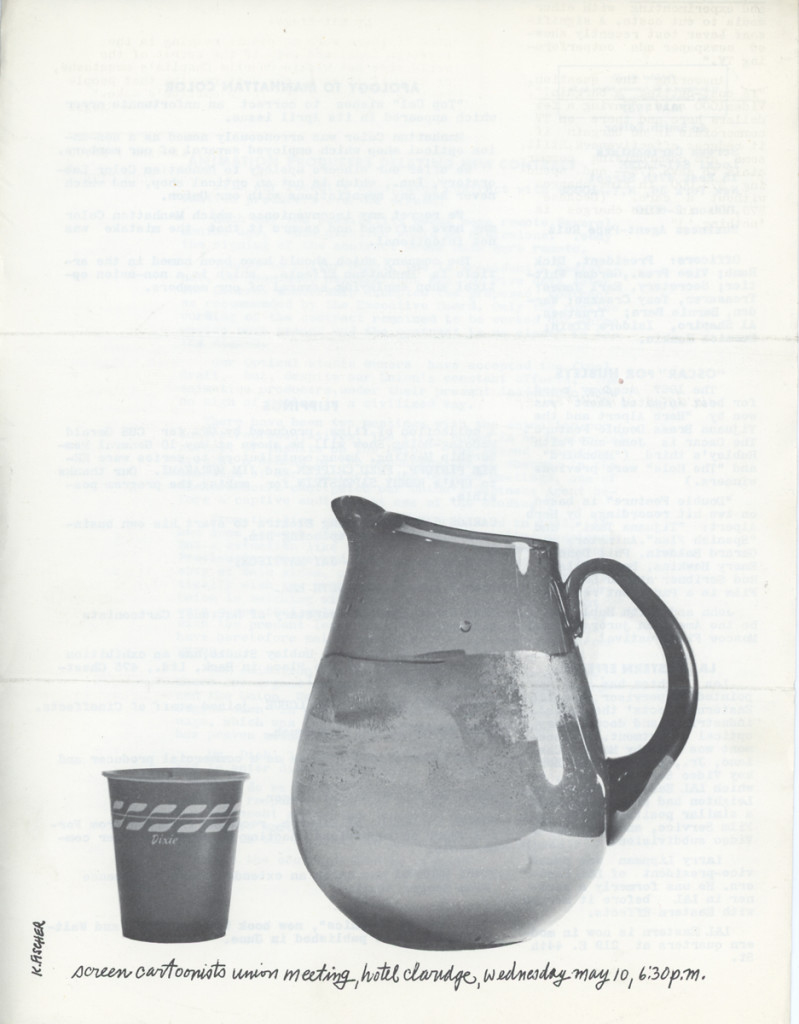
May 1967, pg 1
Designed and drawn by Karl Fischer
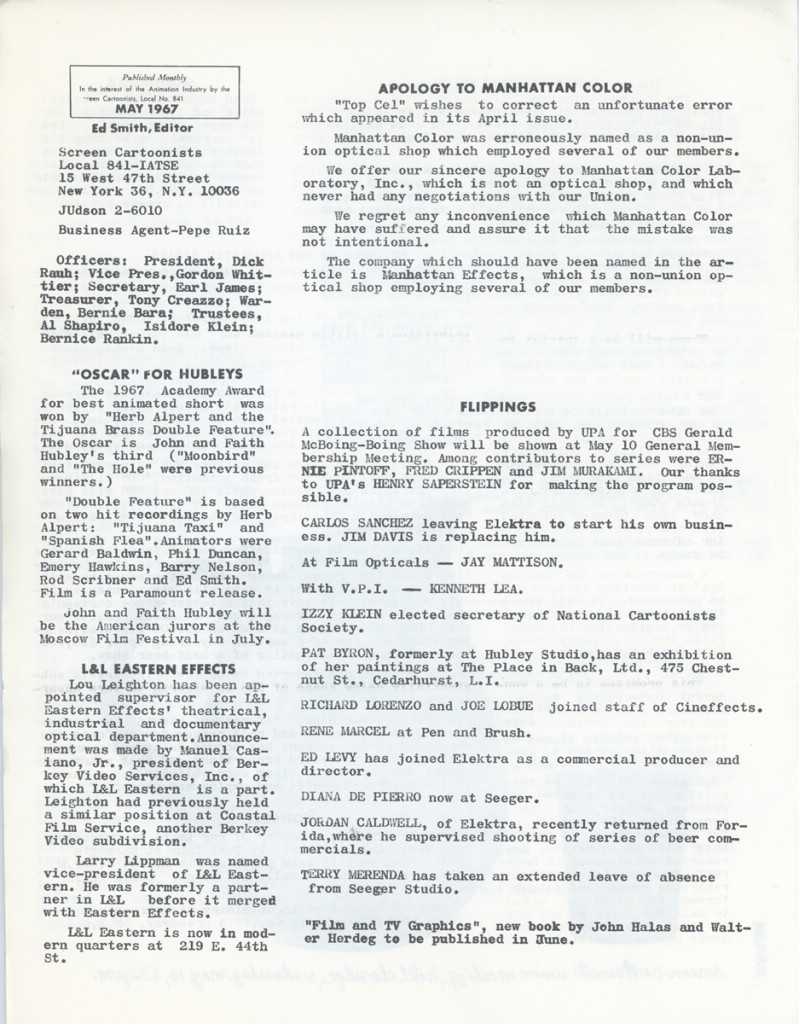 2
2 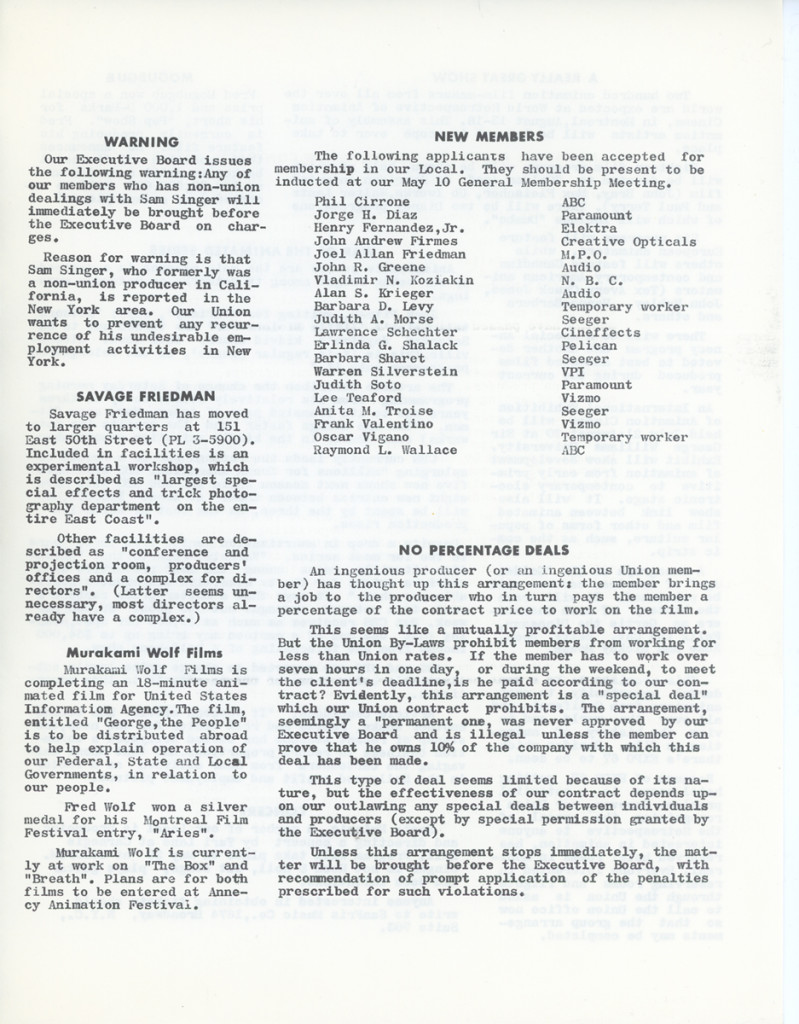 3
3
The Hubleys win the Oscar for “Herb Alpert & the Tijuana Brass.”
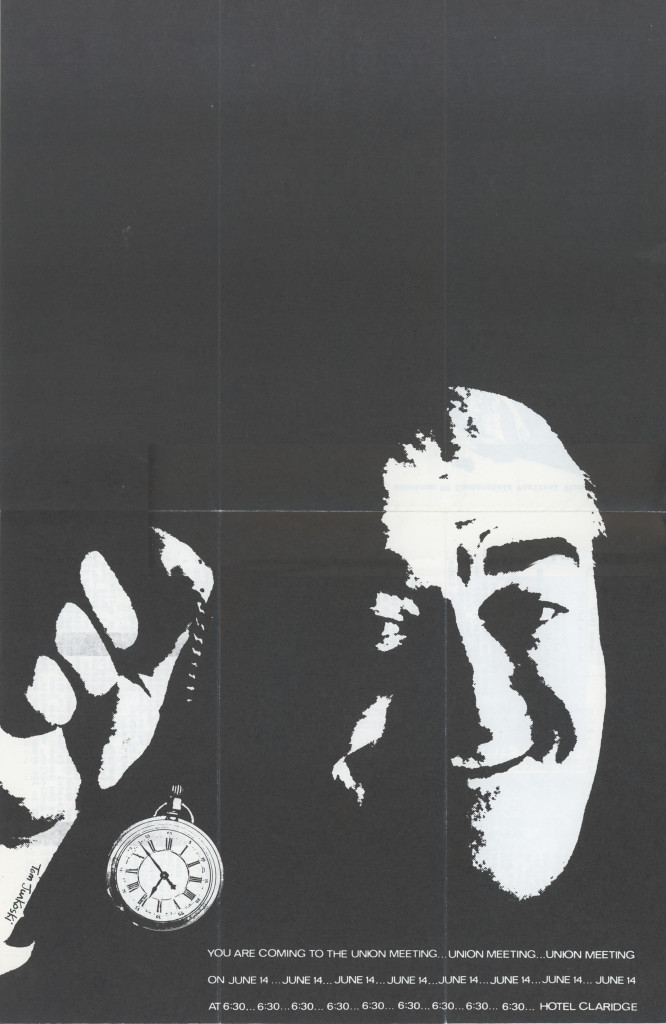
June 1967, pgs 1 & 6
Designed and drawn by Tom Turkoski
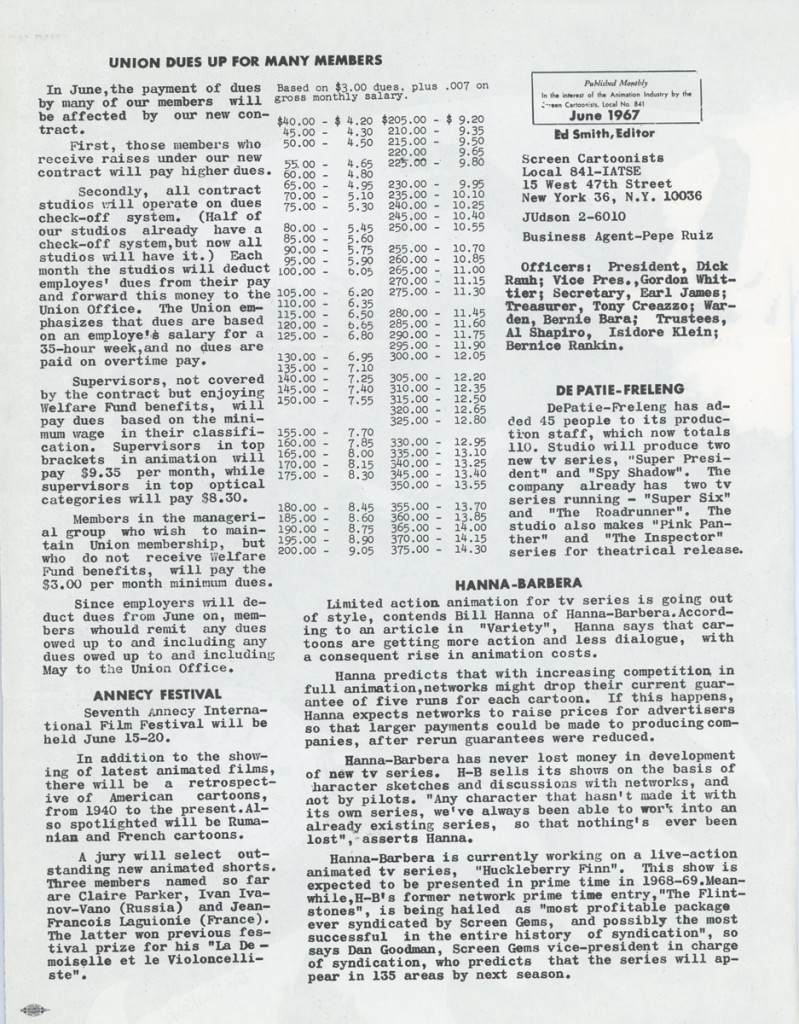 2
2 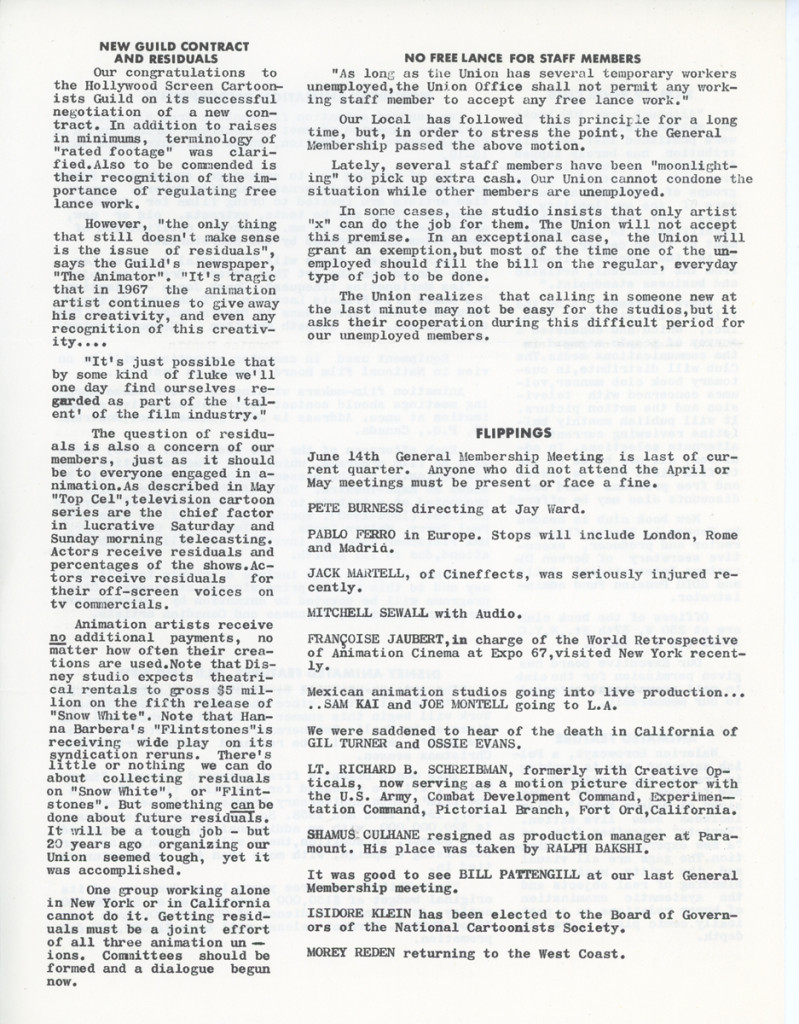 3
3
Shamus Culhane resigns from Paramount
and is replaced by Ralph Bakshi.
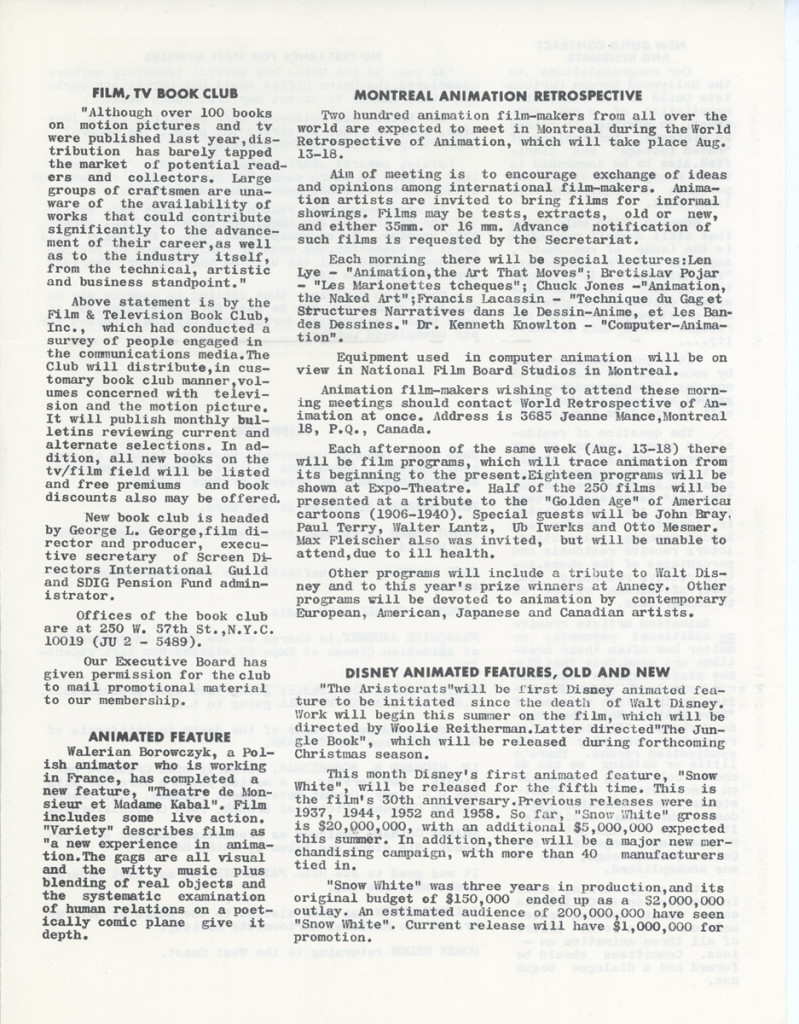 4
4 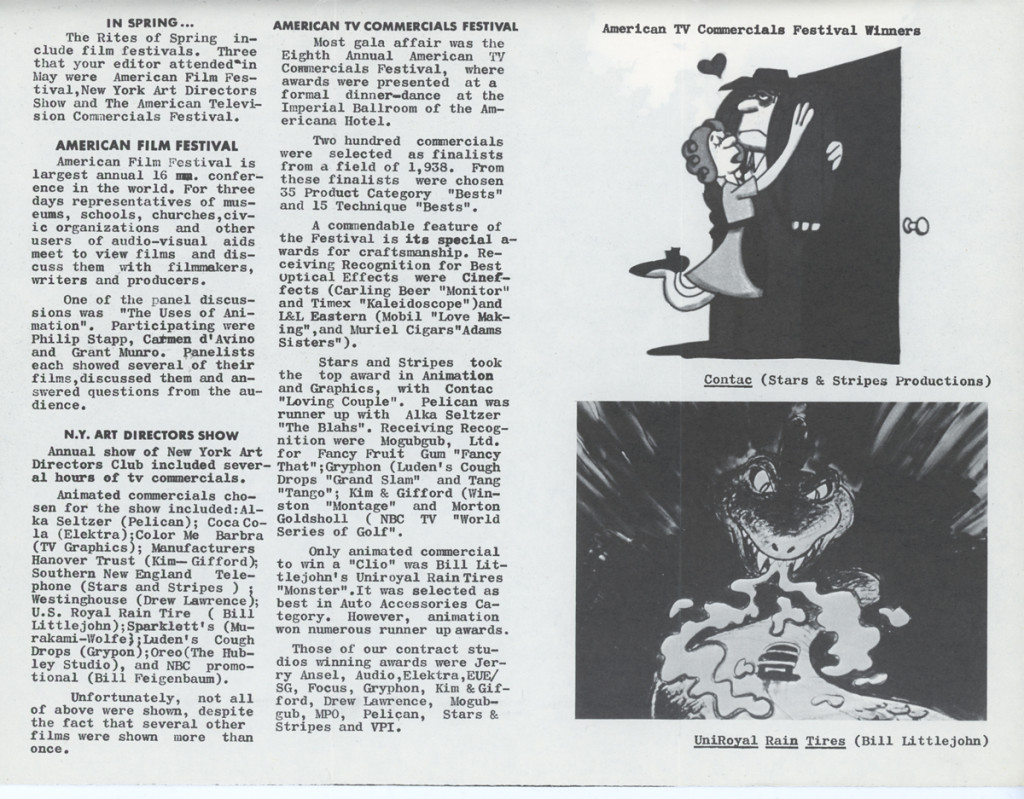 5
5
The Montreal Animation Exhibition opens with over
20 animation pioneers & professionals appearing.
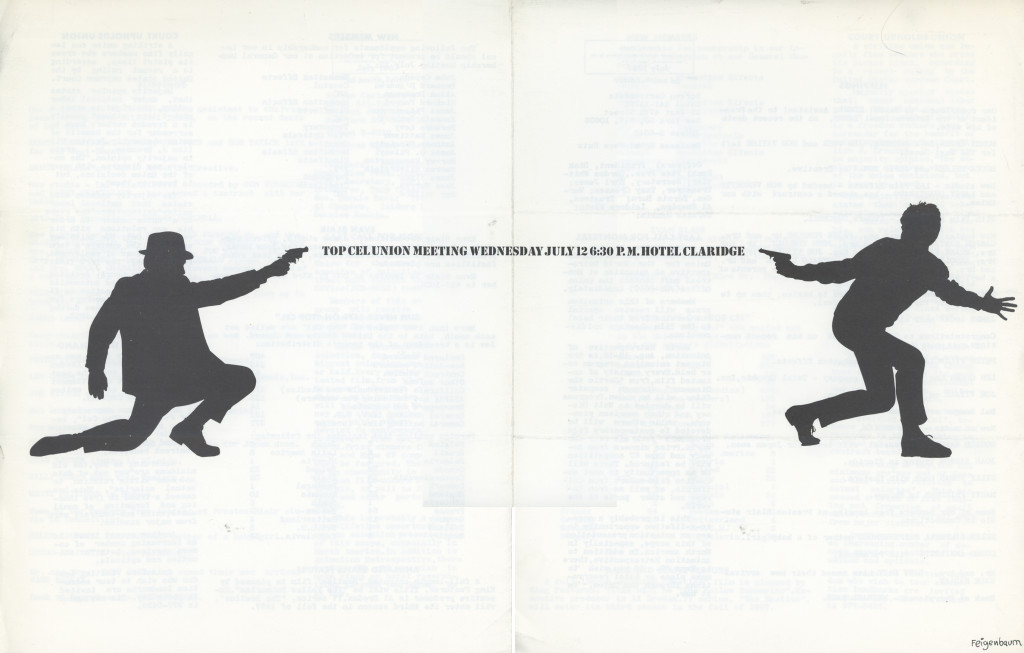
July 1967, pgs 1 & 6
Designed and drawn by Bill Feigenbaum
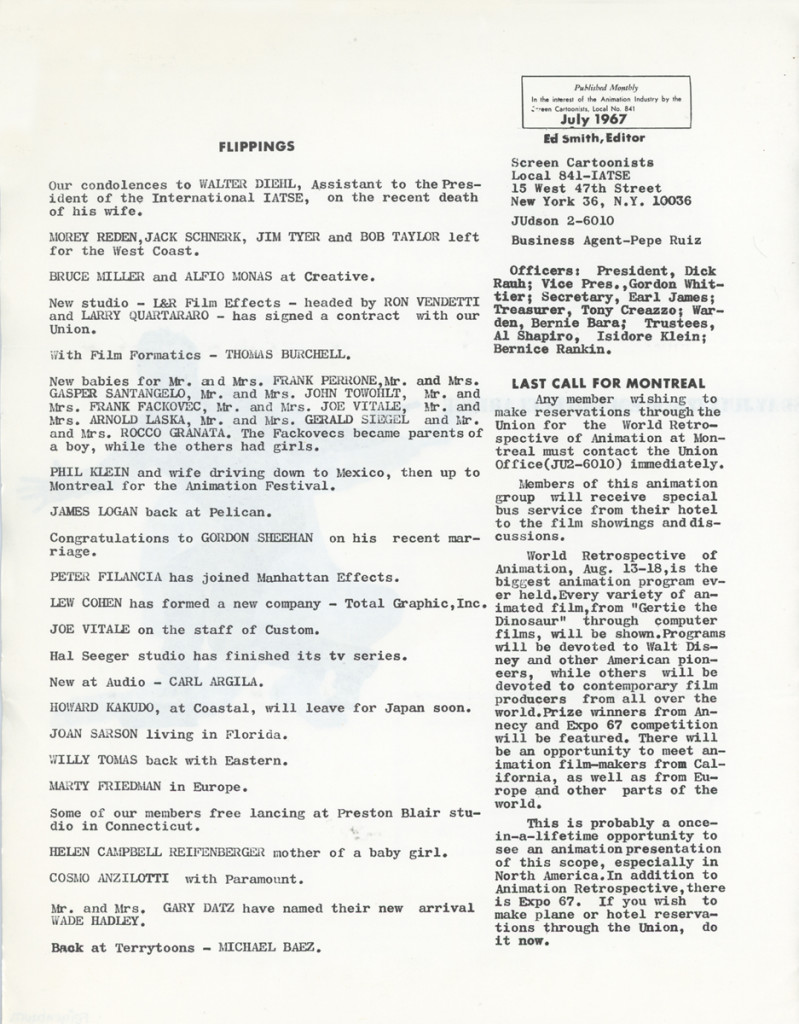 2
2 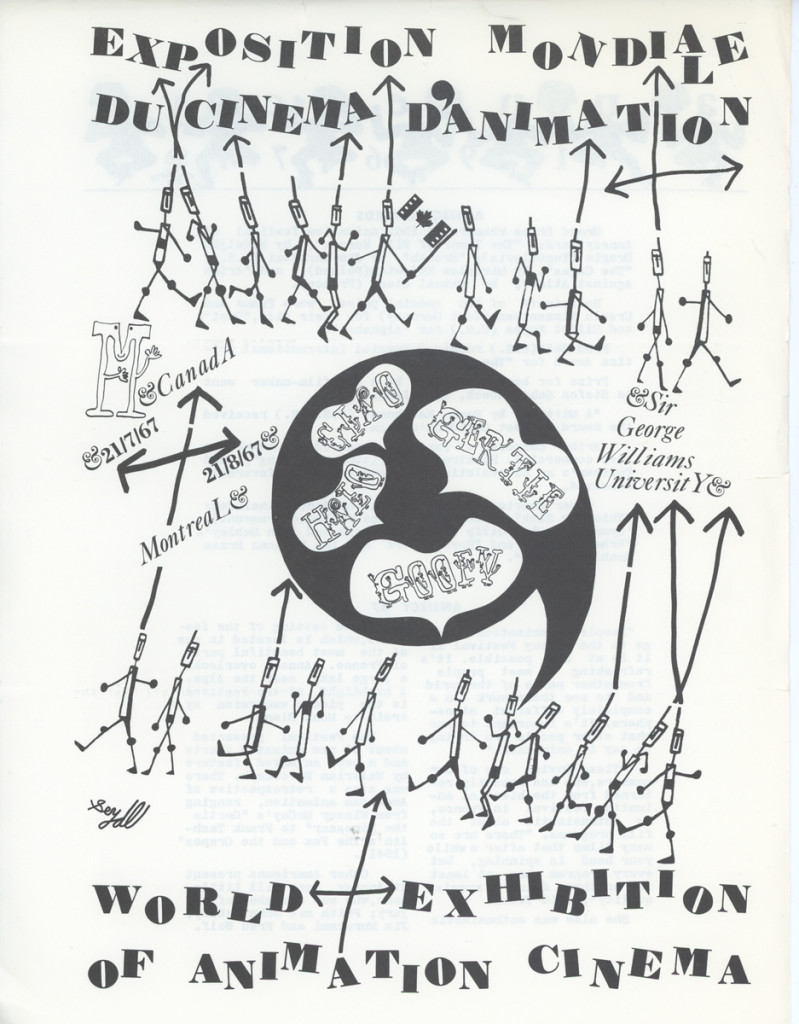 3
3
Jack Schnerk and Jim Tyer both leave for the West Coast.
Cosmo Anzilotti back at Paramount.
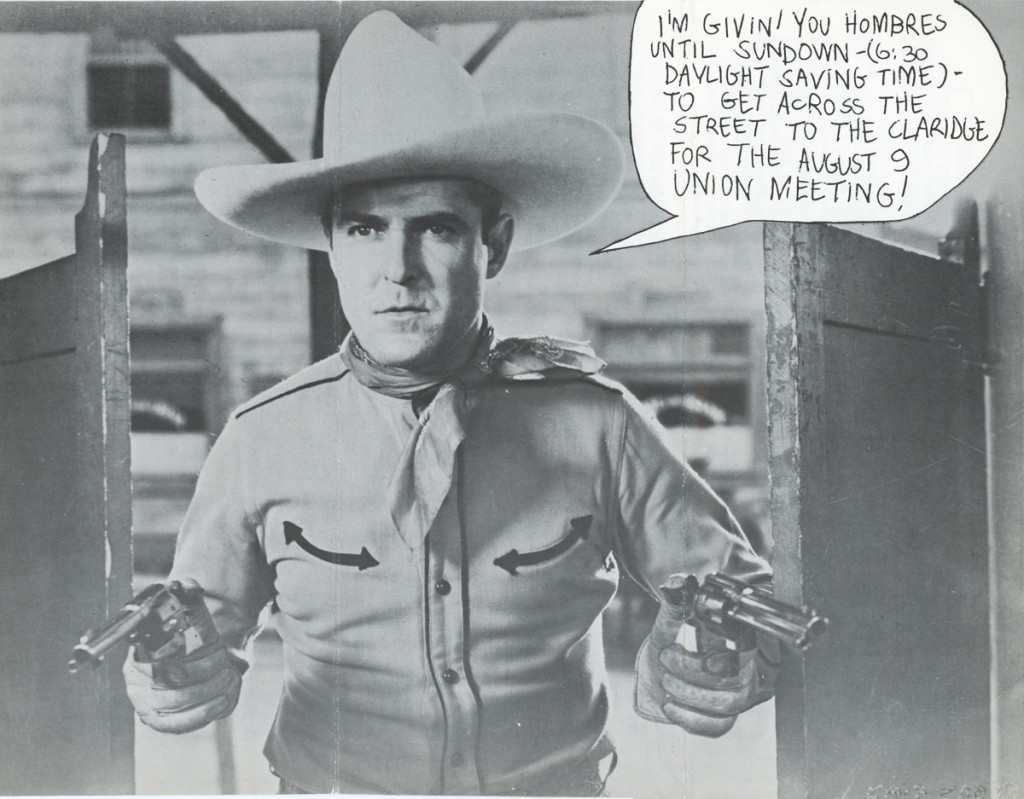
August 1967, pgs 1 & 6
Designed by Ed Smith
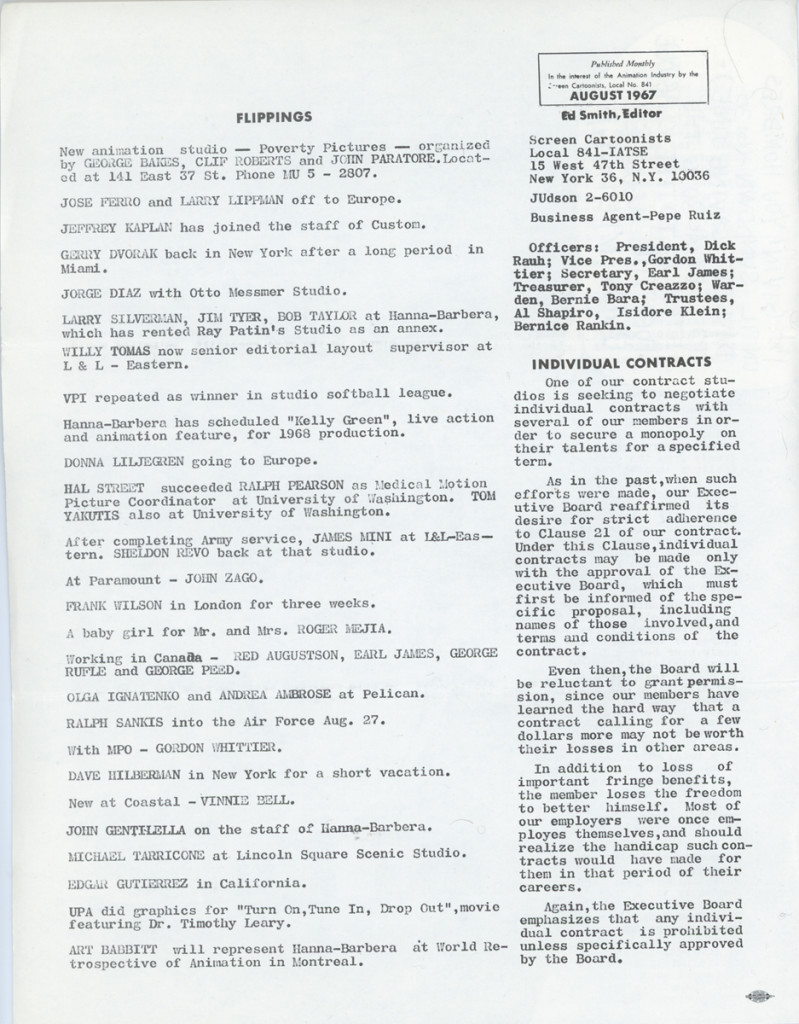 2
2 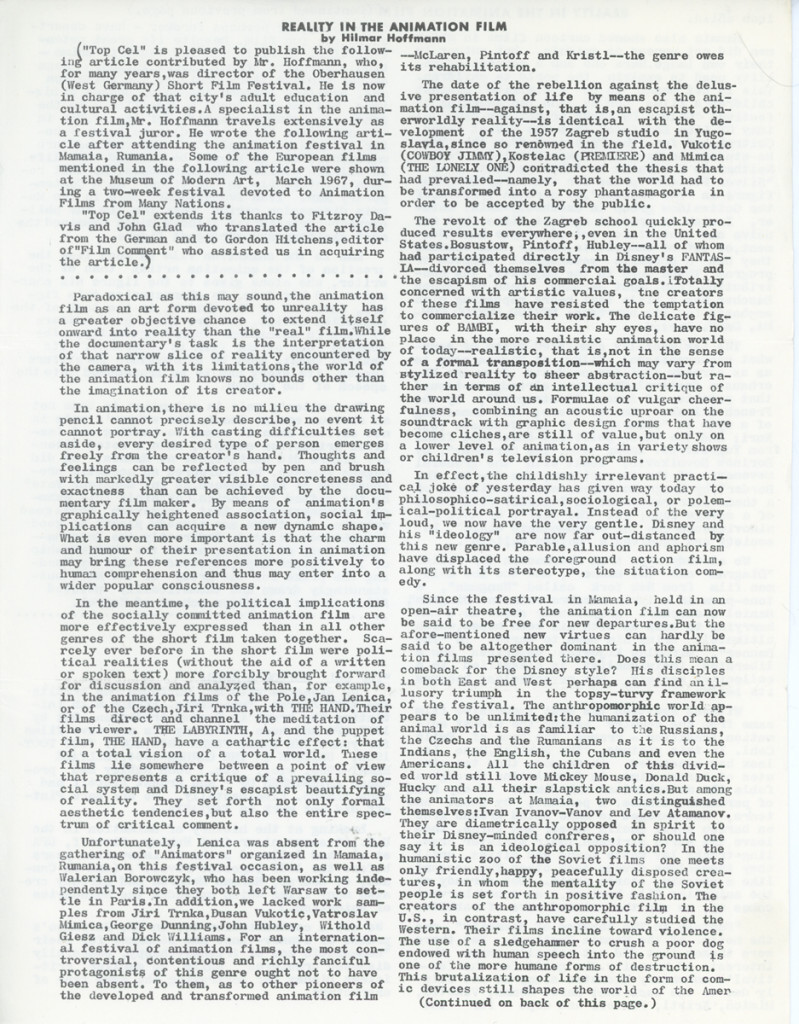 3
3
George Bakes, John Paratore and Clif Roberts form Poverty Pictures.
Art Babbitt represents Hanna-Barbera commercials at Montreal Expo.
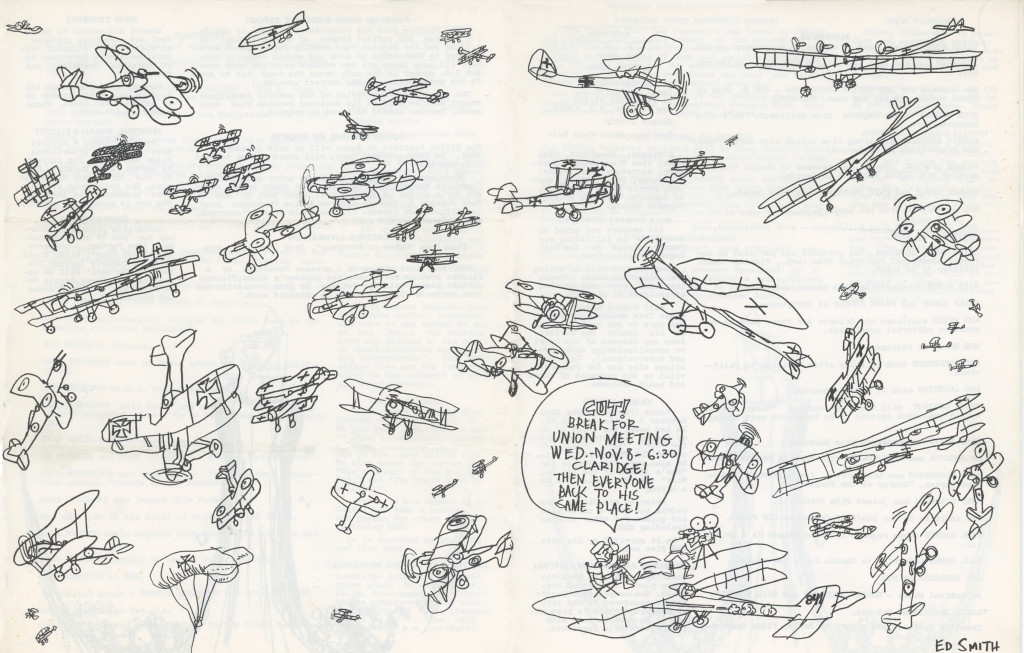
November 1967, pgs 1 & 6
Designed and drawn by Ed Smith
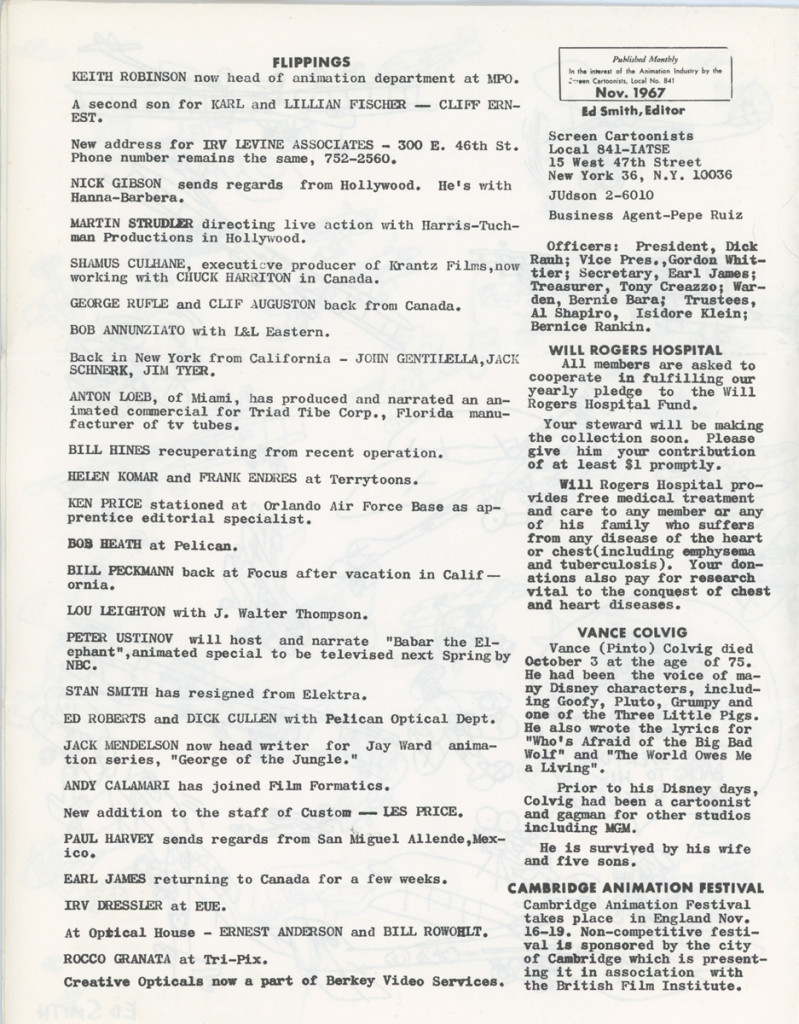 2
2 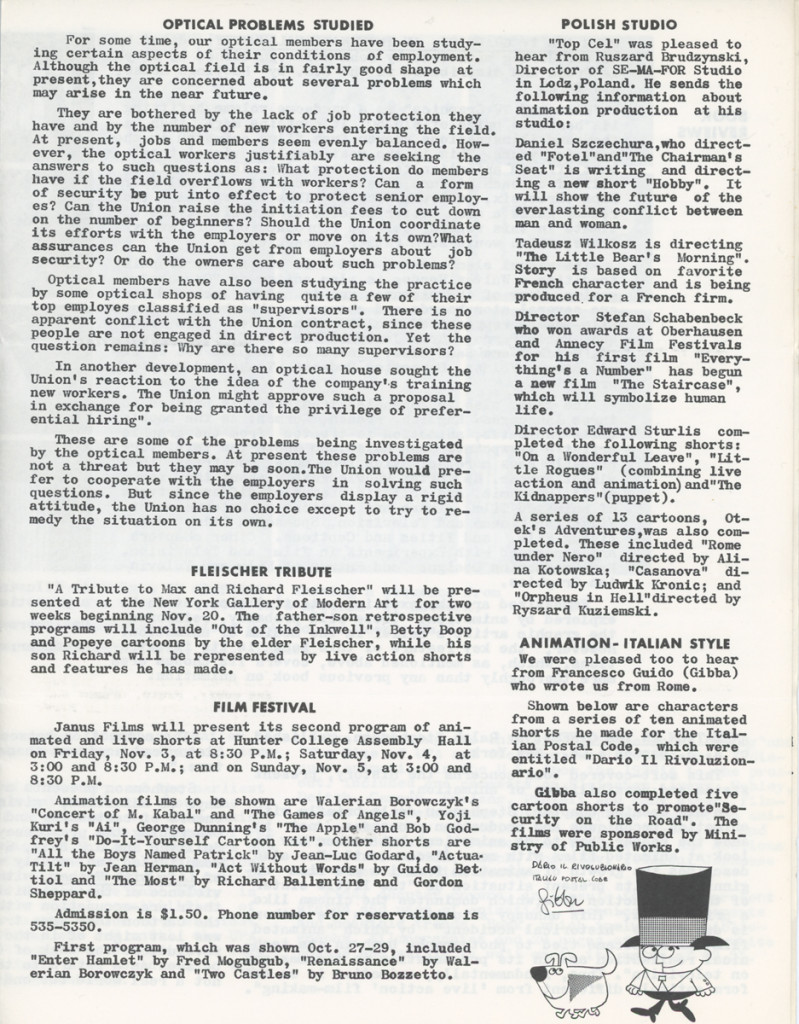 3
3
Bill Peckmann back at Focus after vacation in California.
Jim Tyer and Jack Schnerk back in NY after LA trip.
Pinto Colvig dies.
